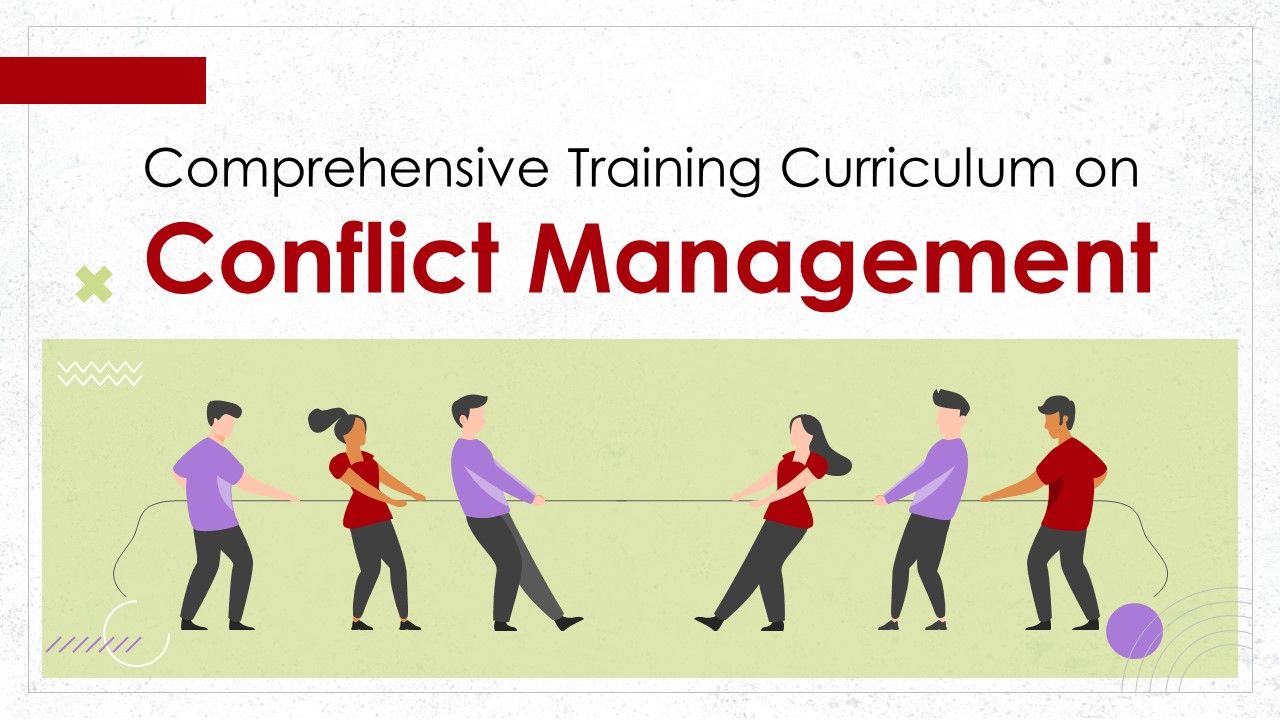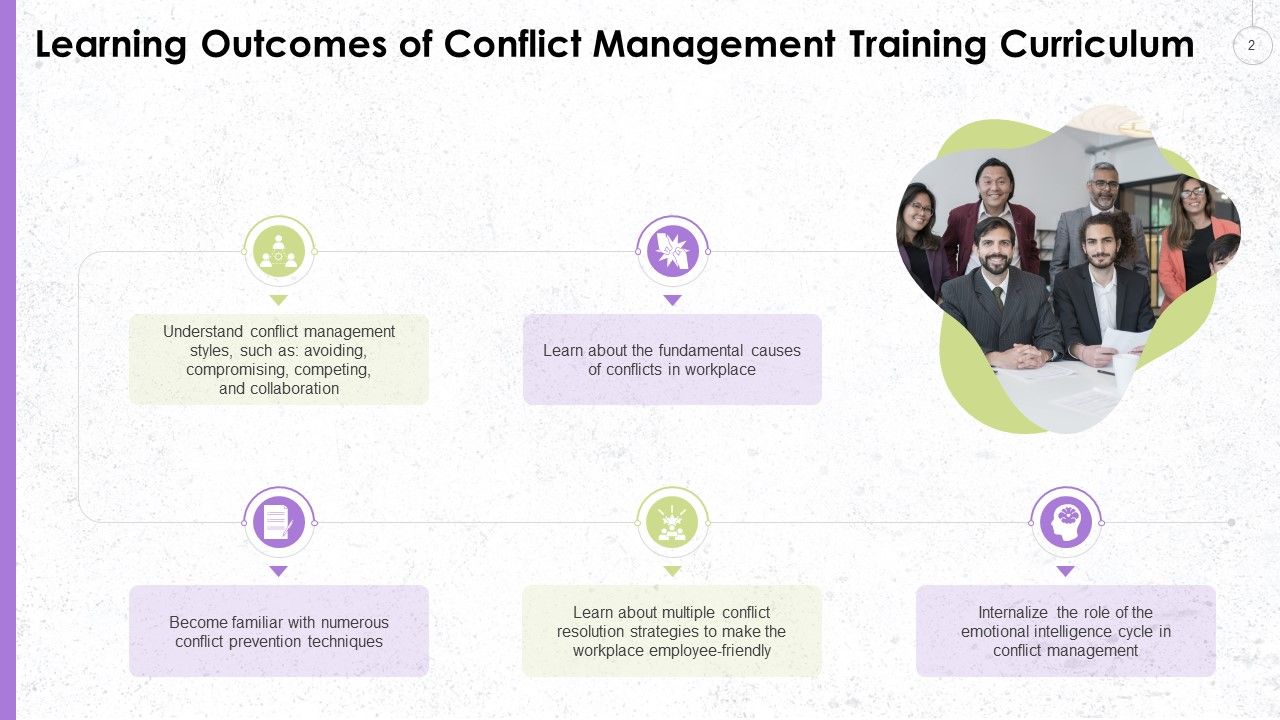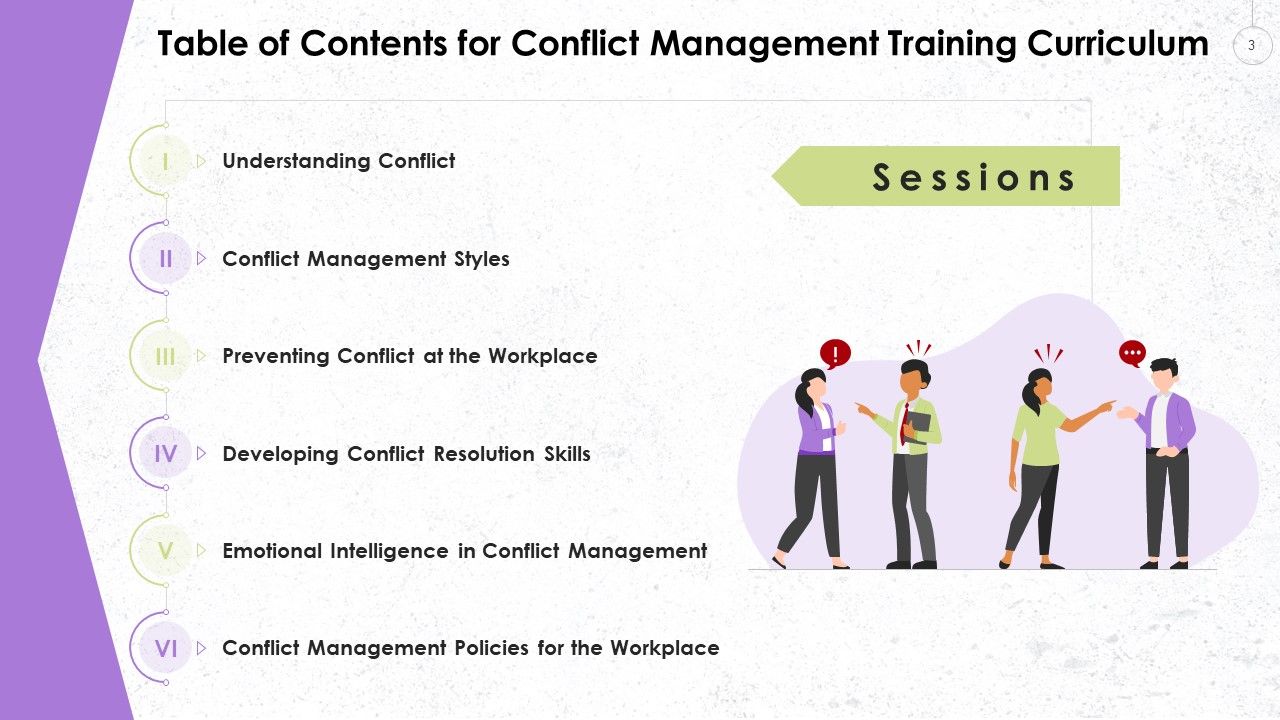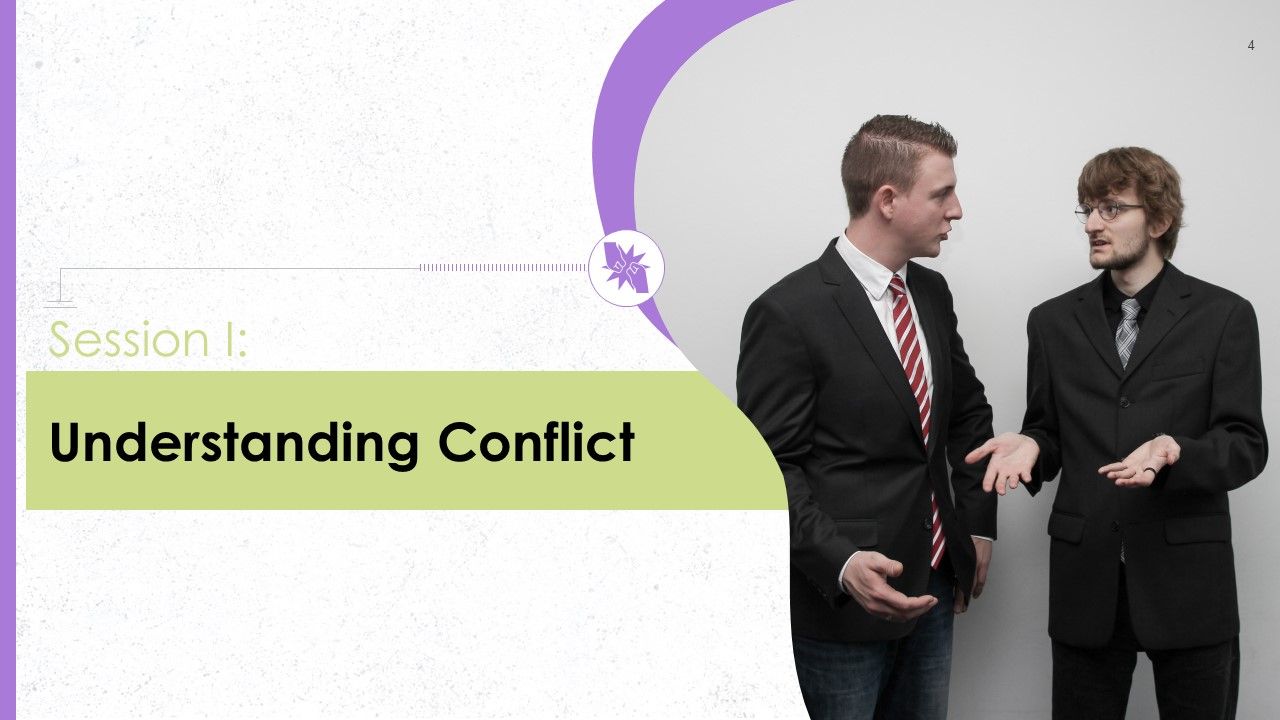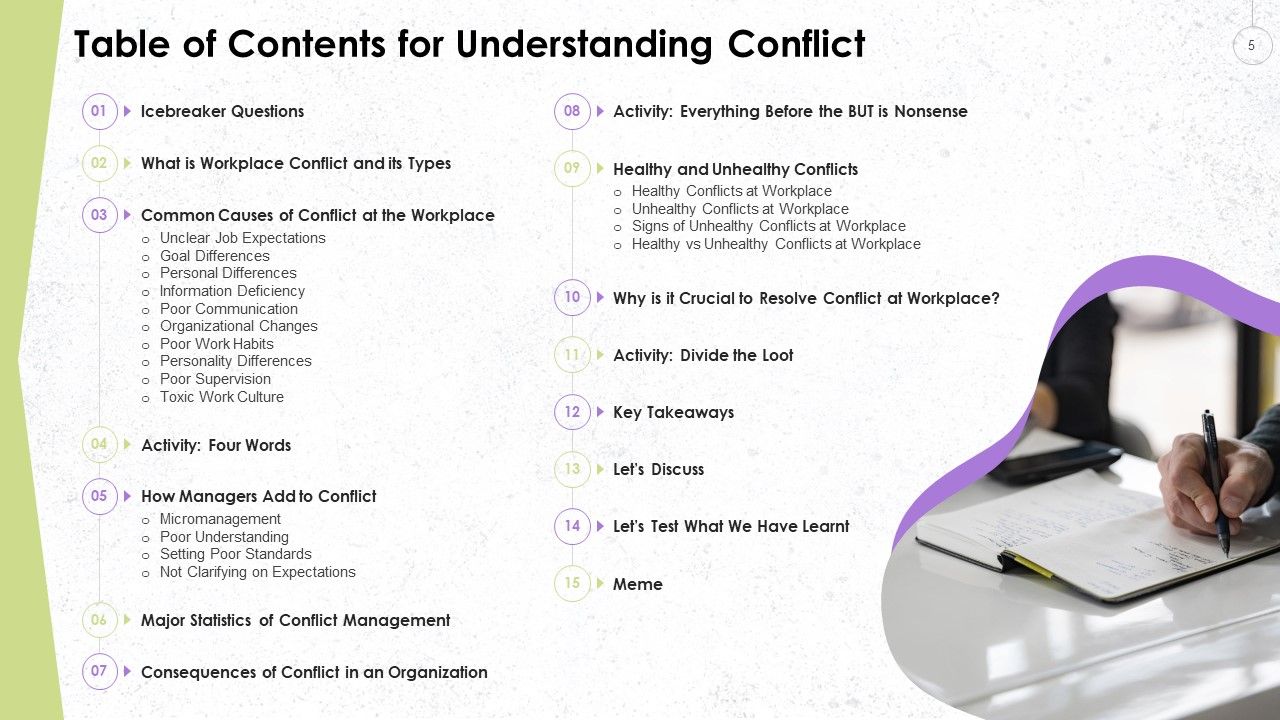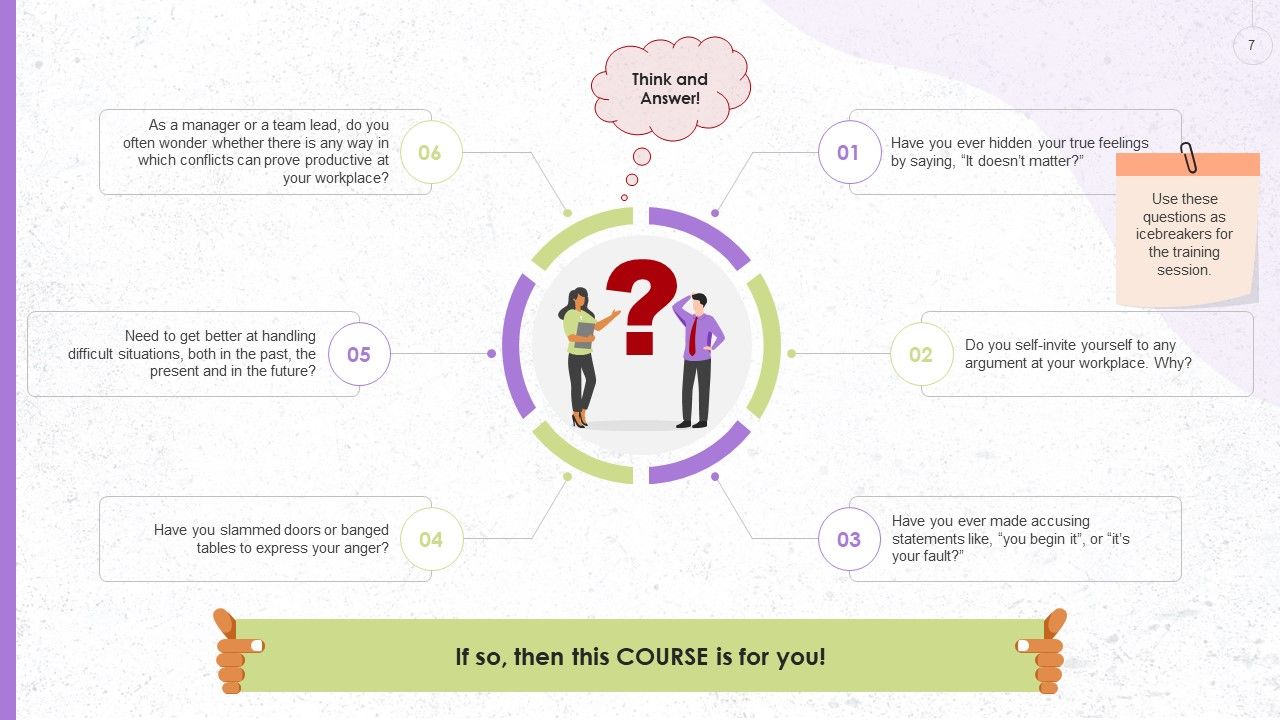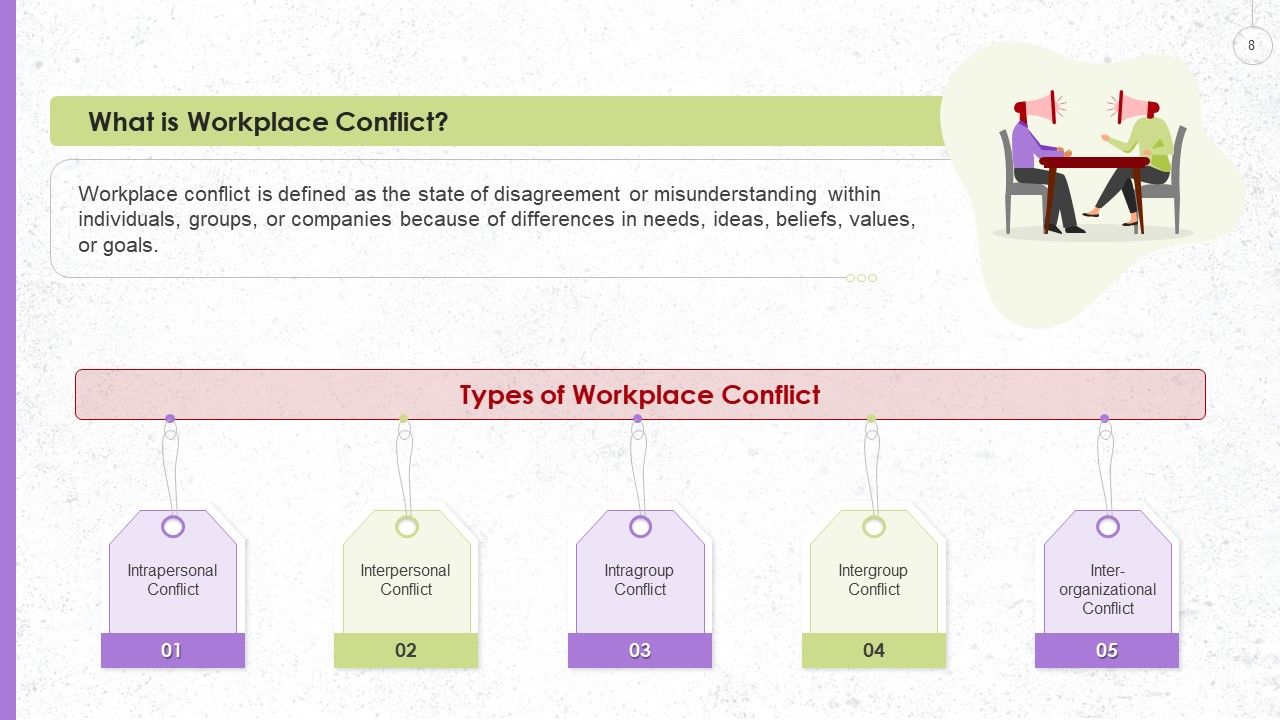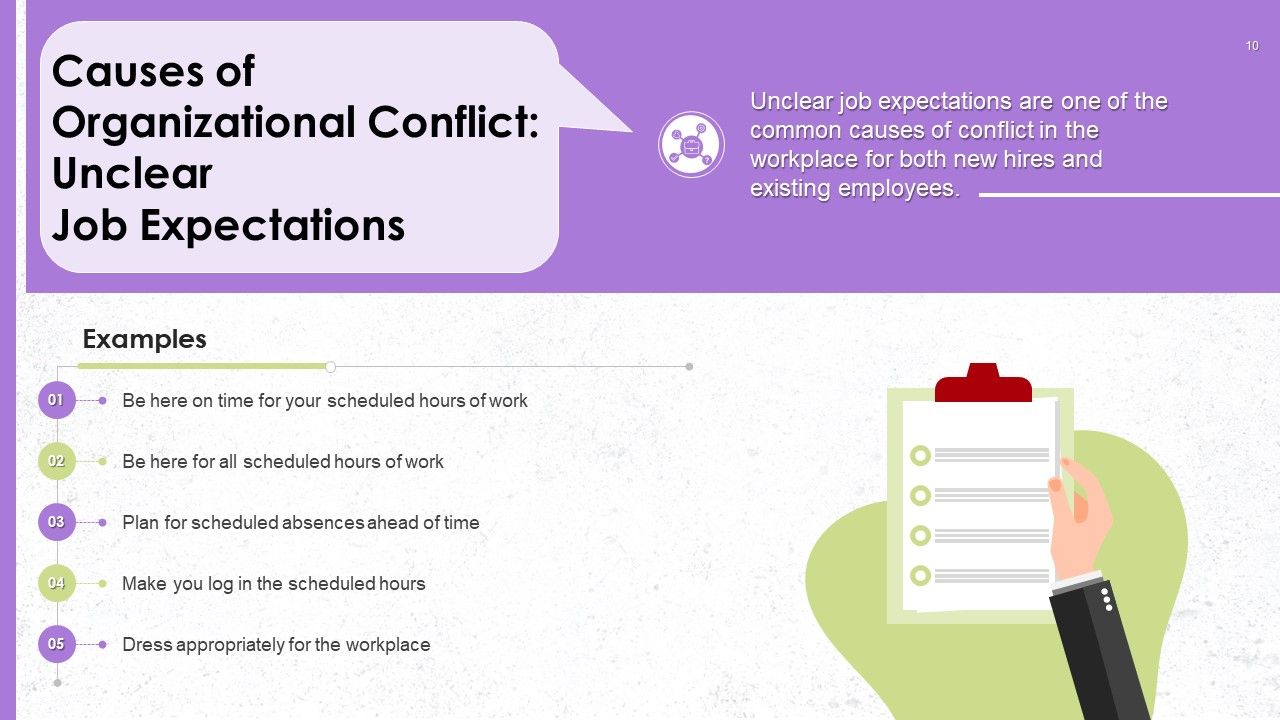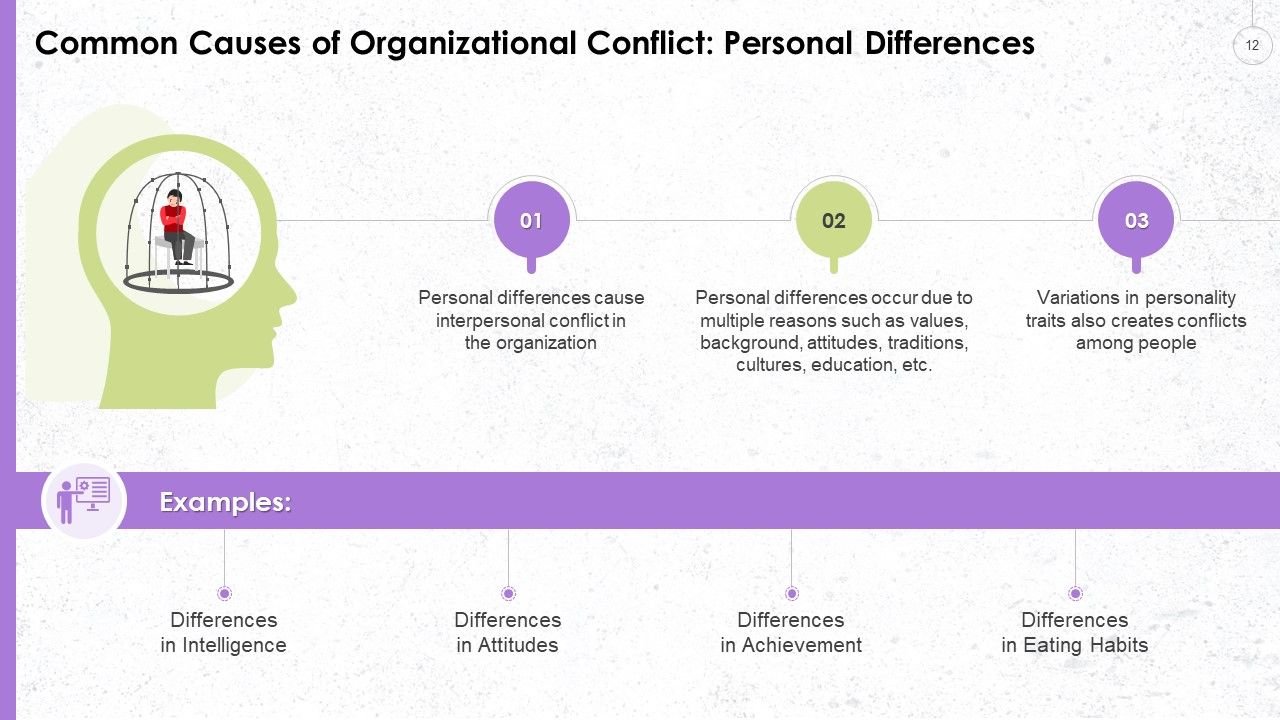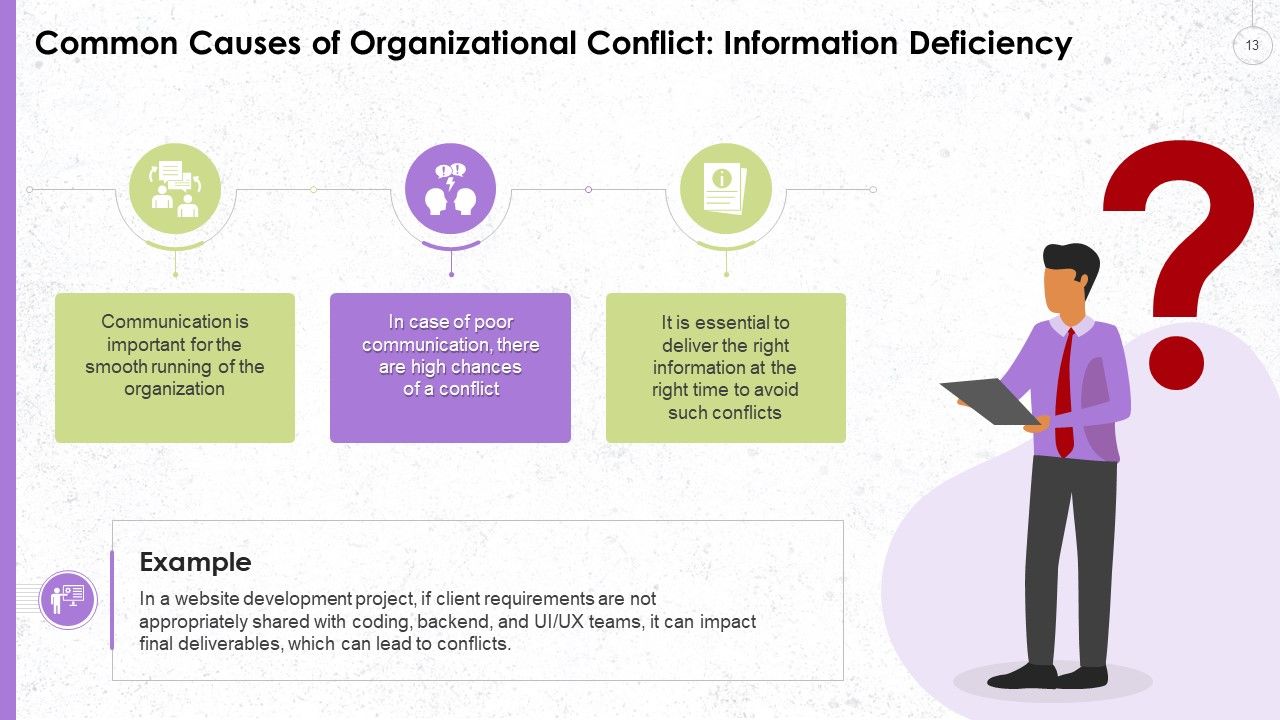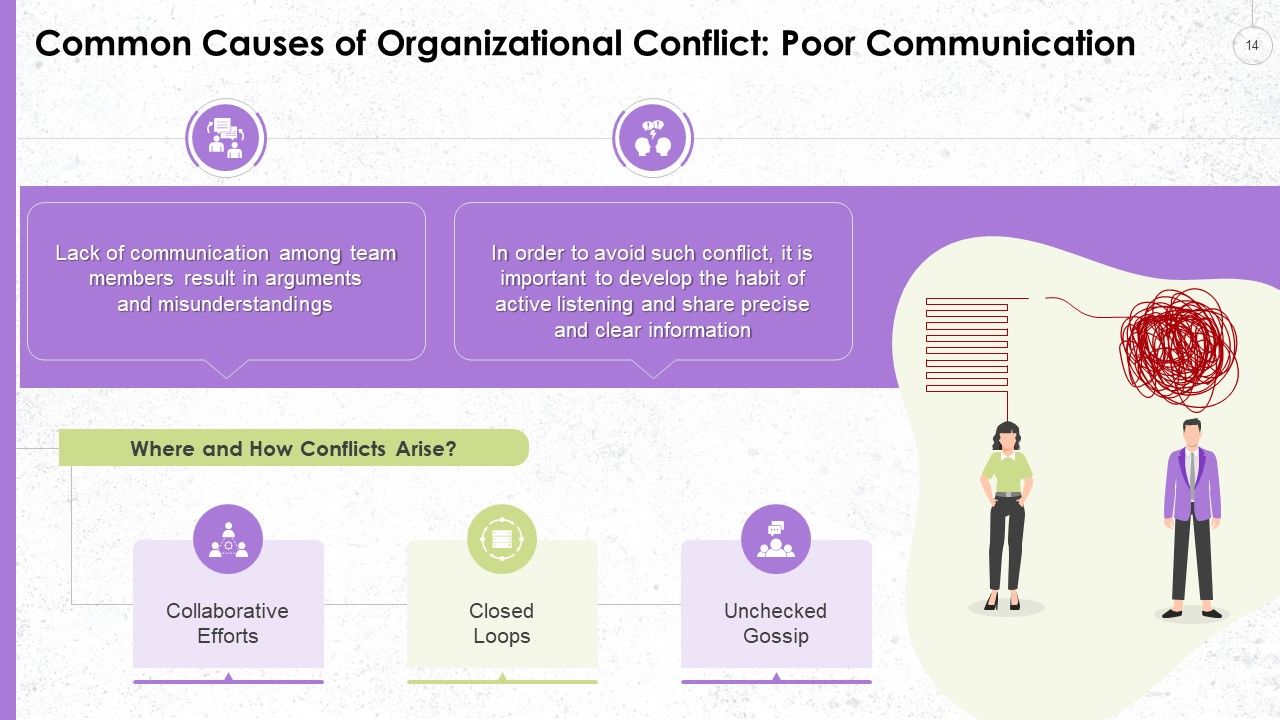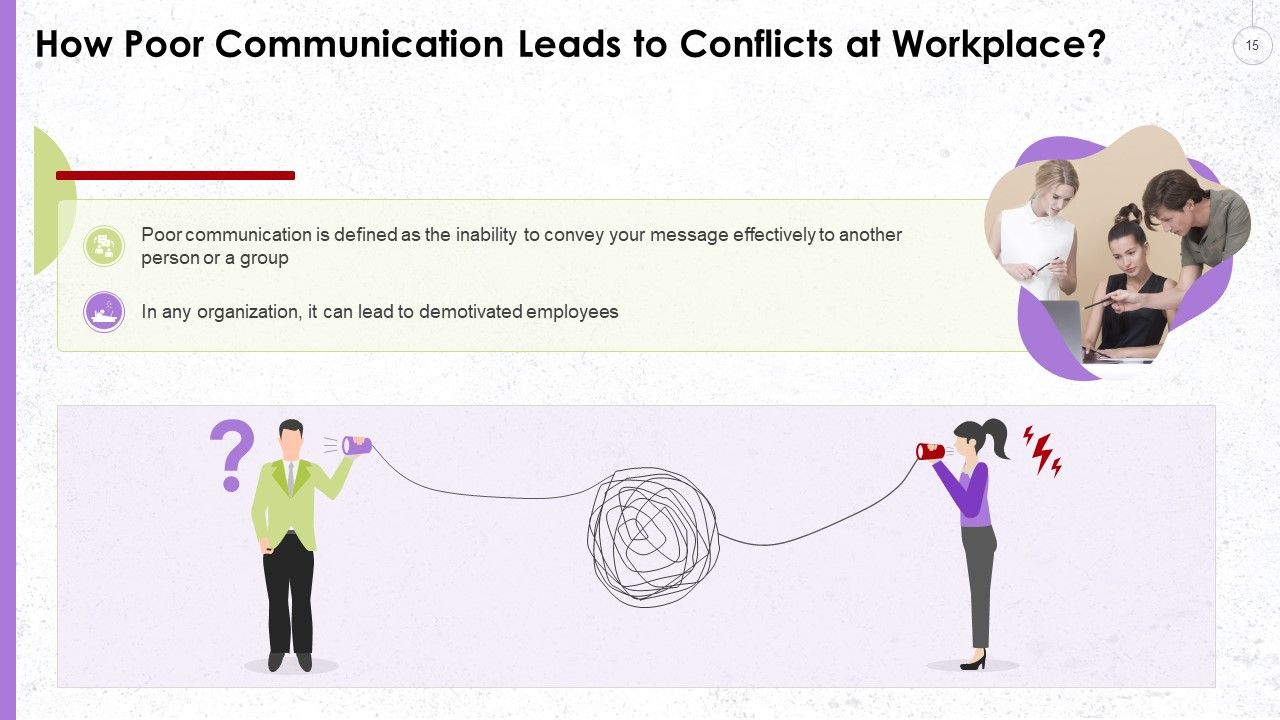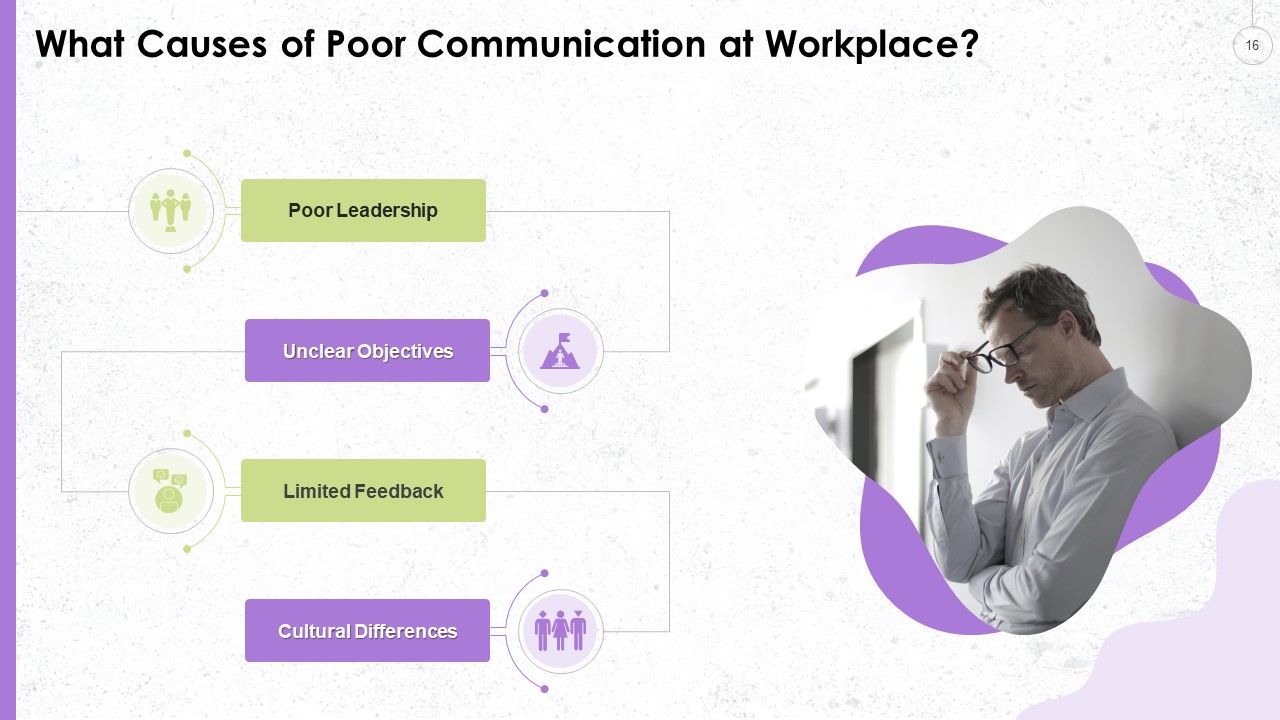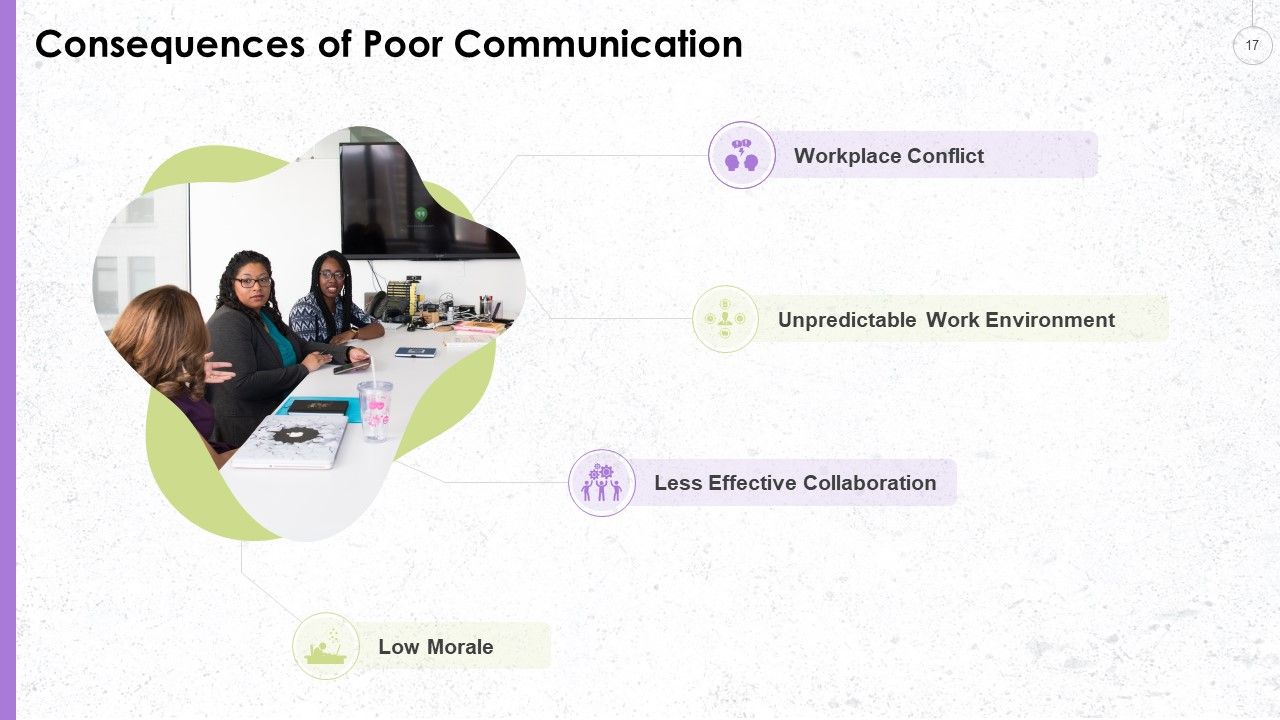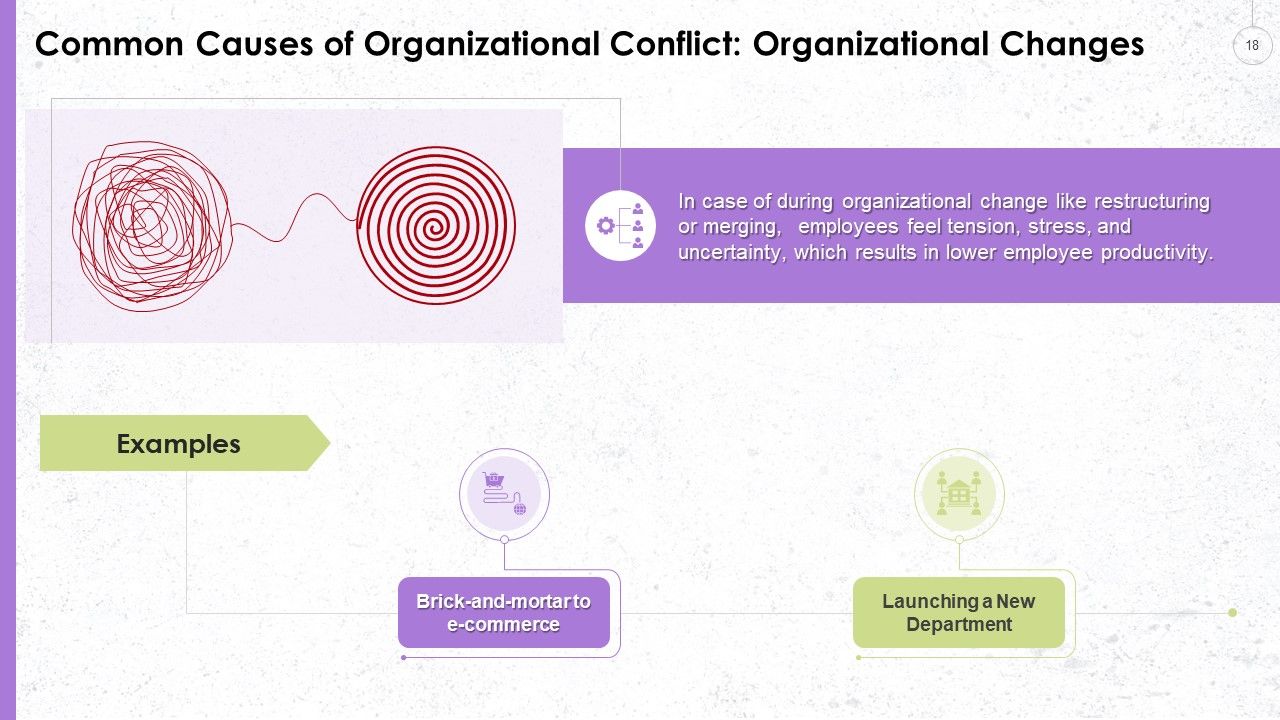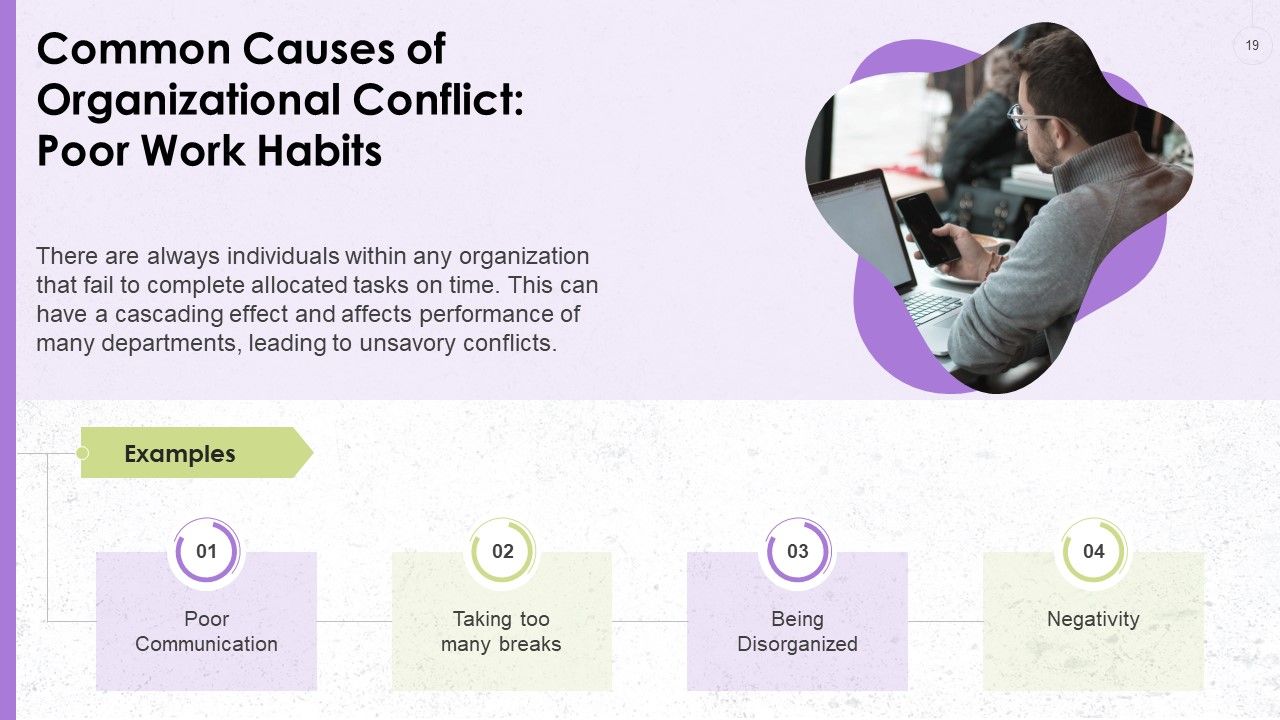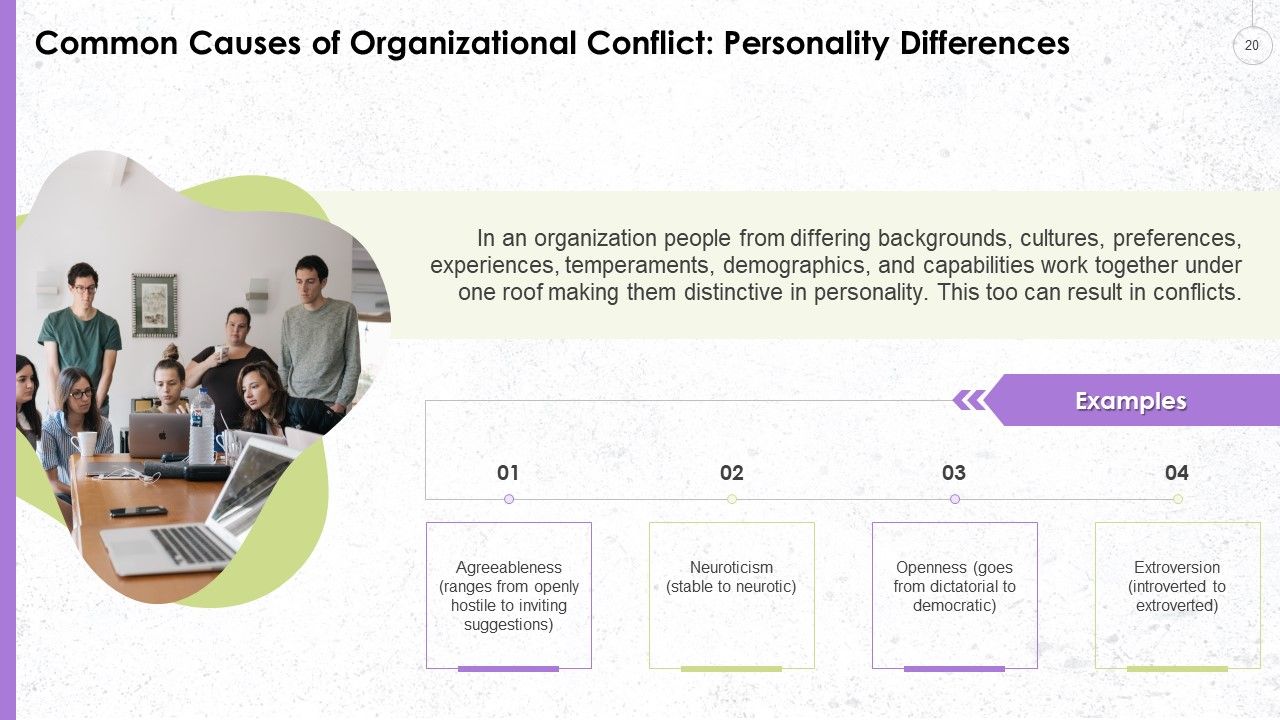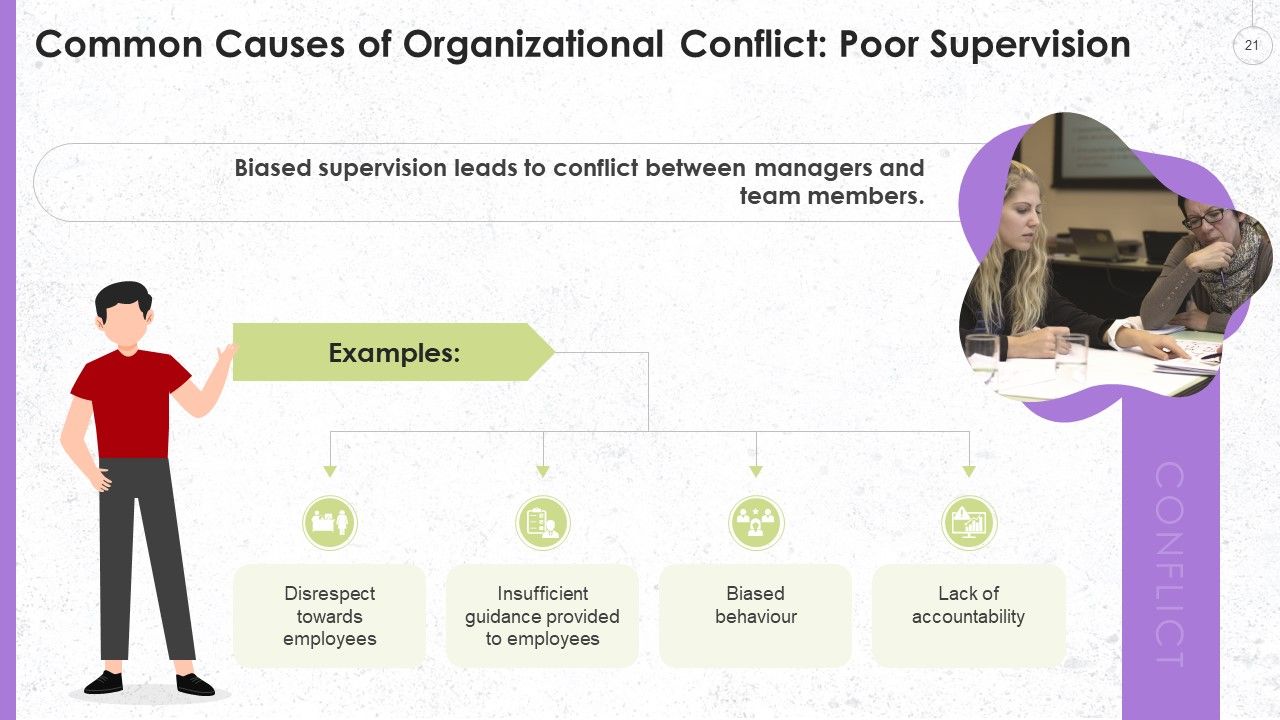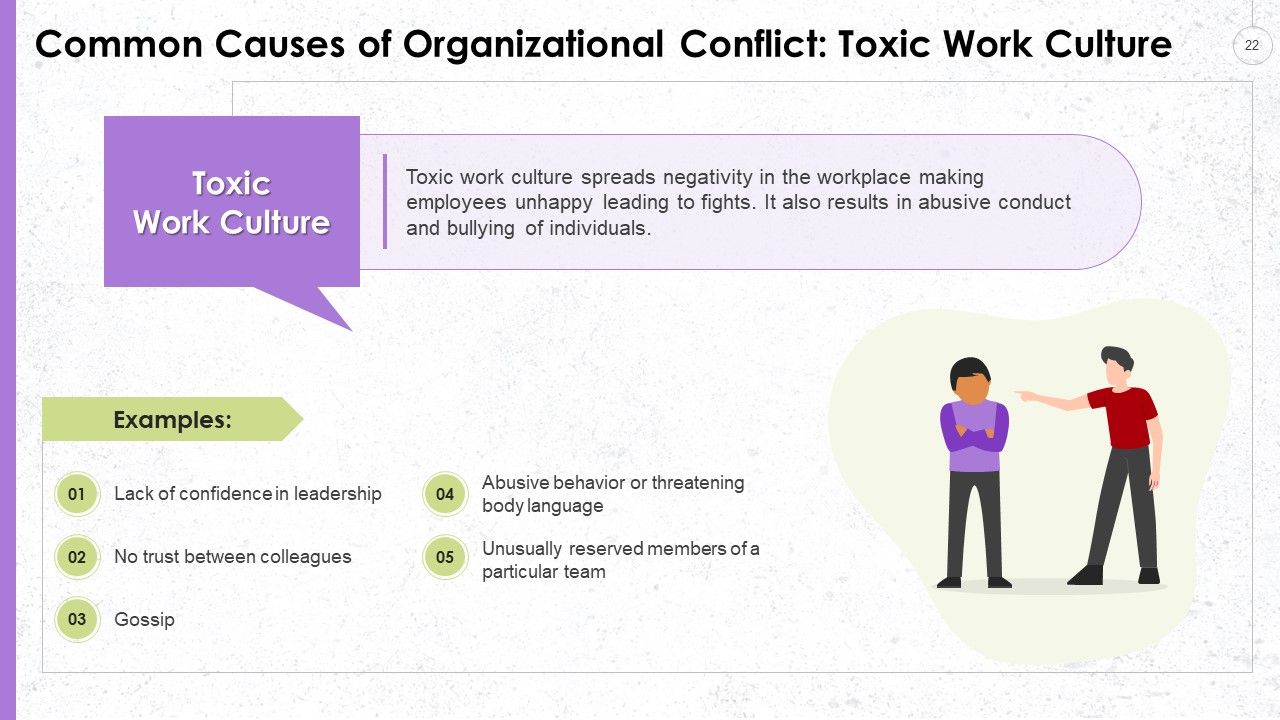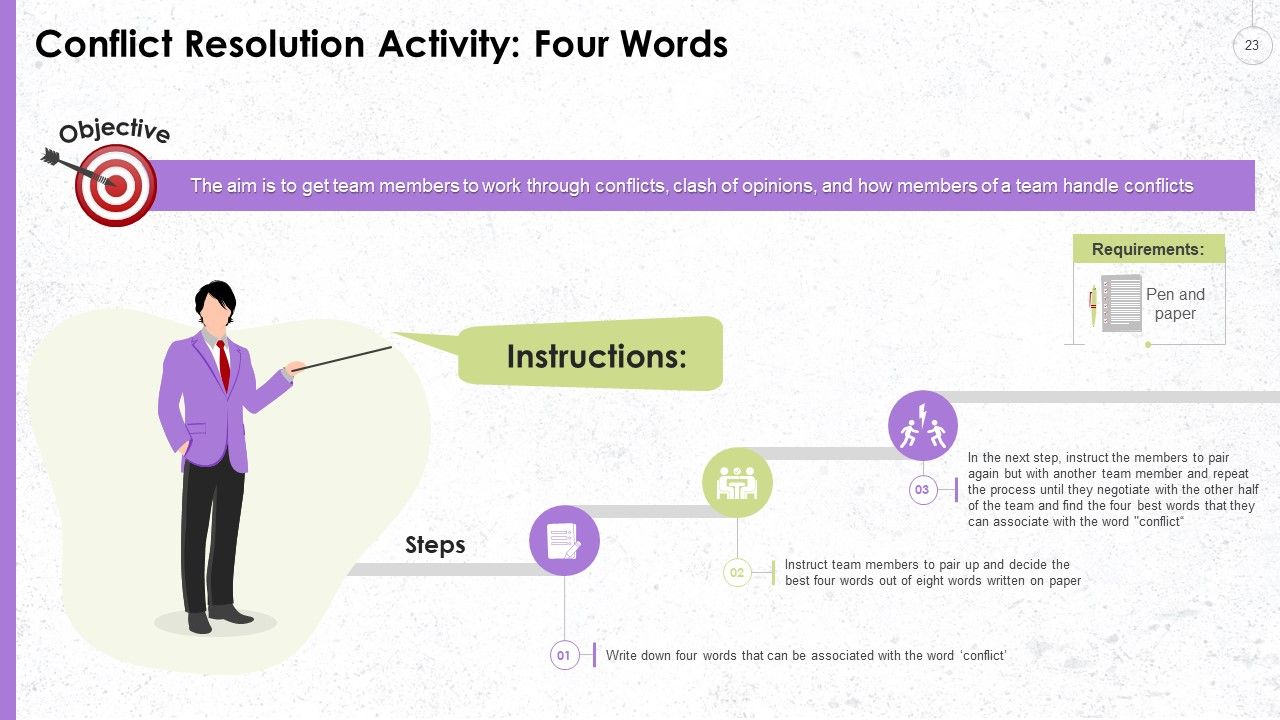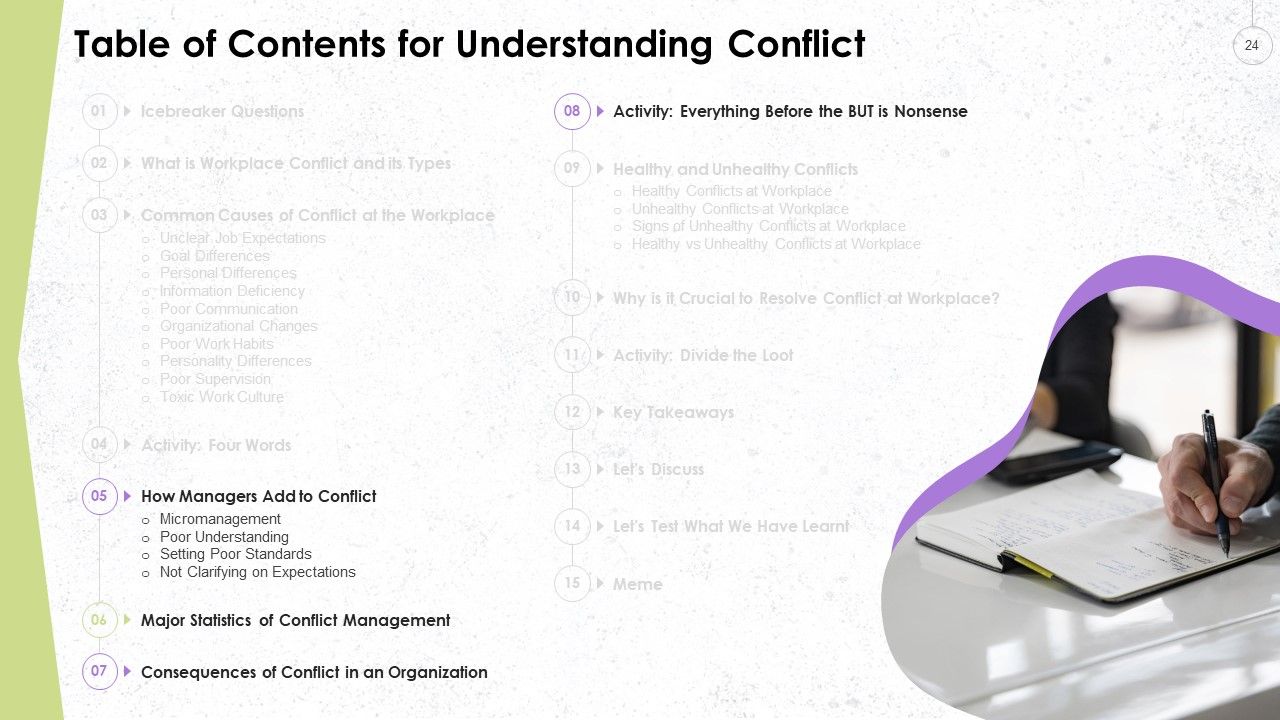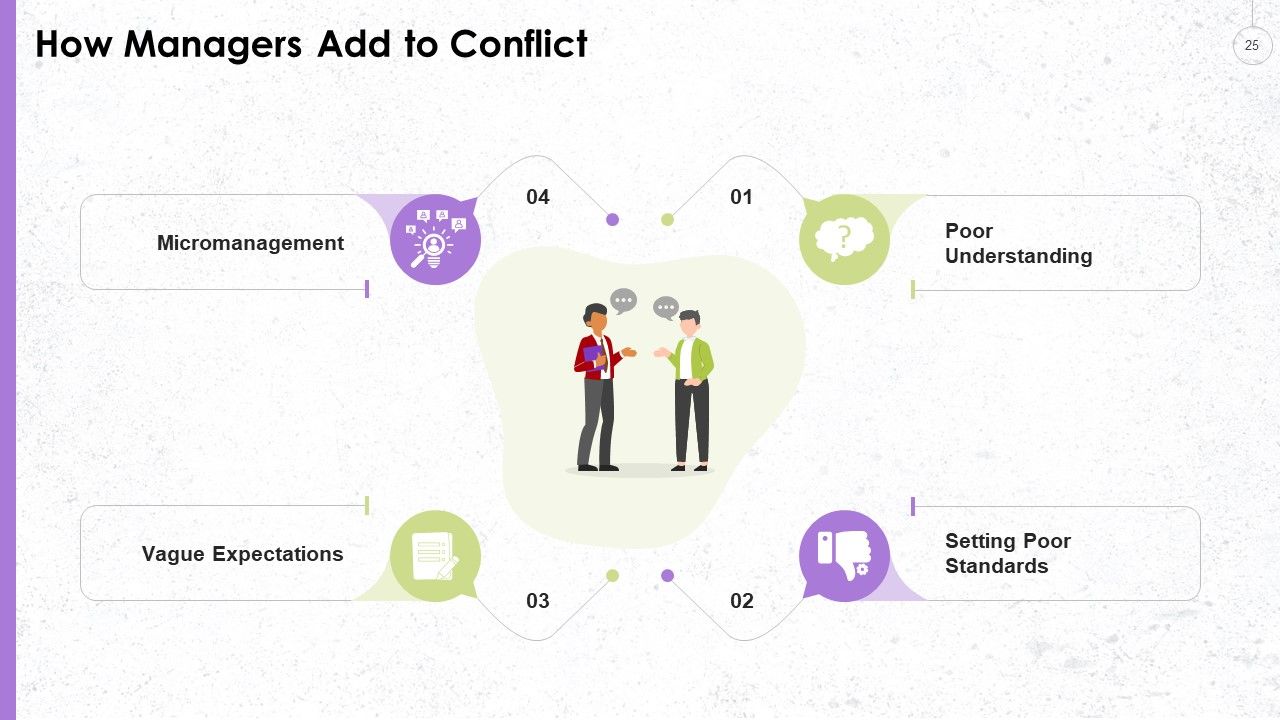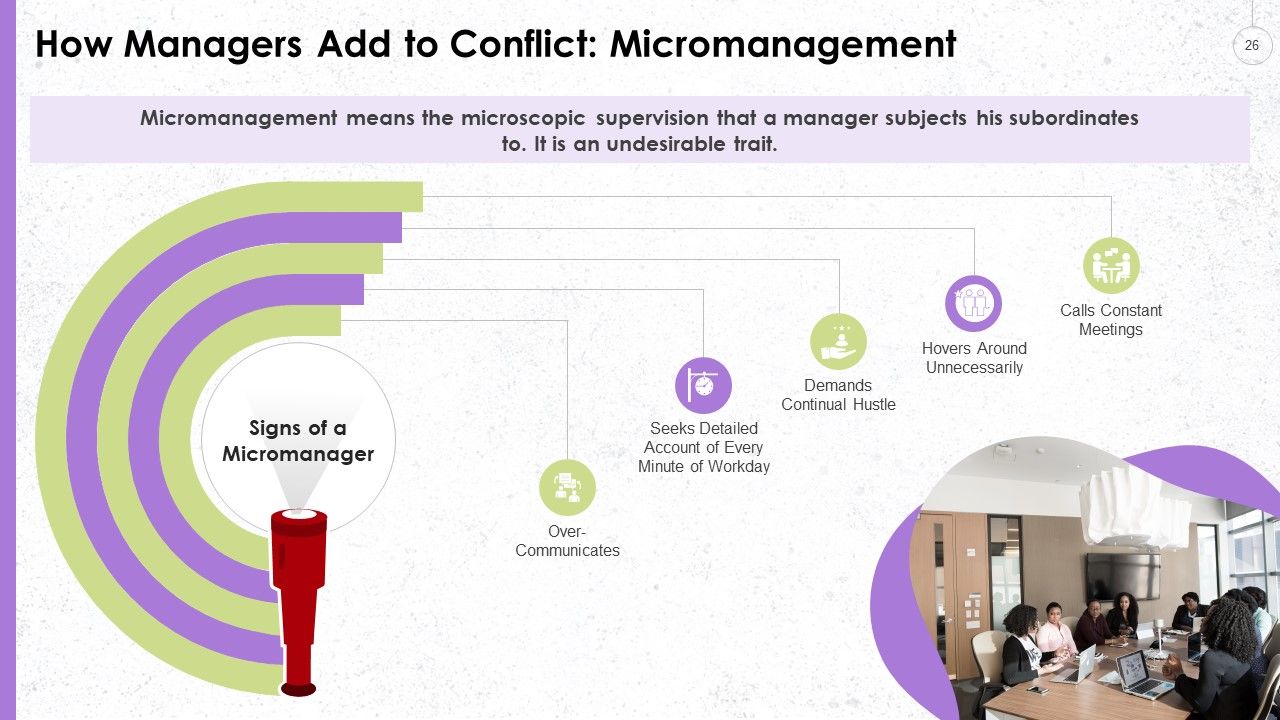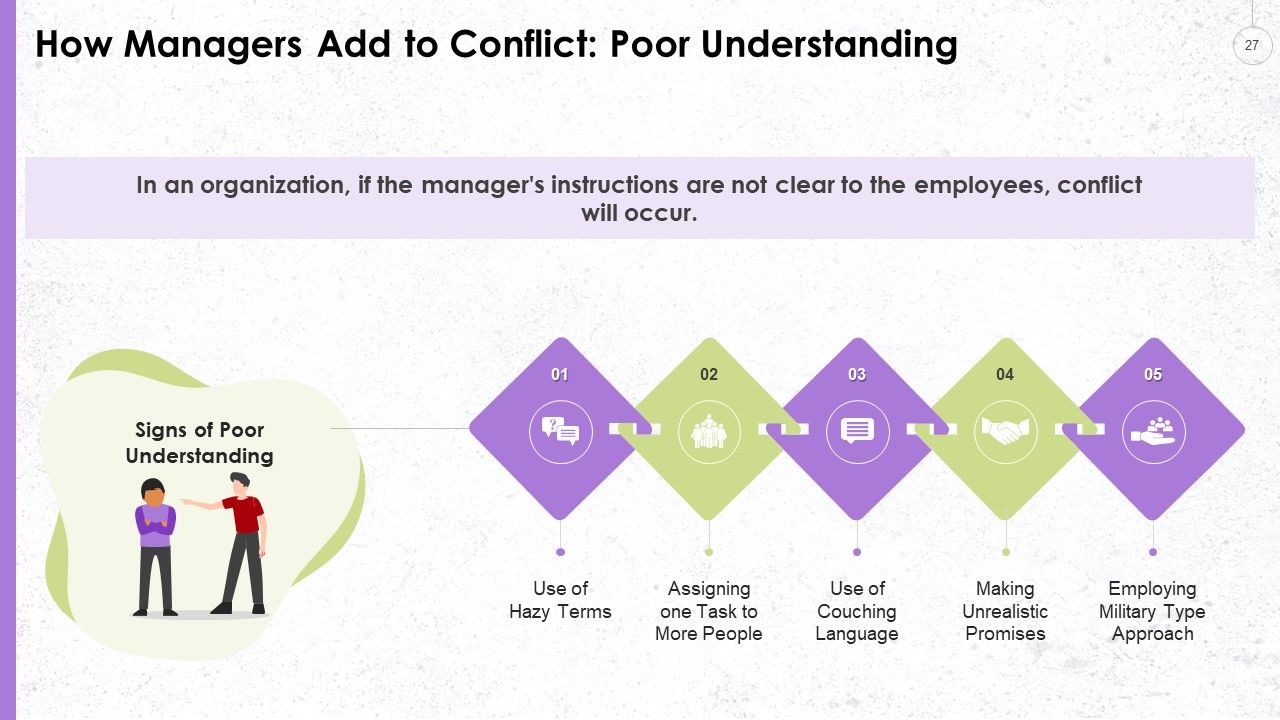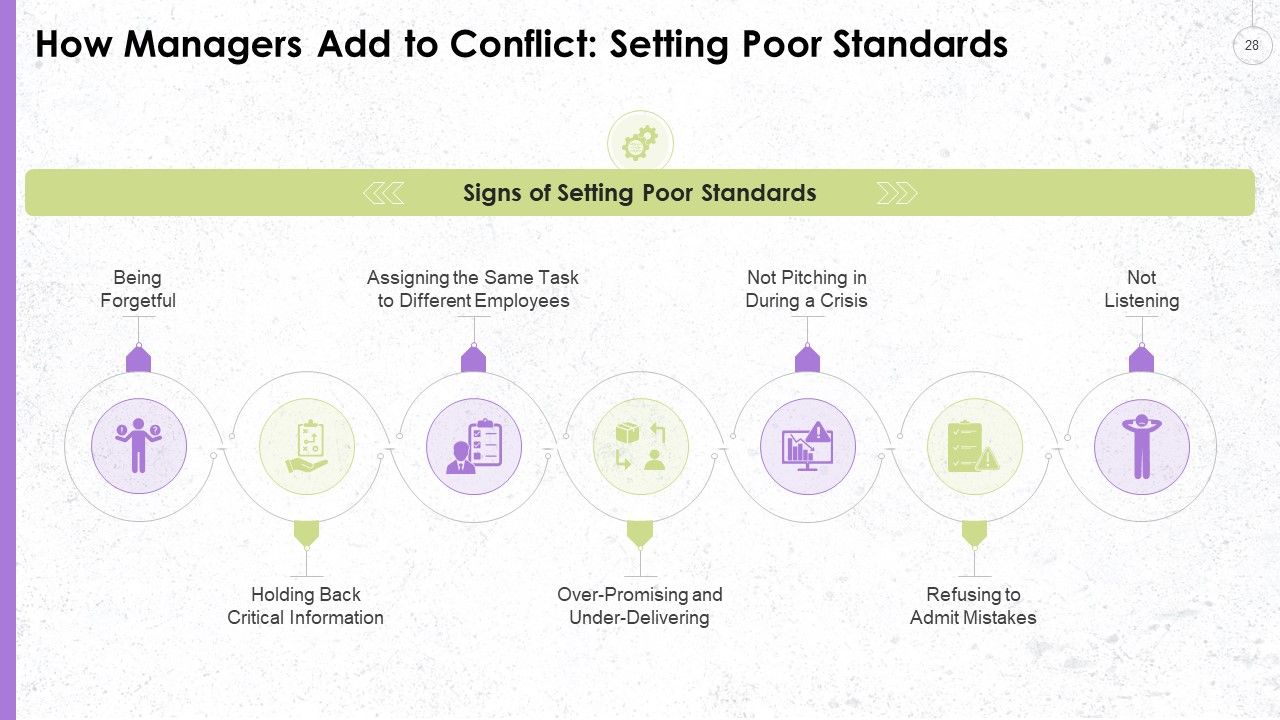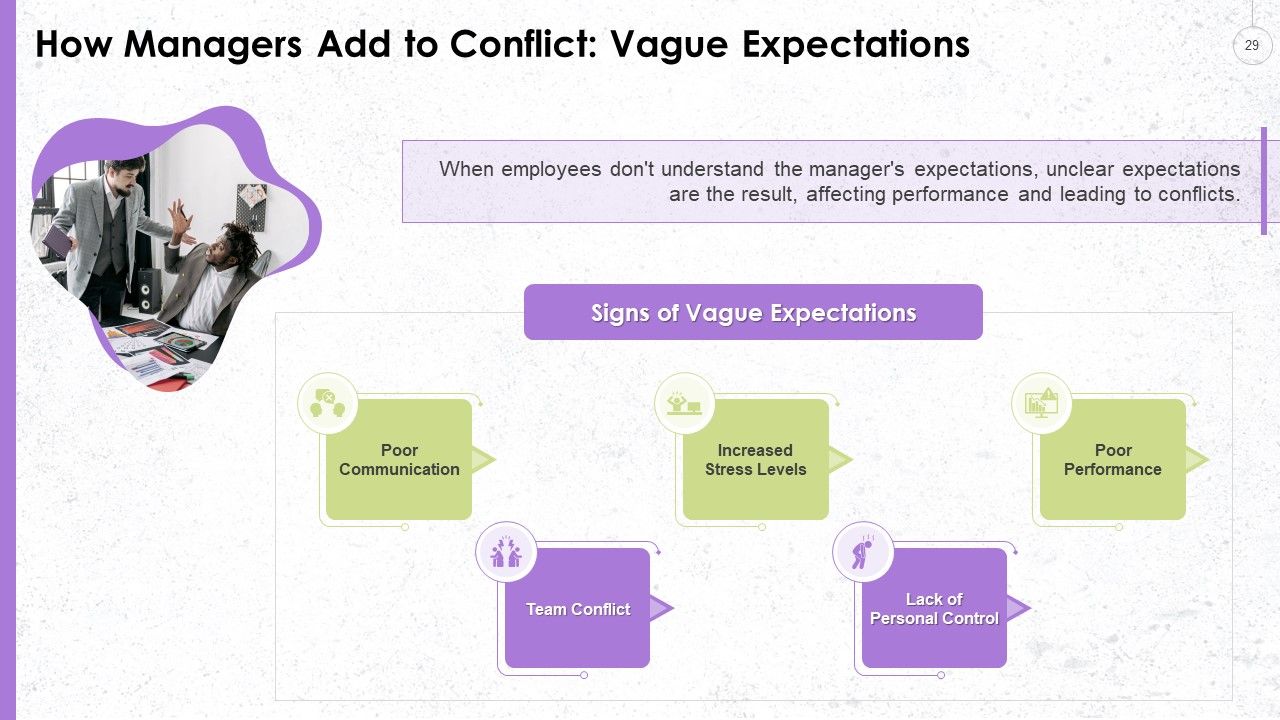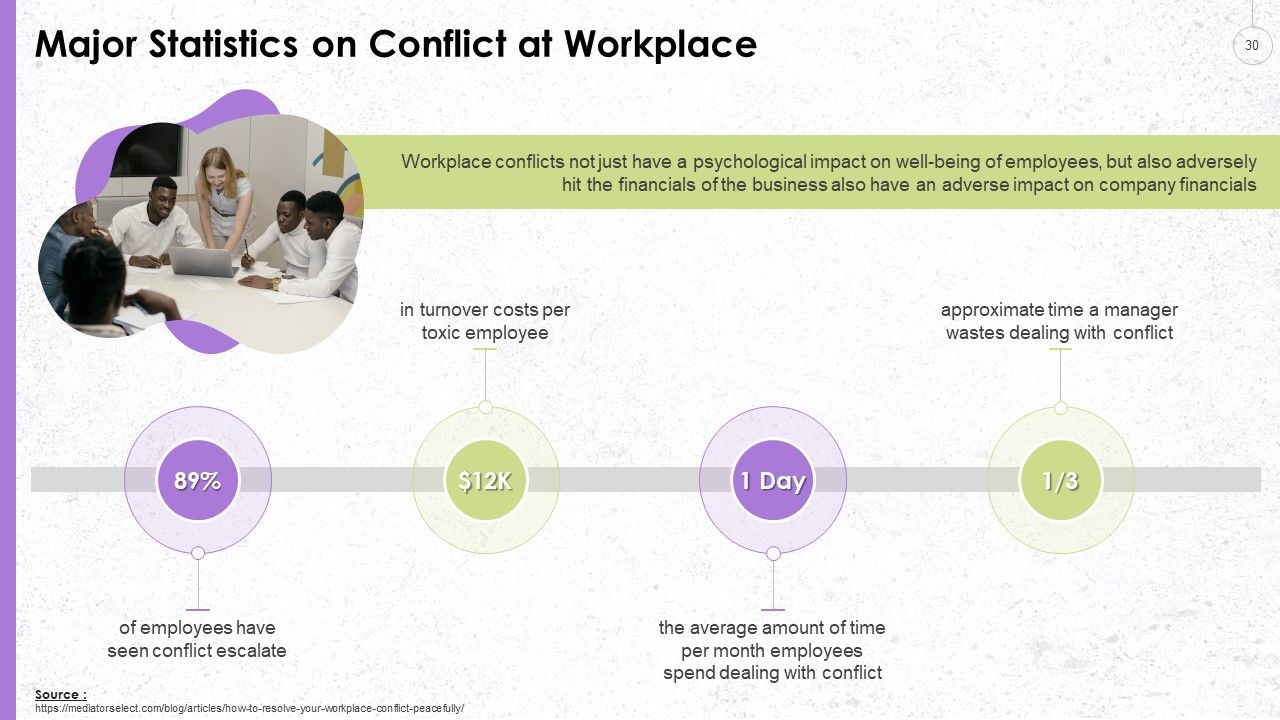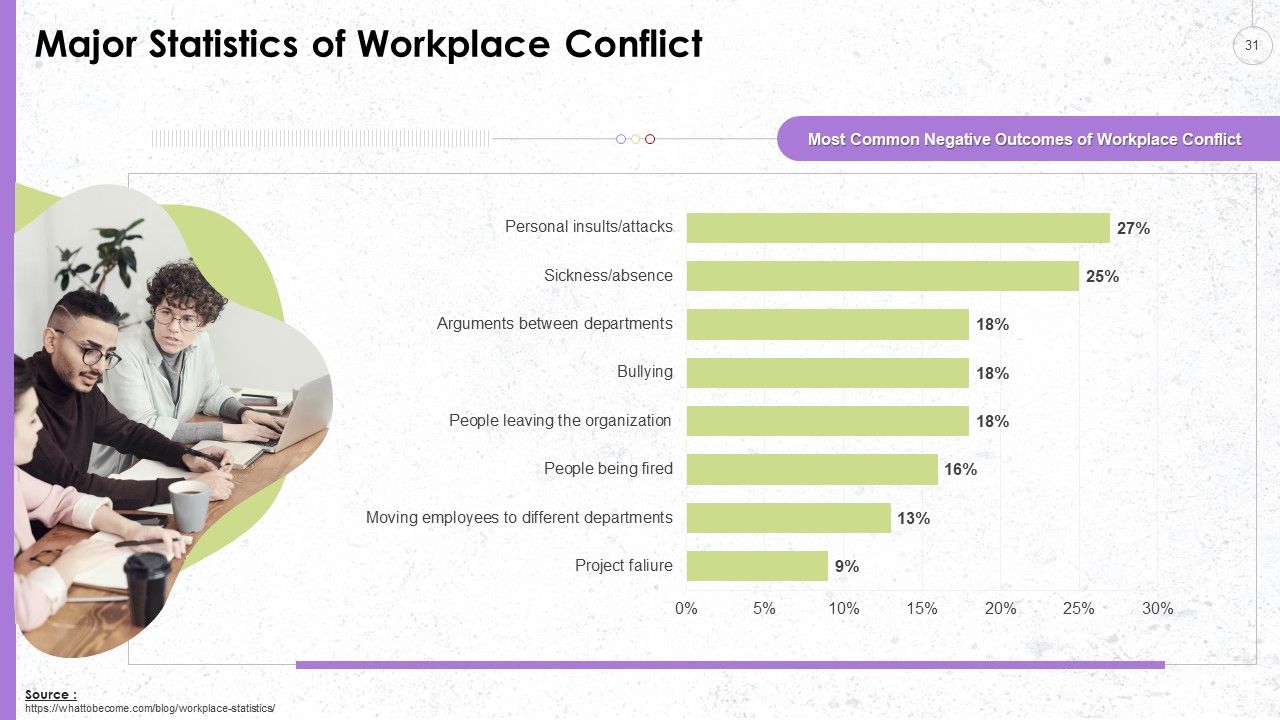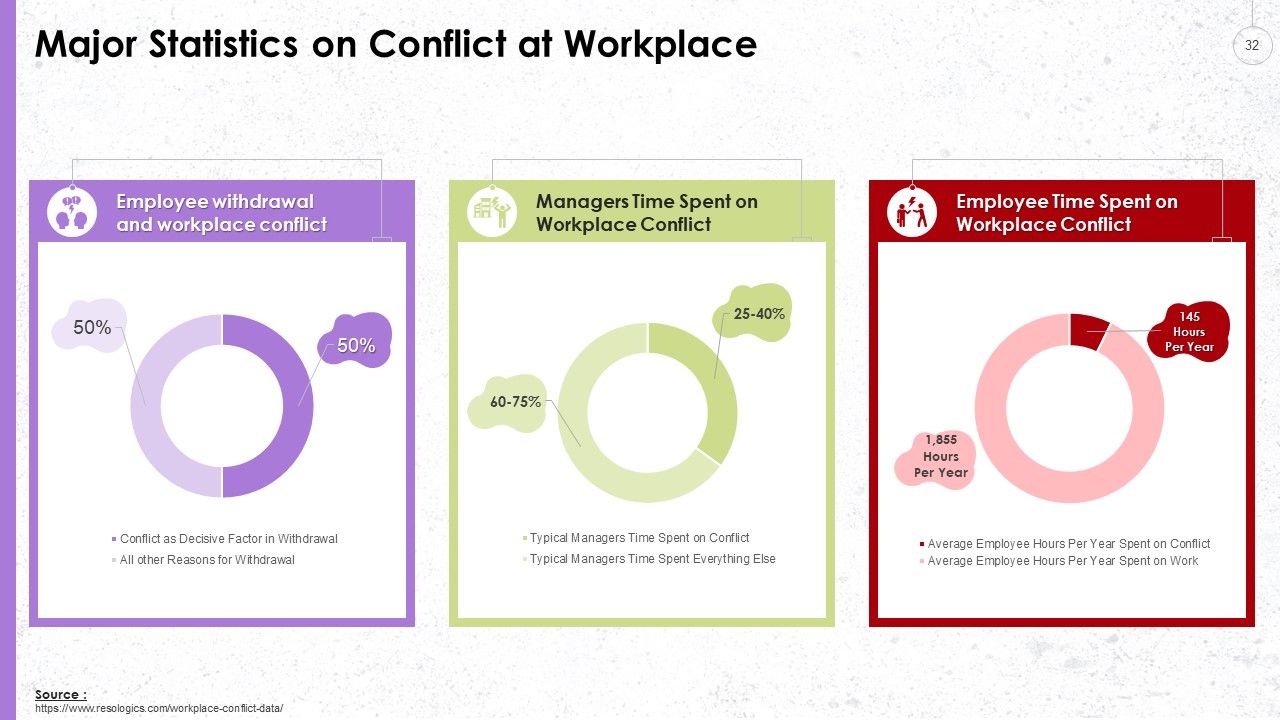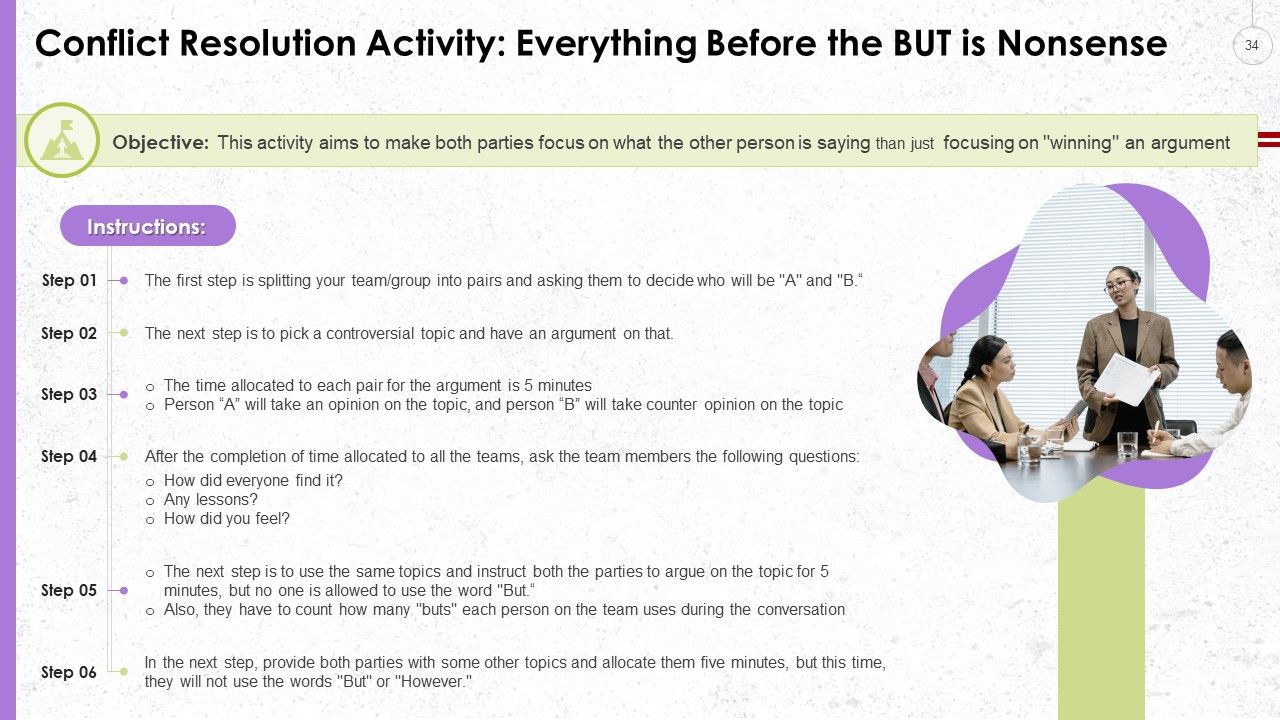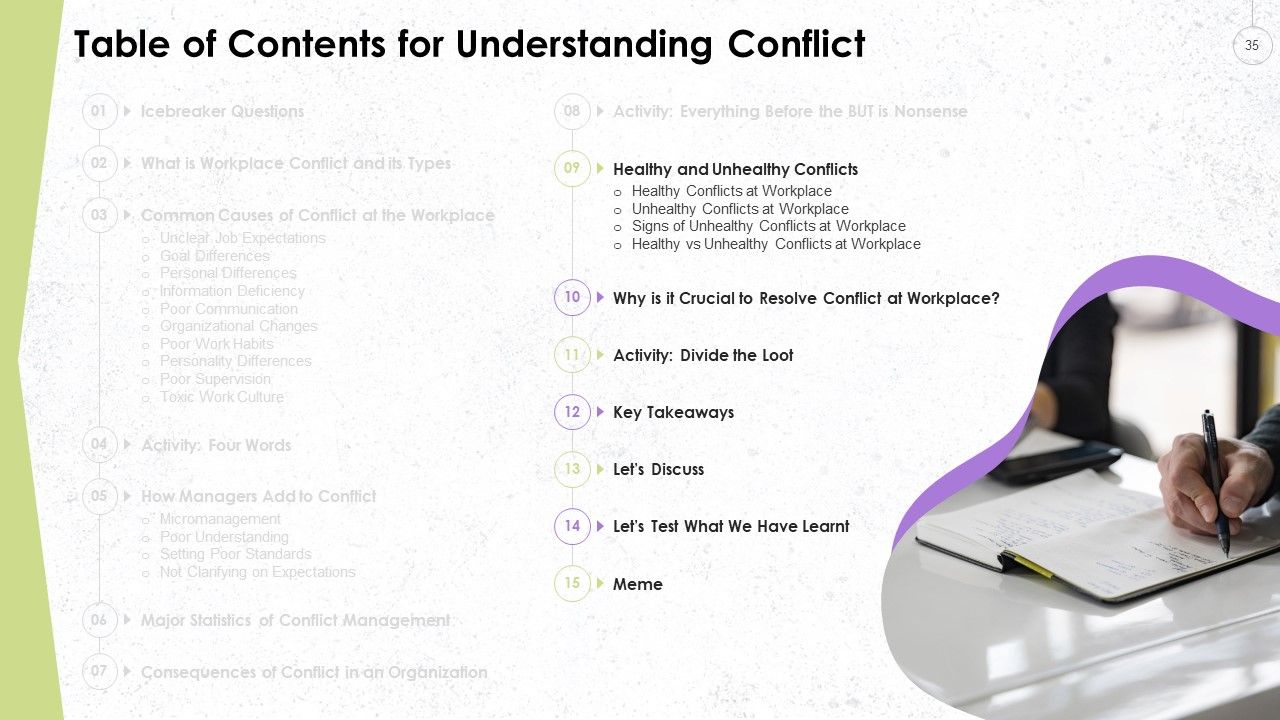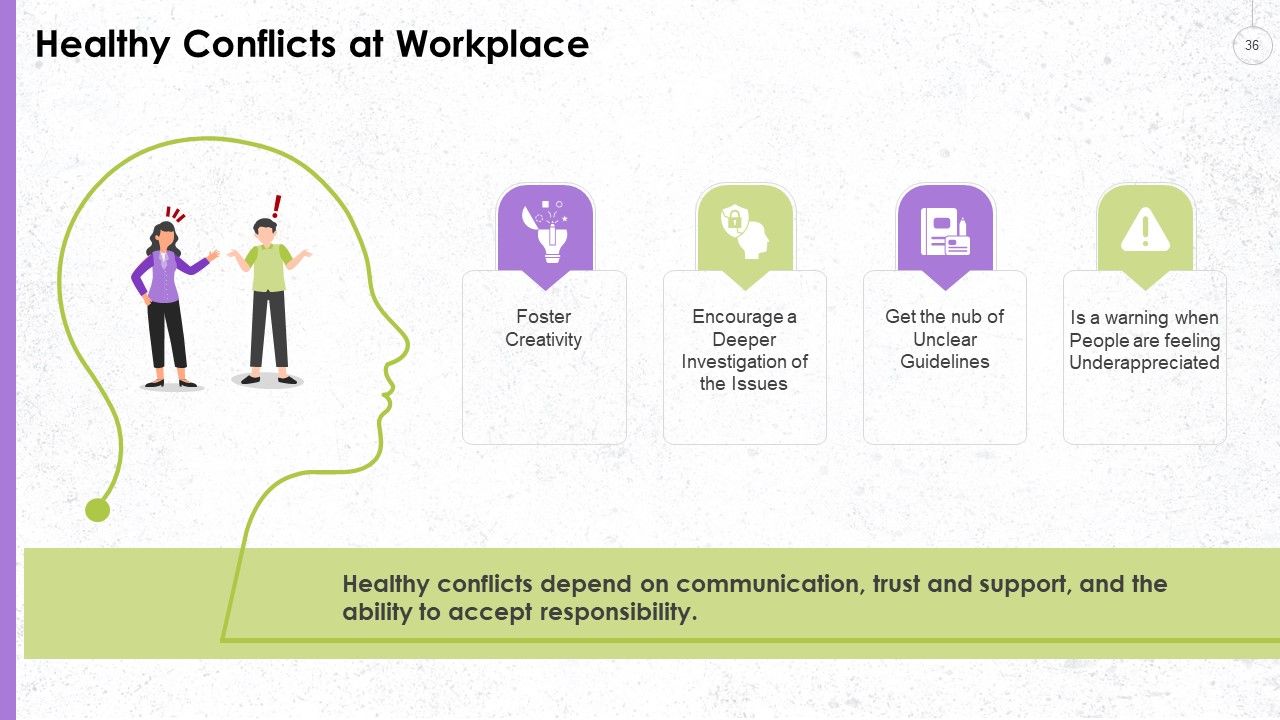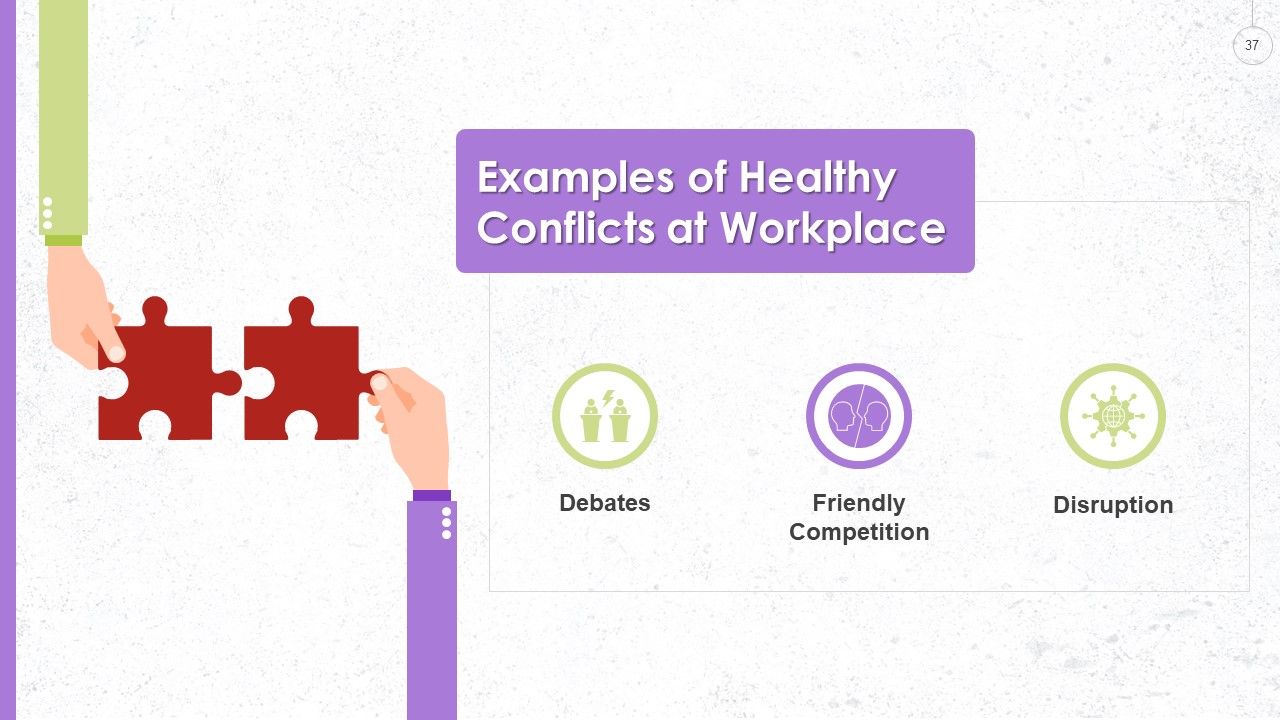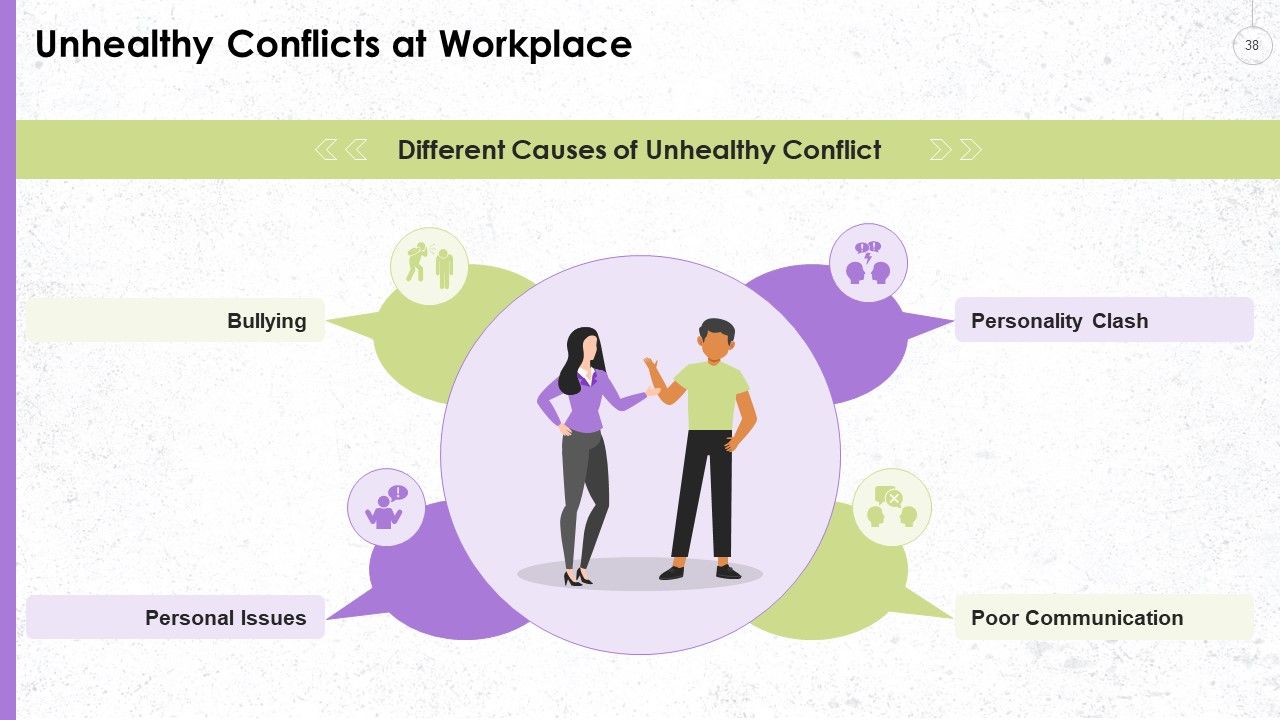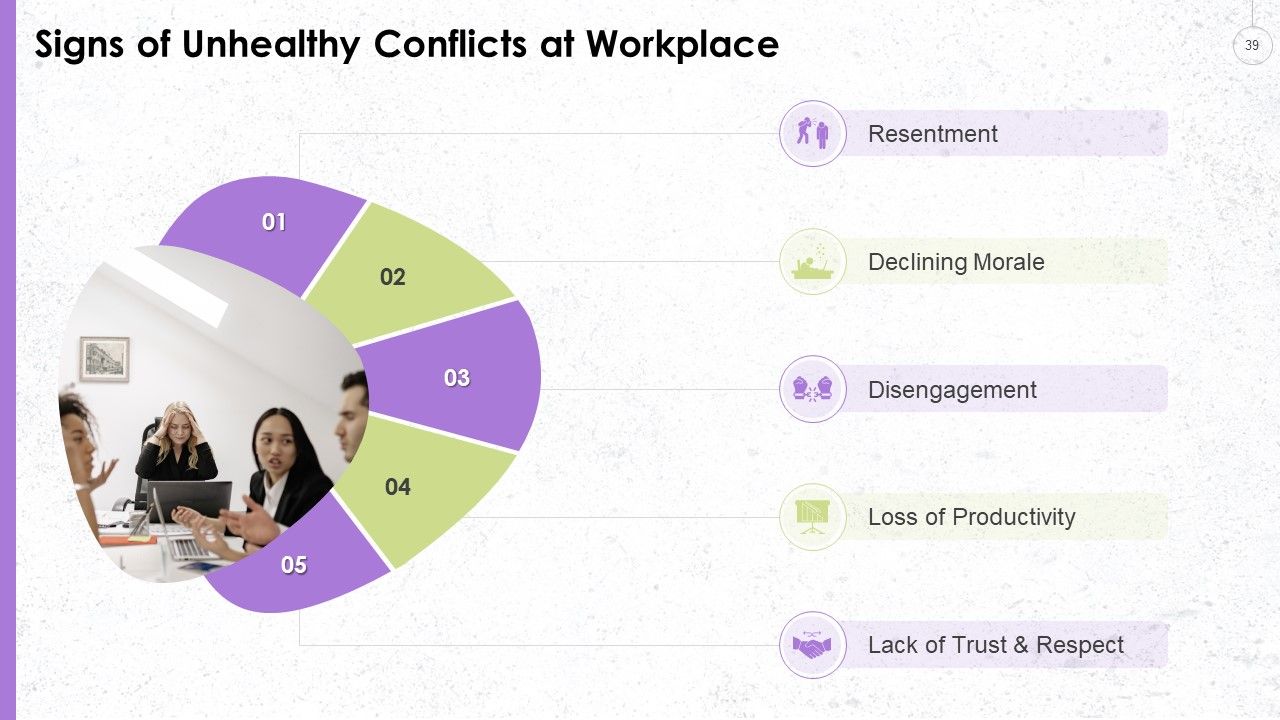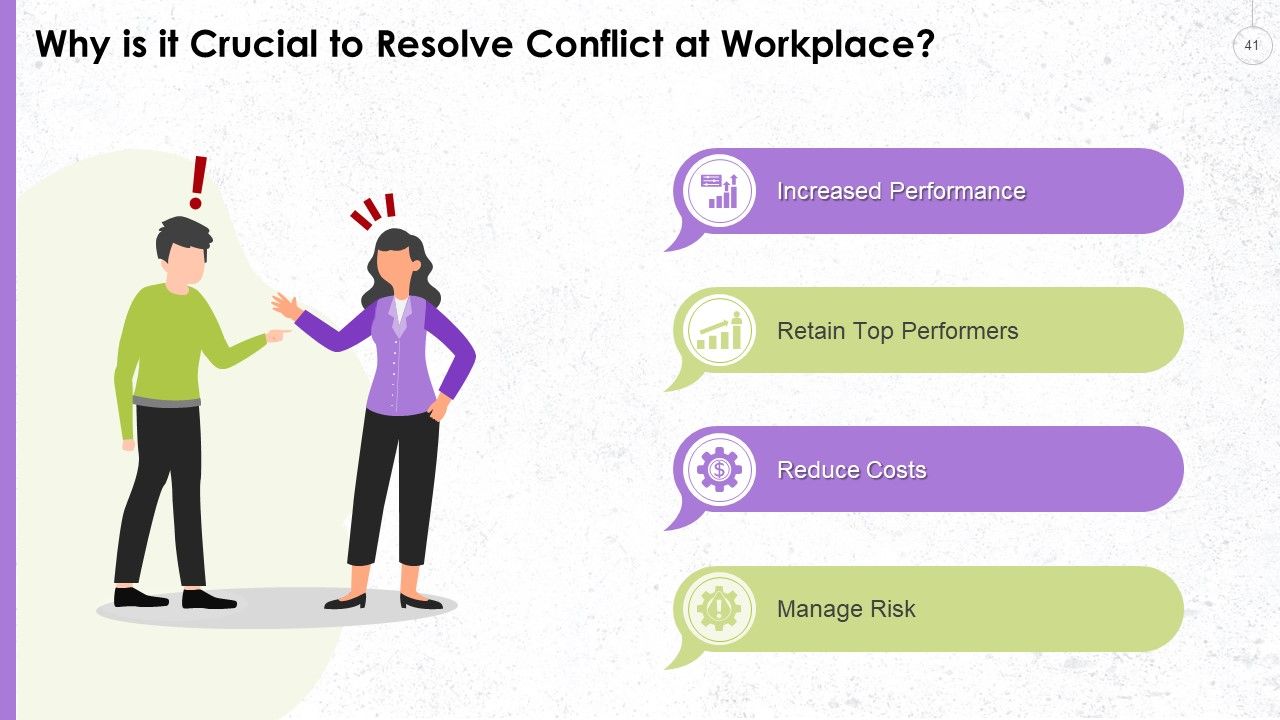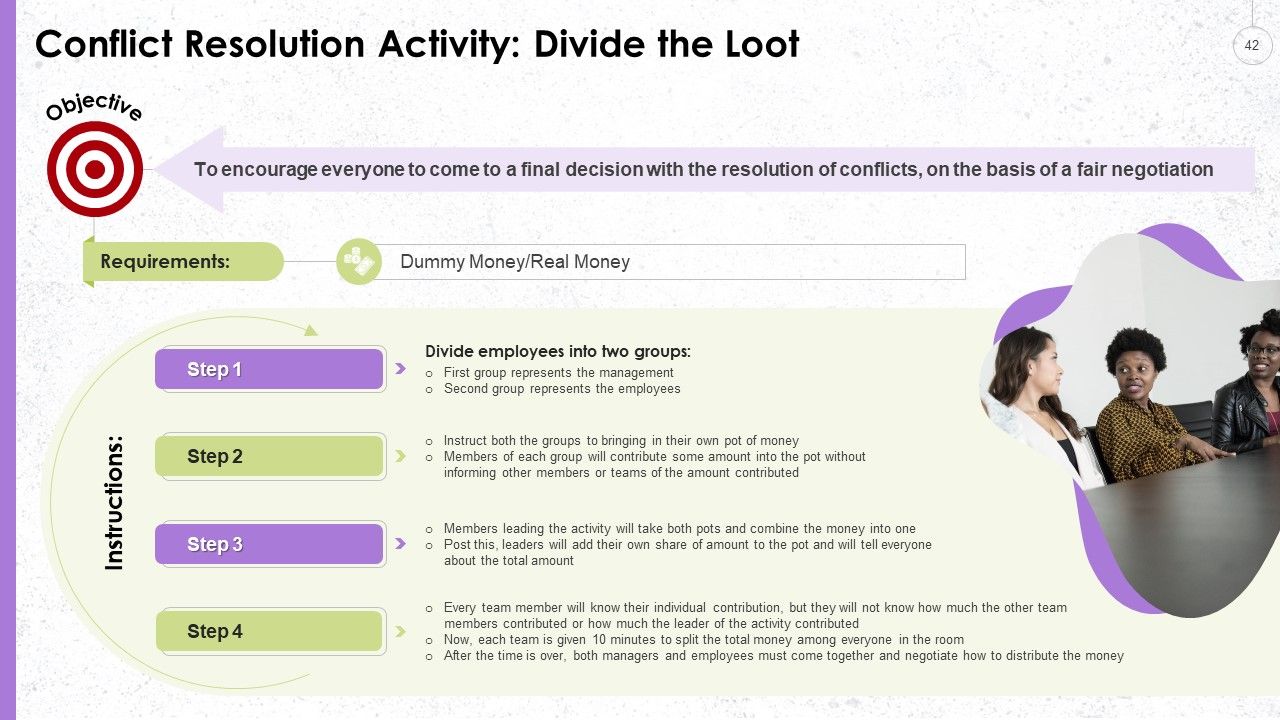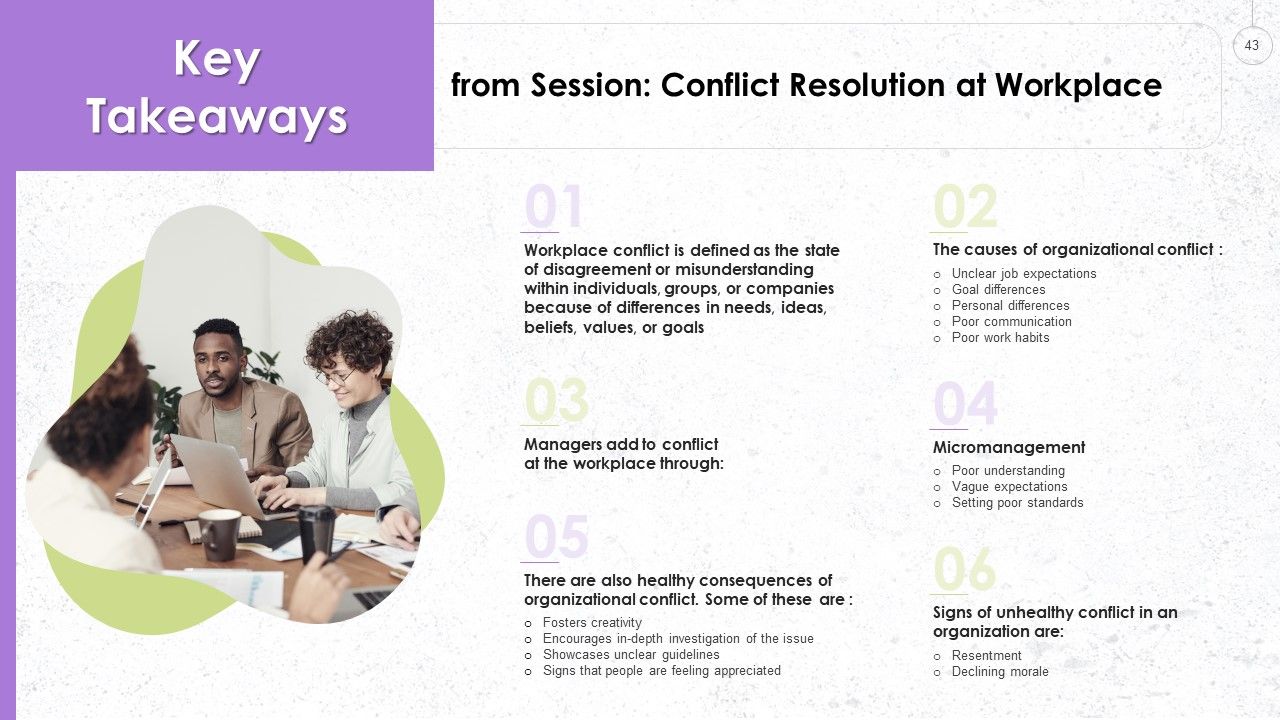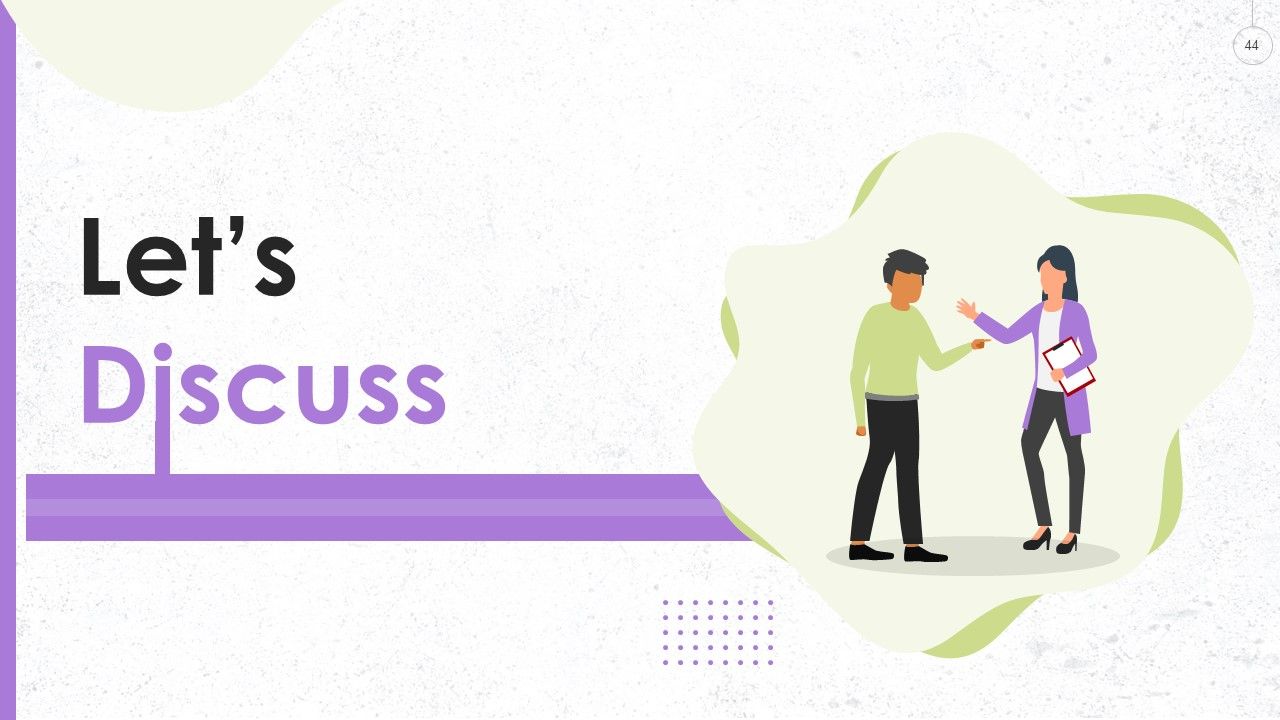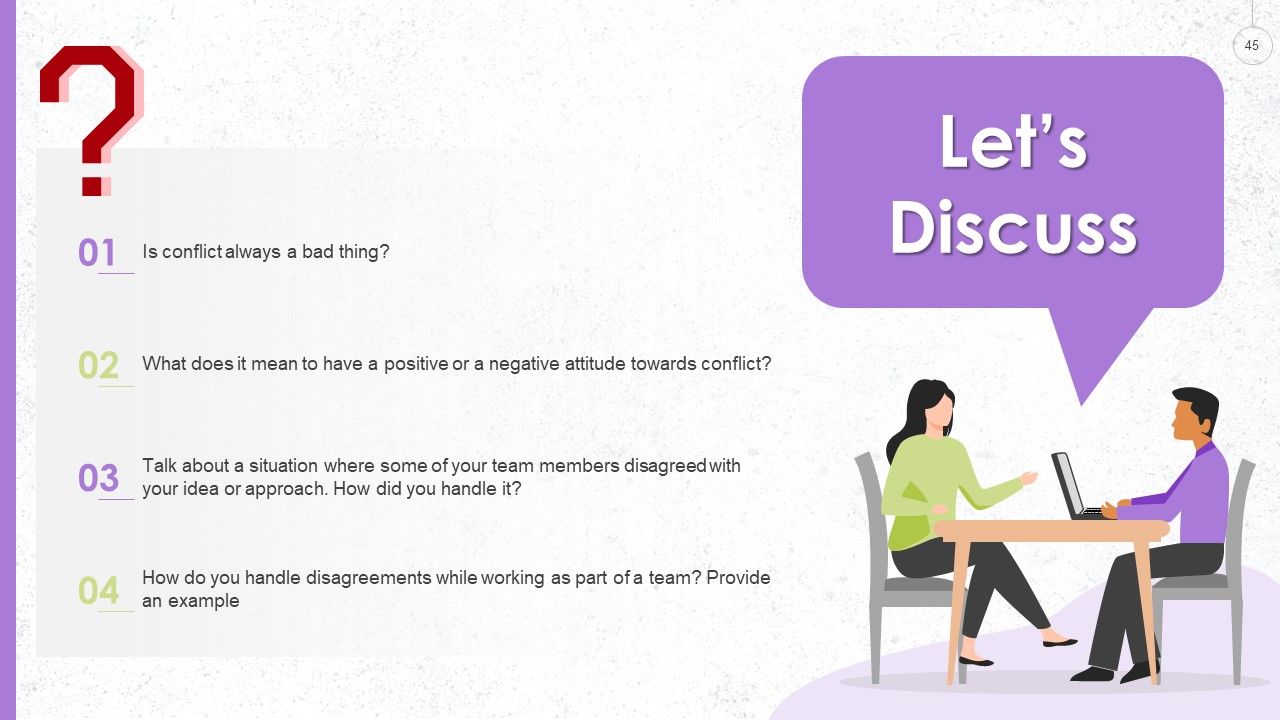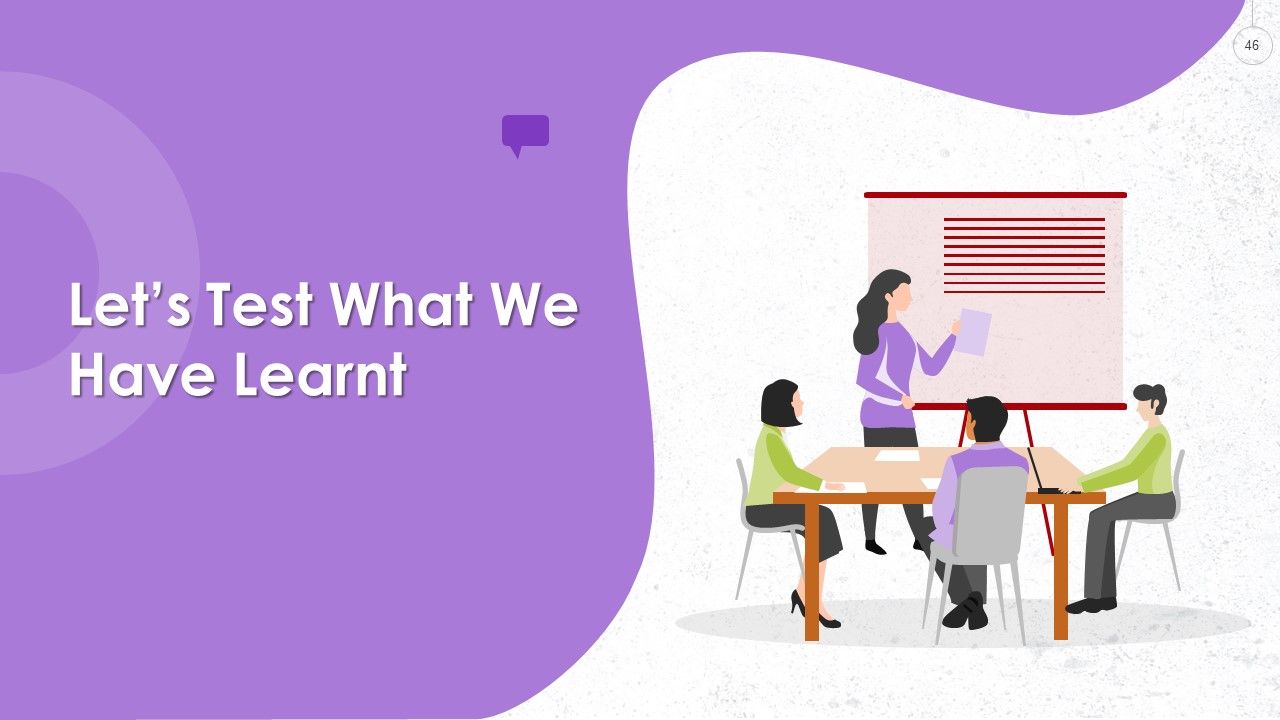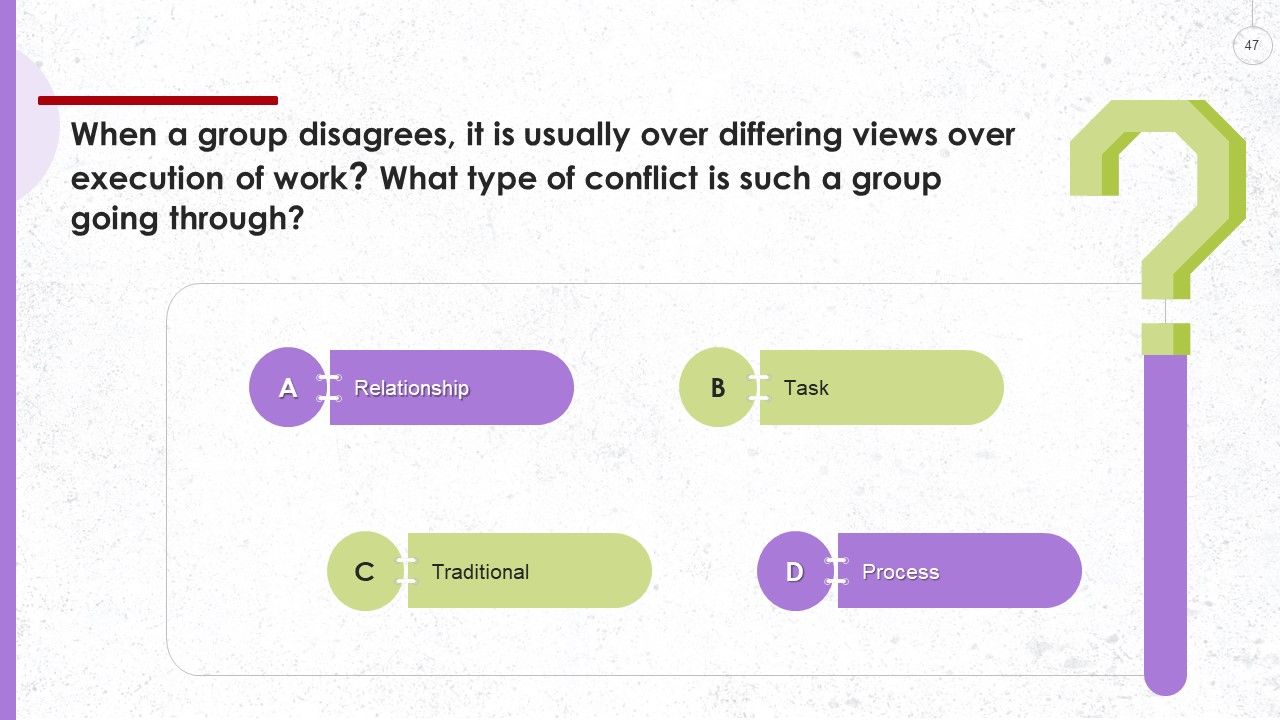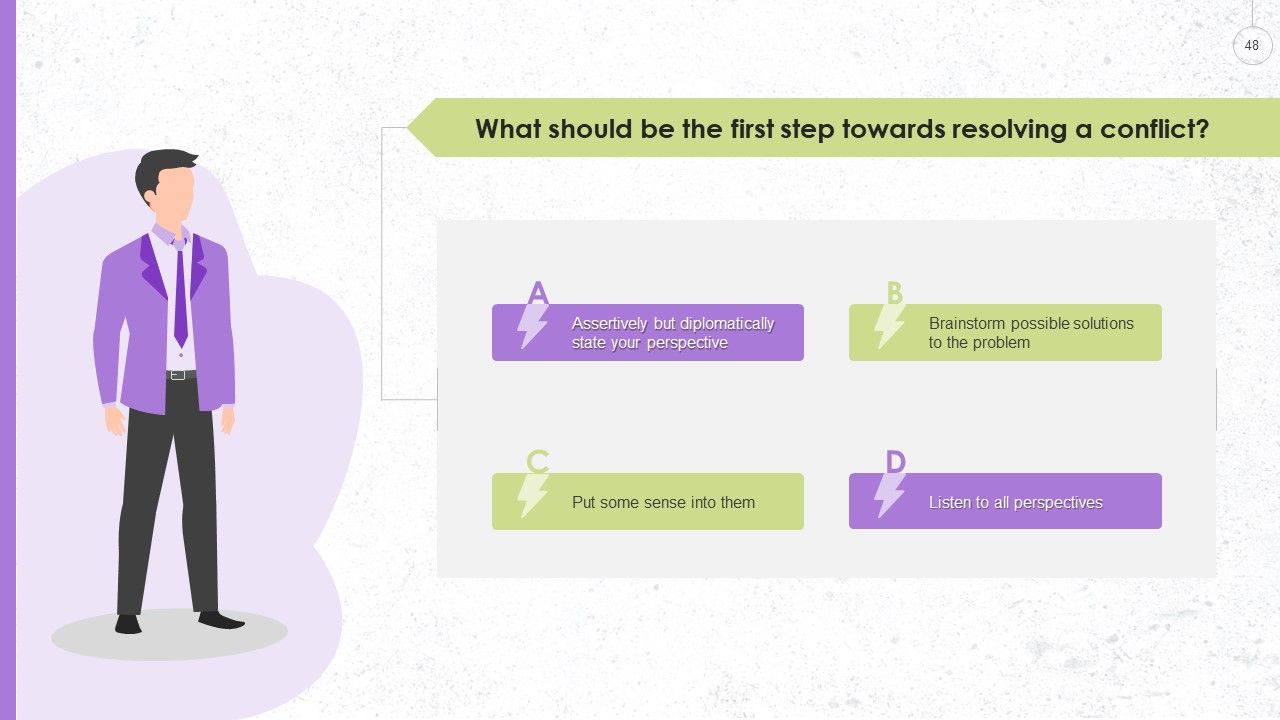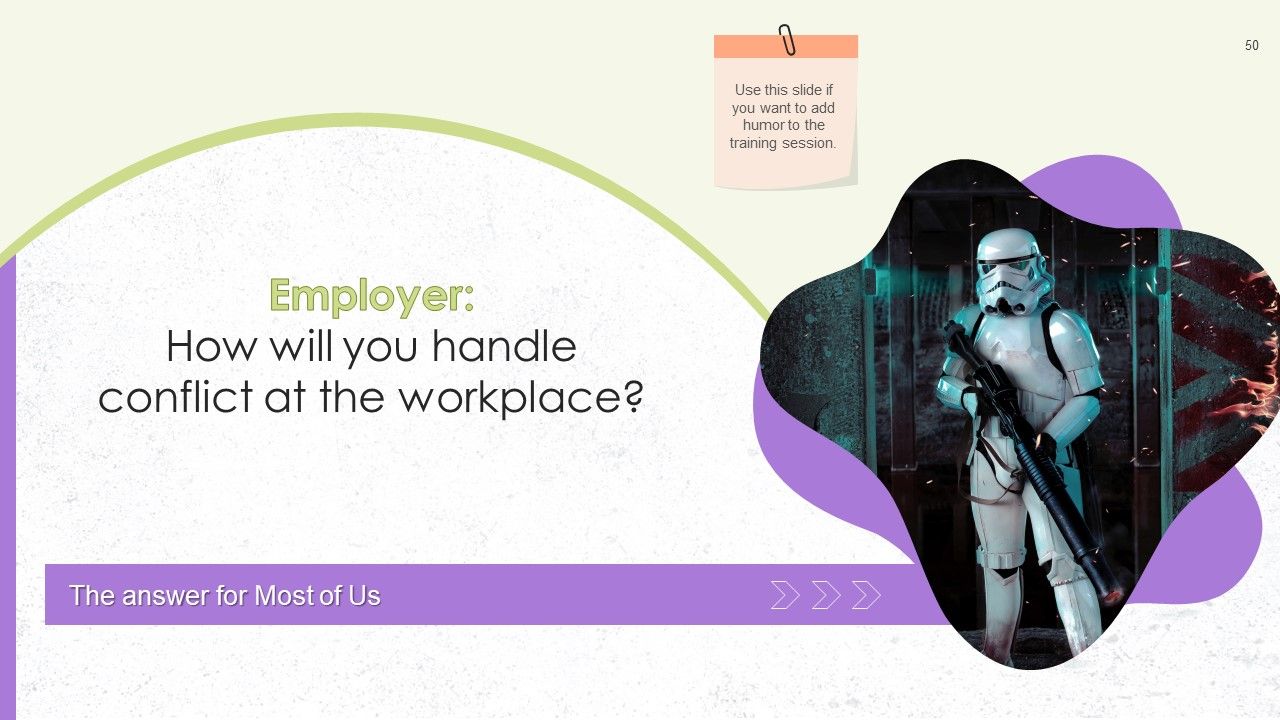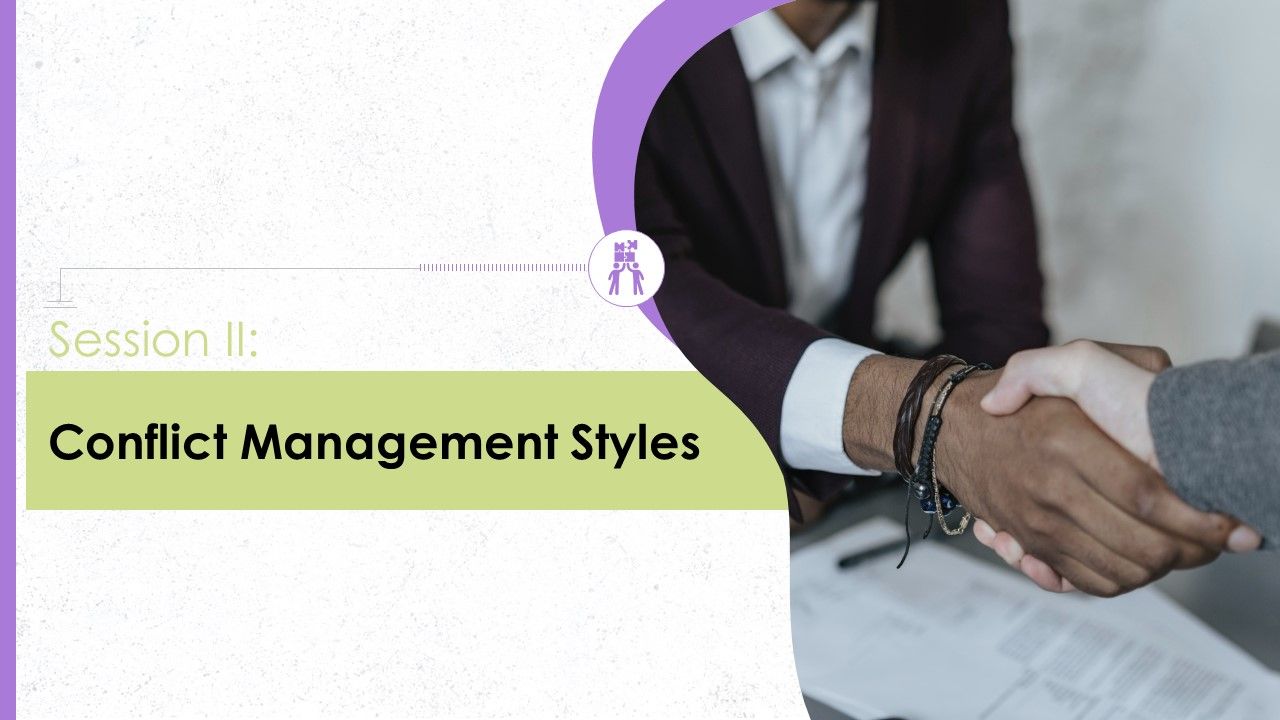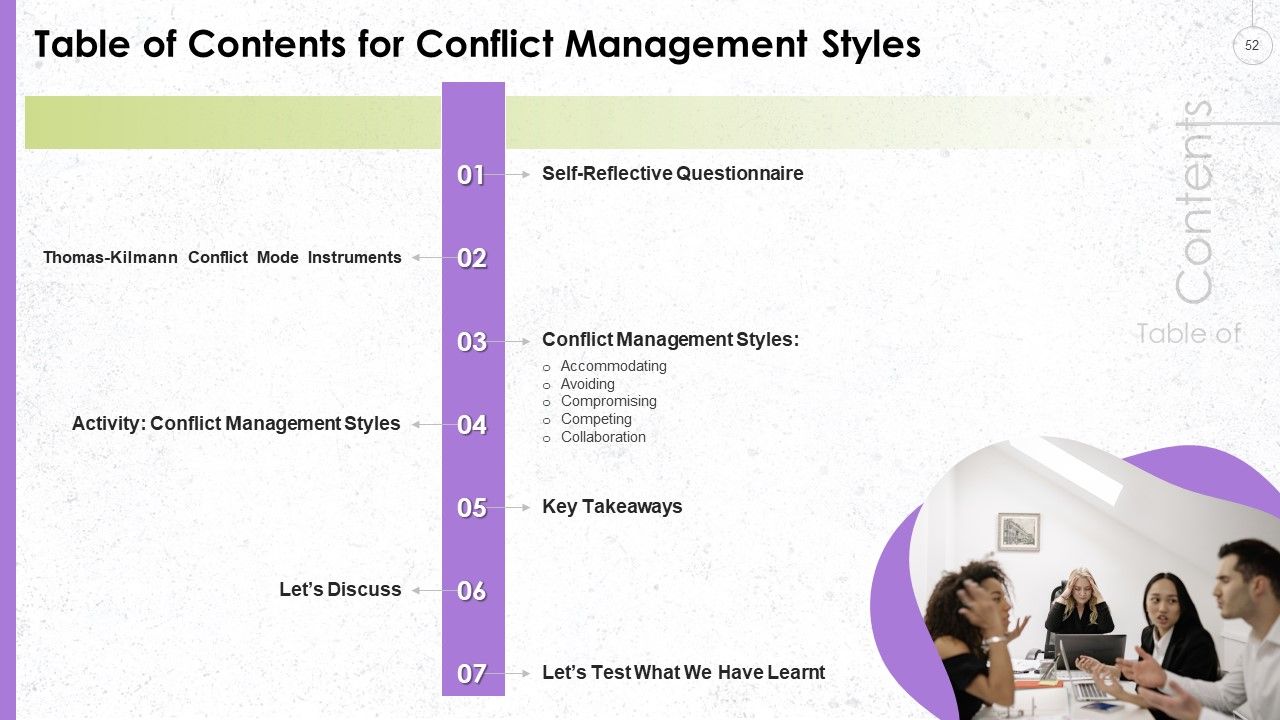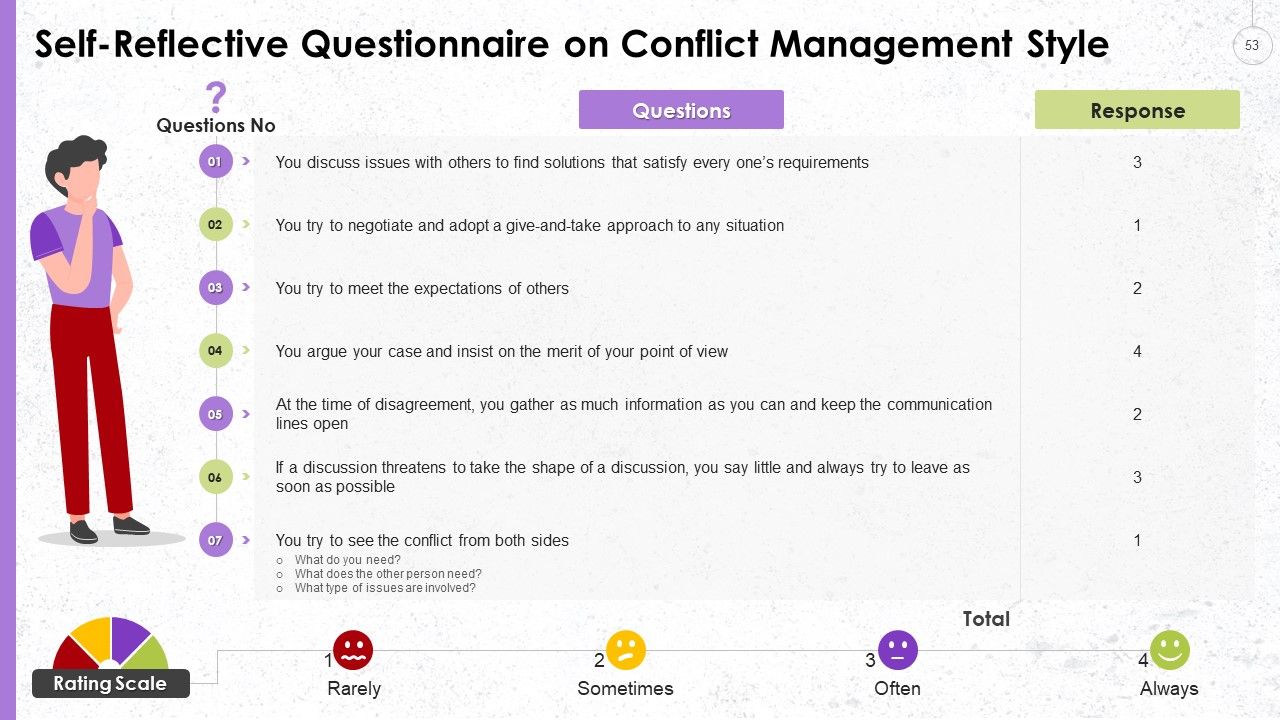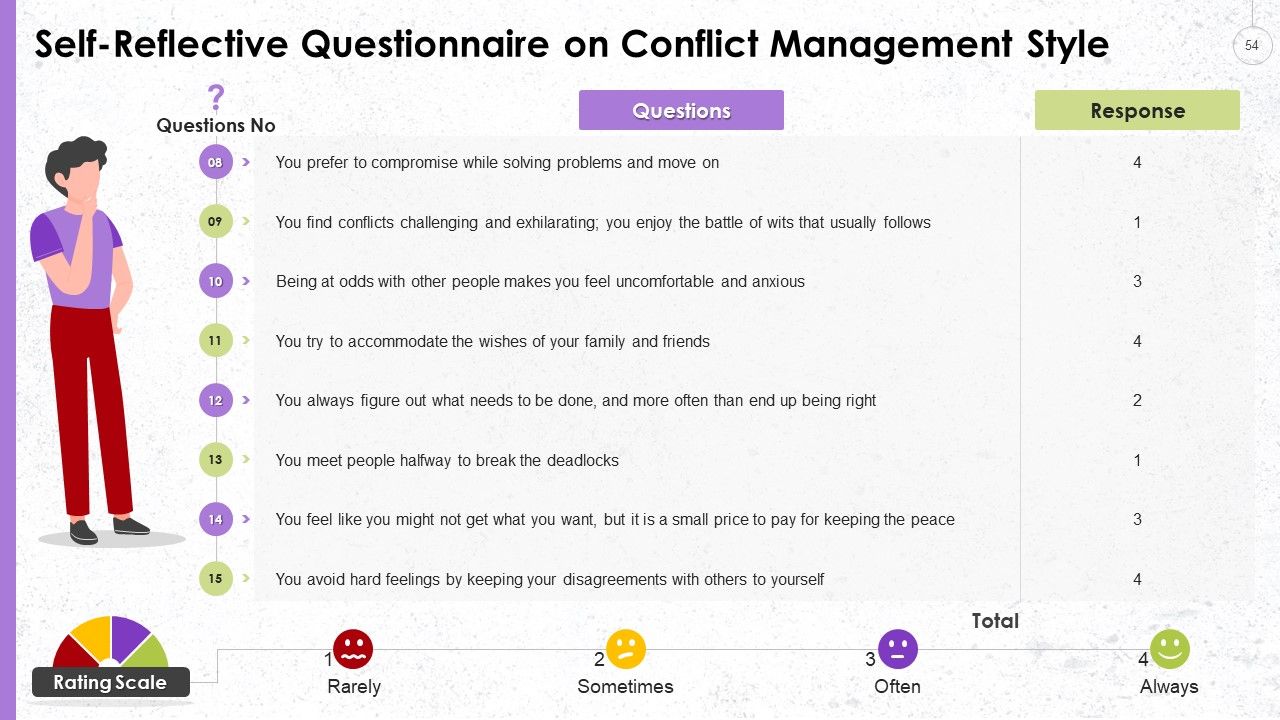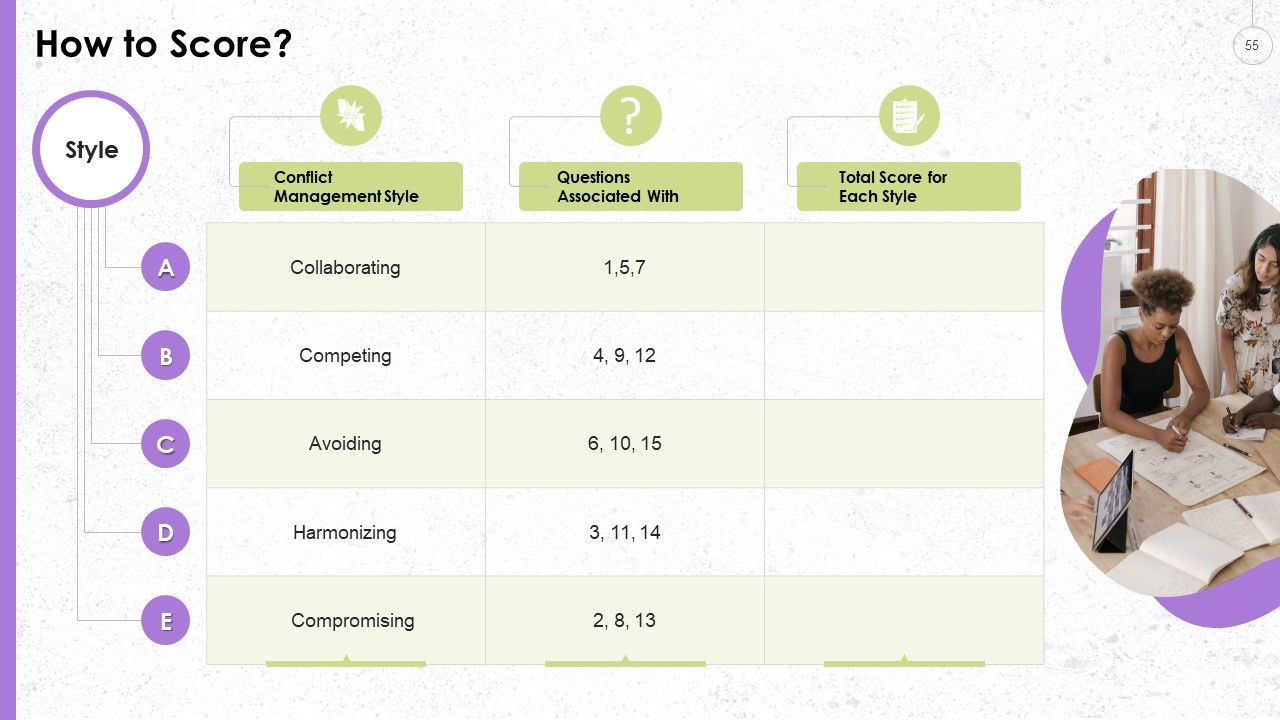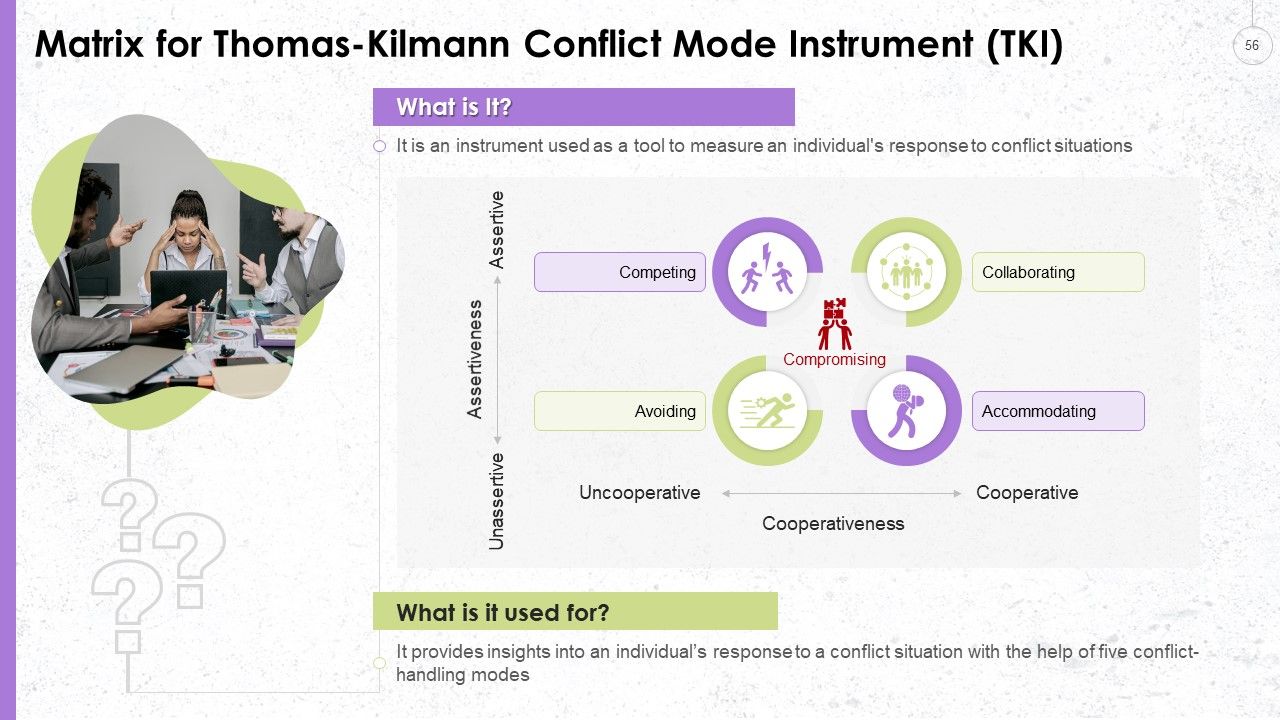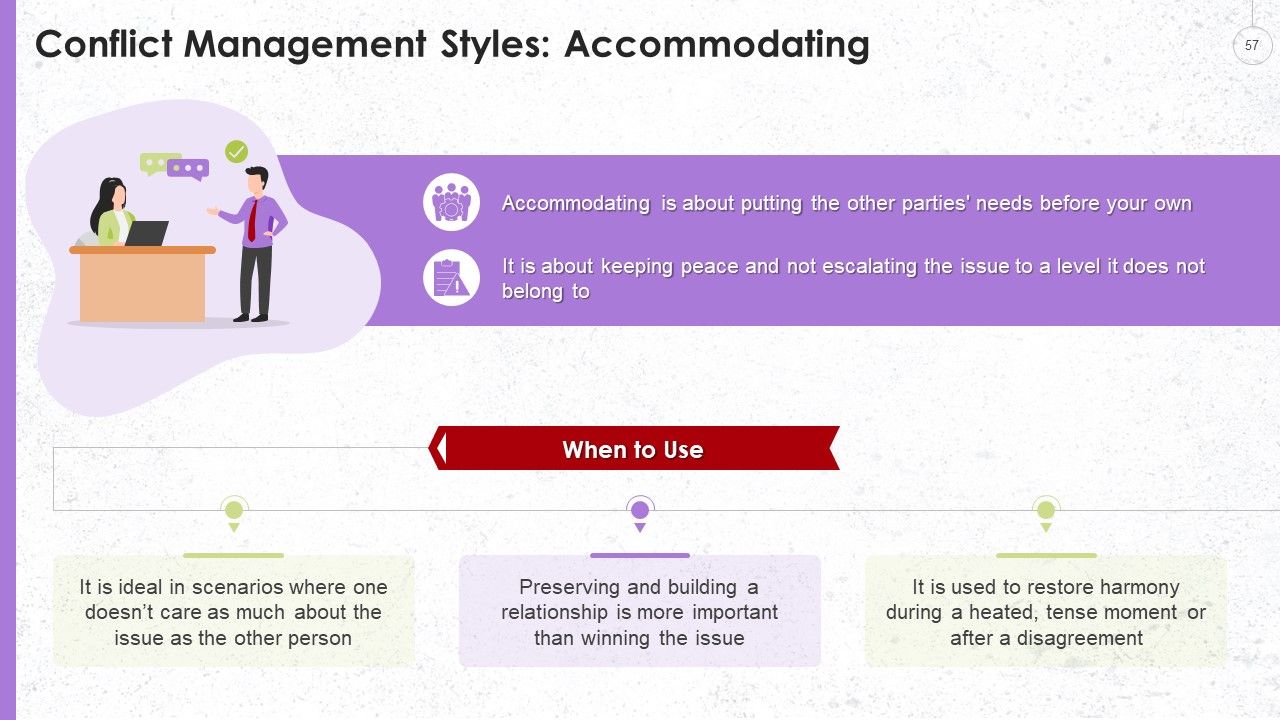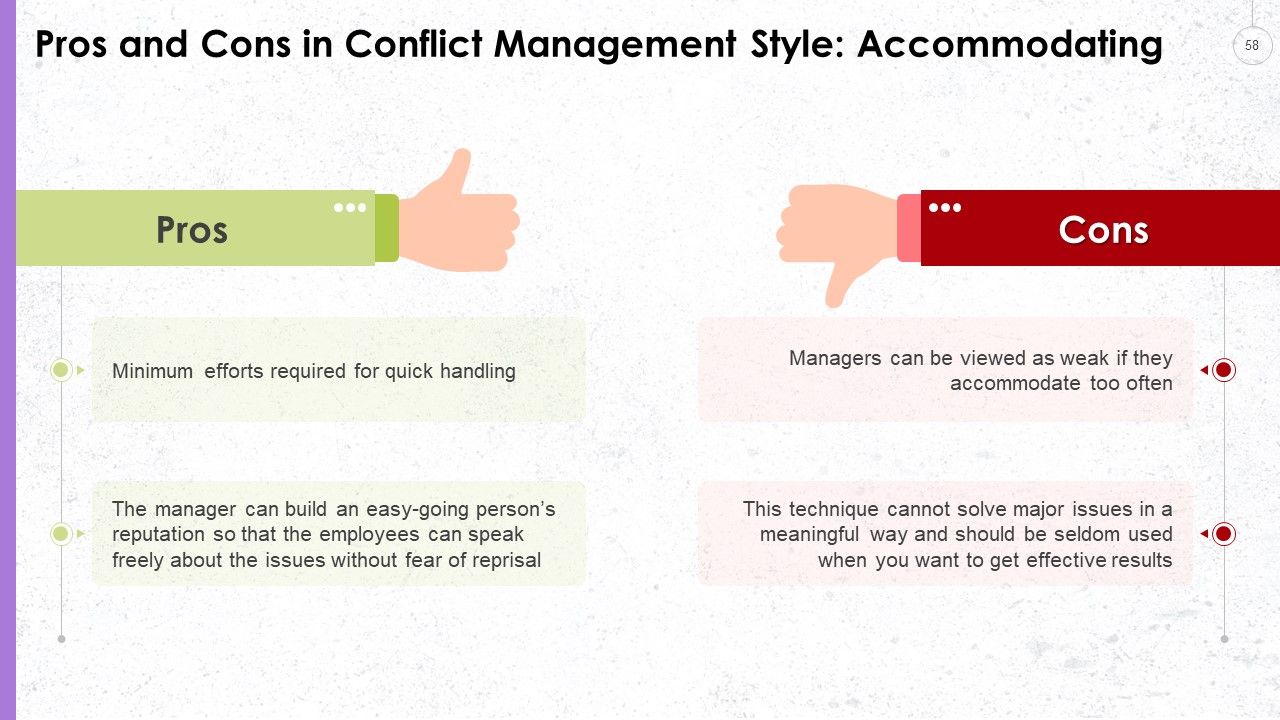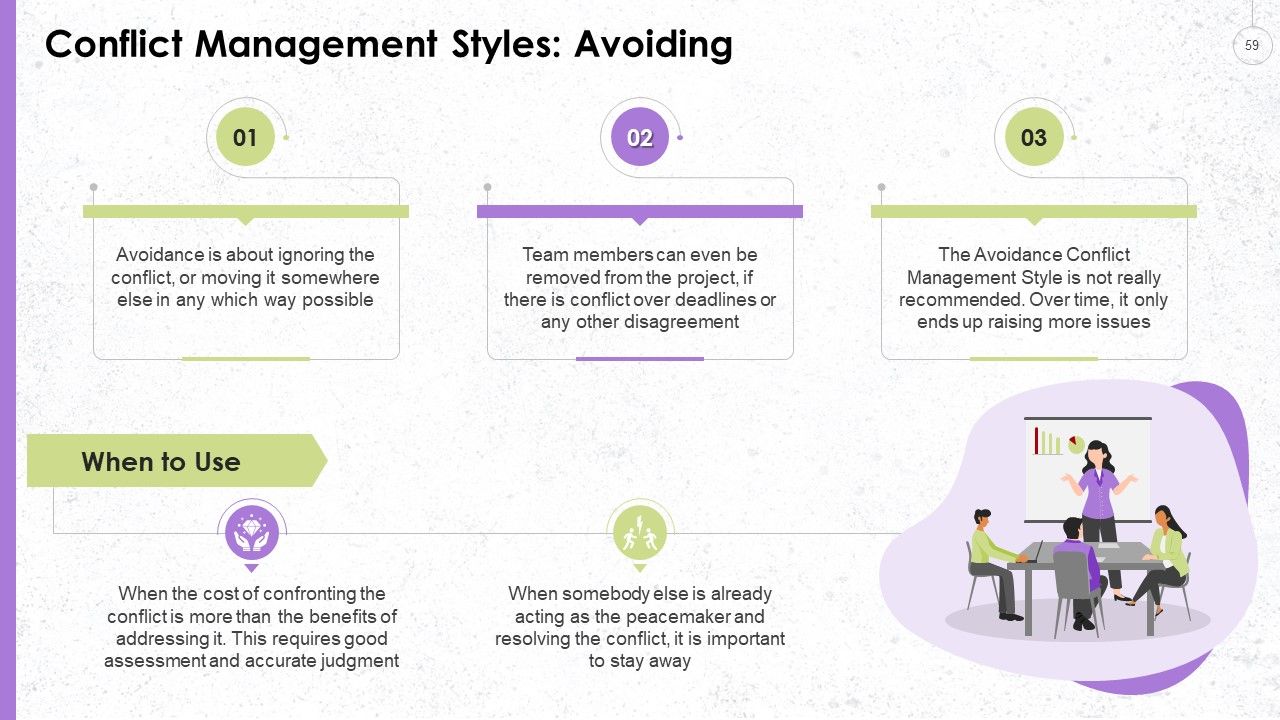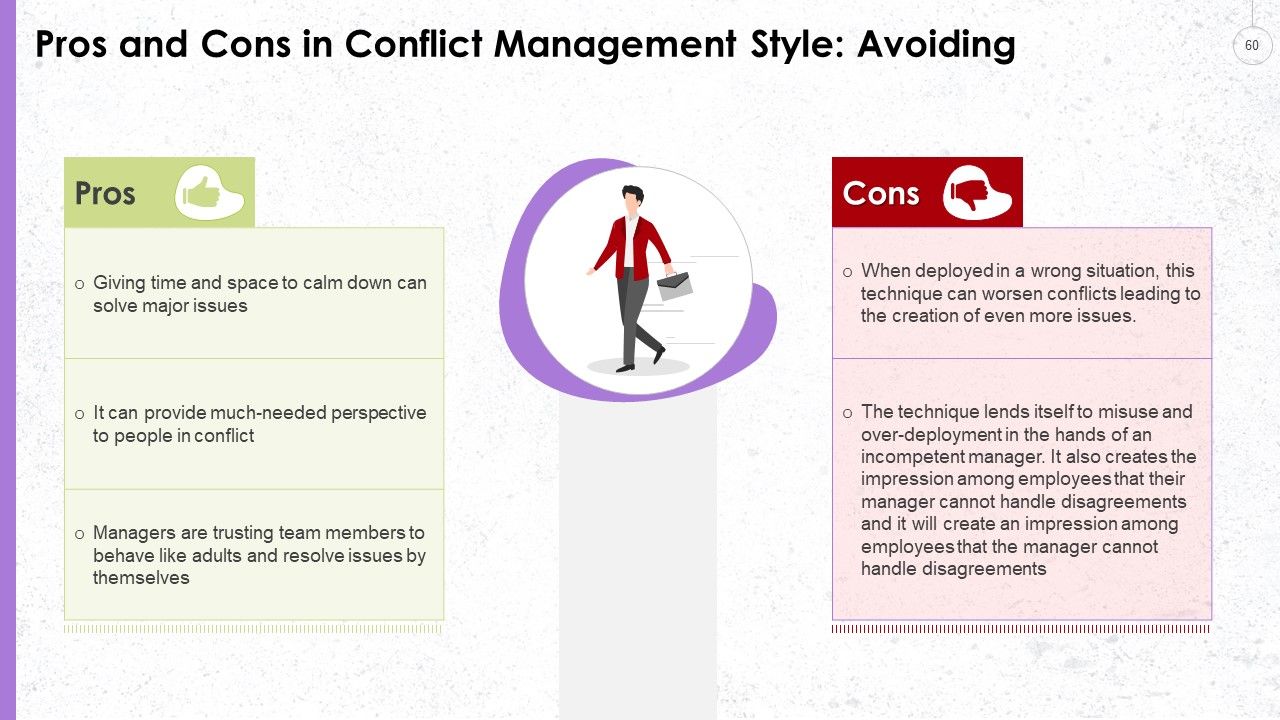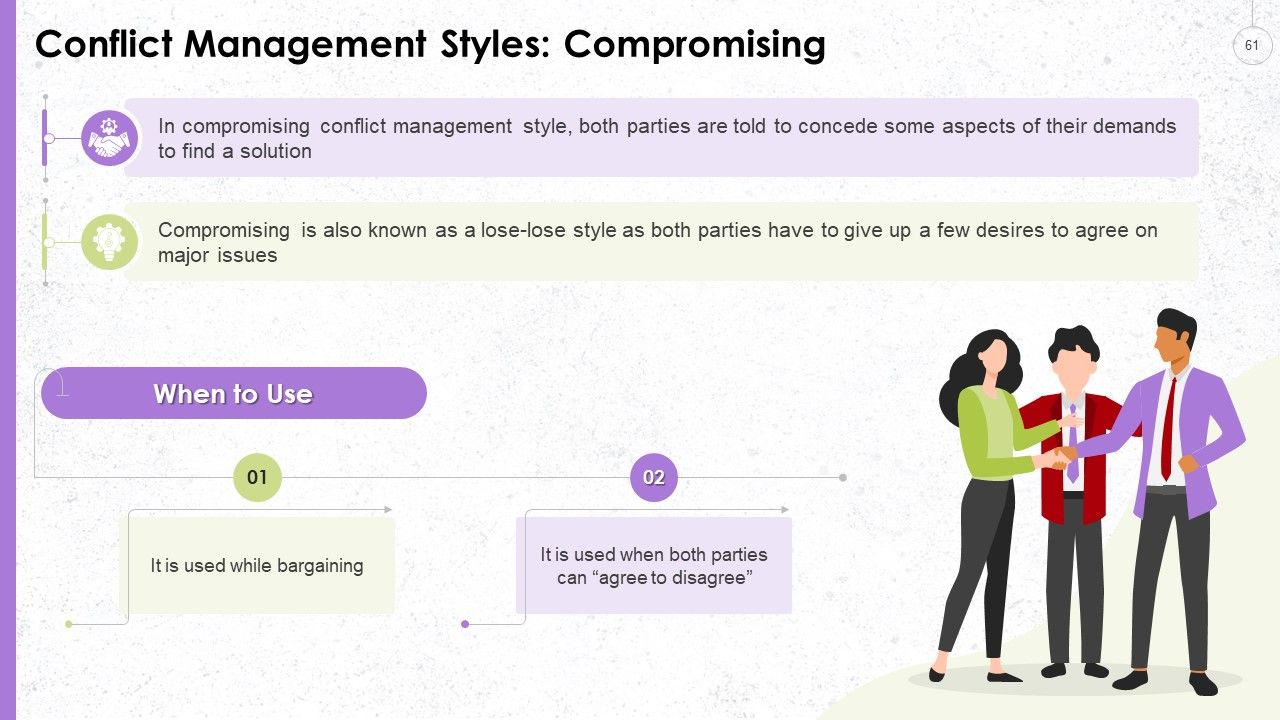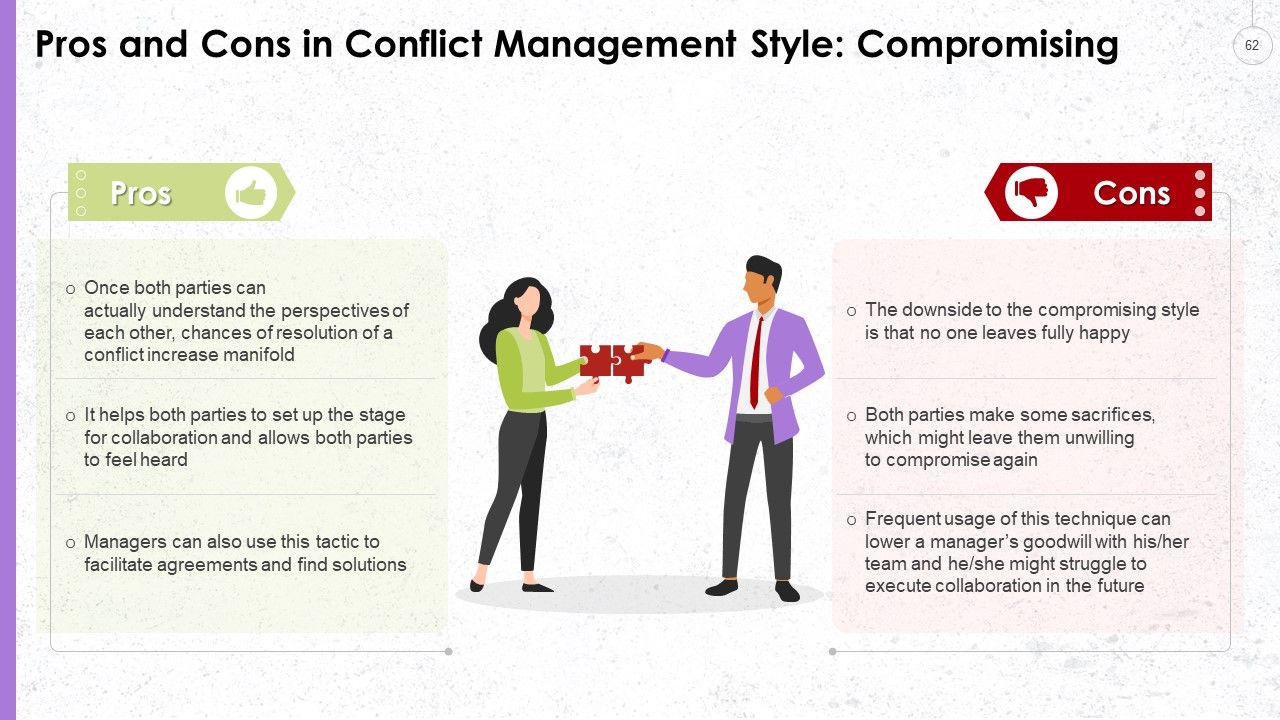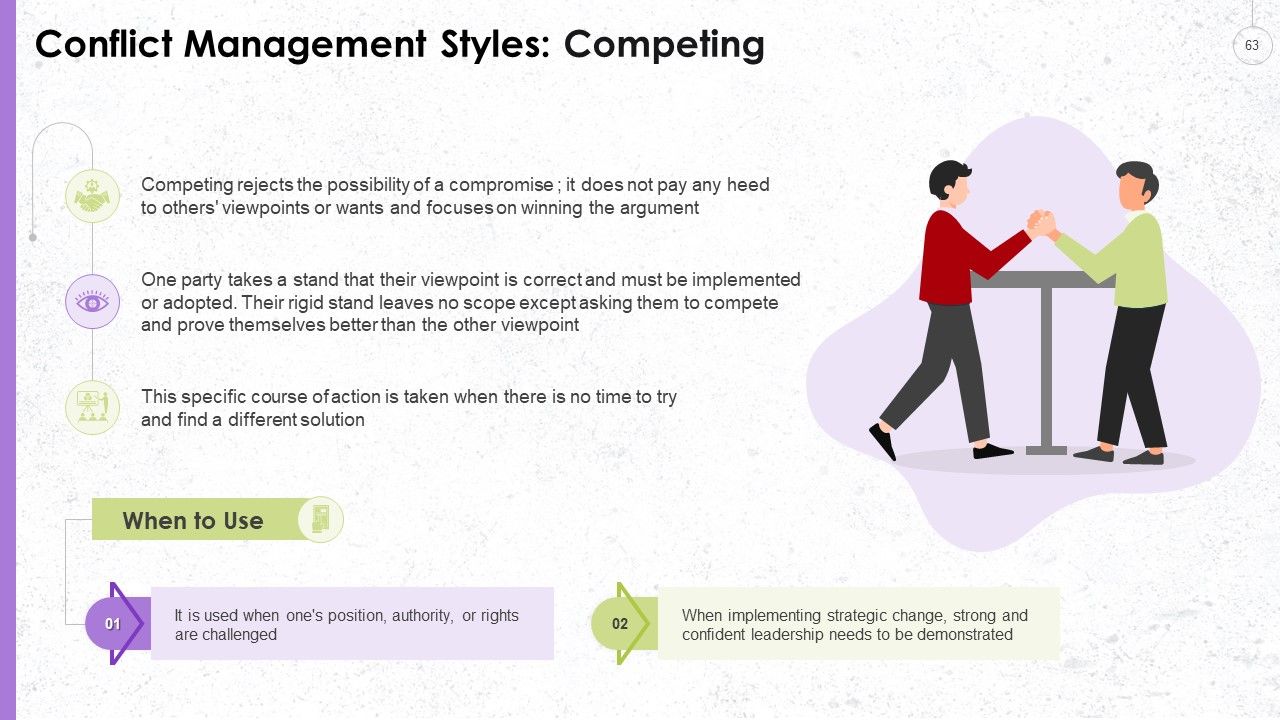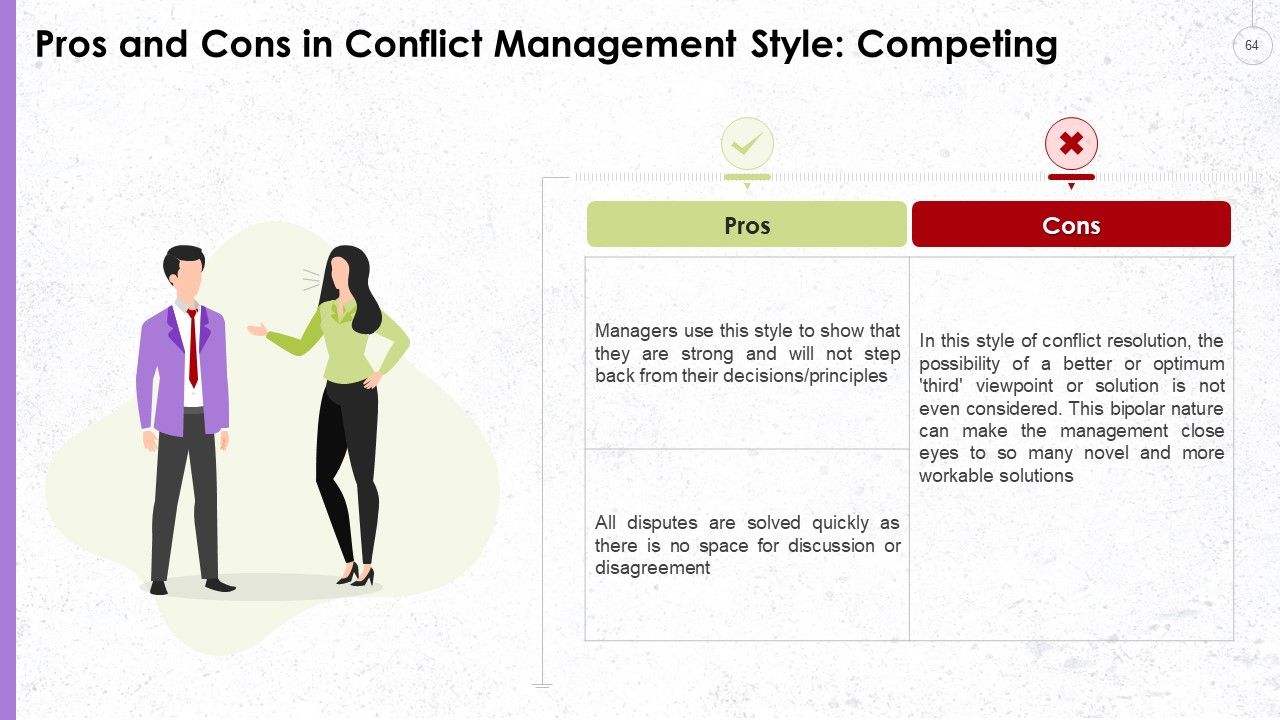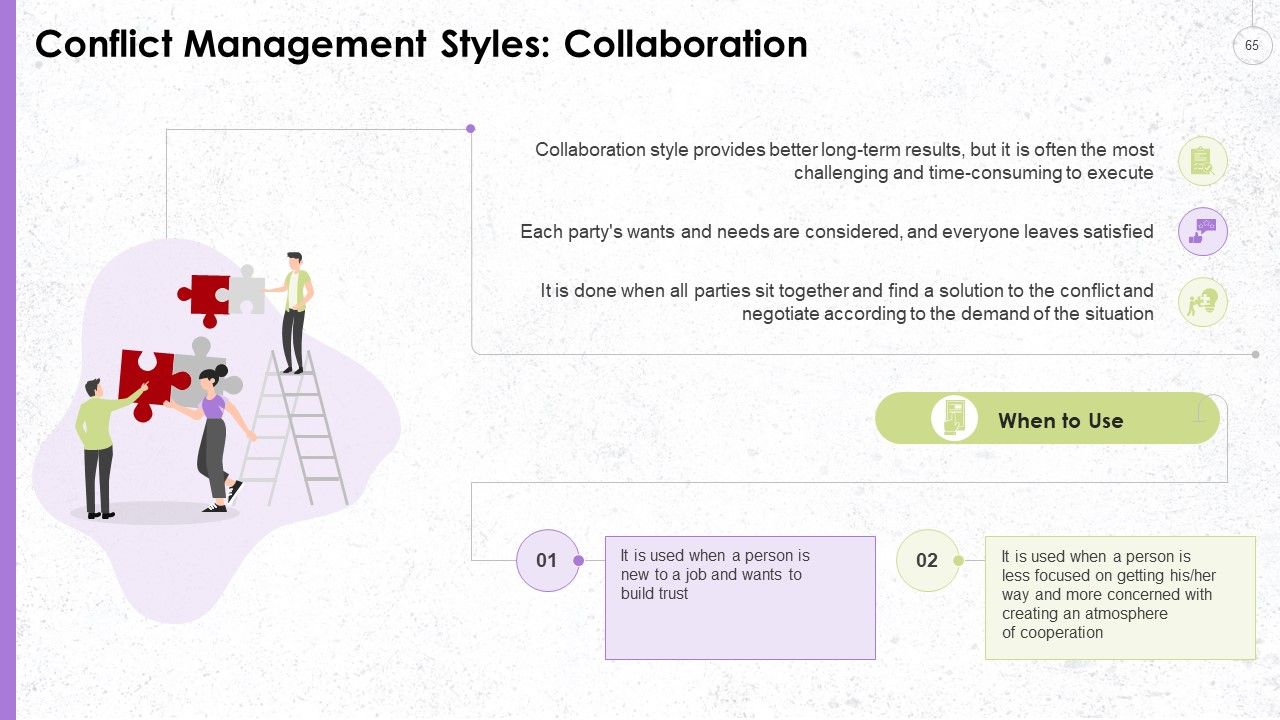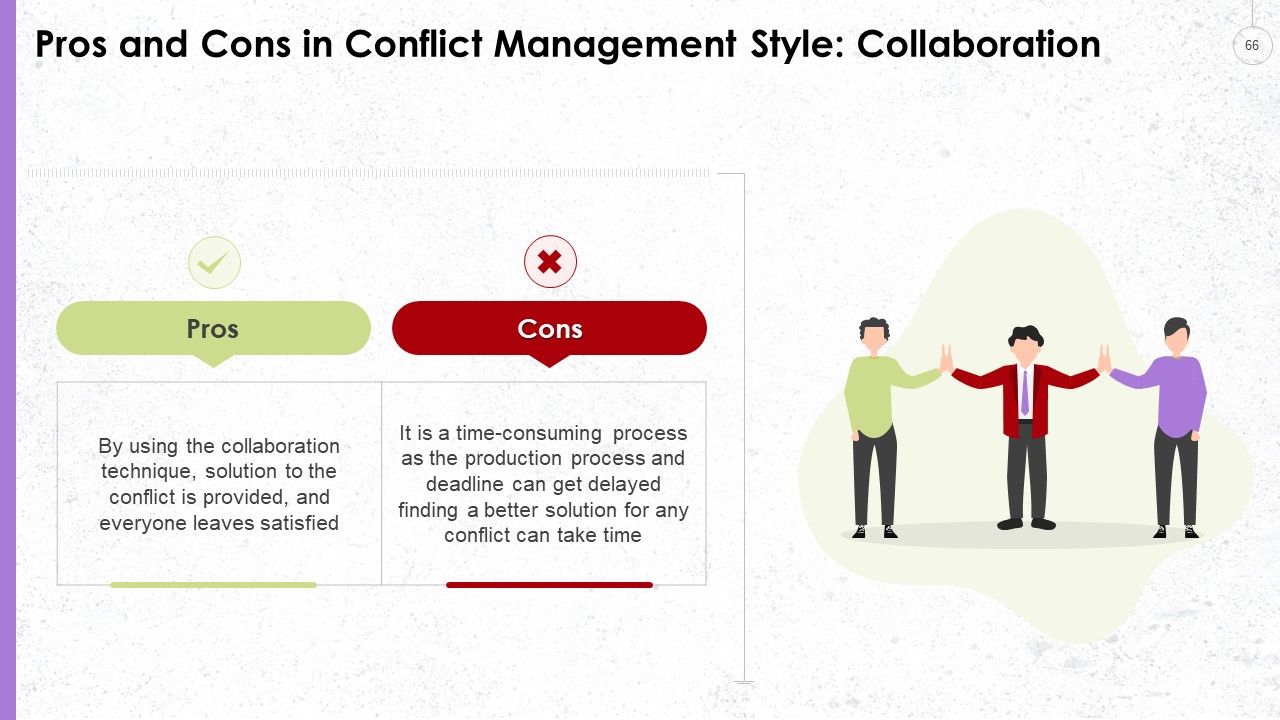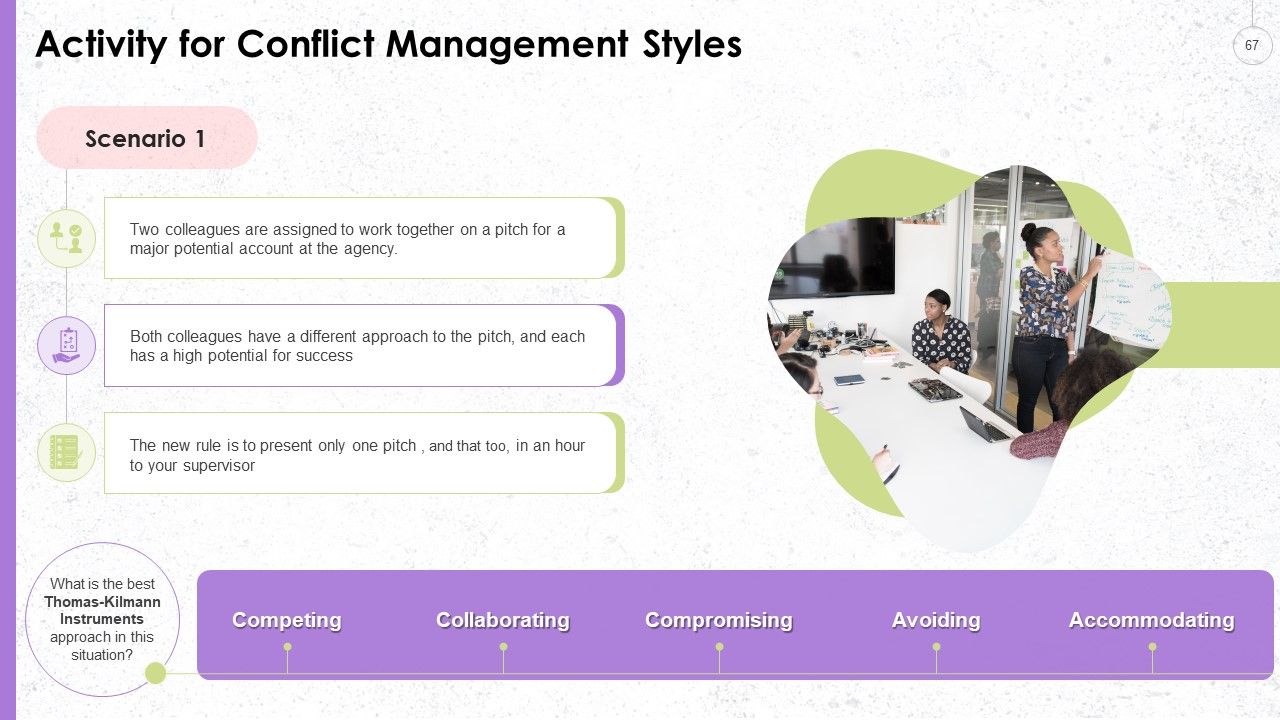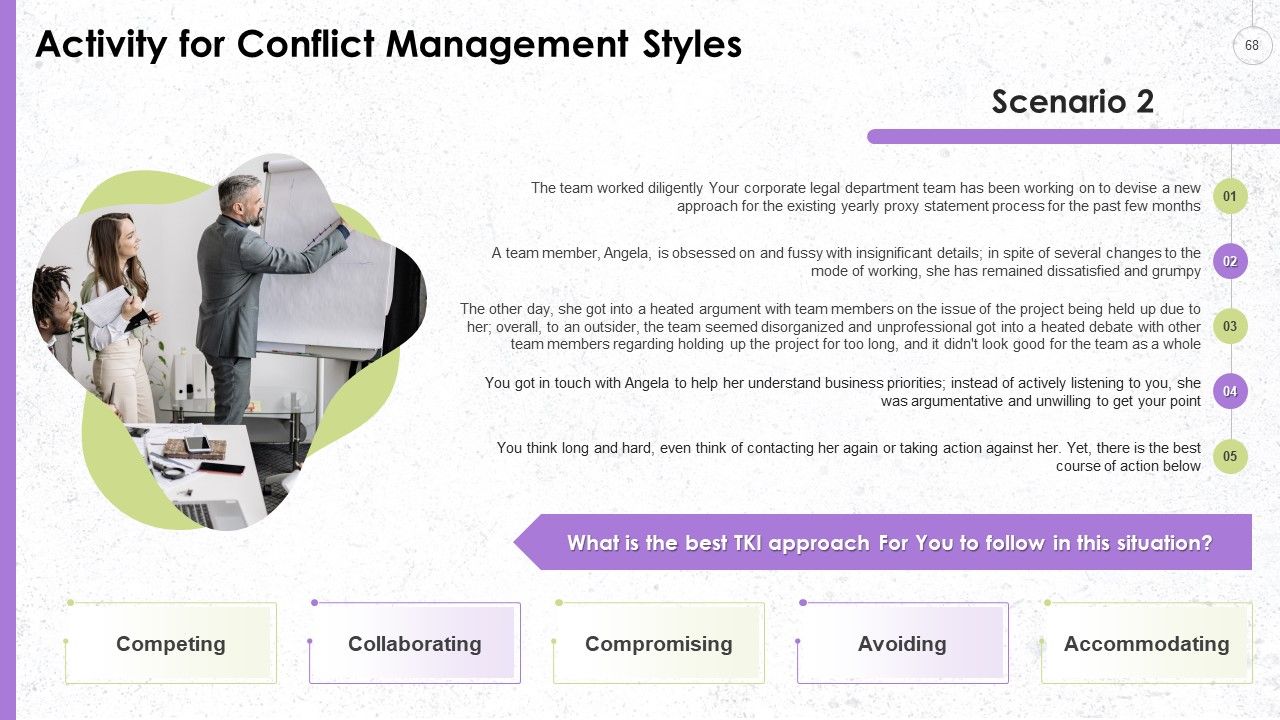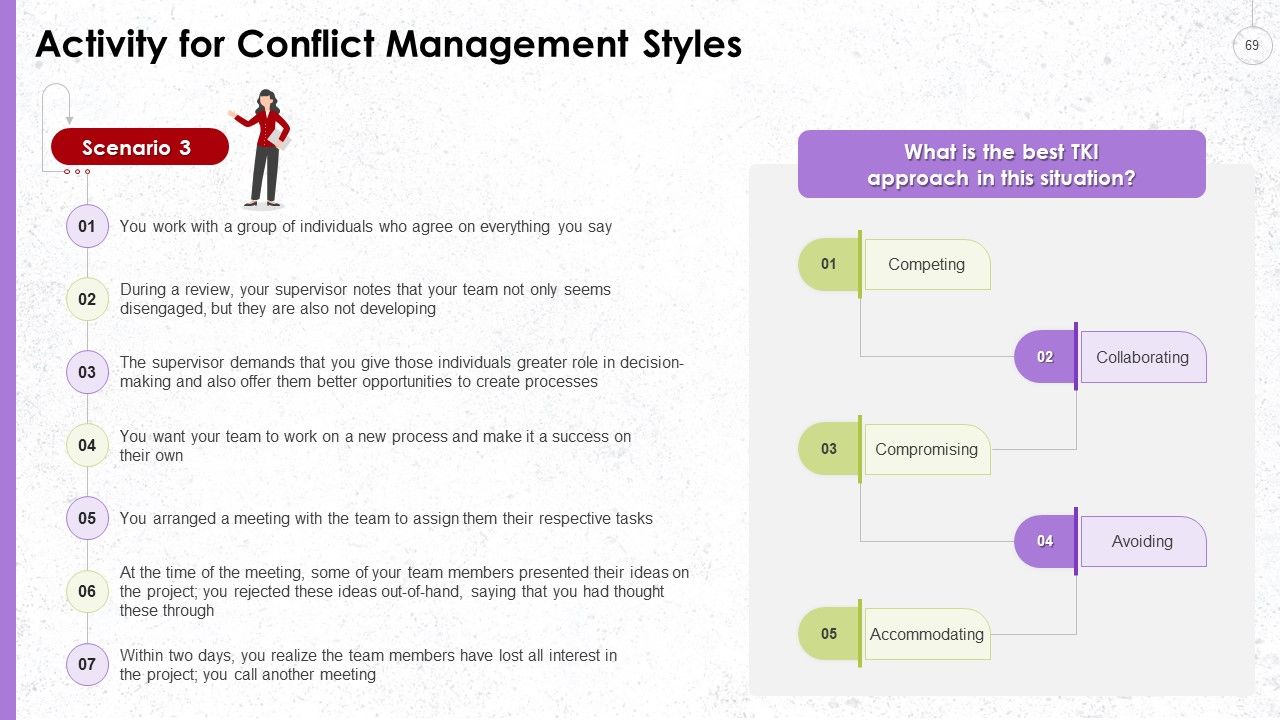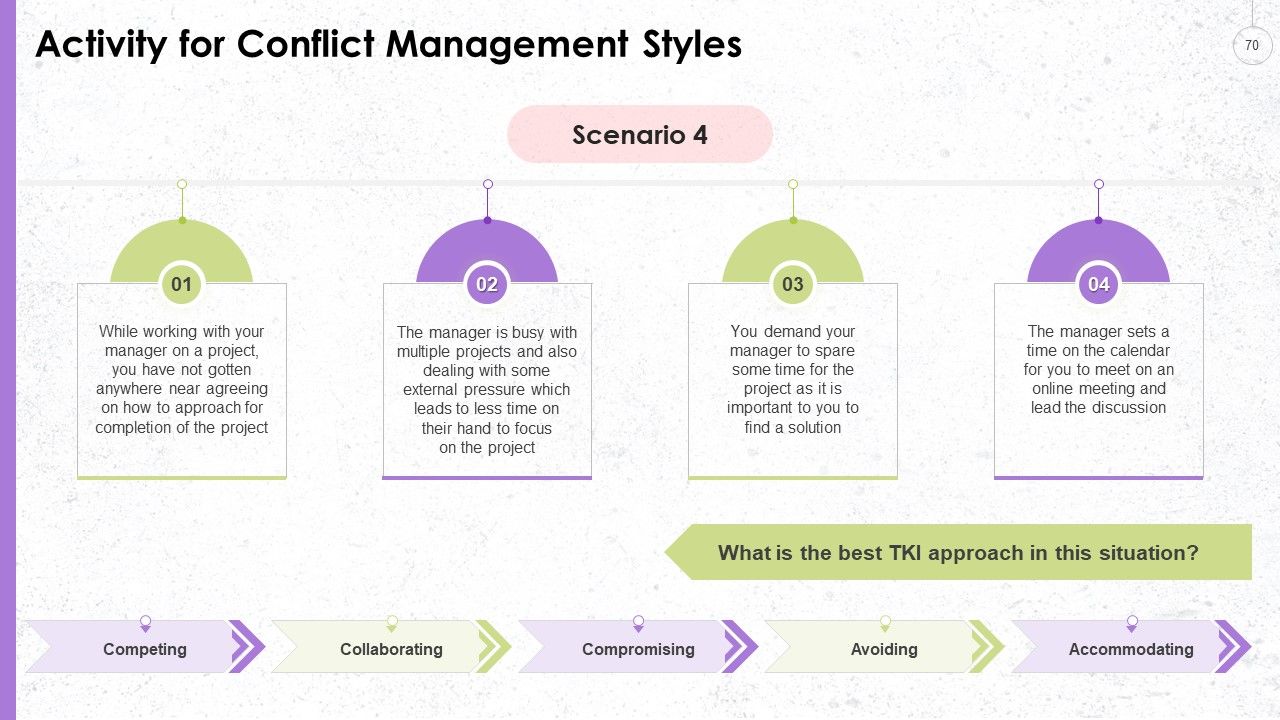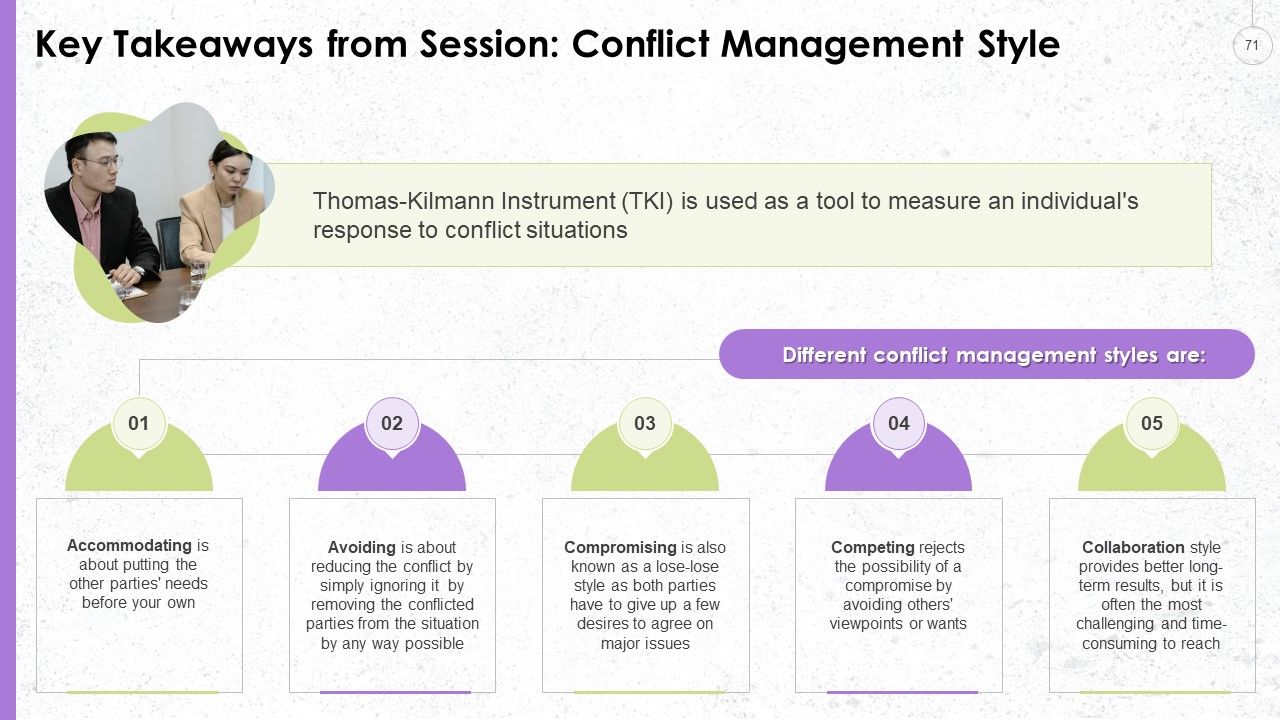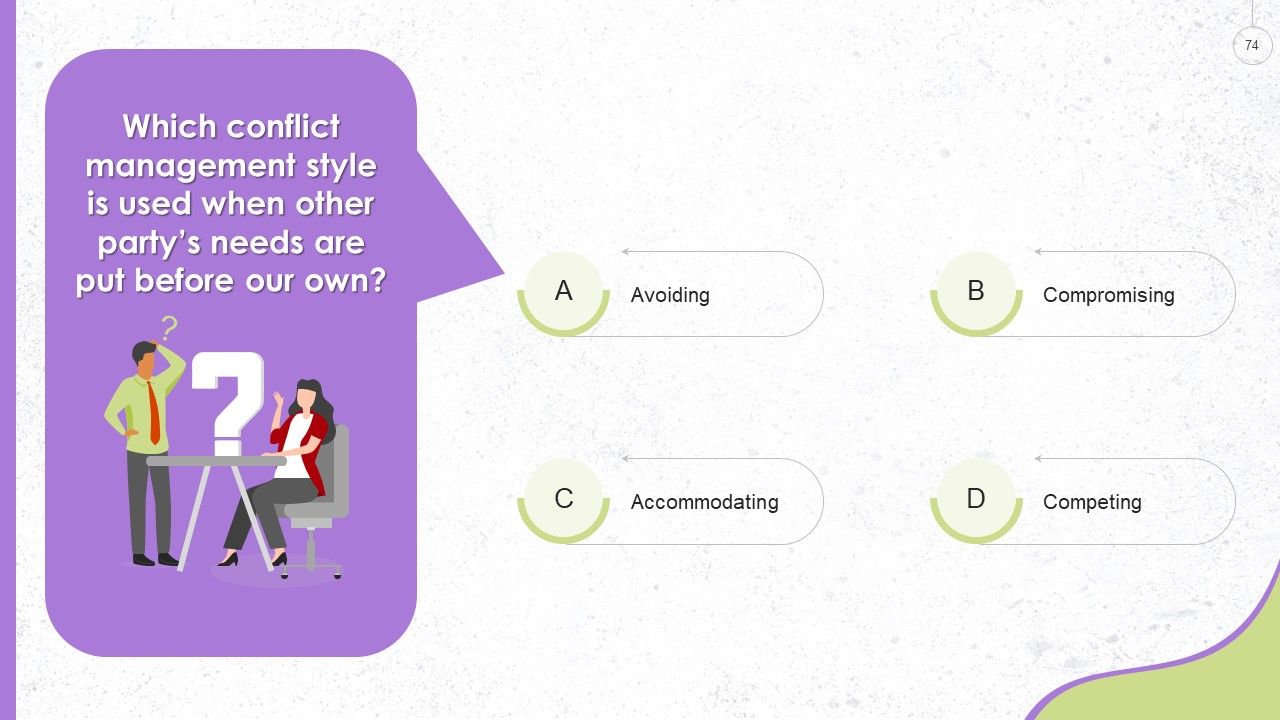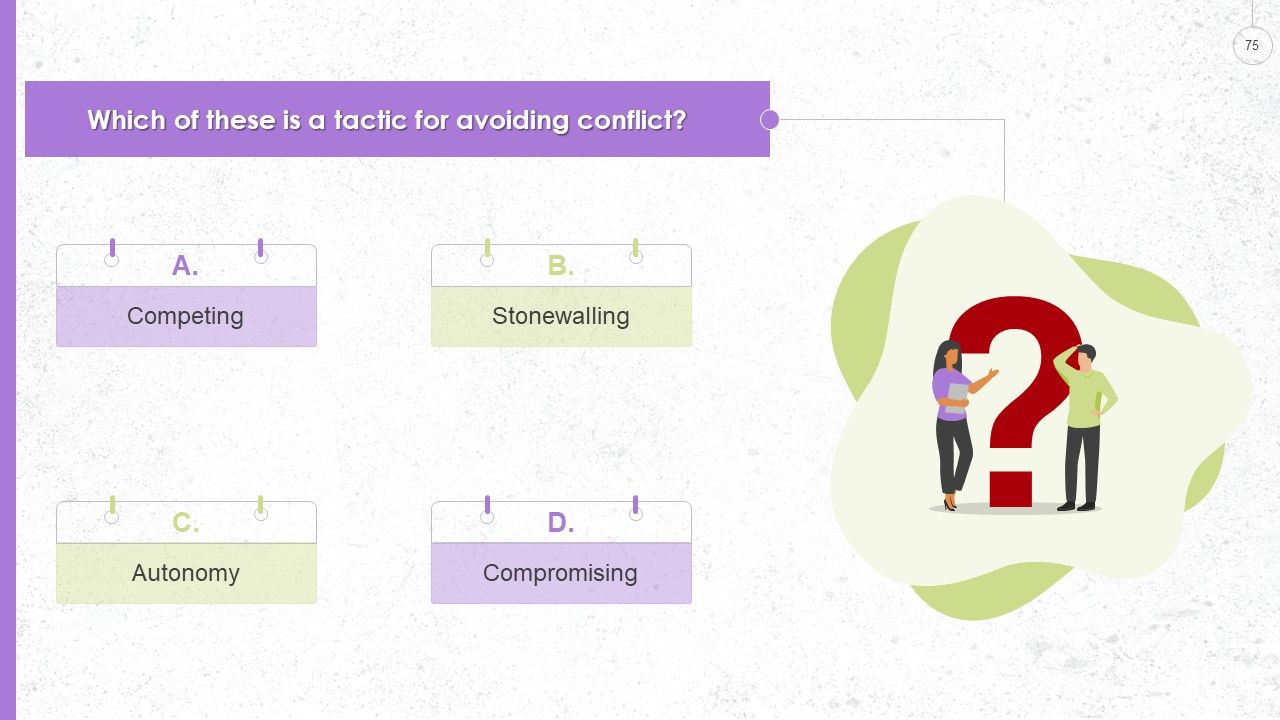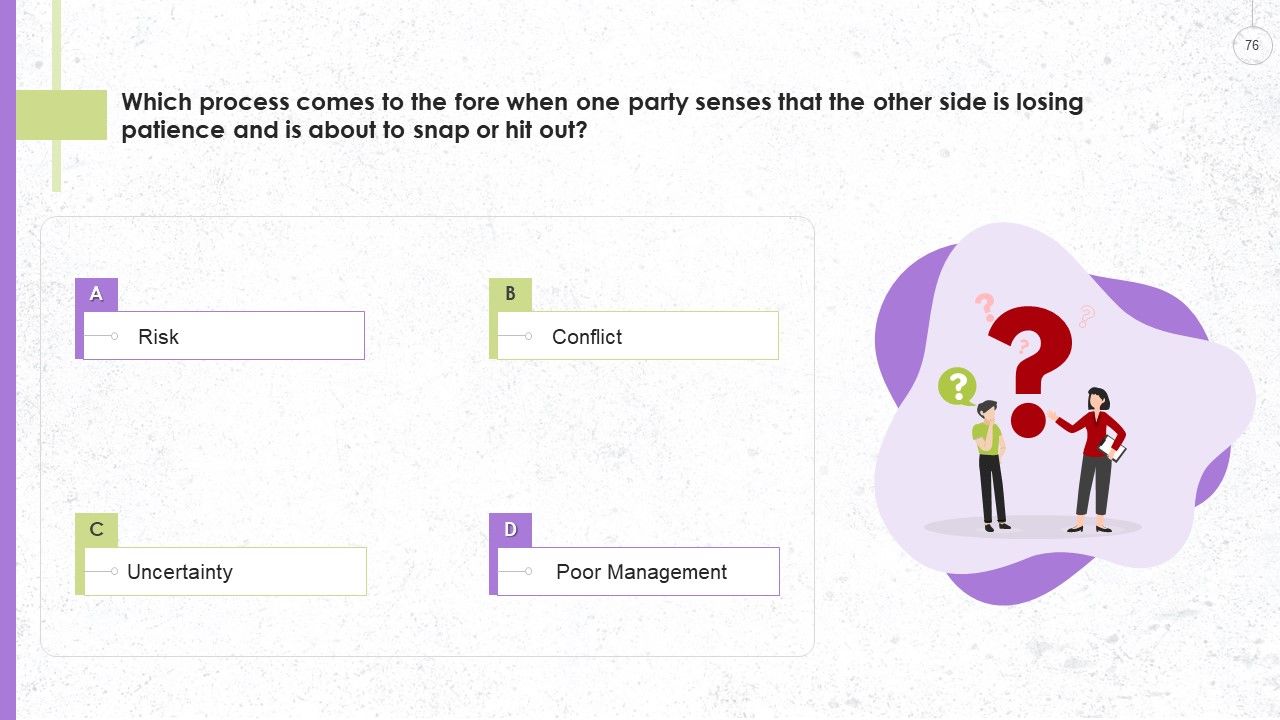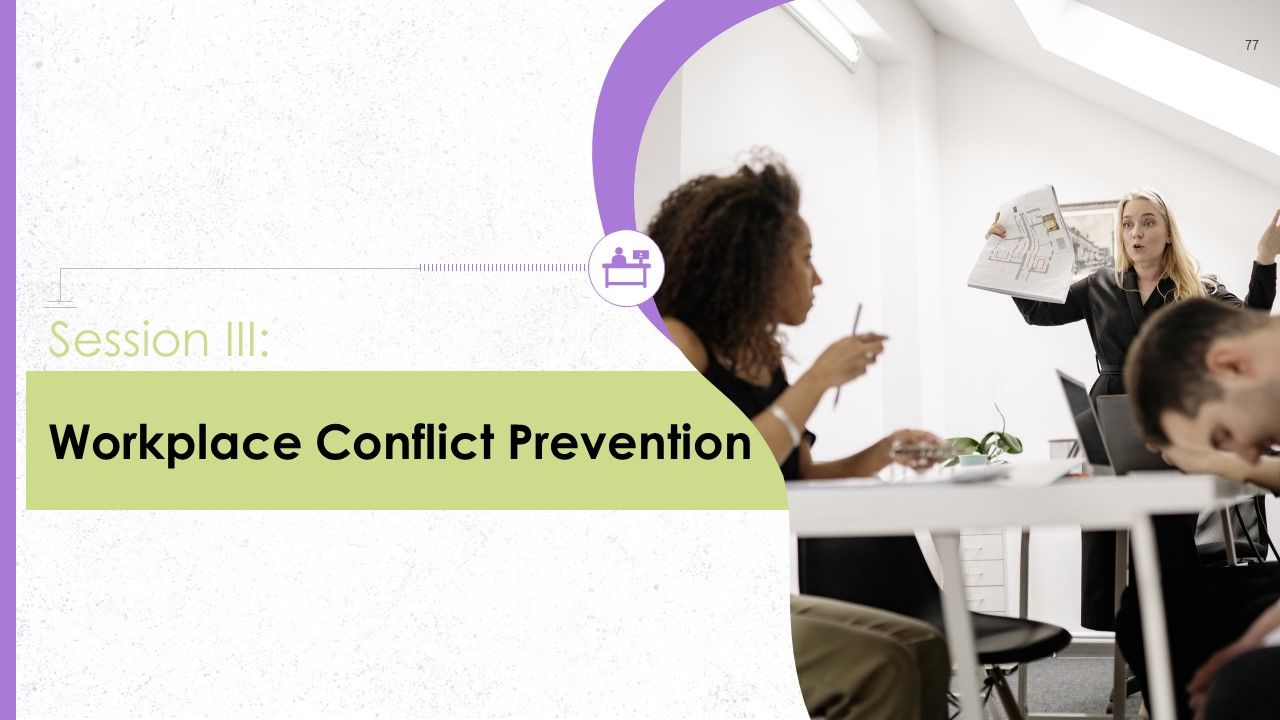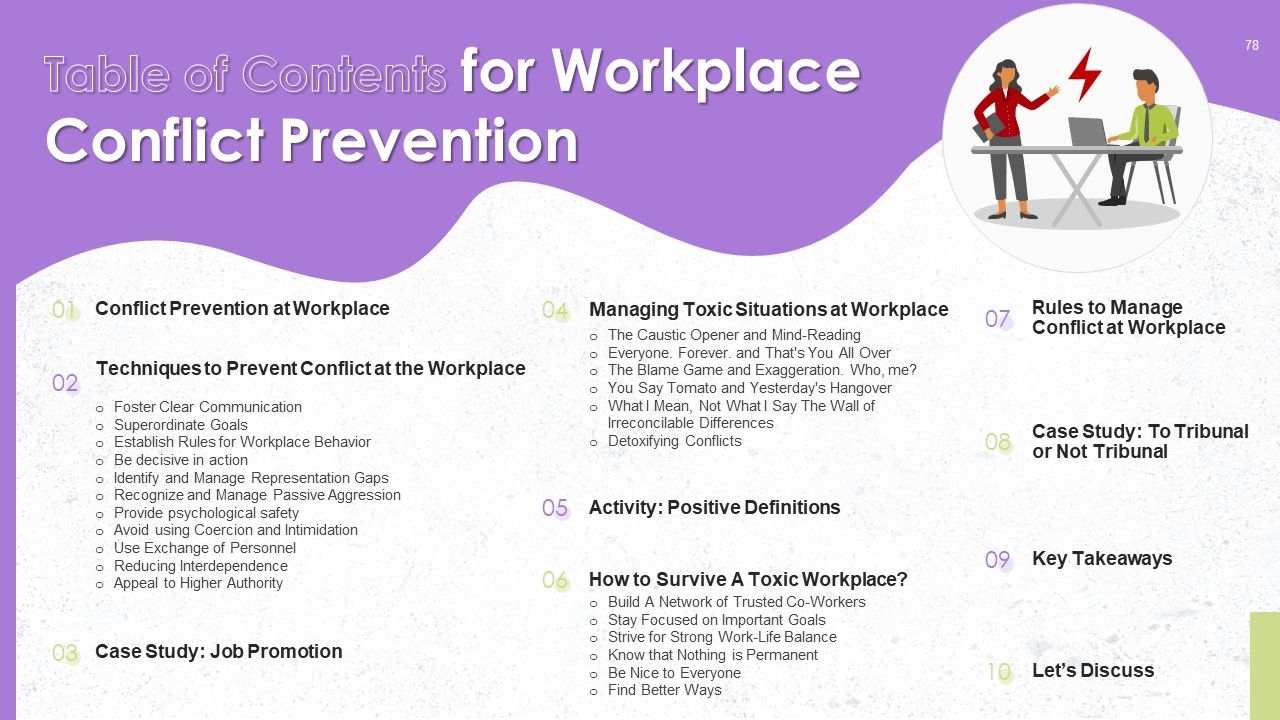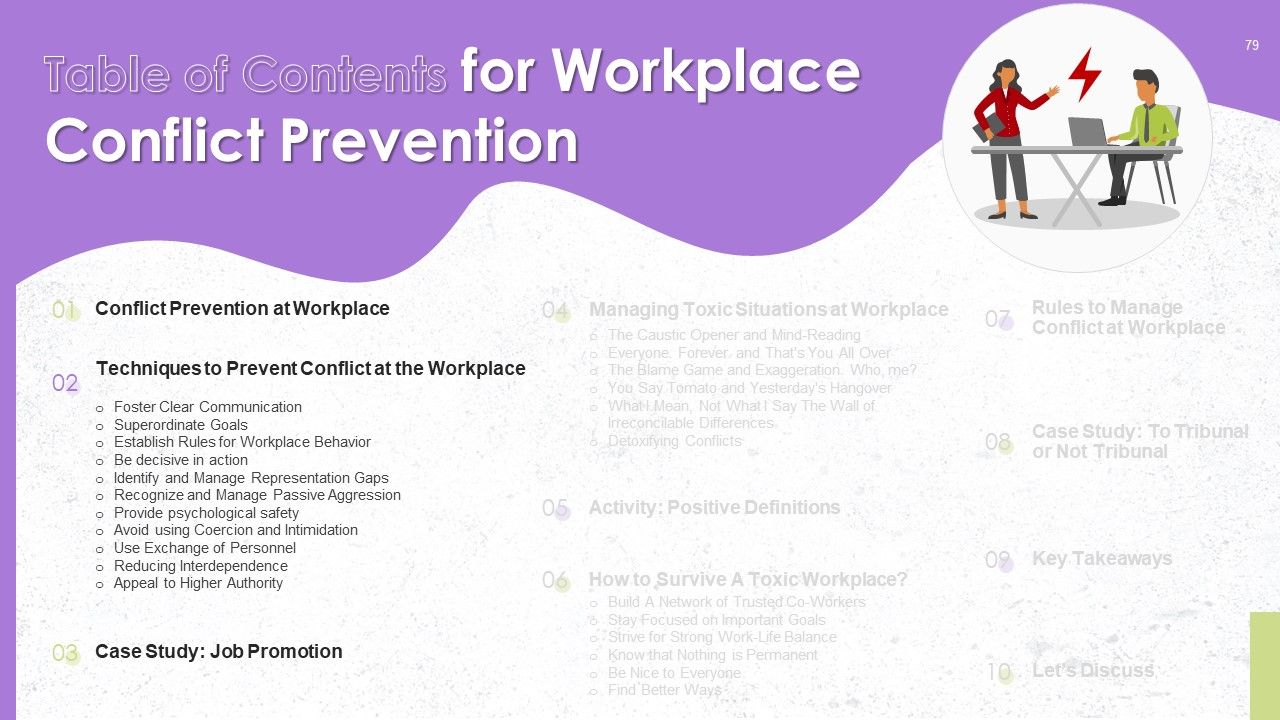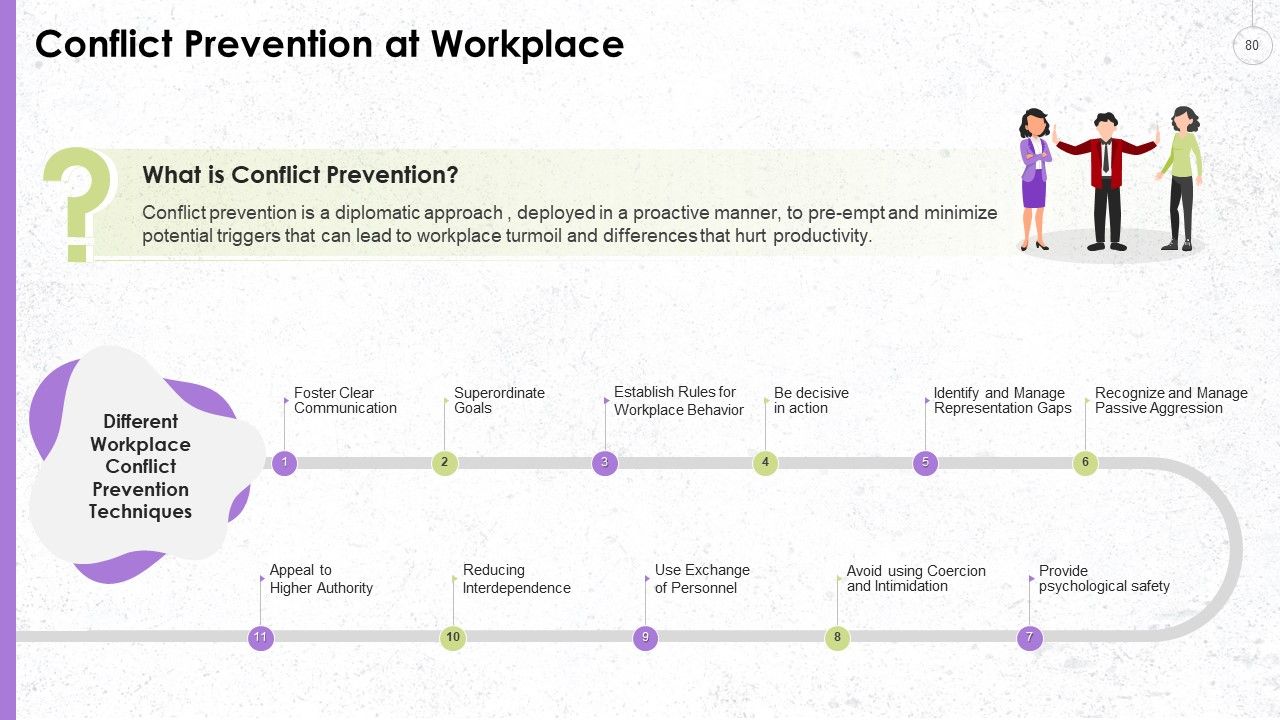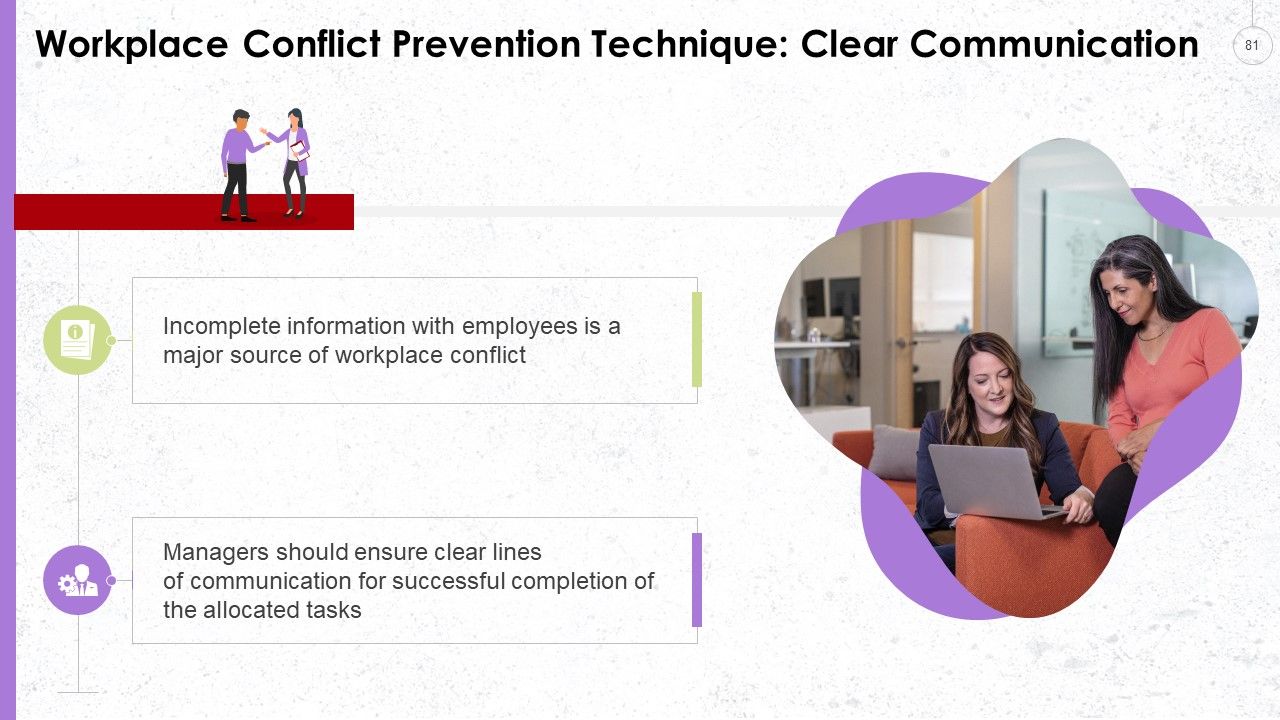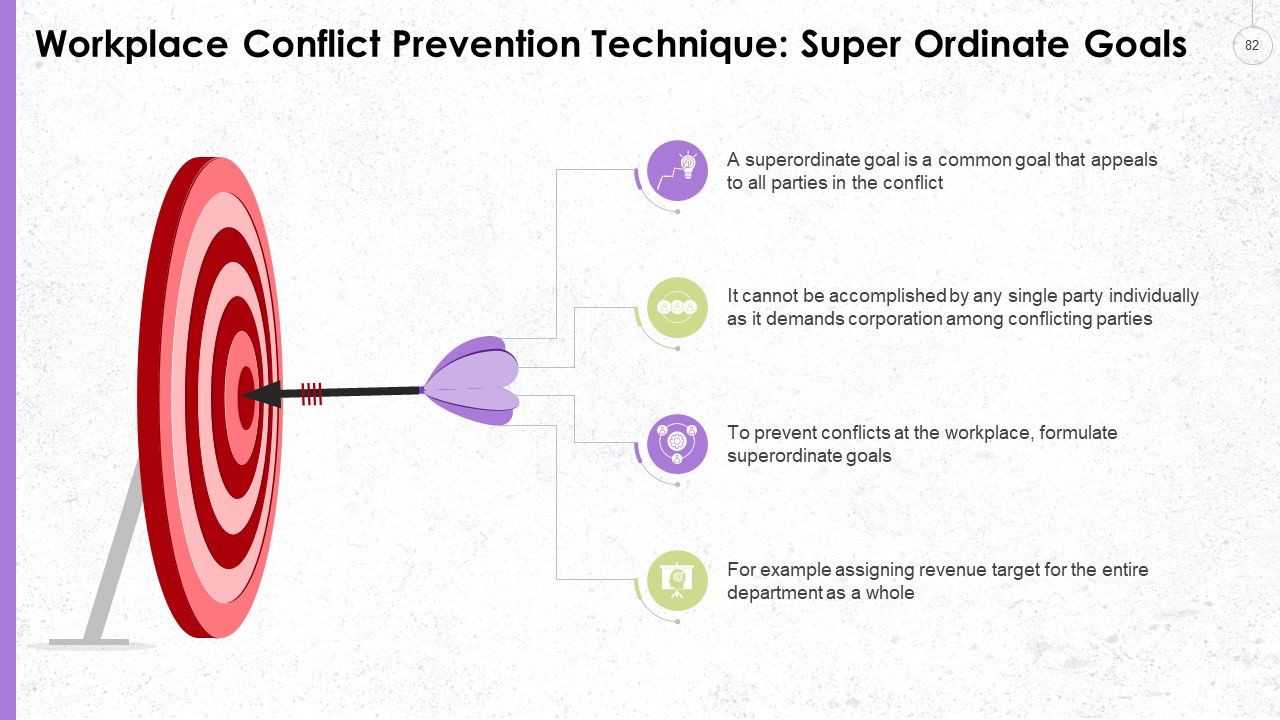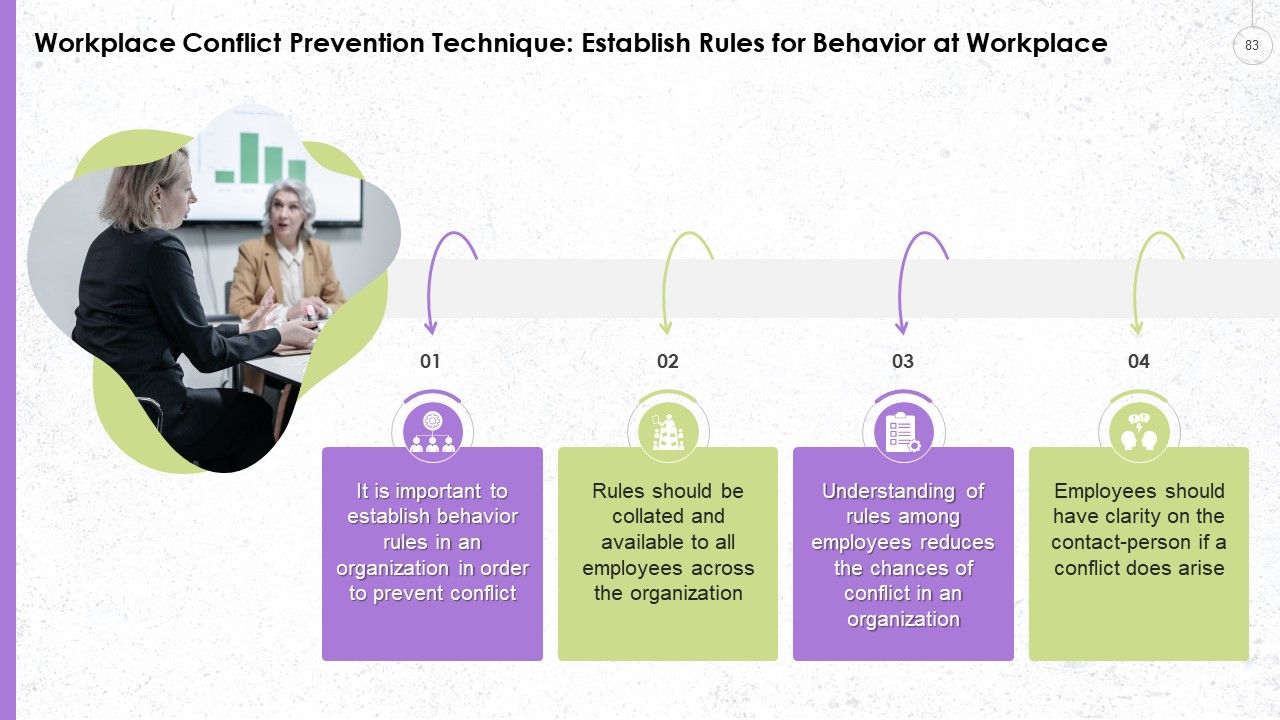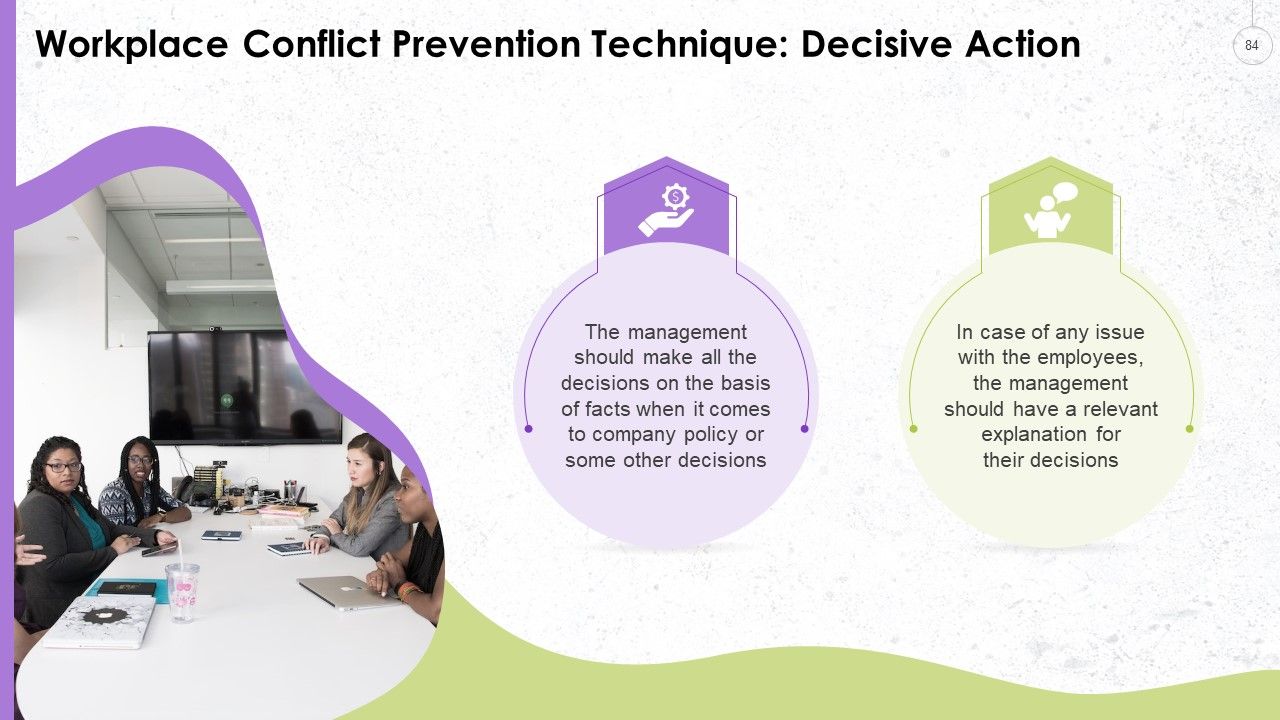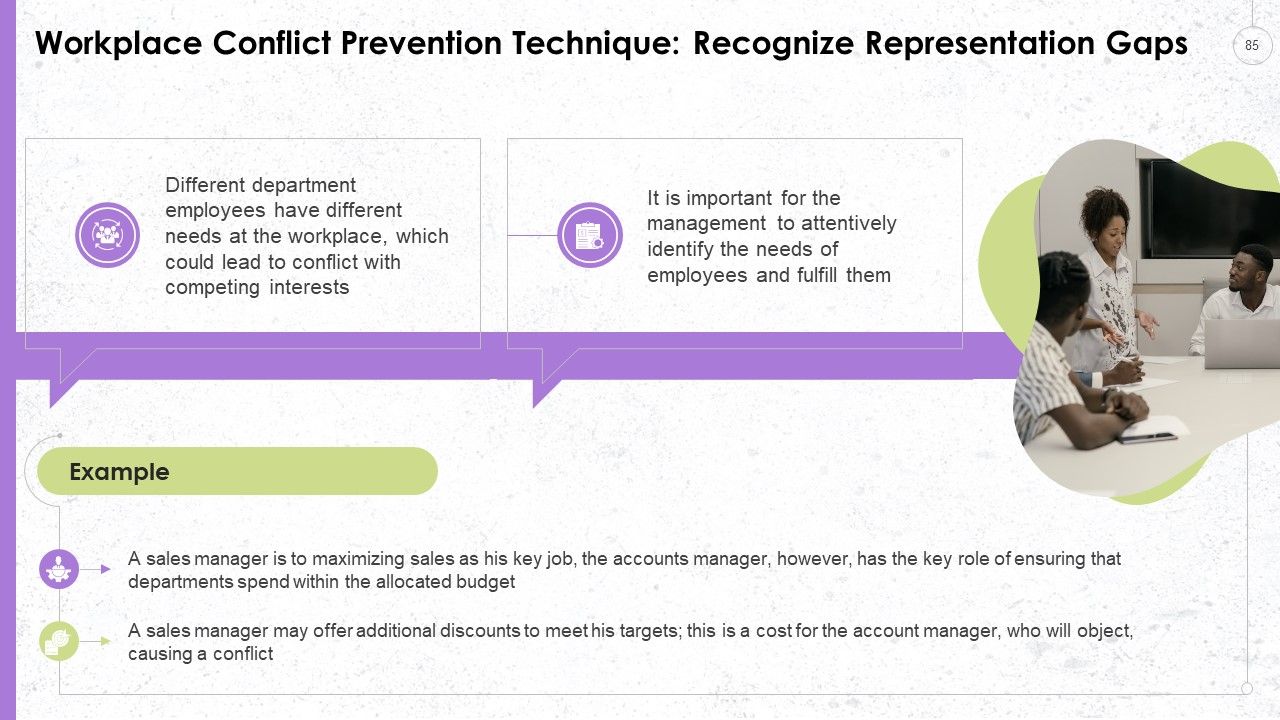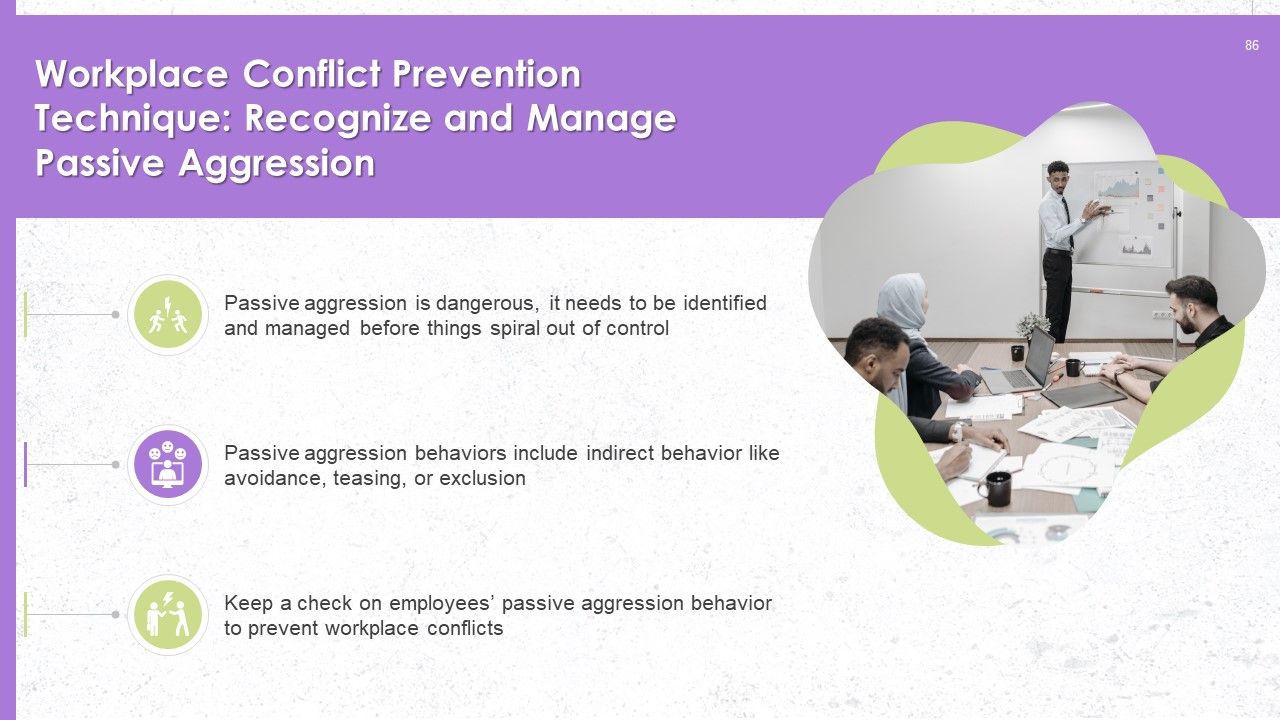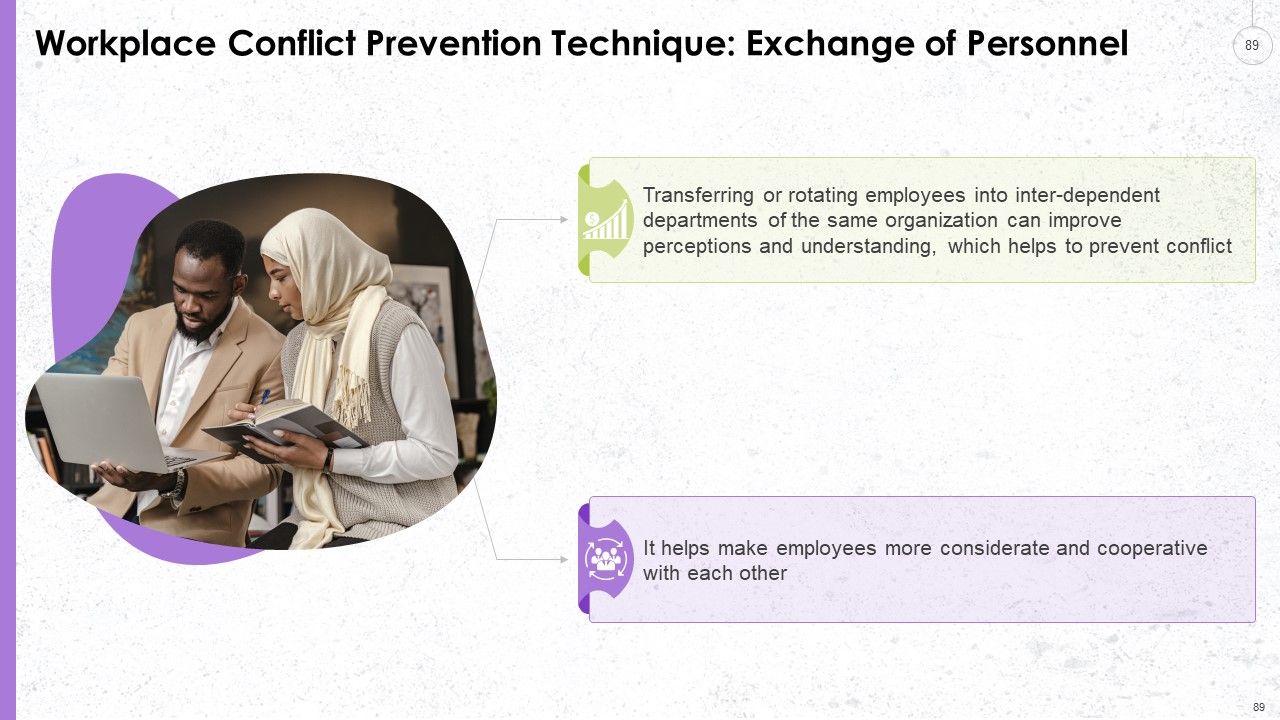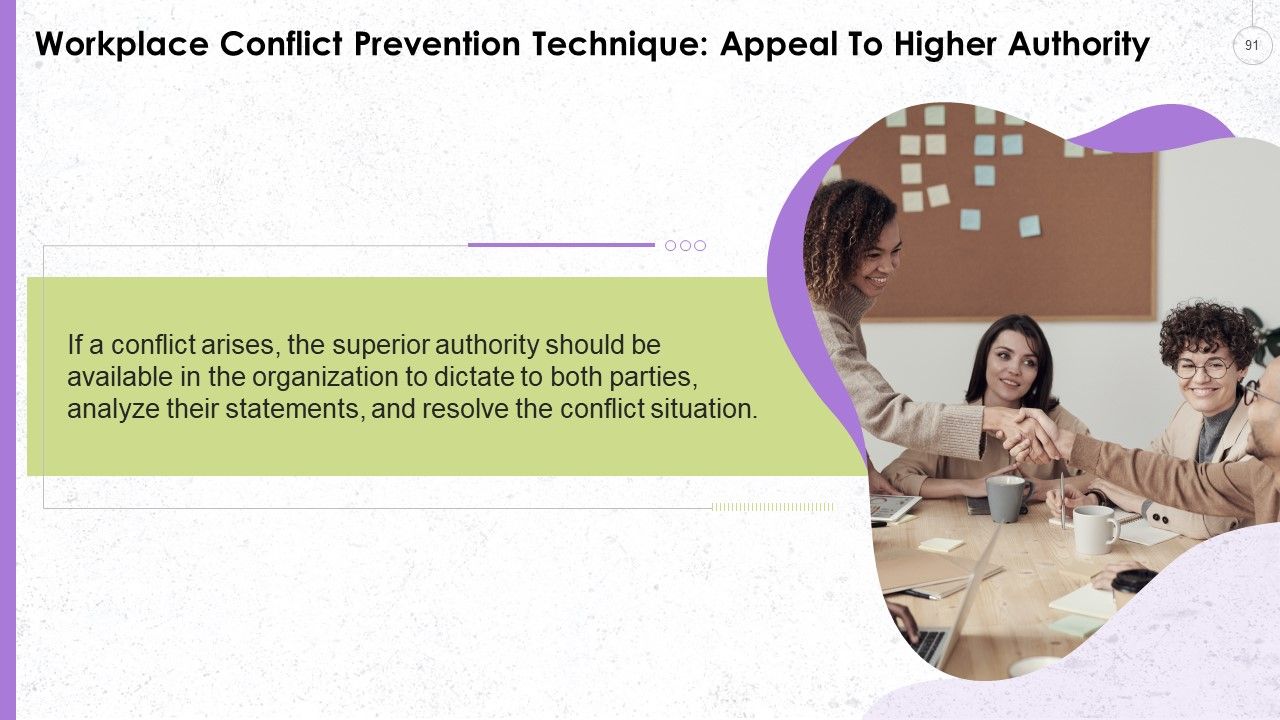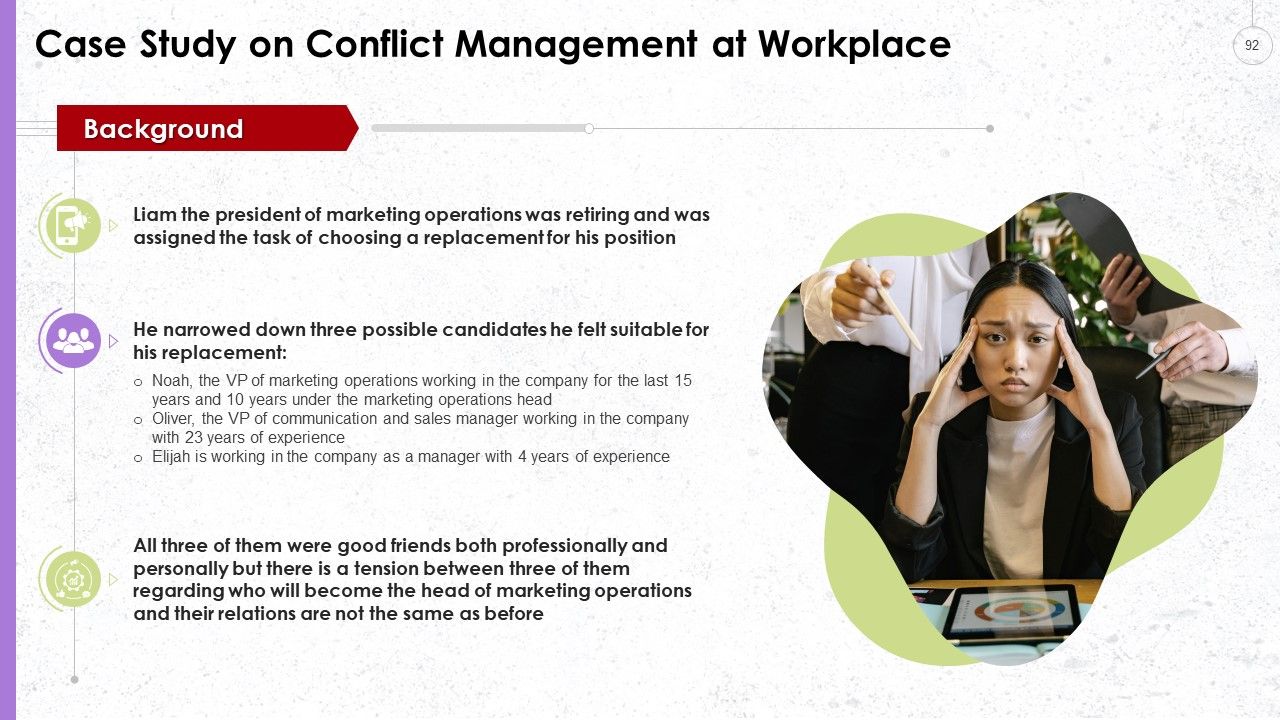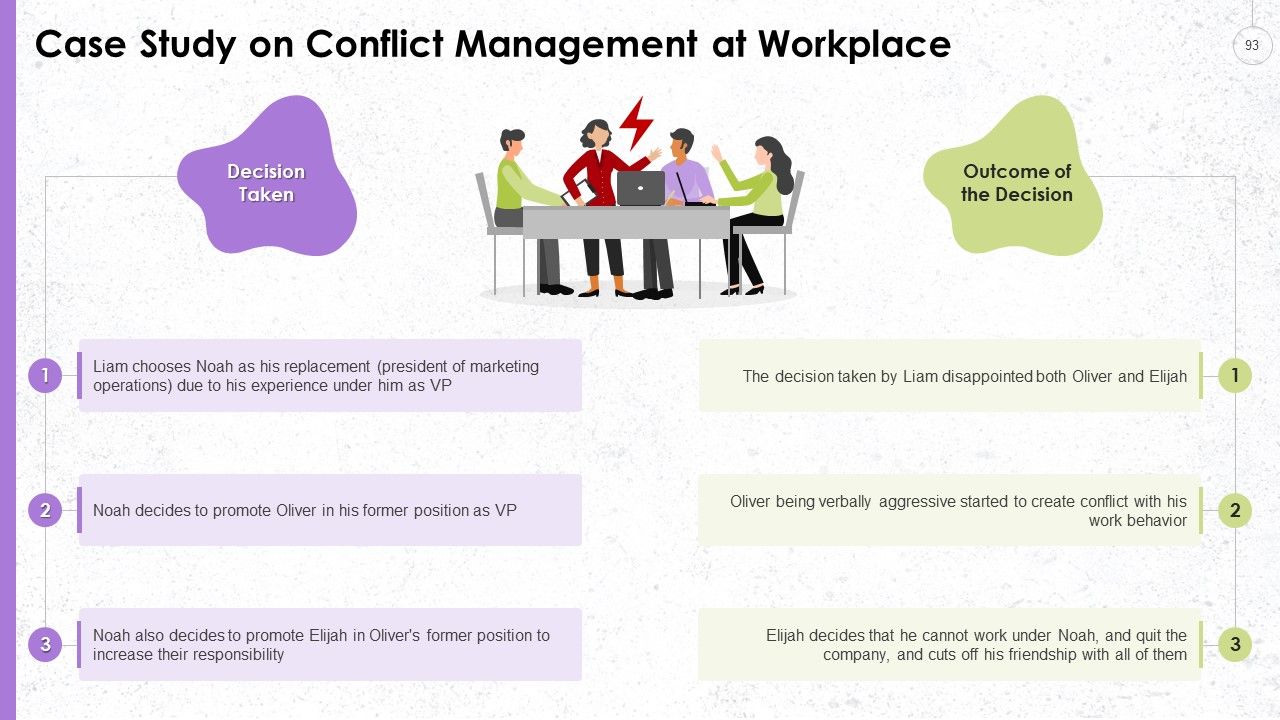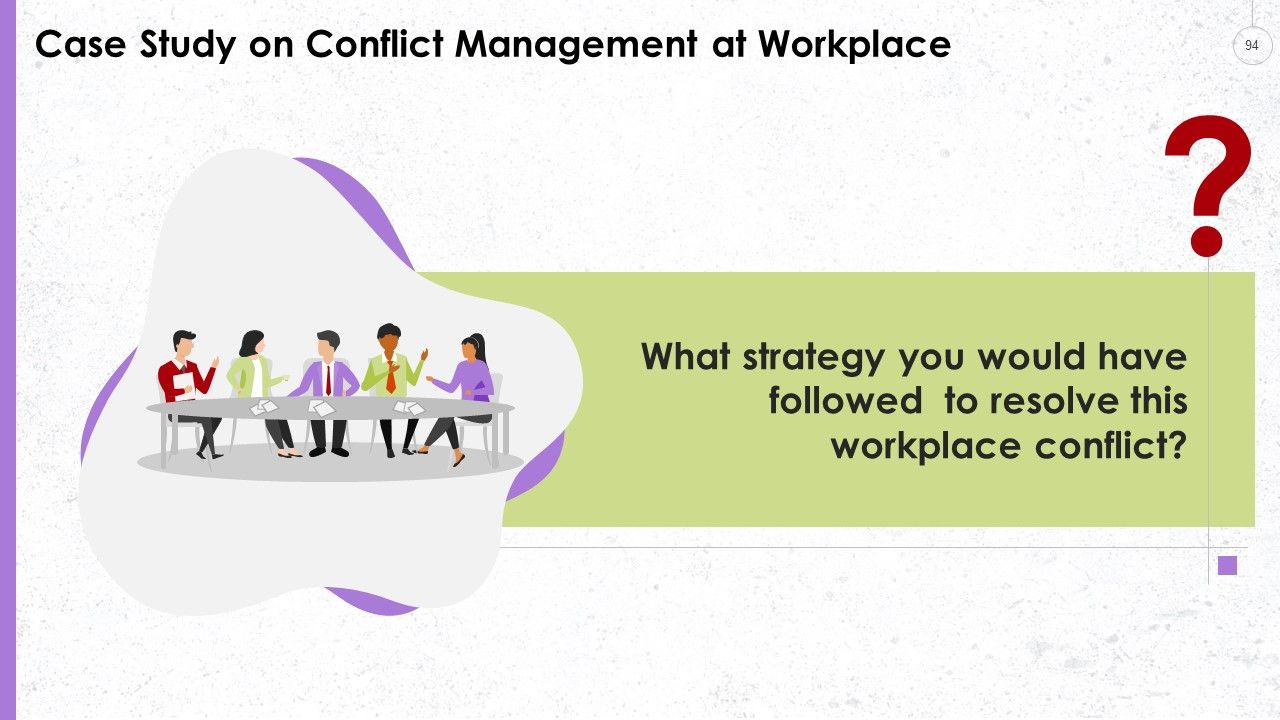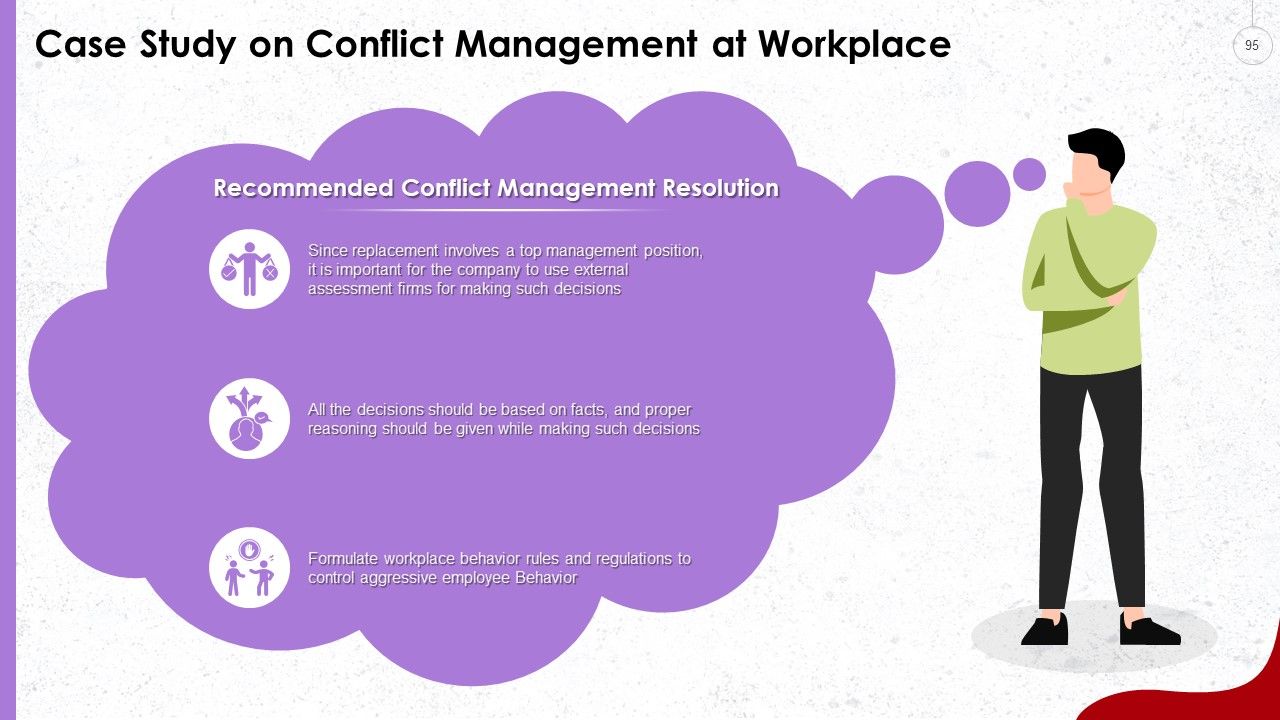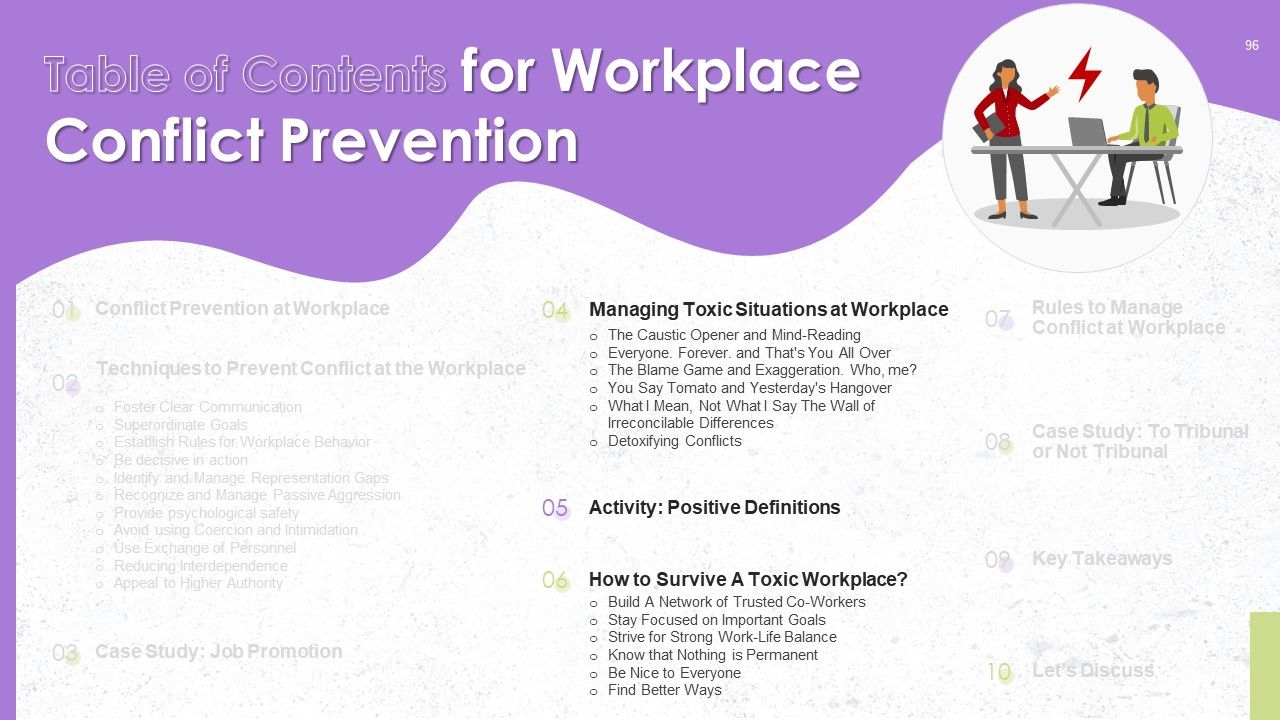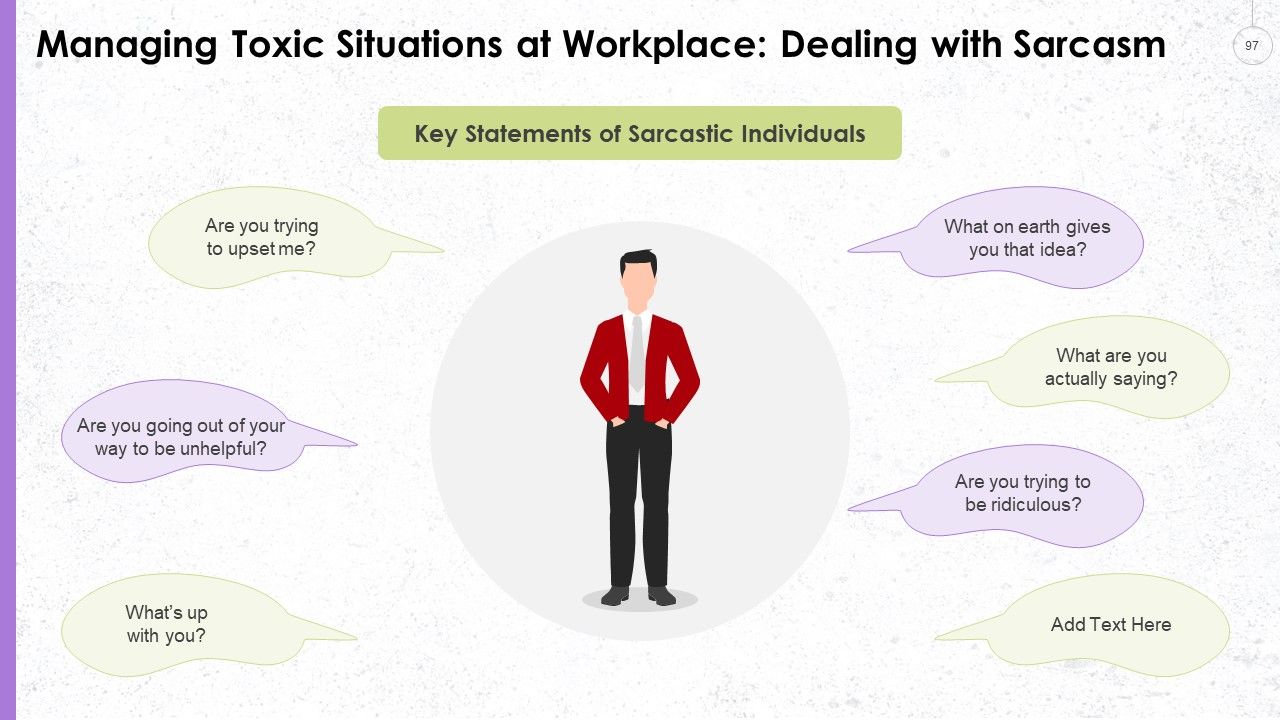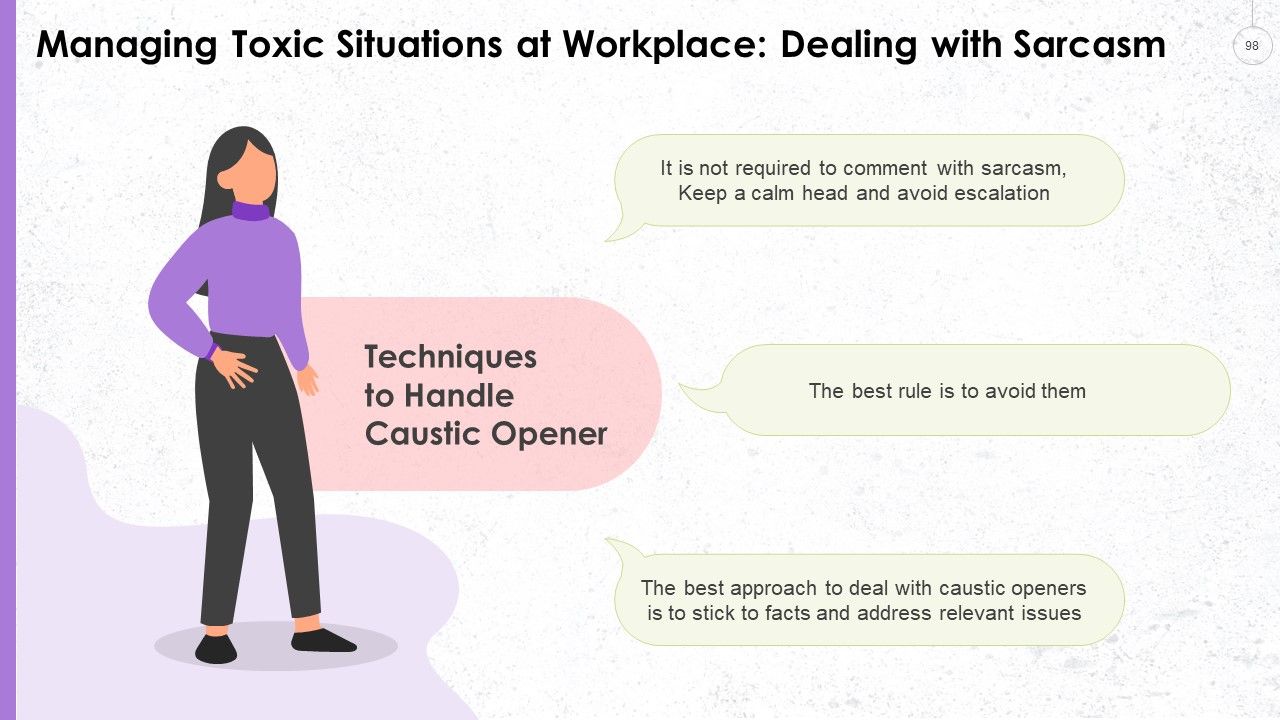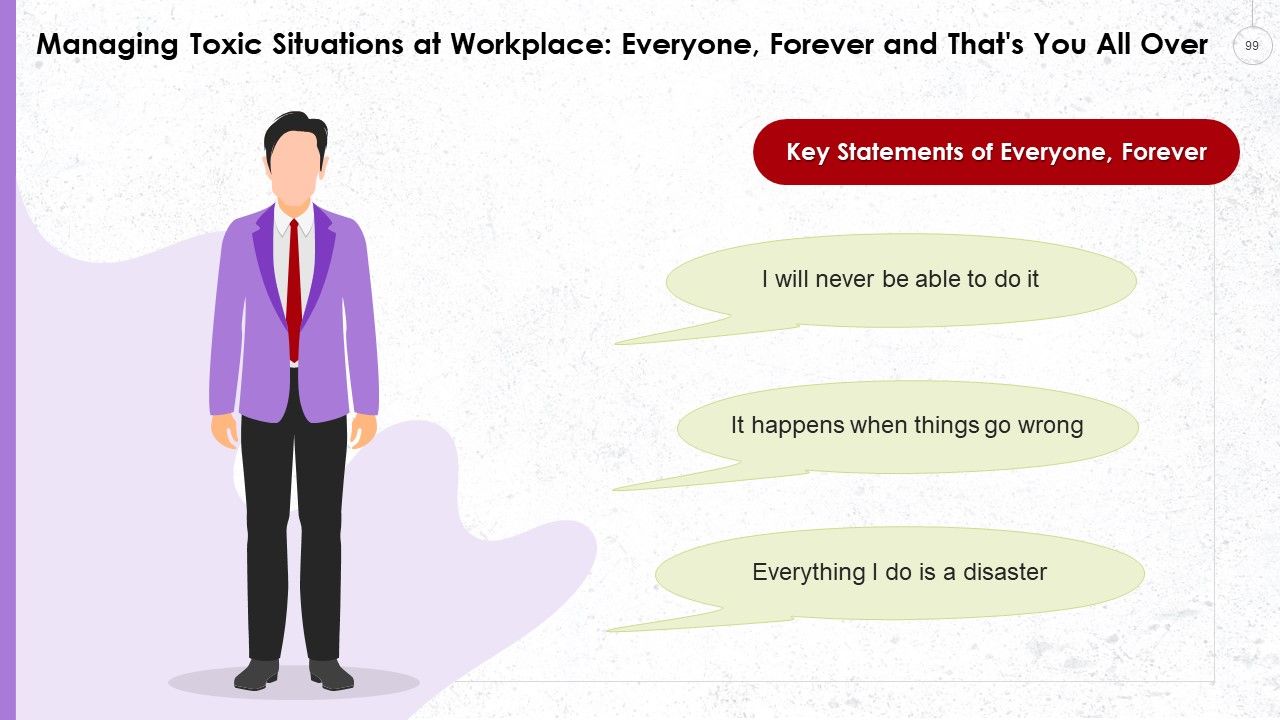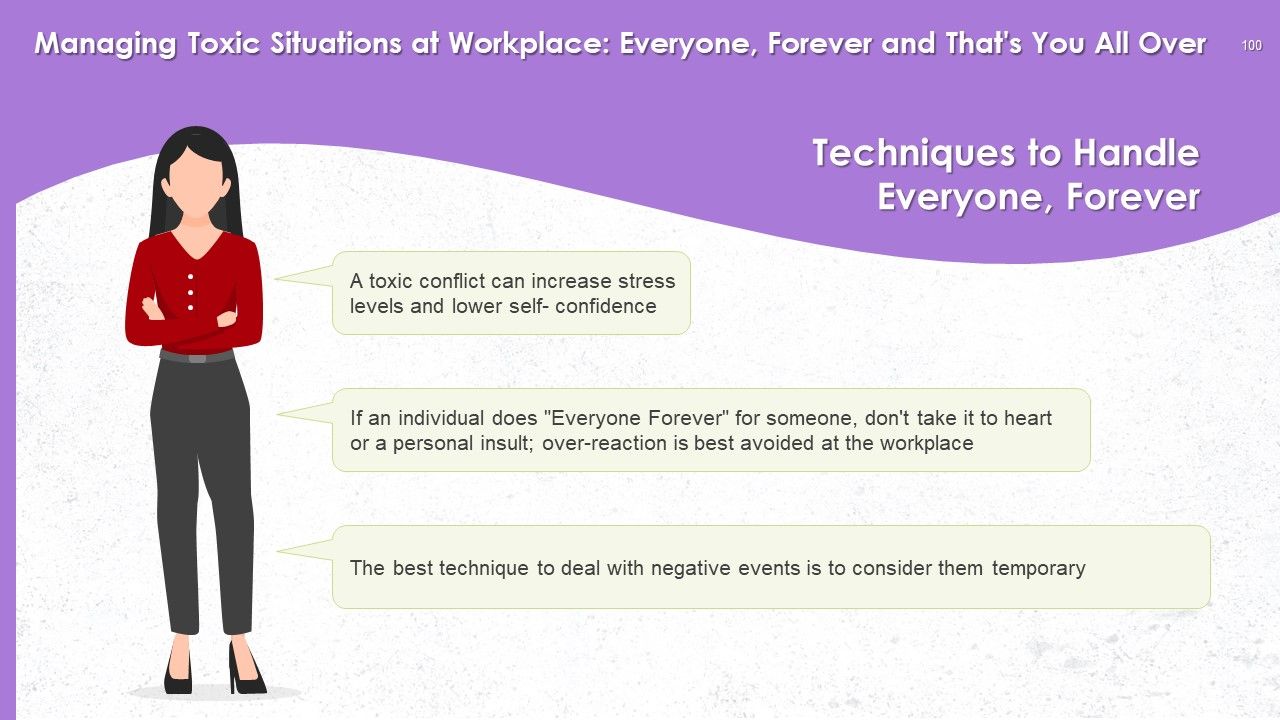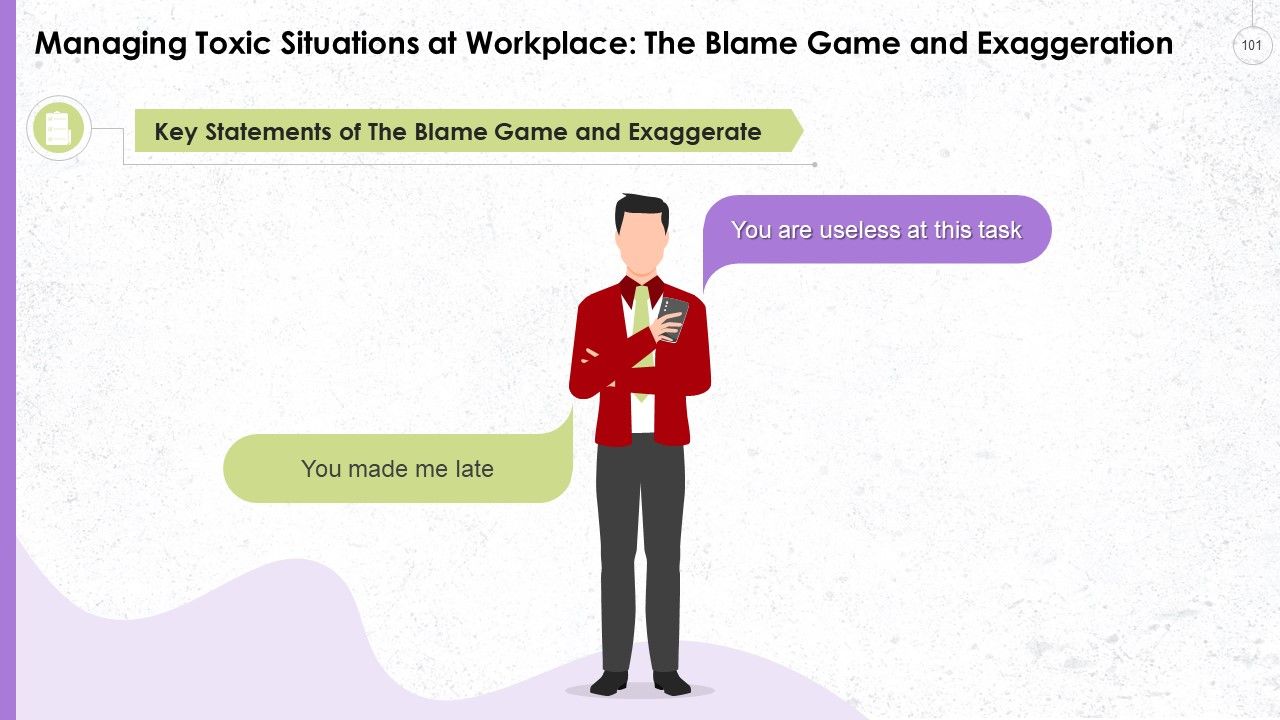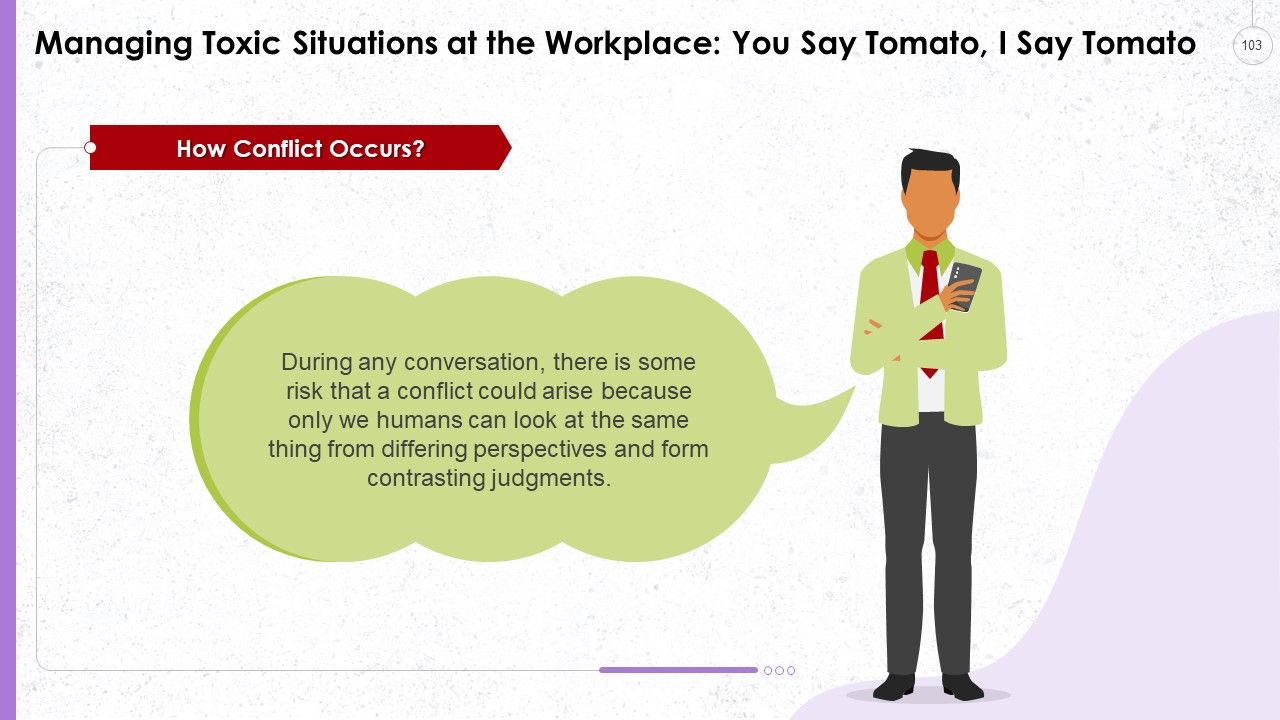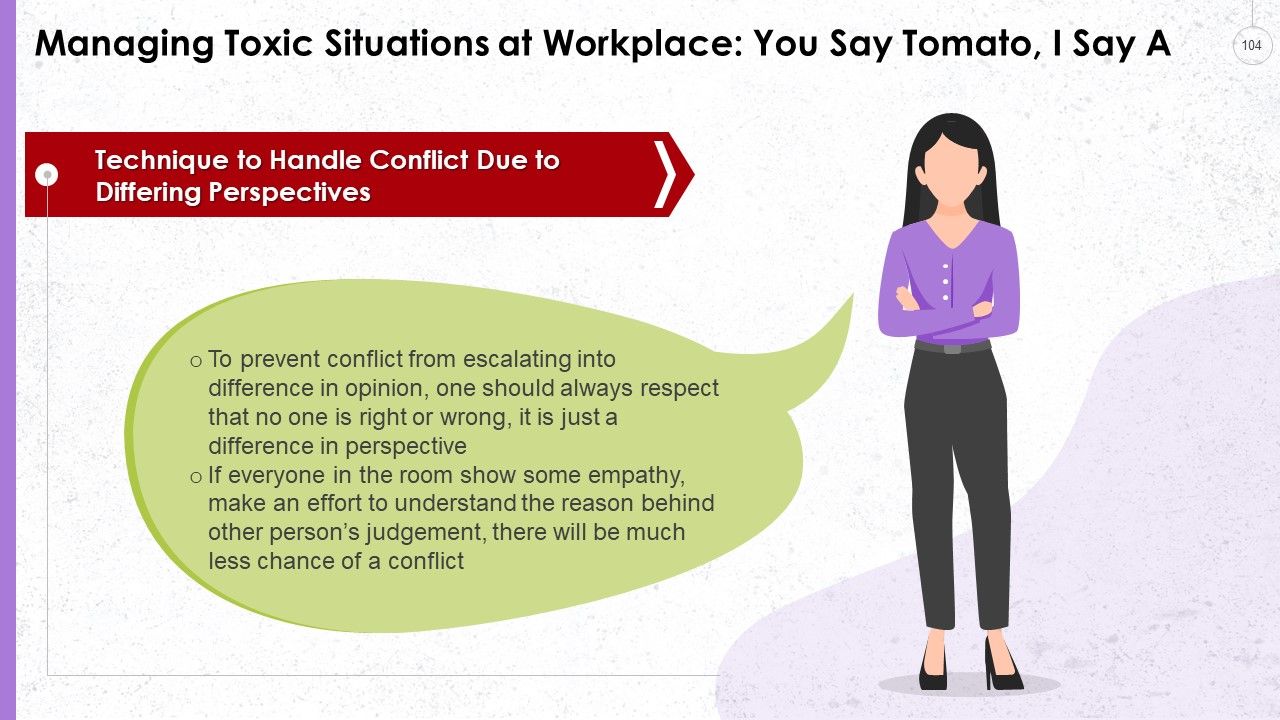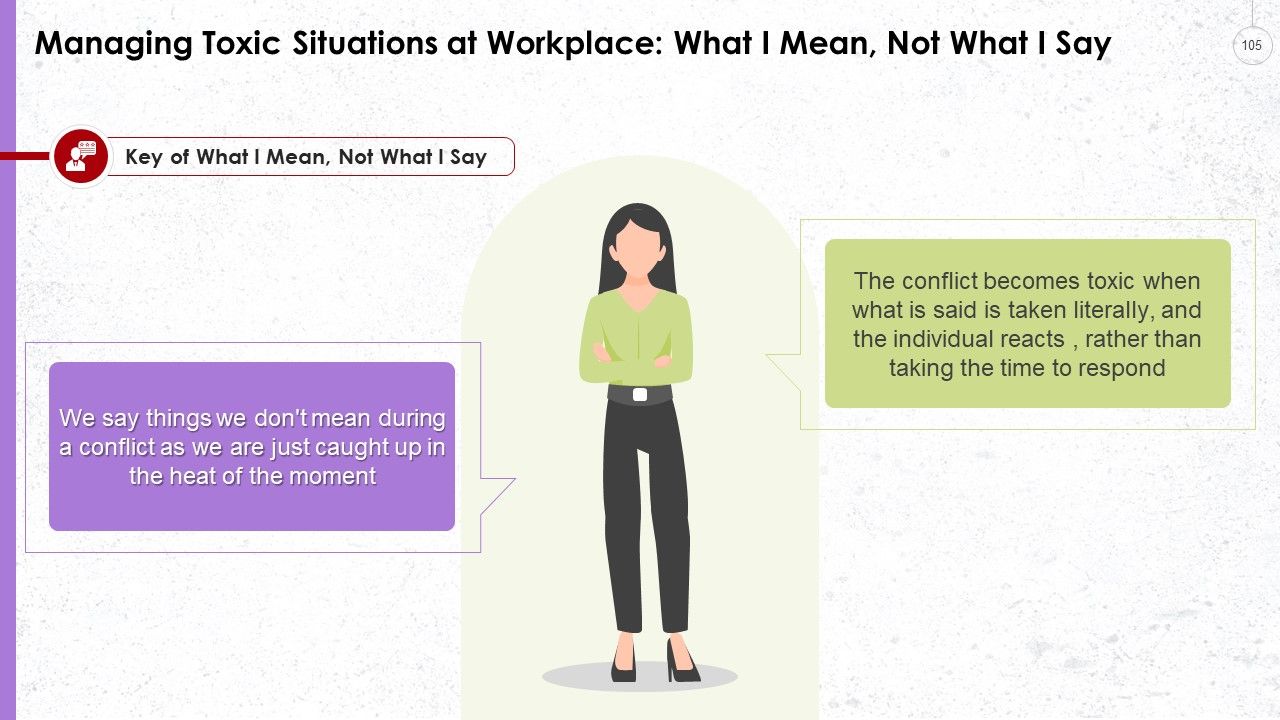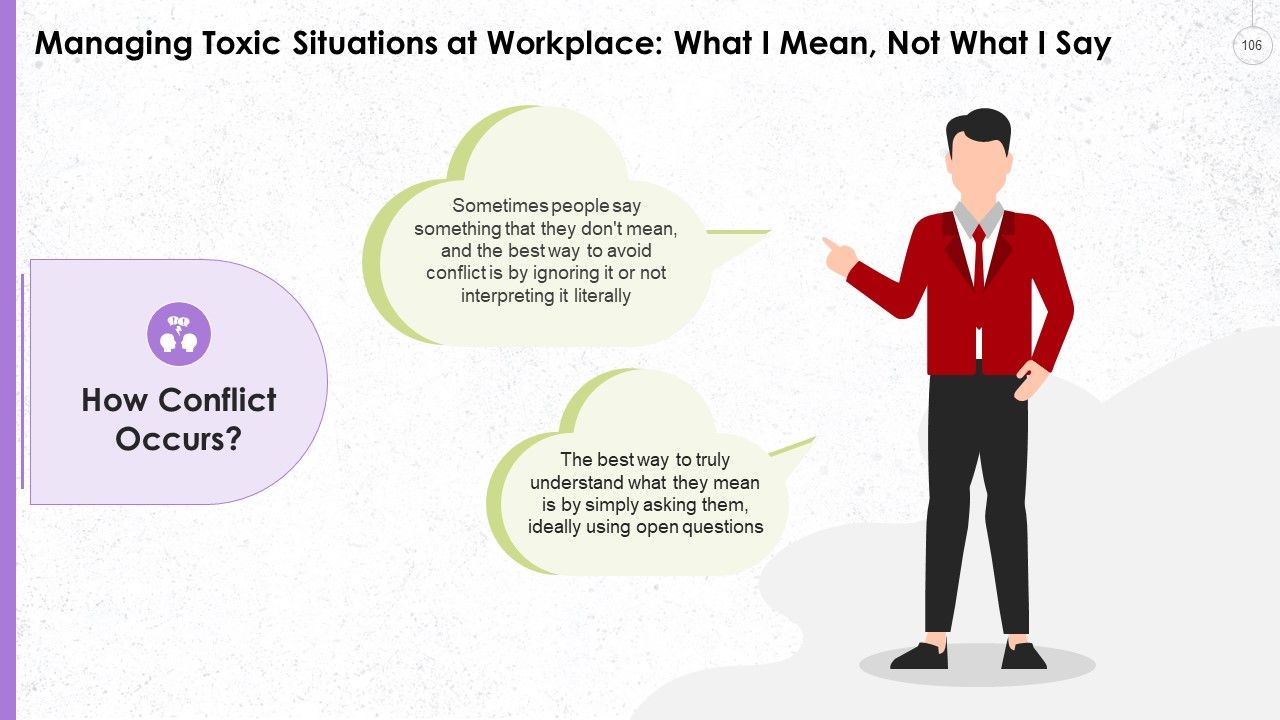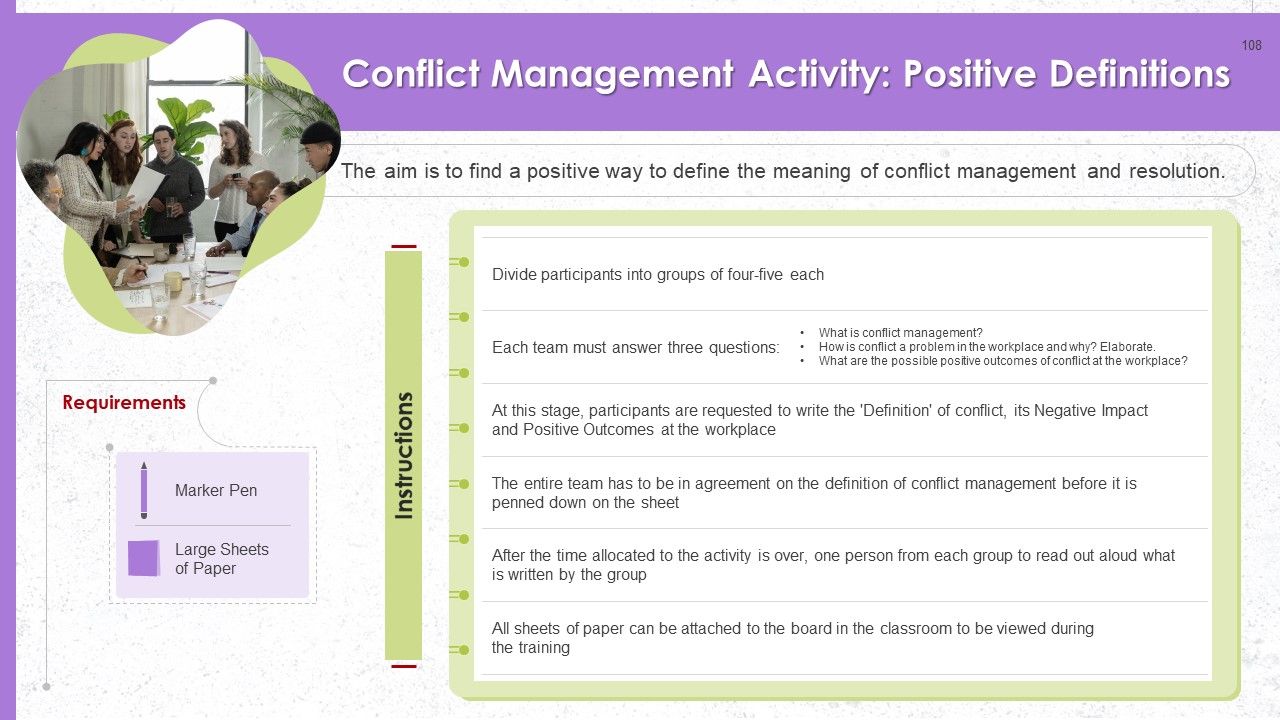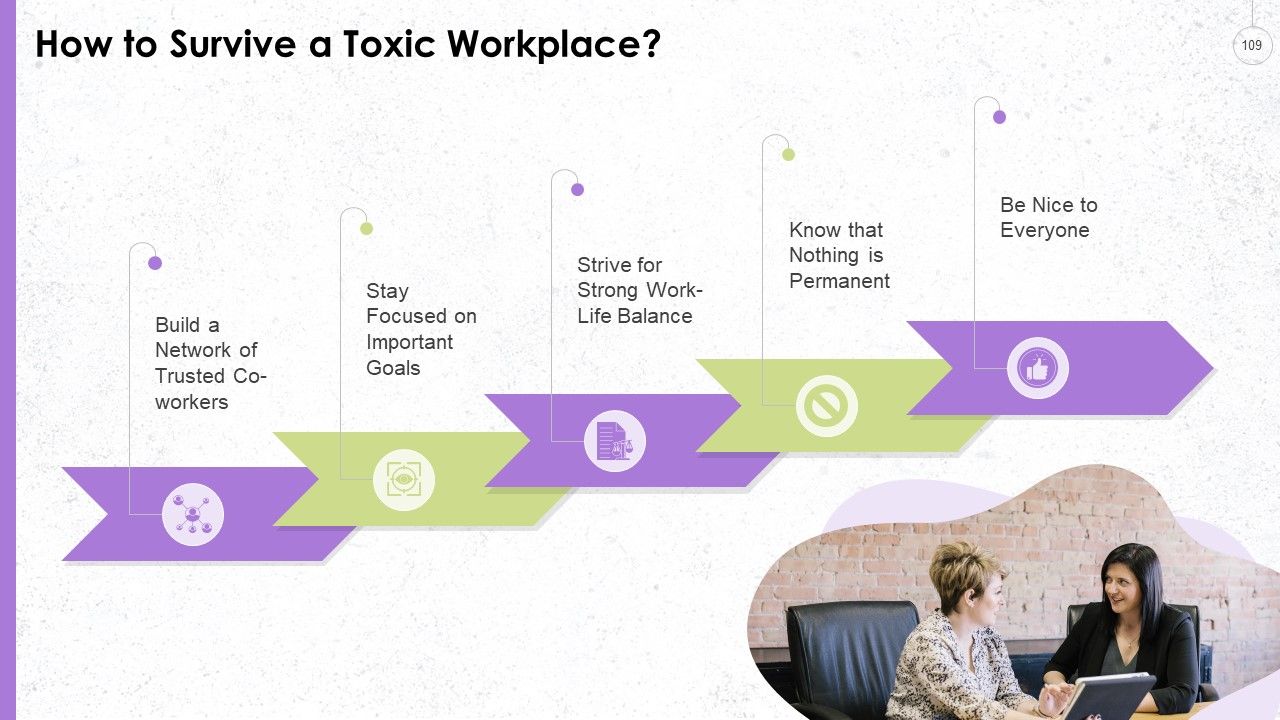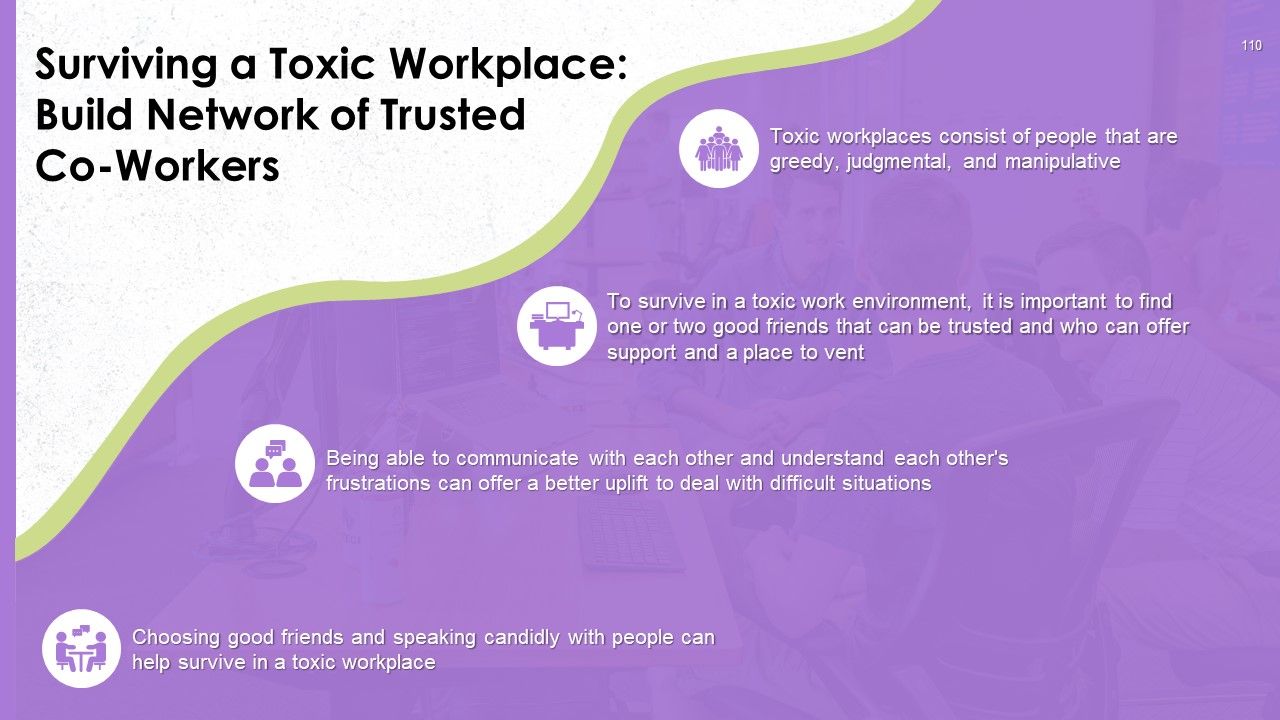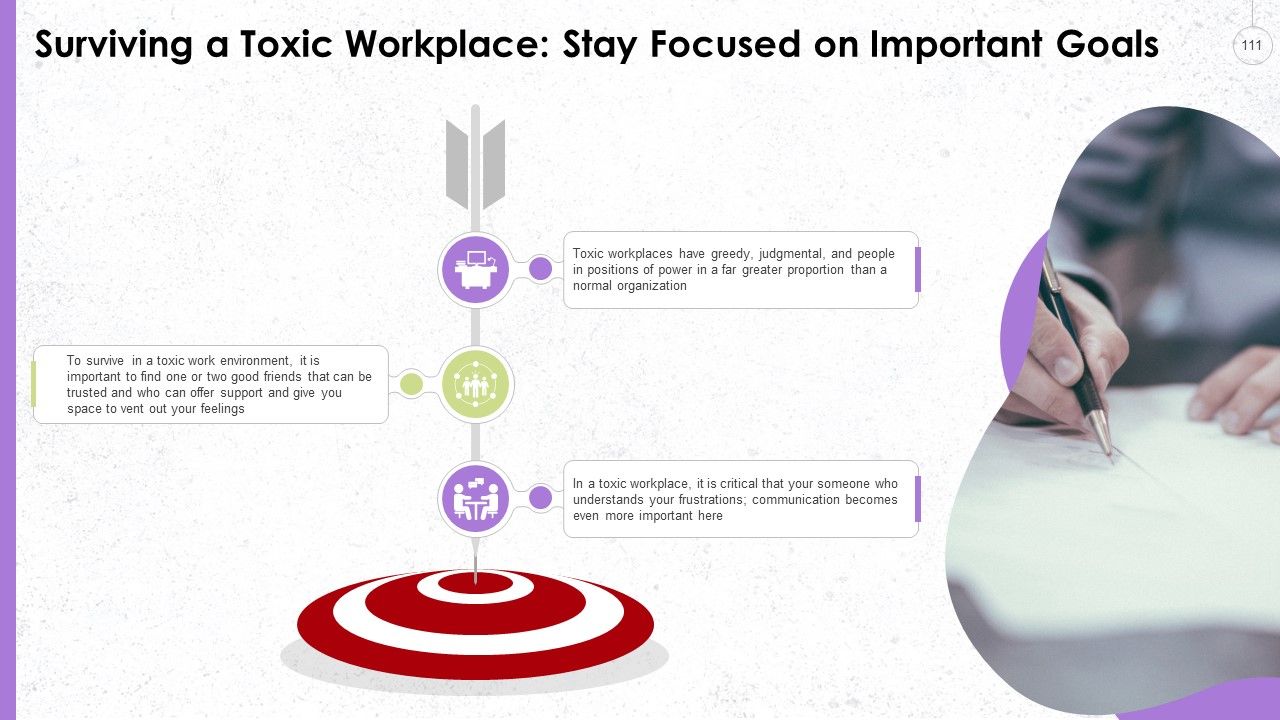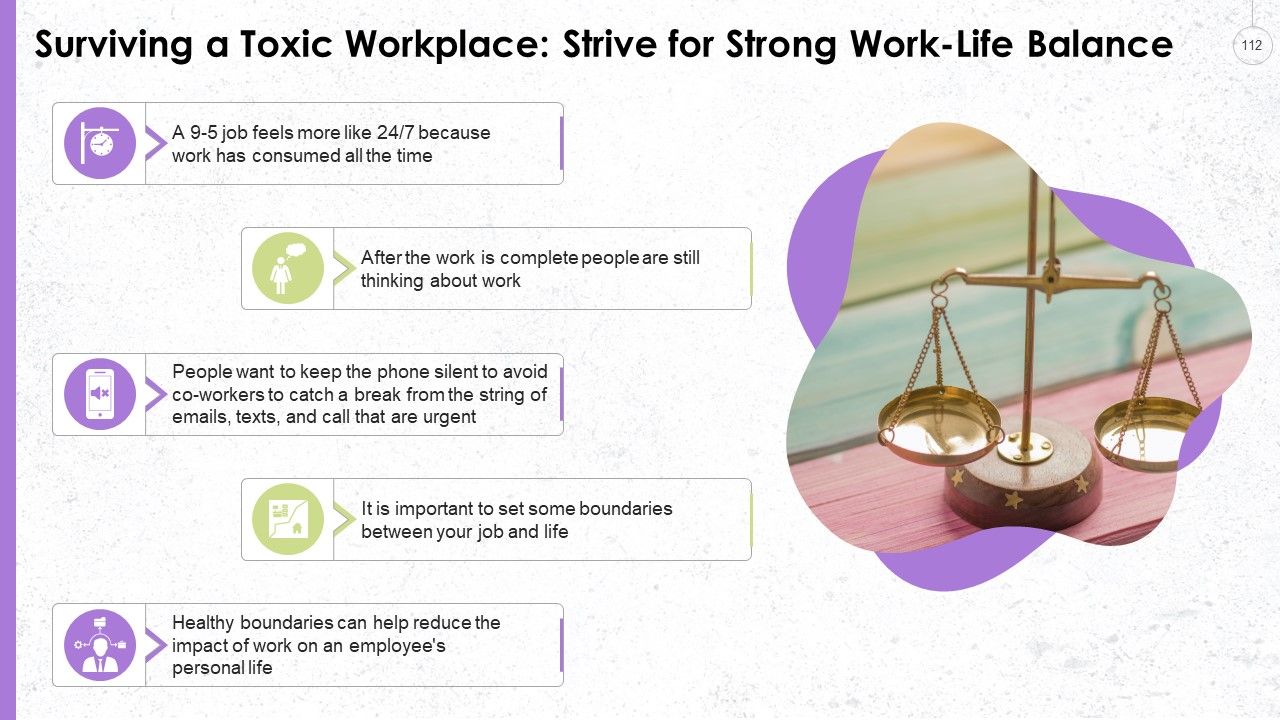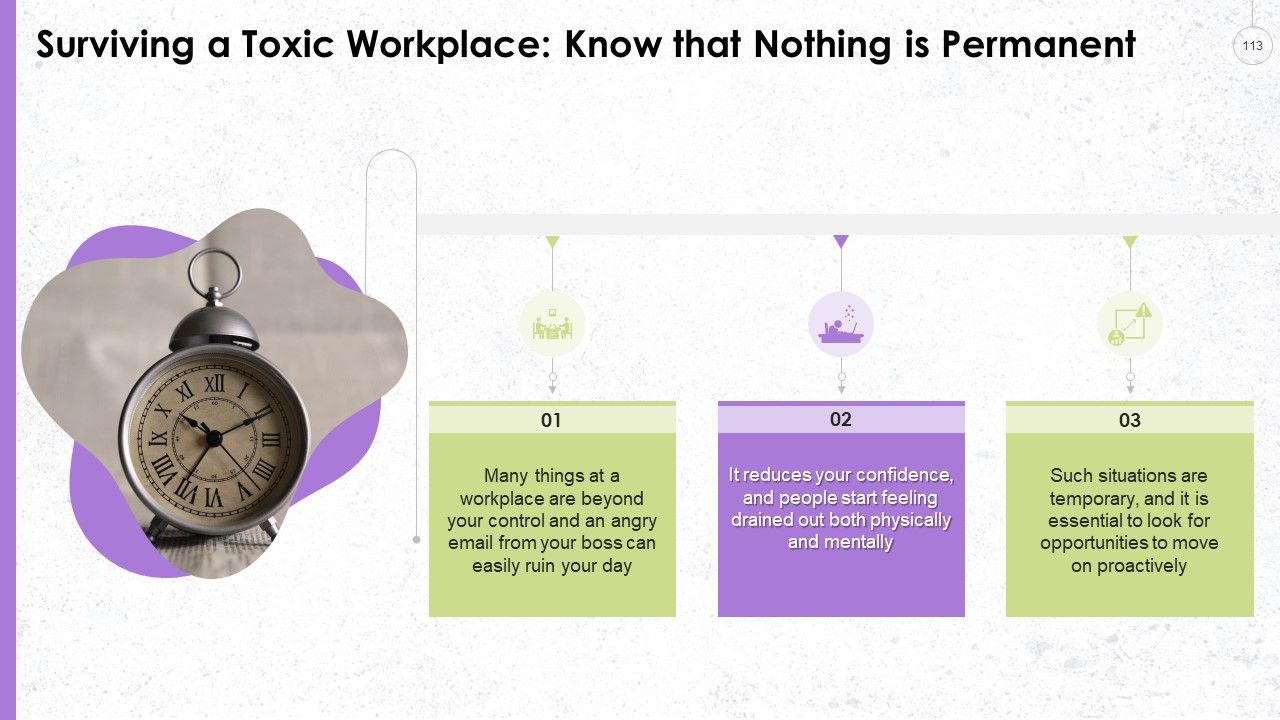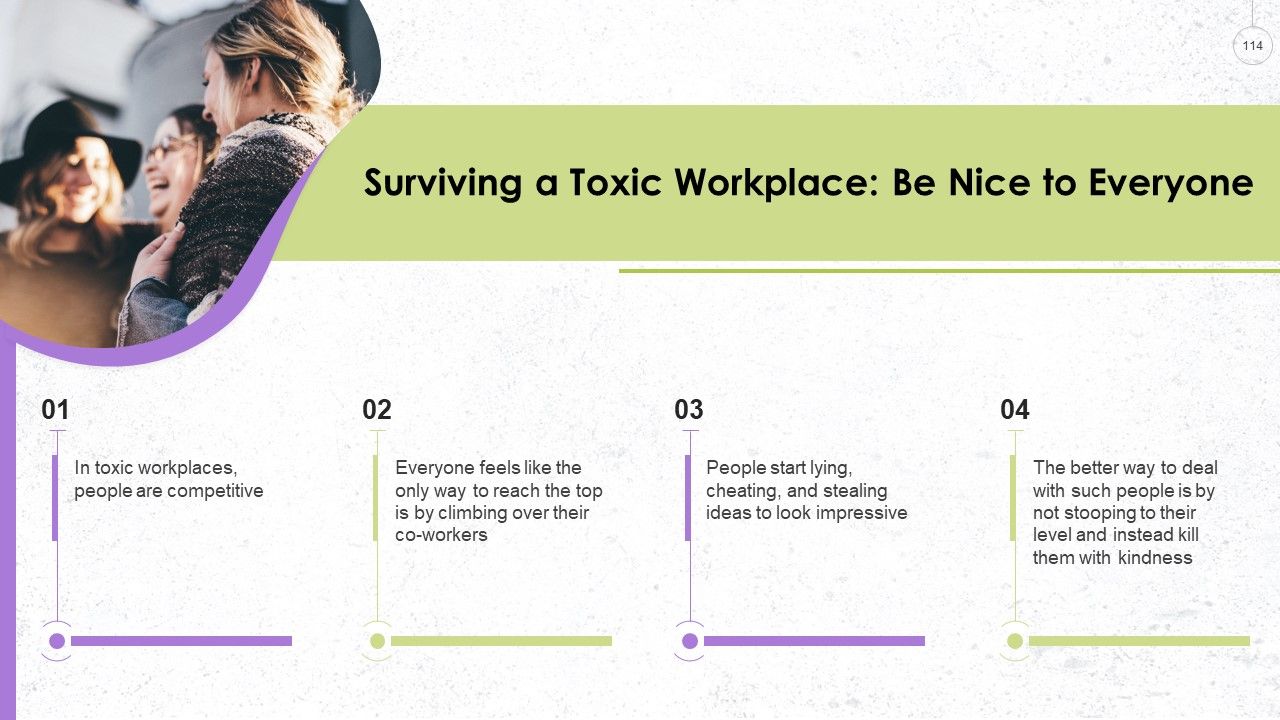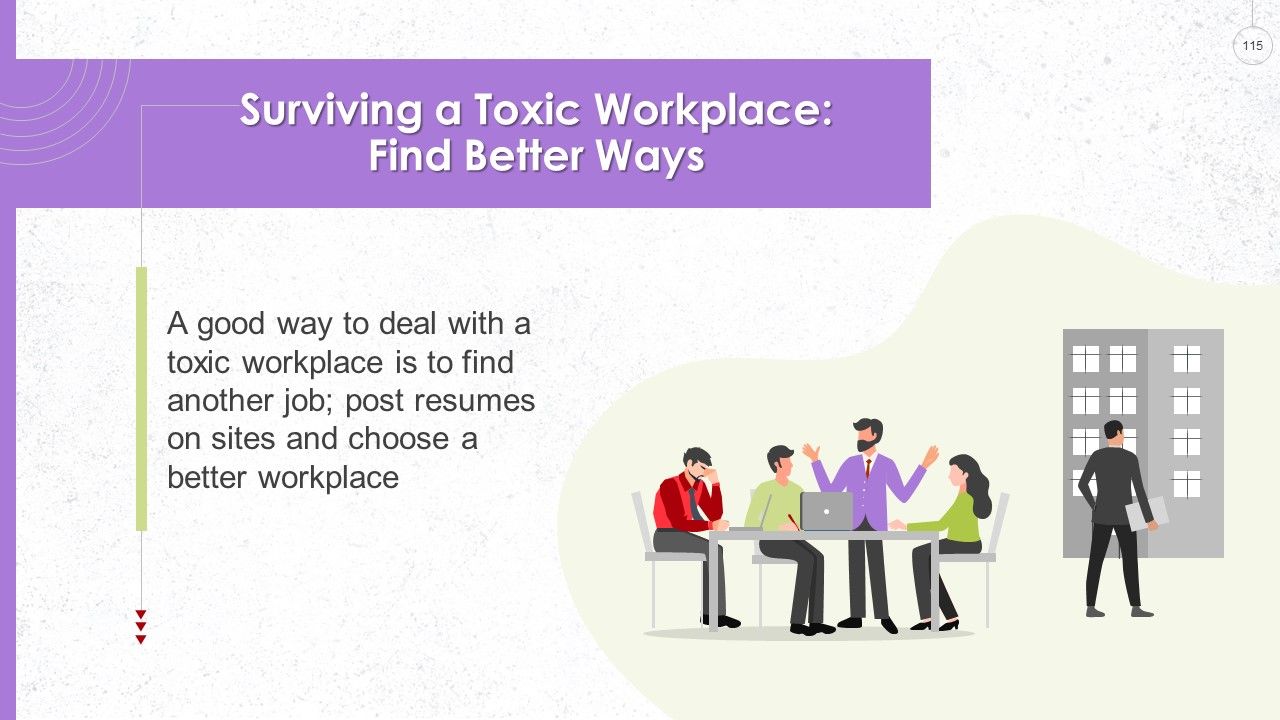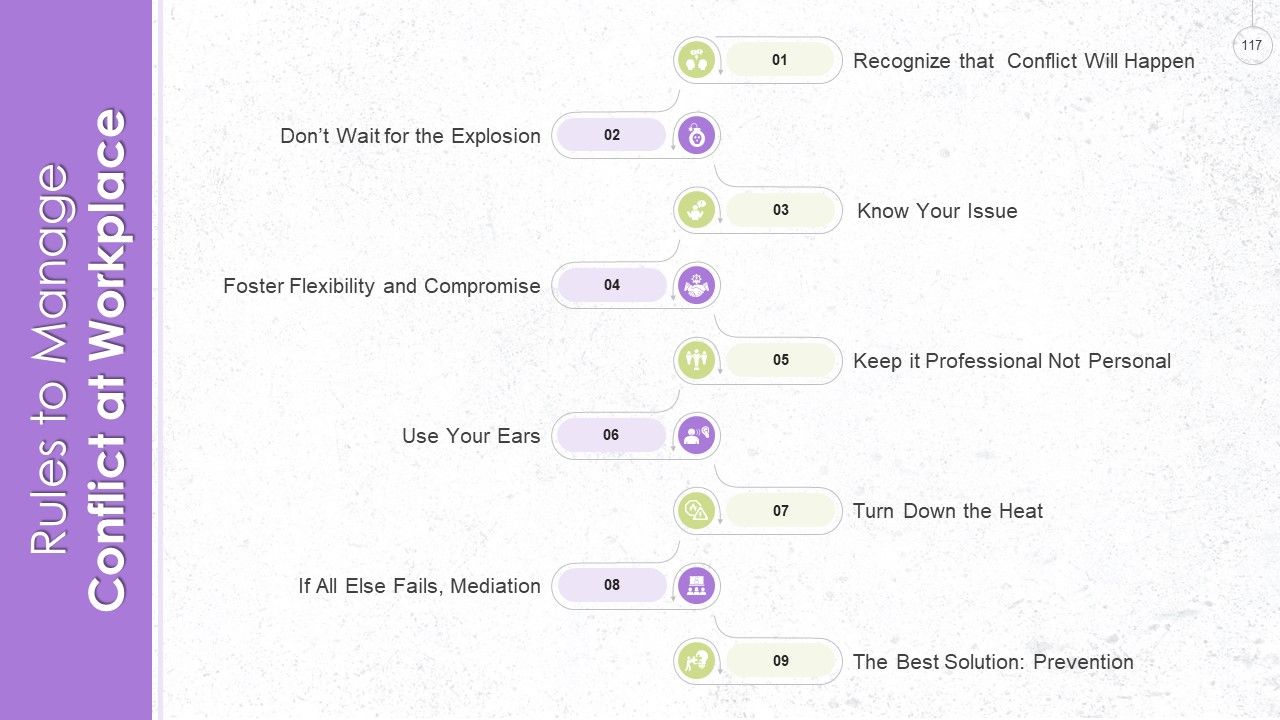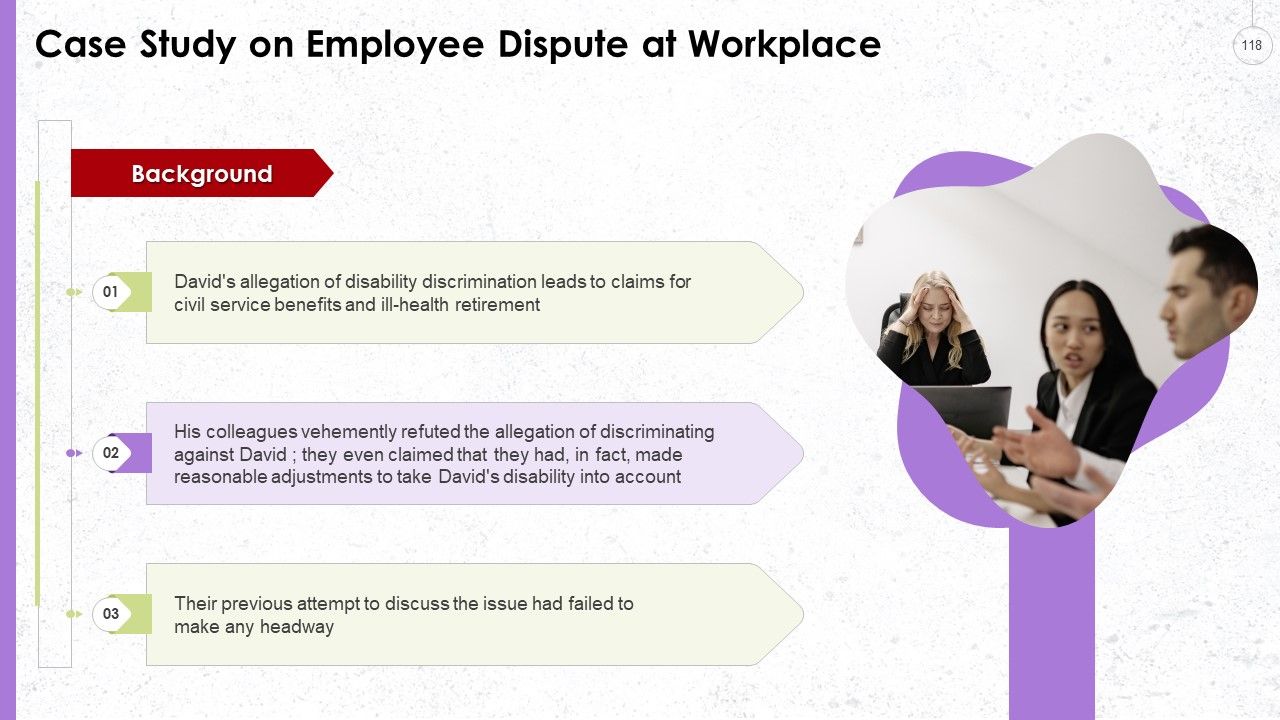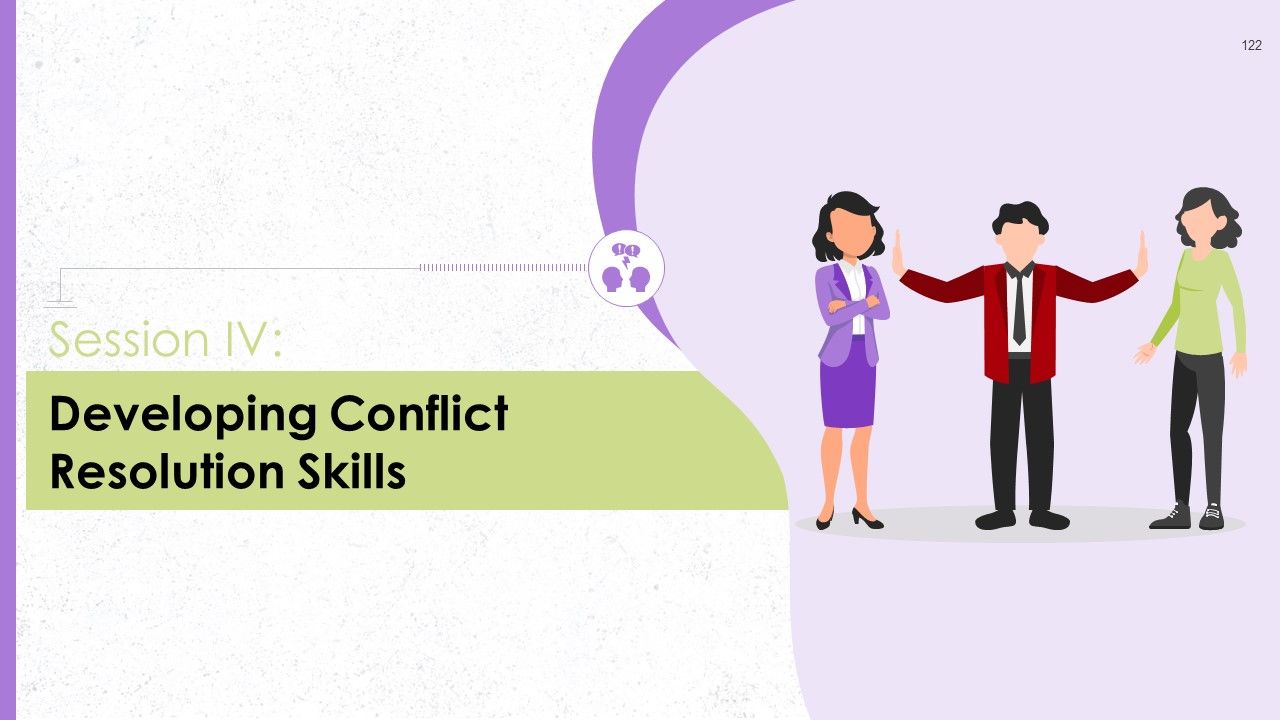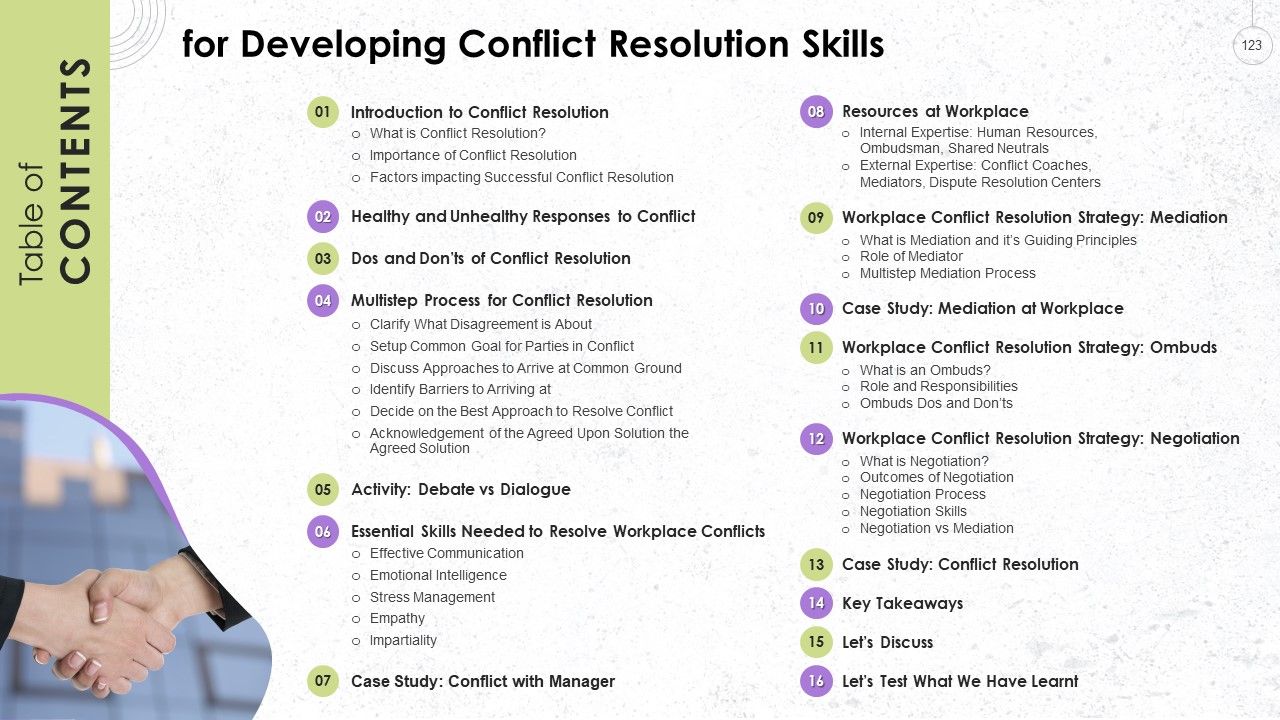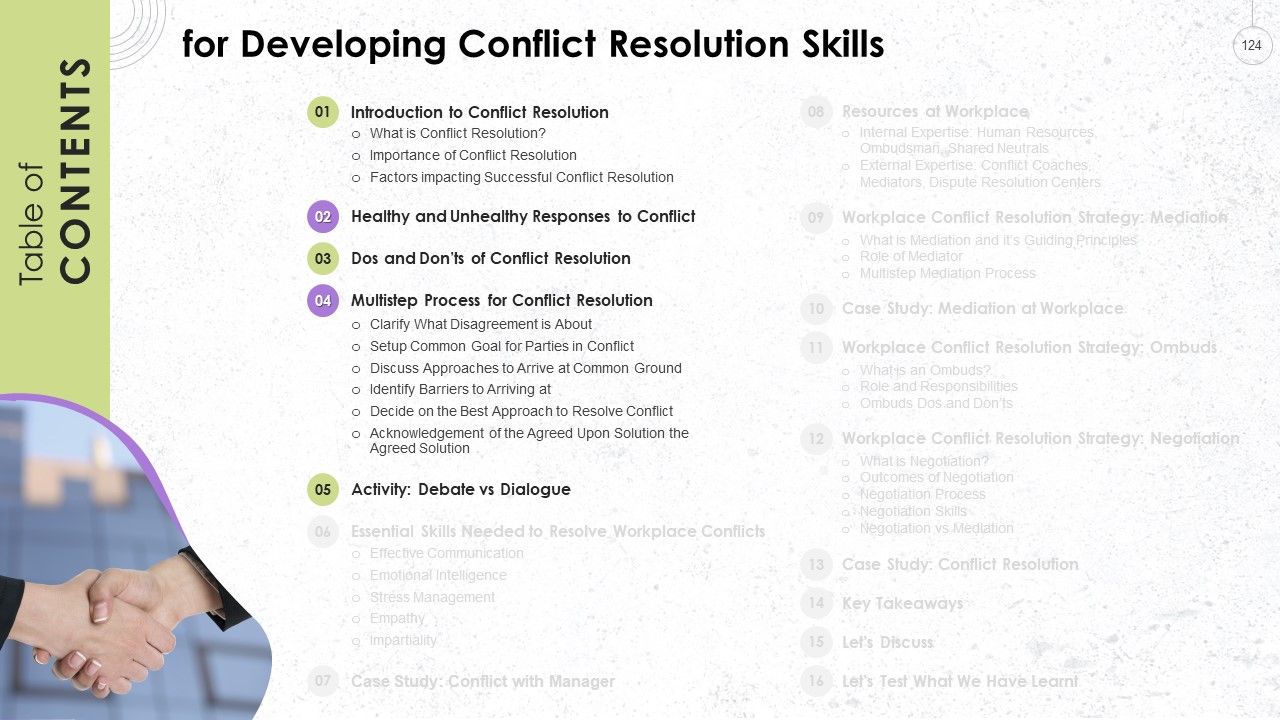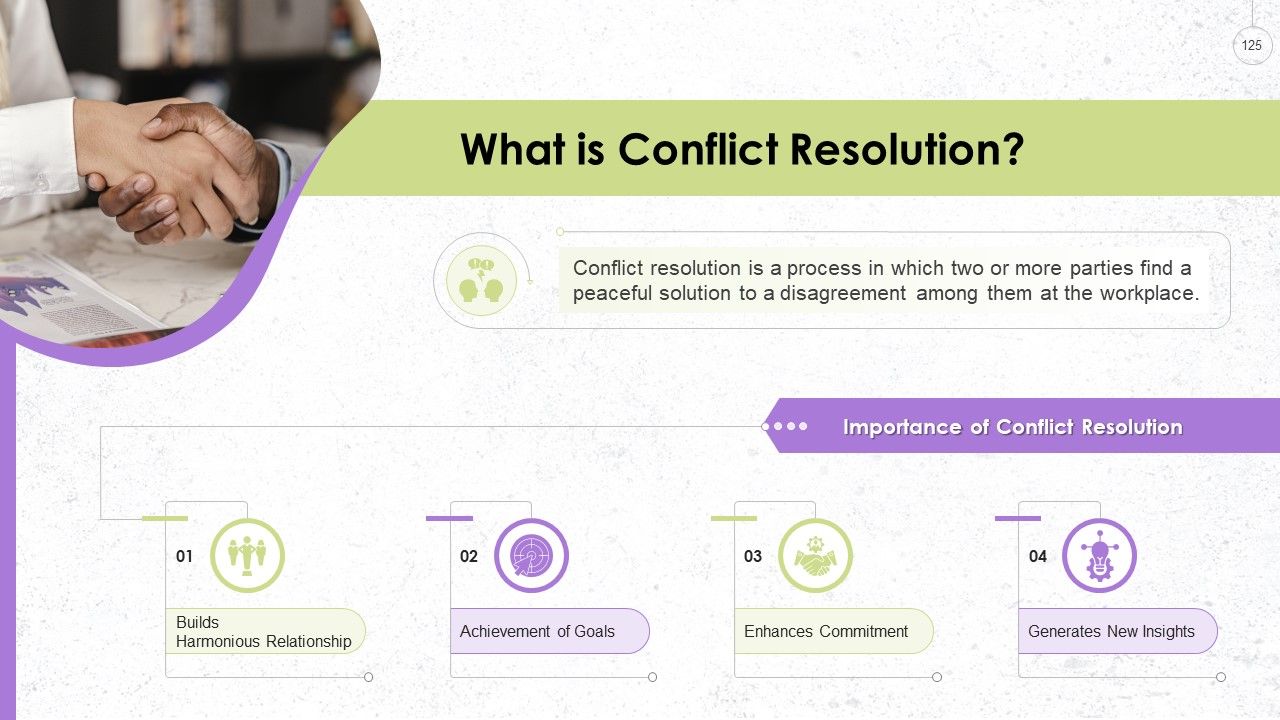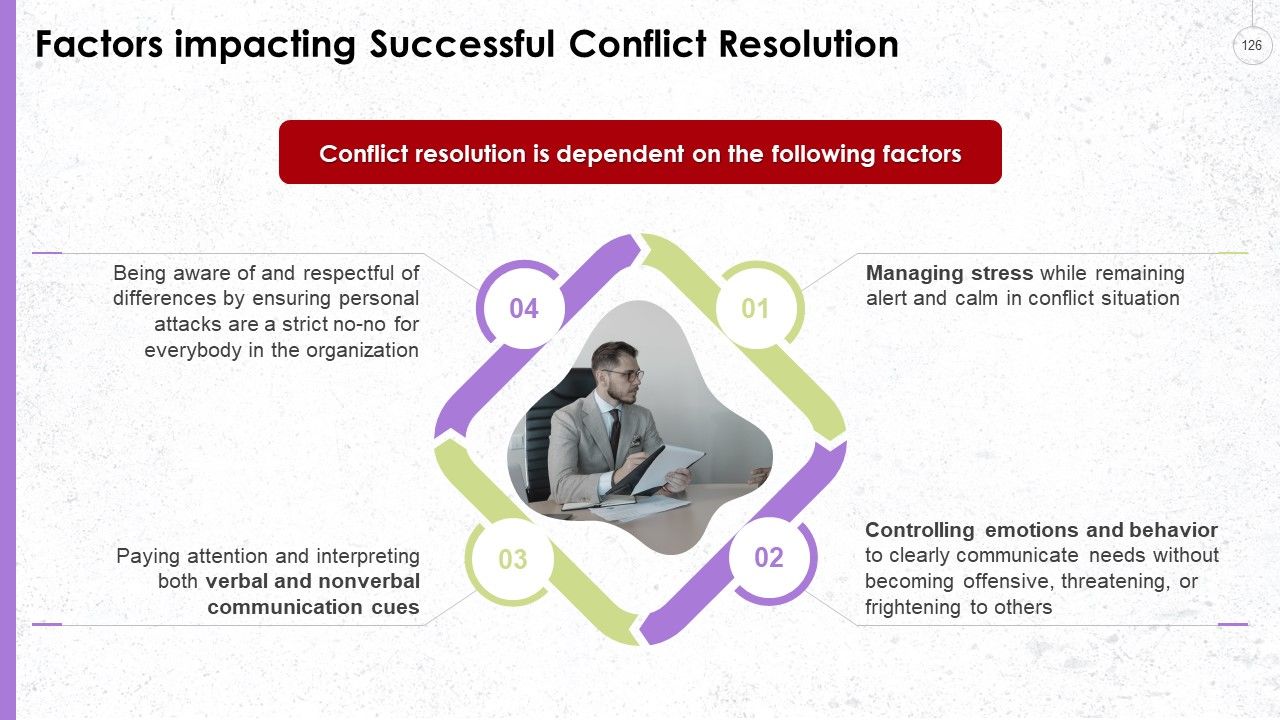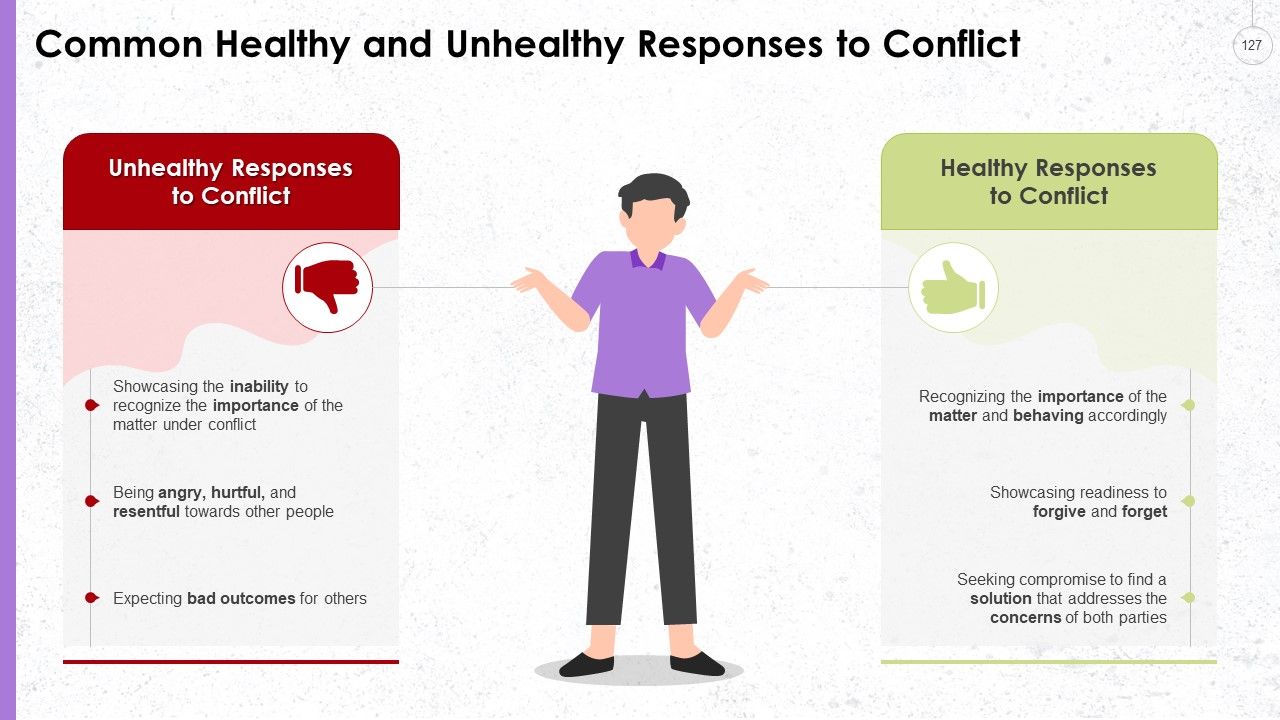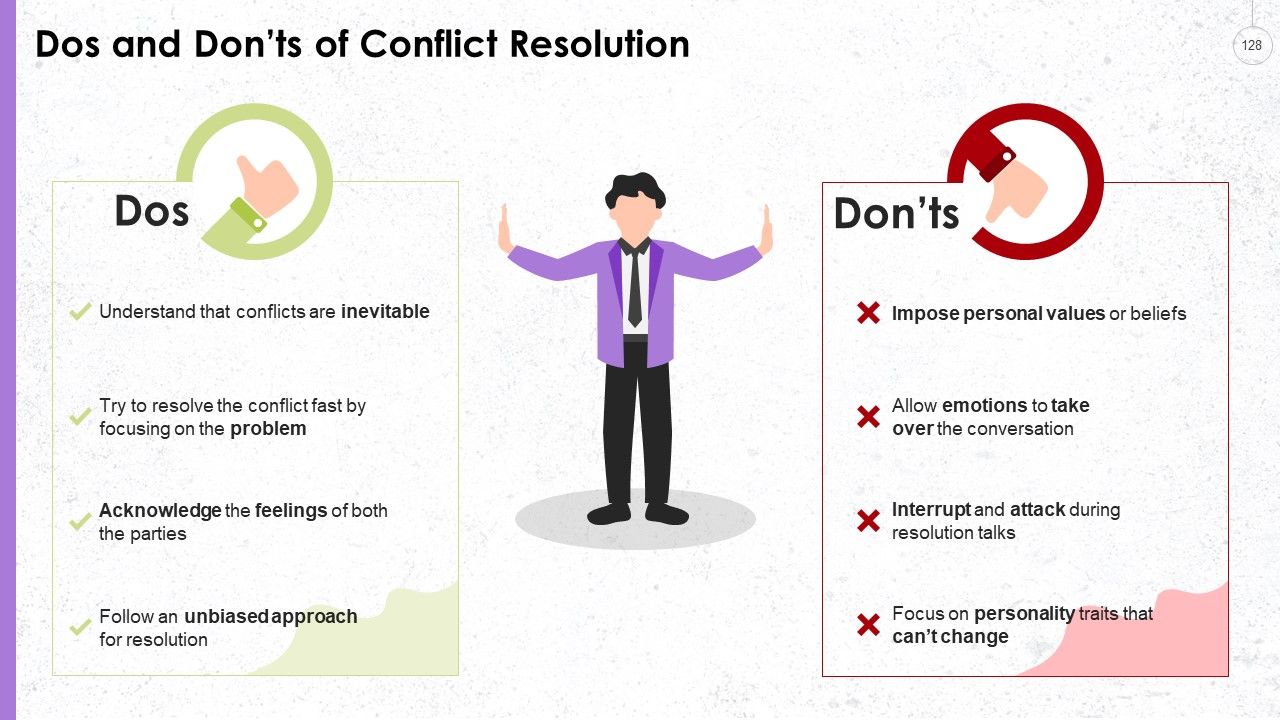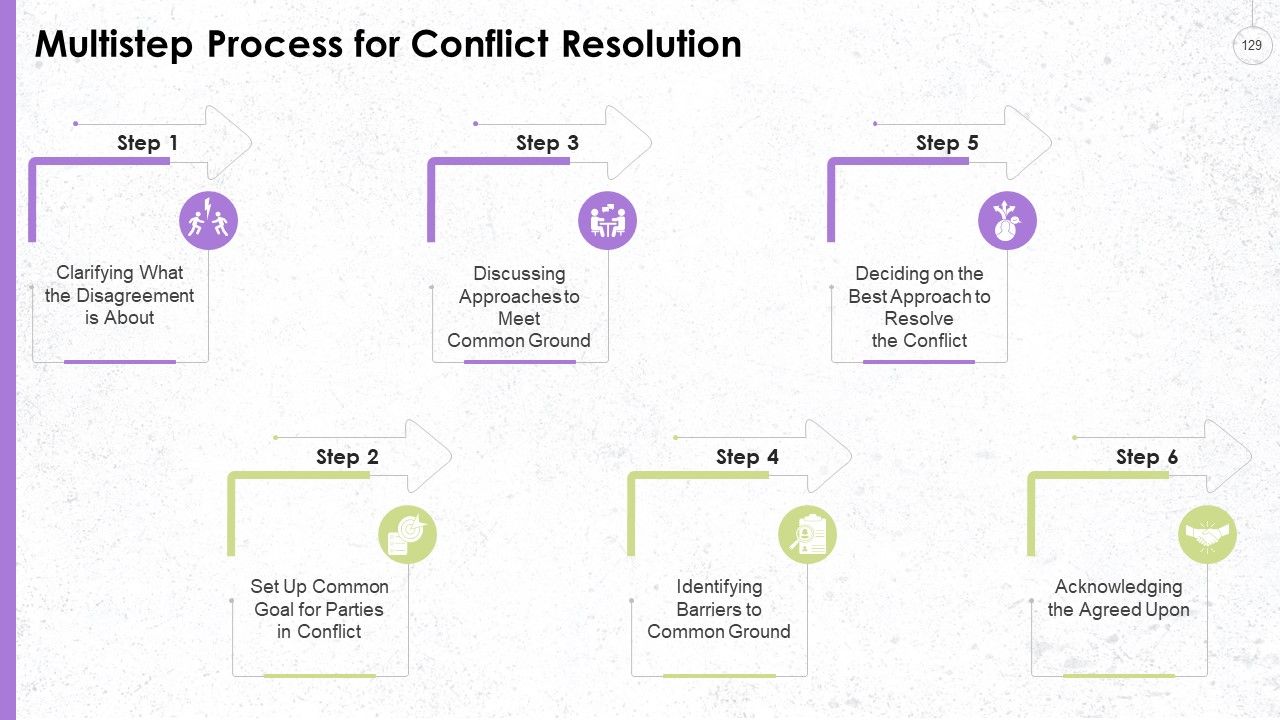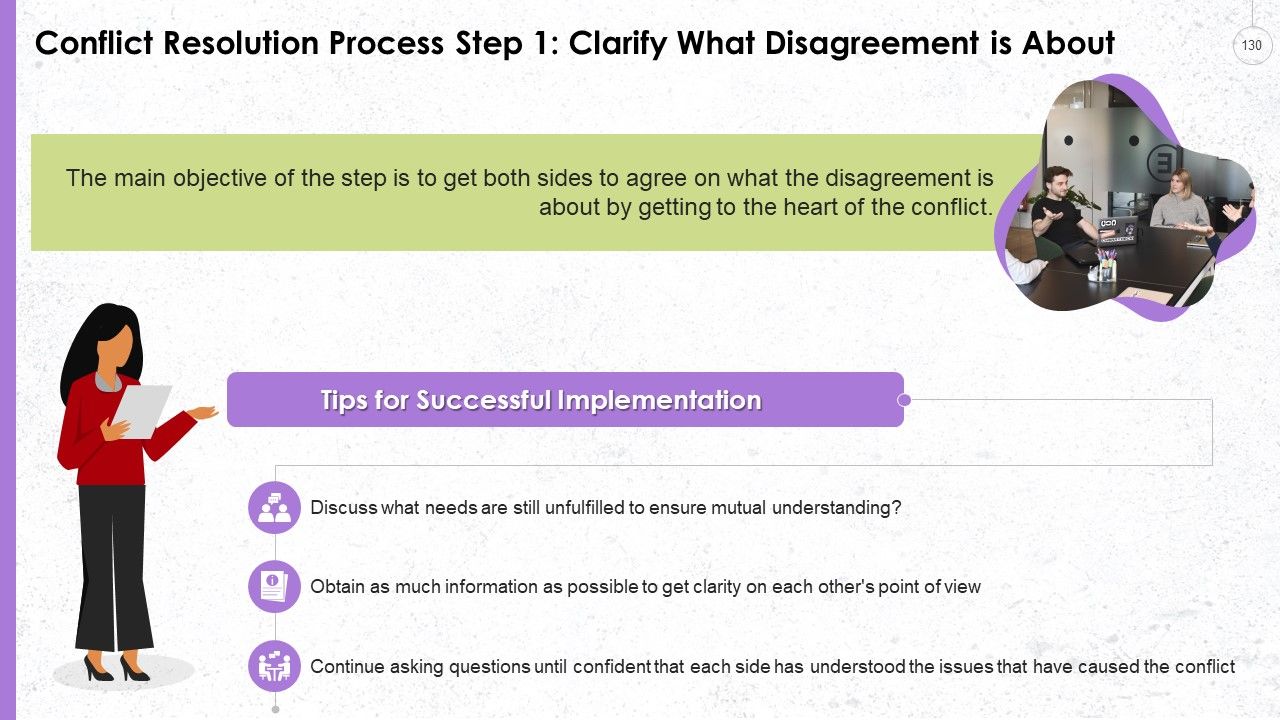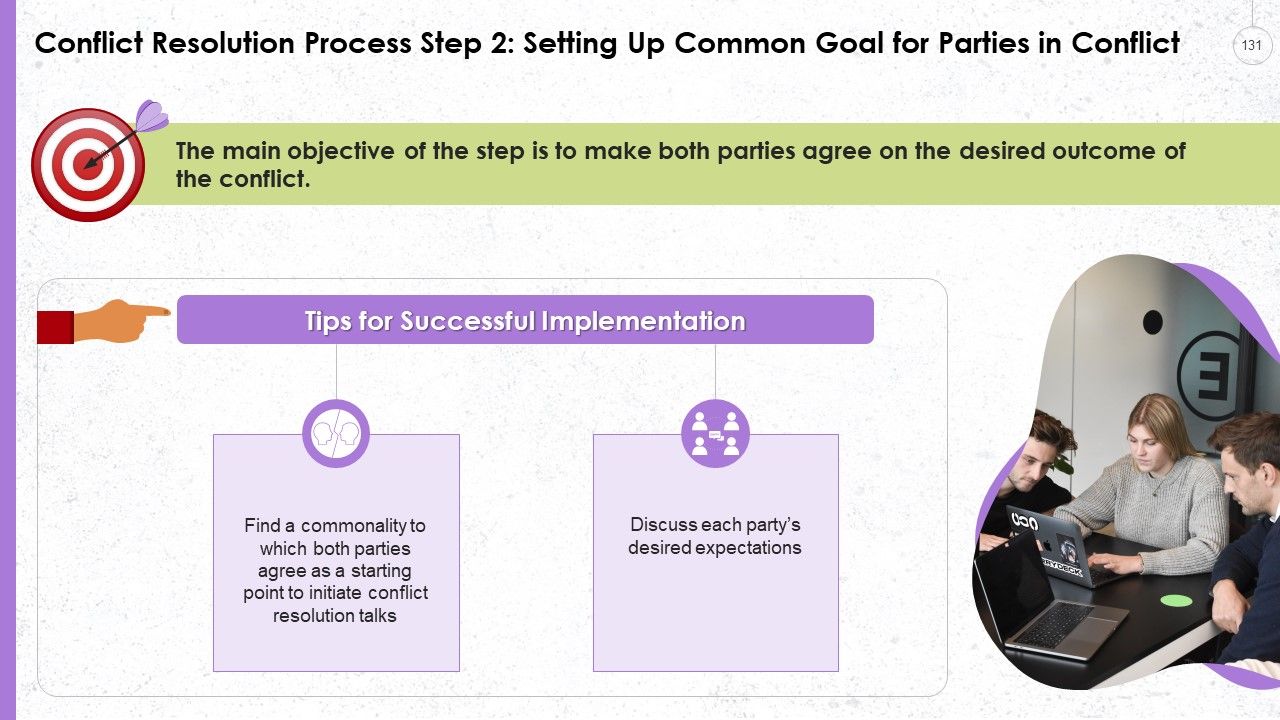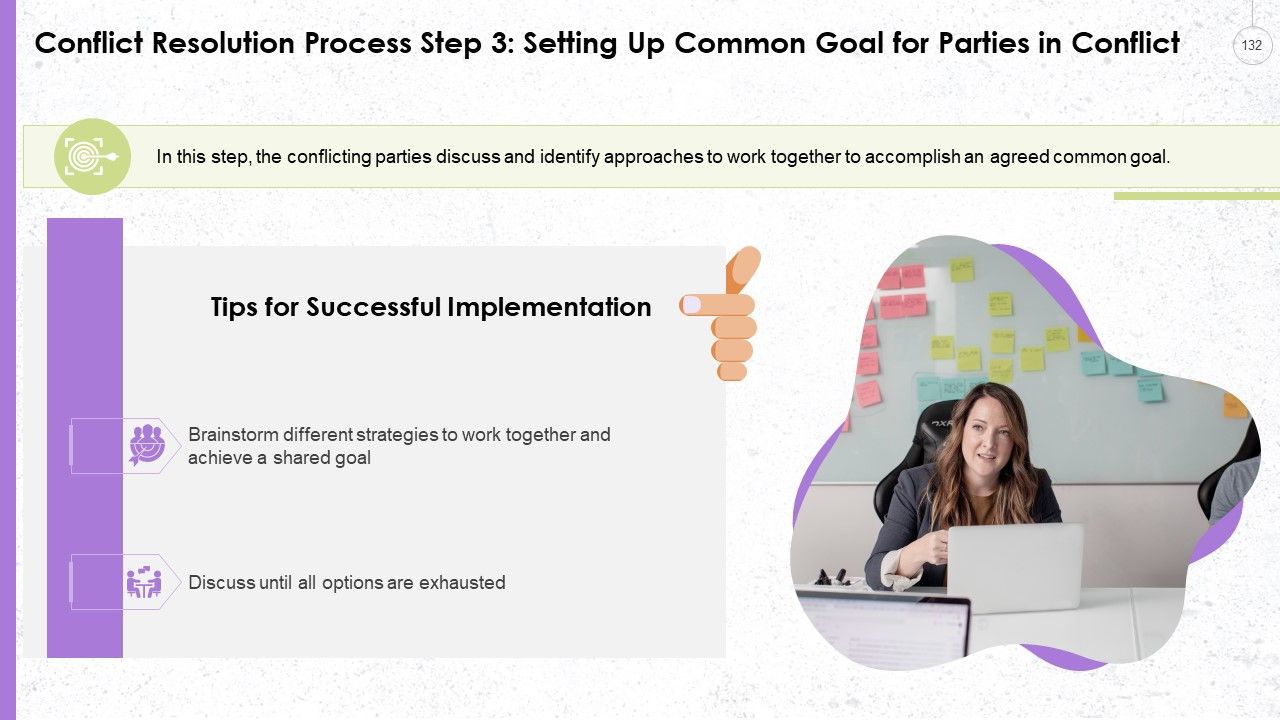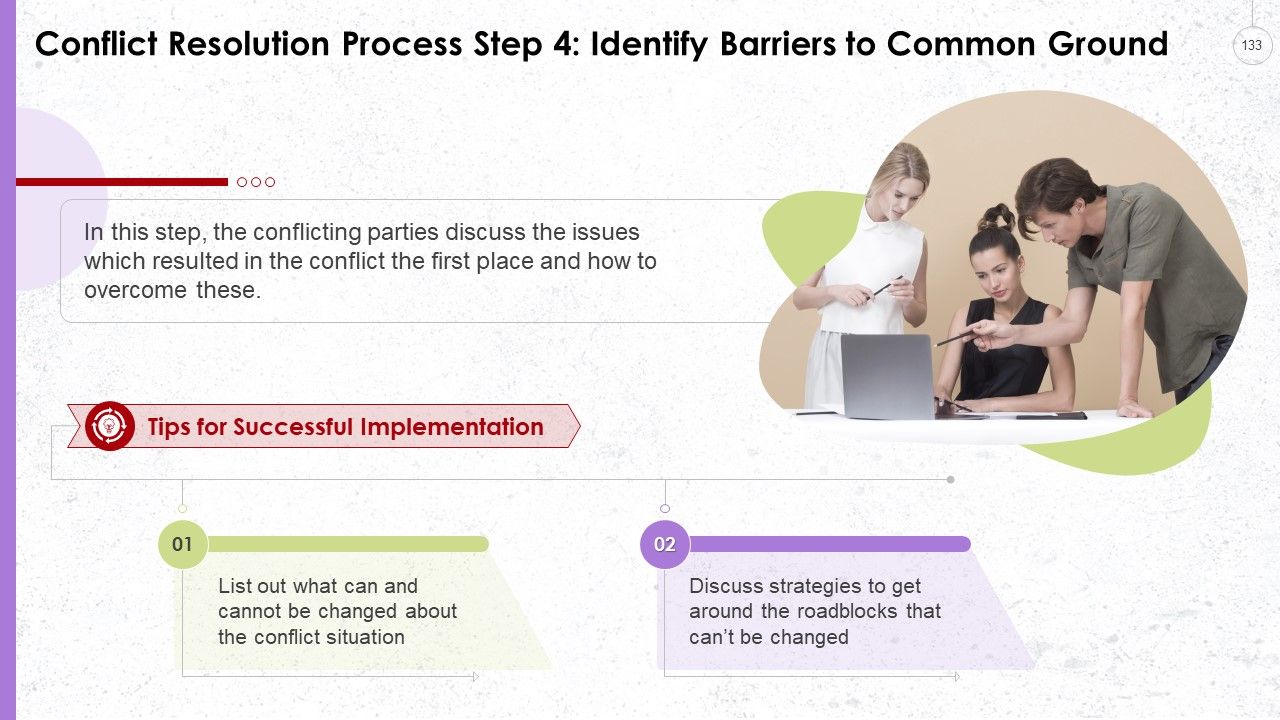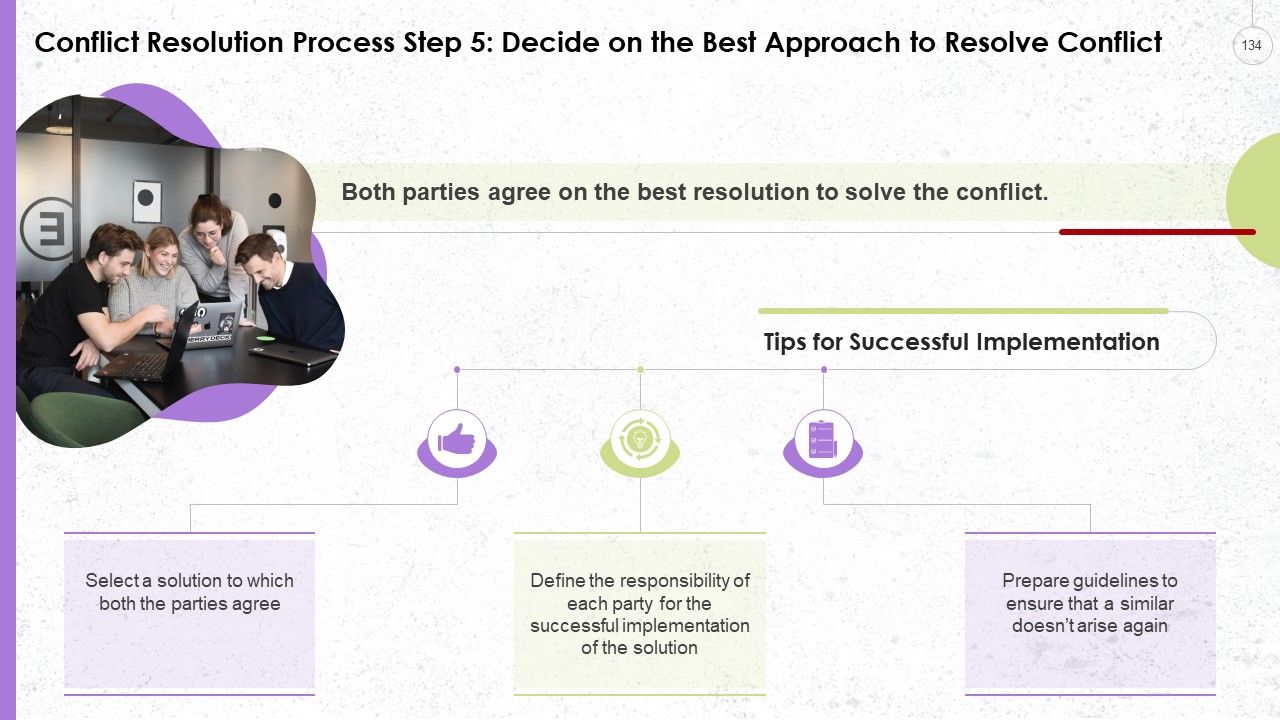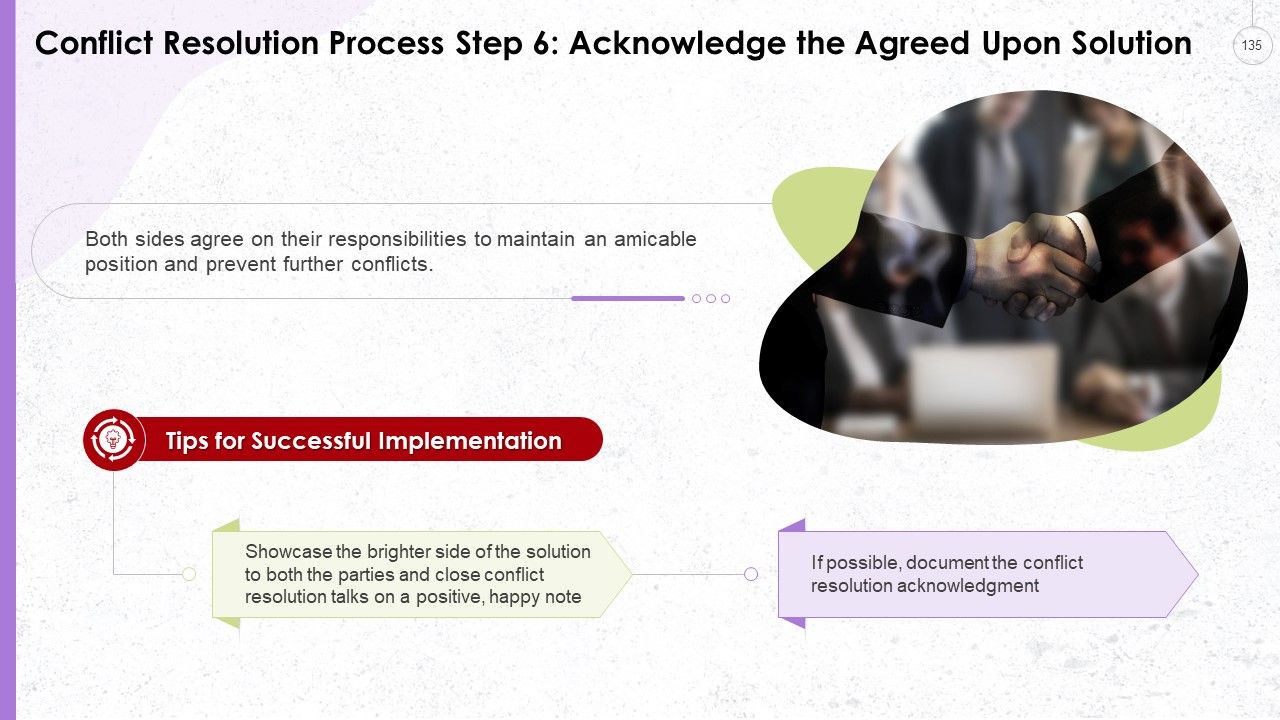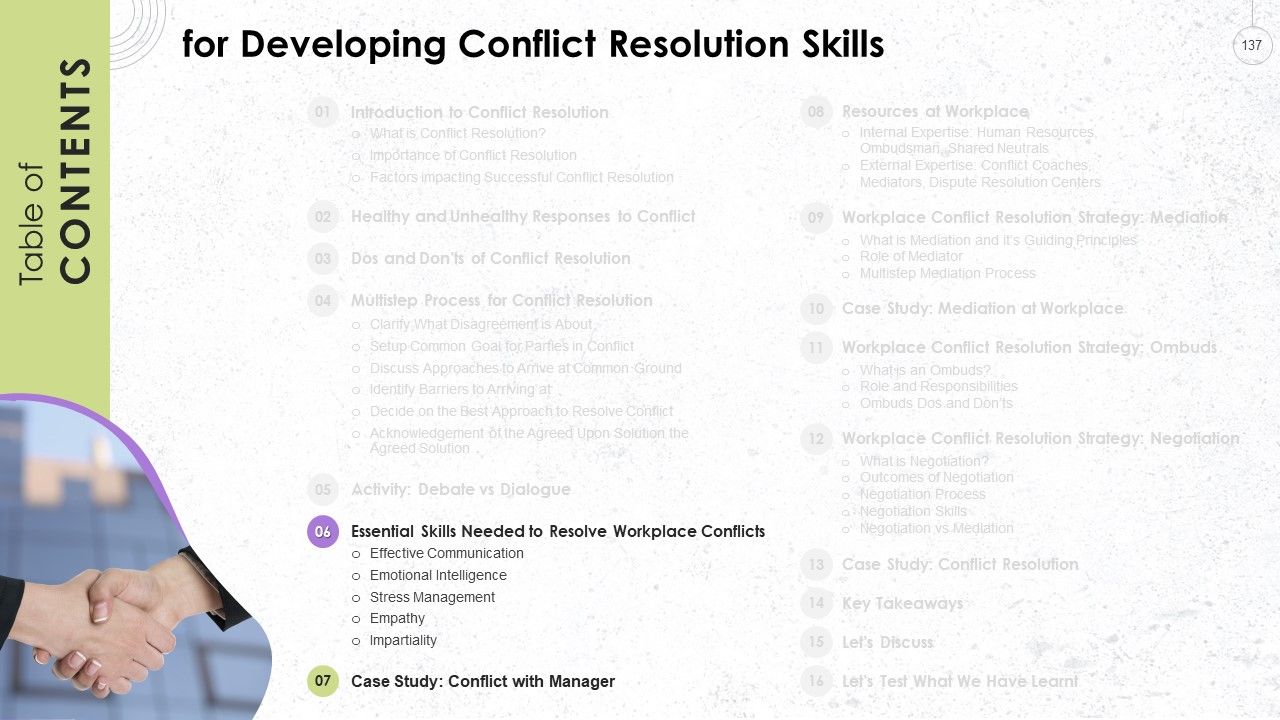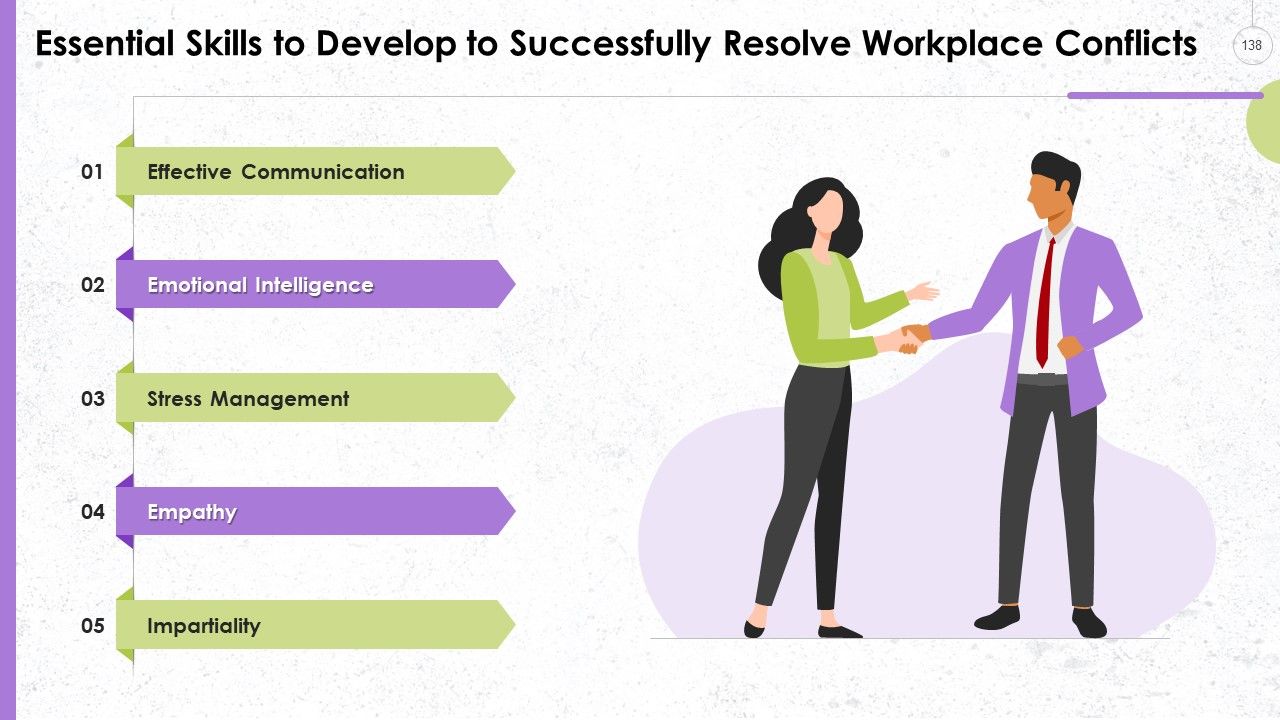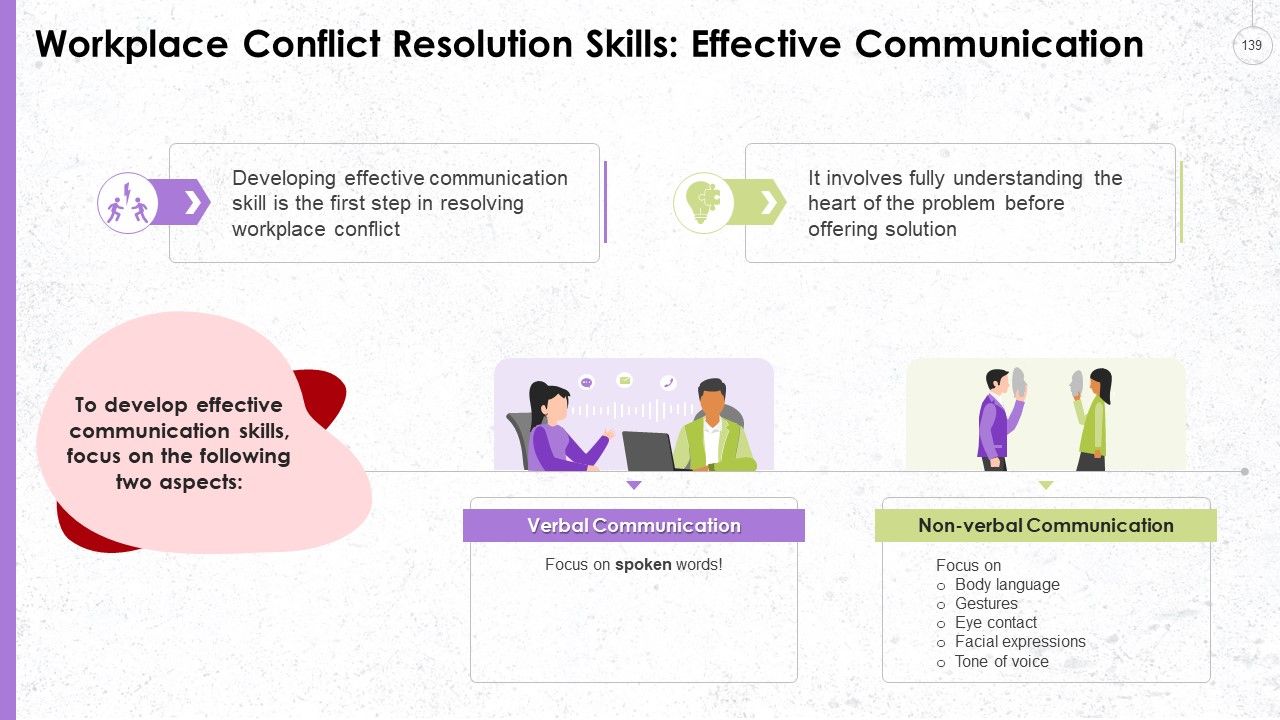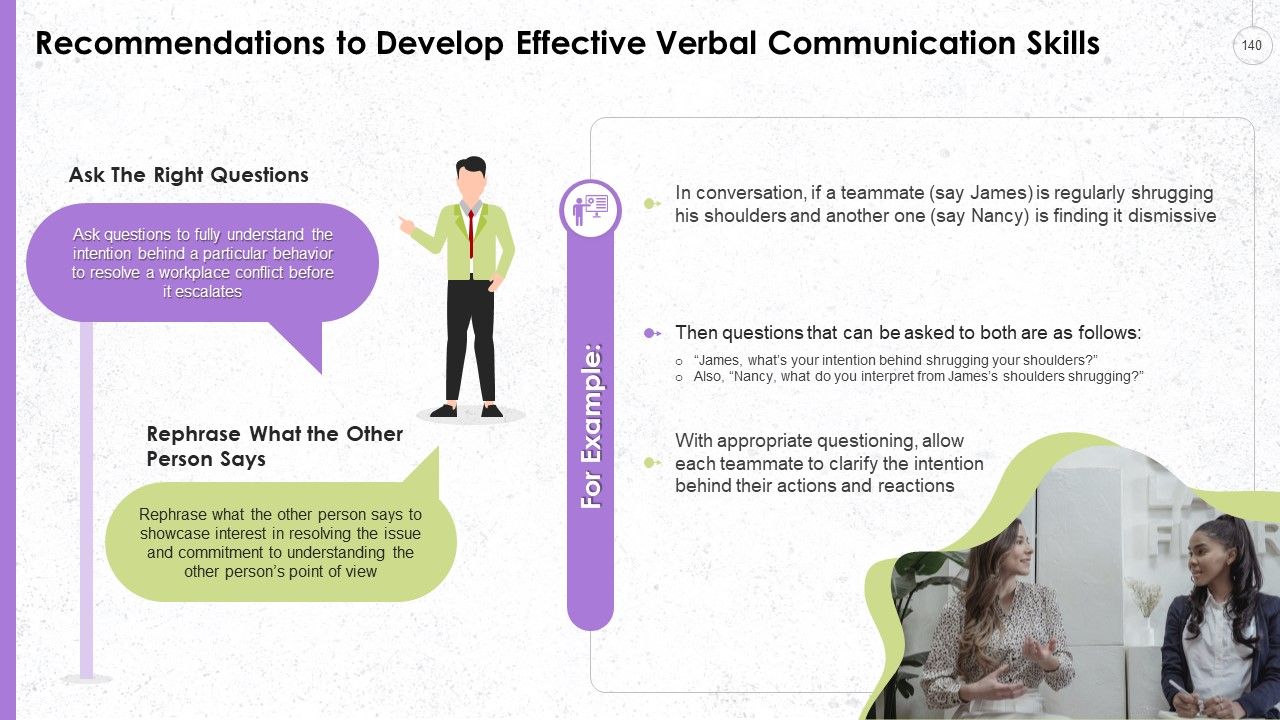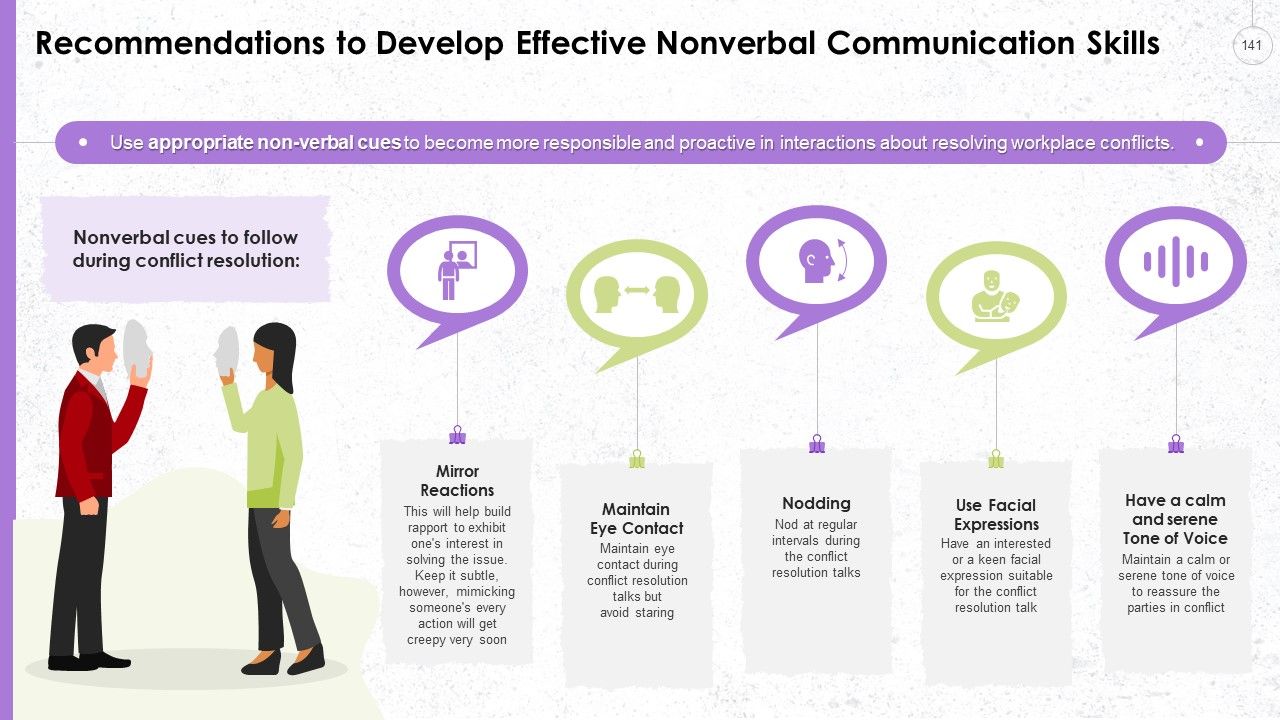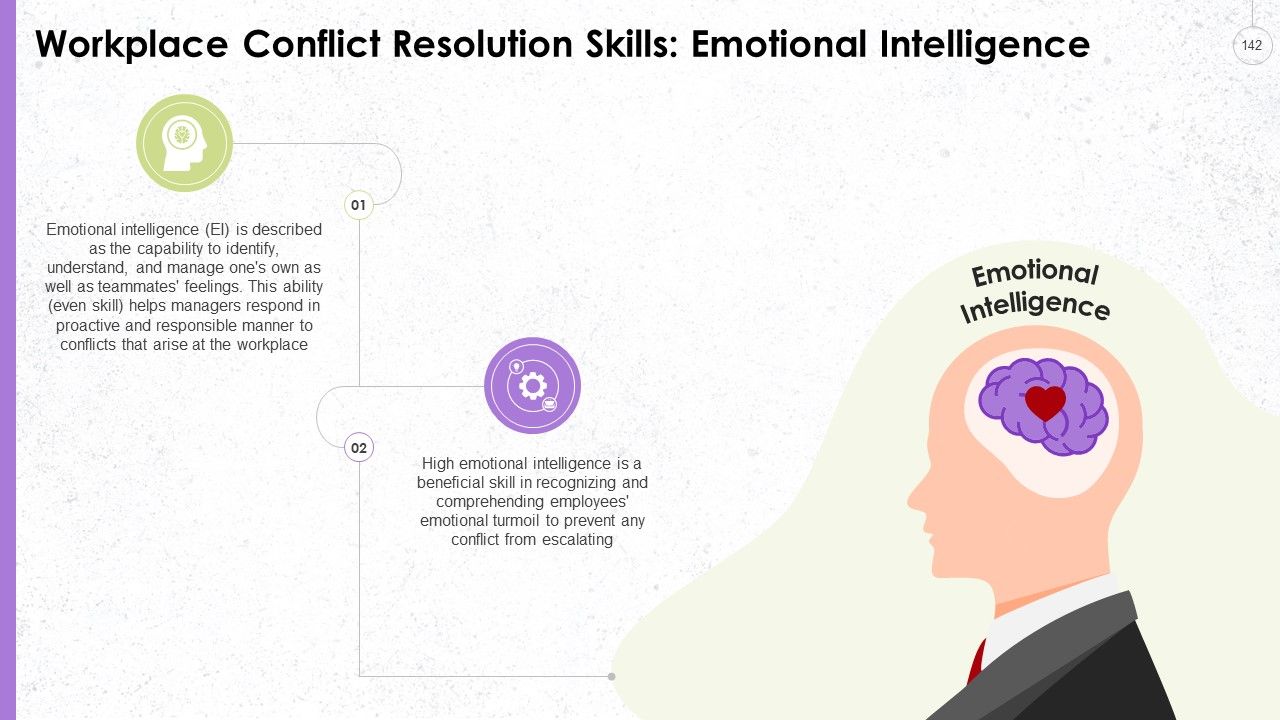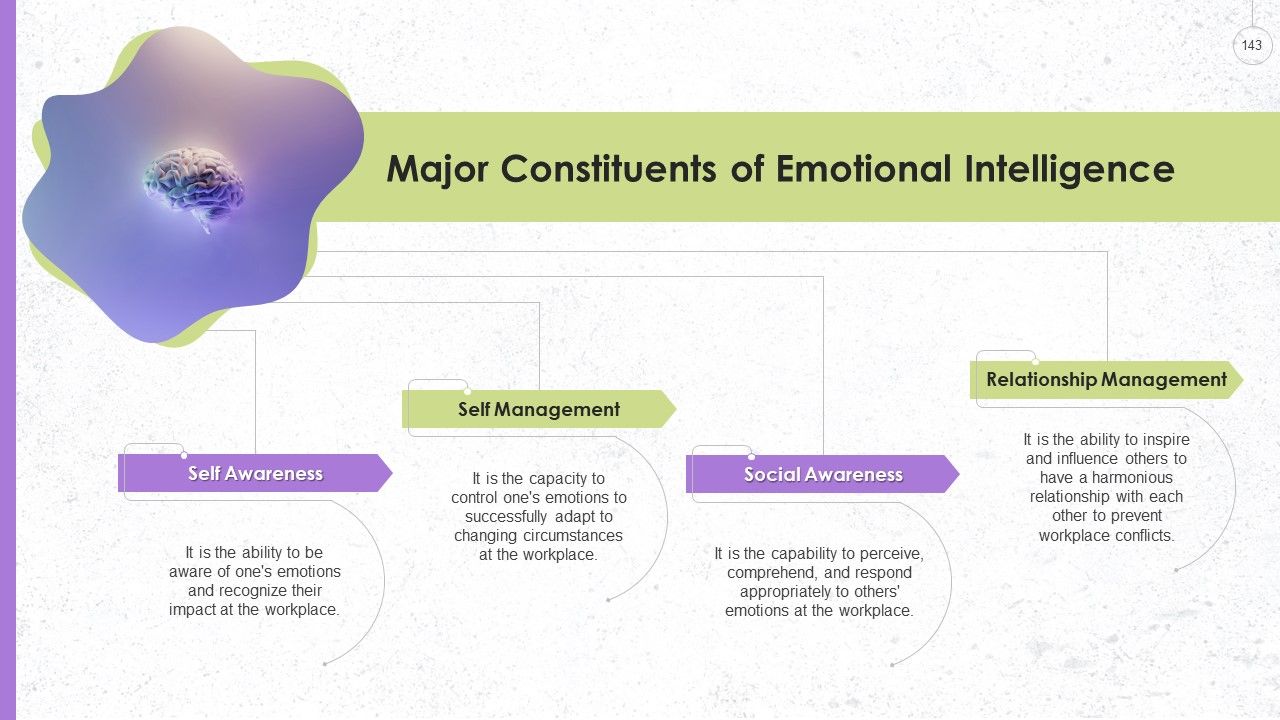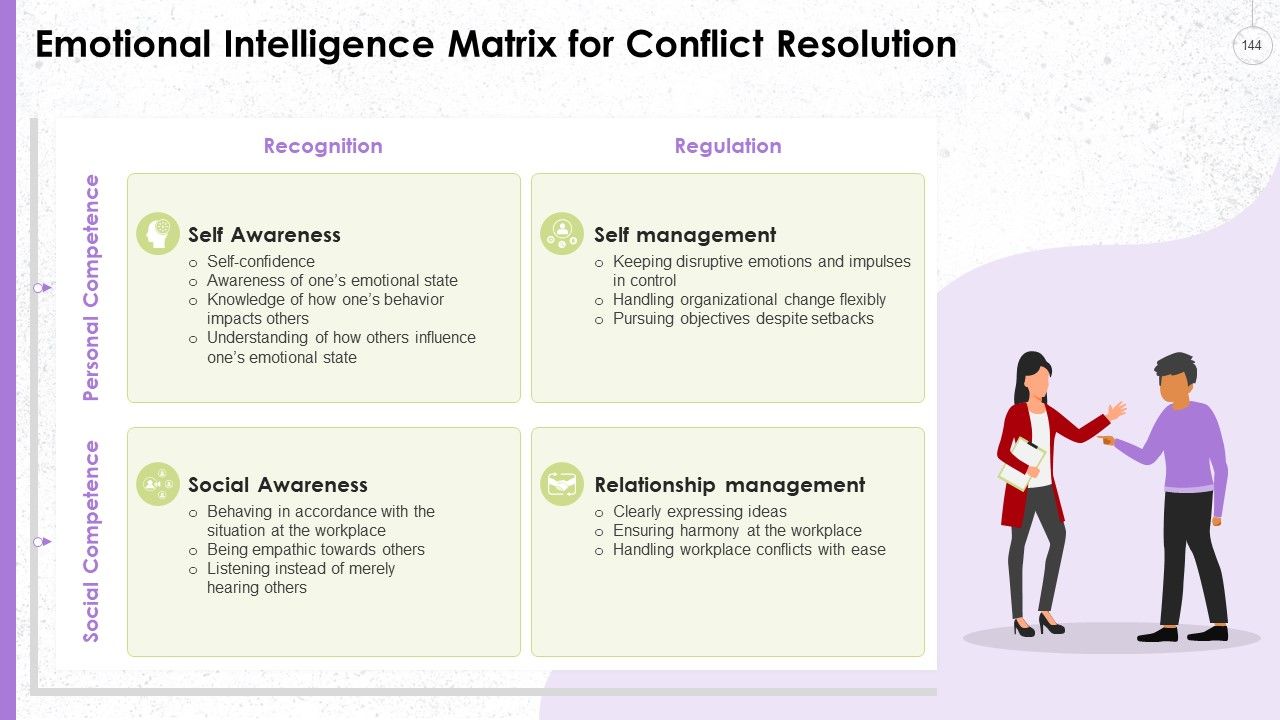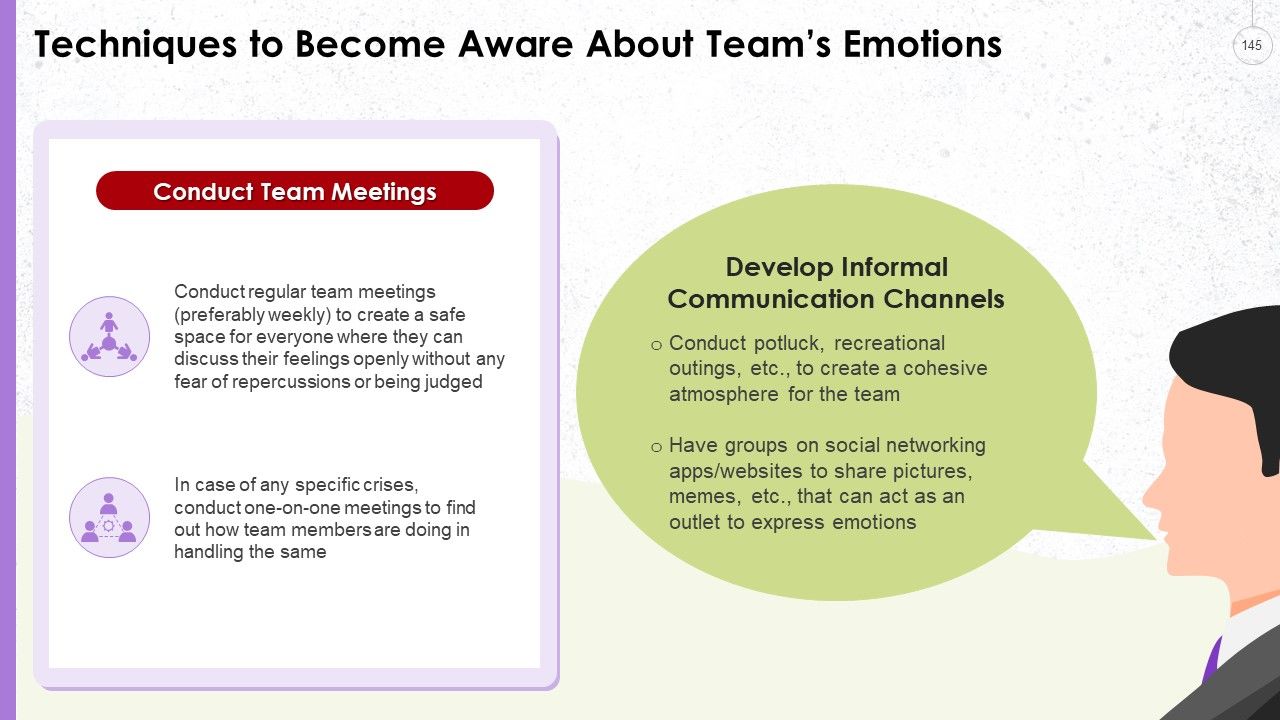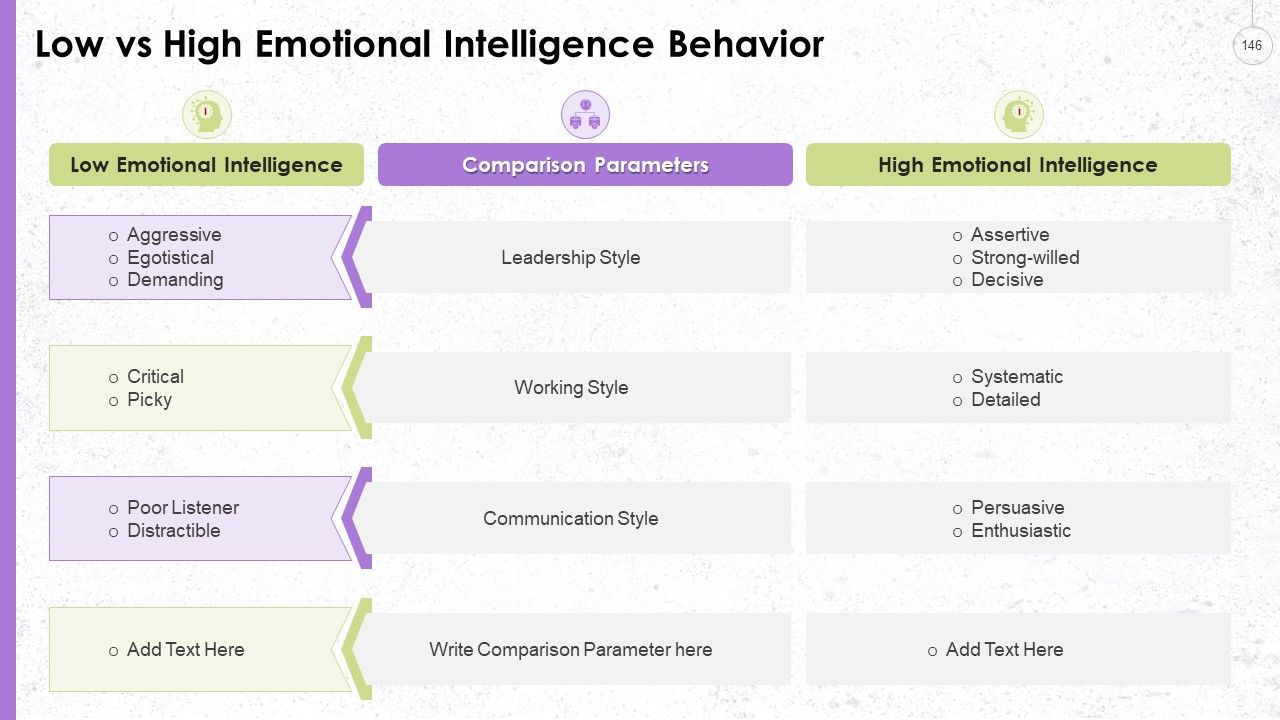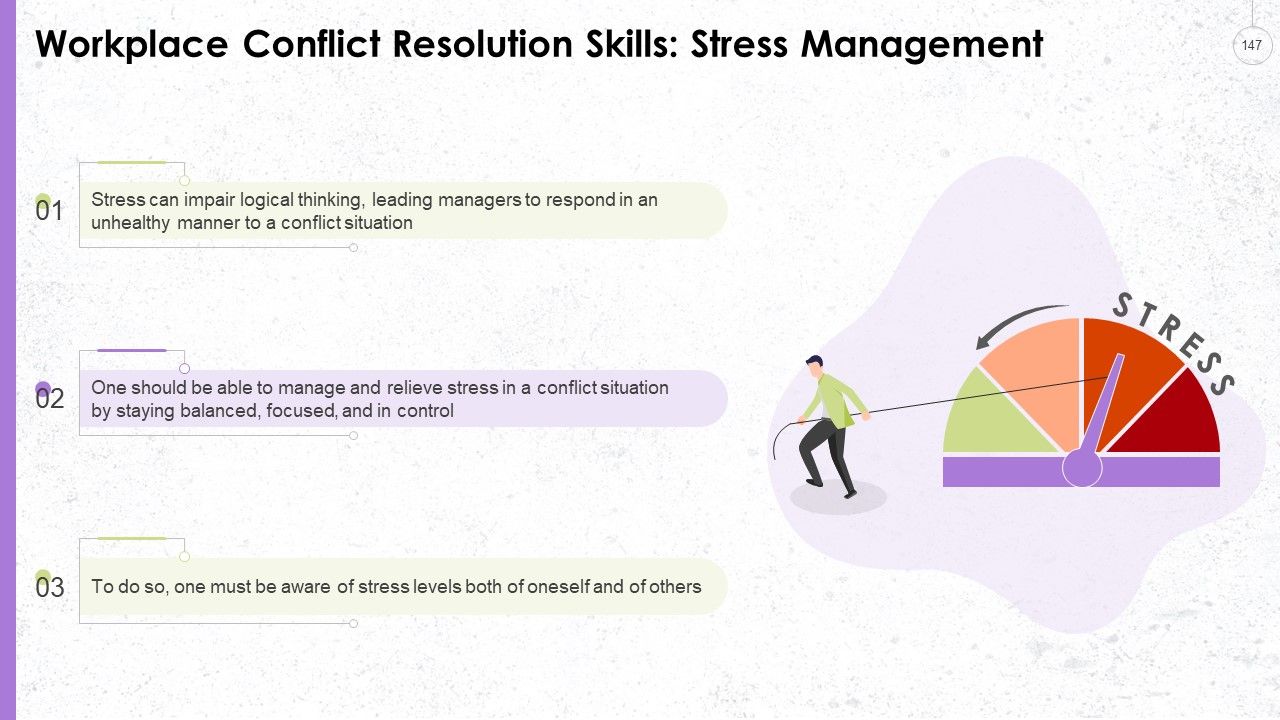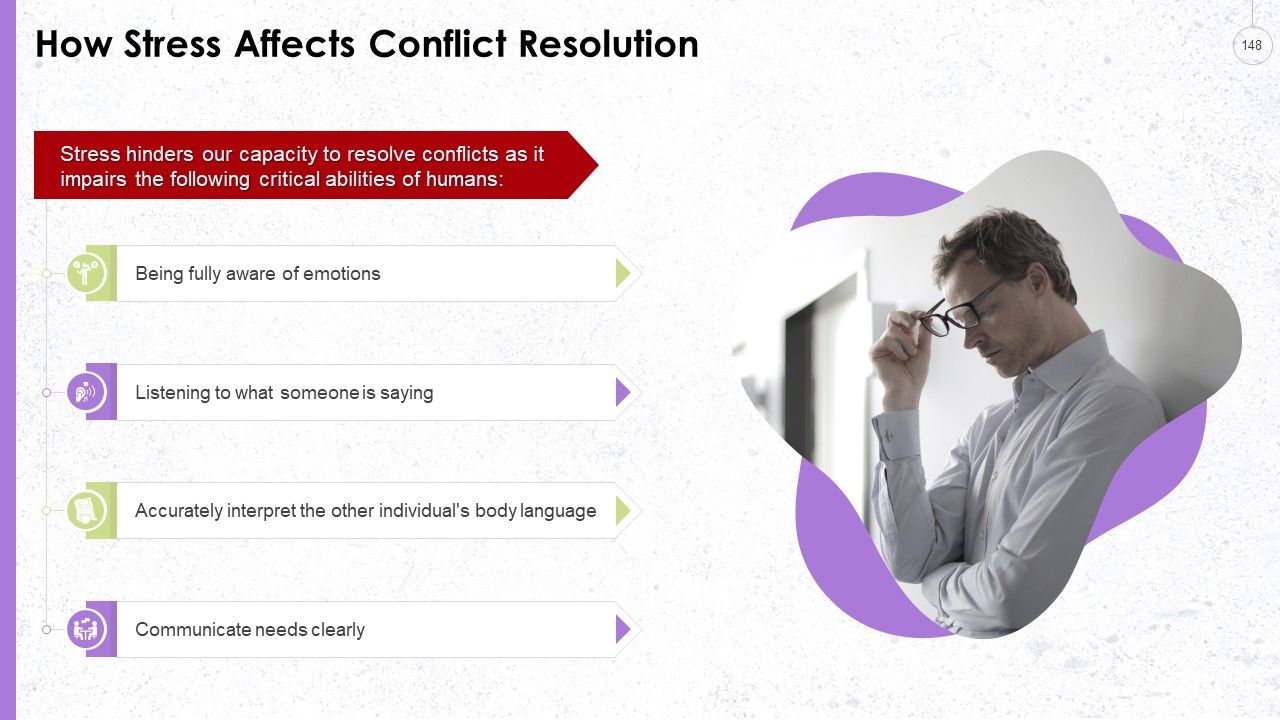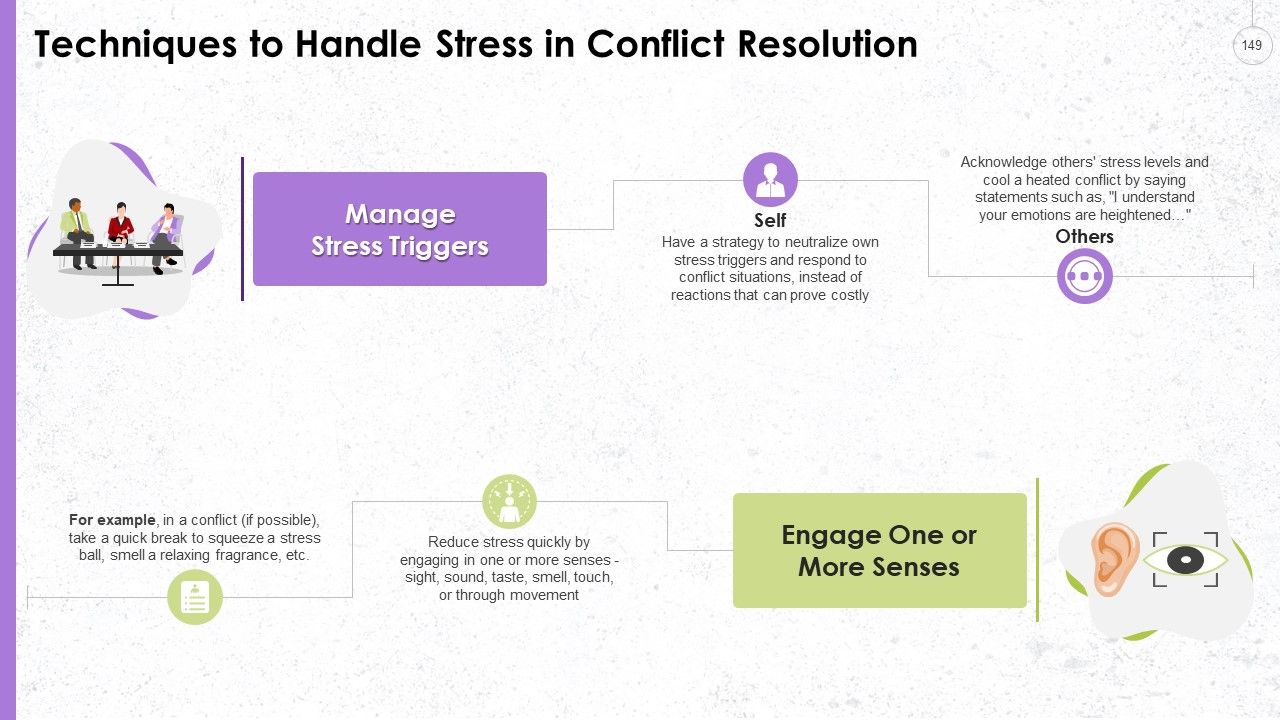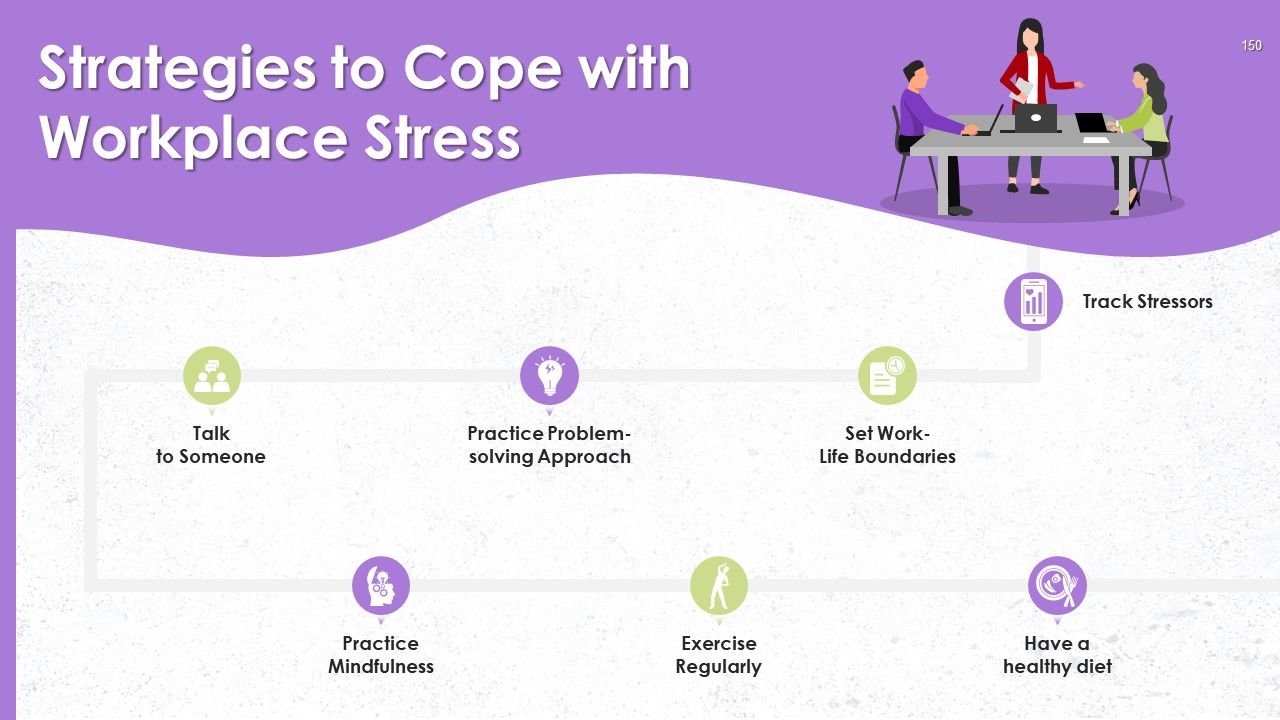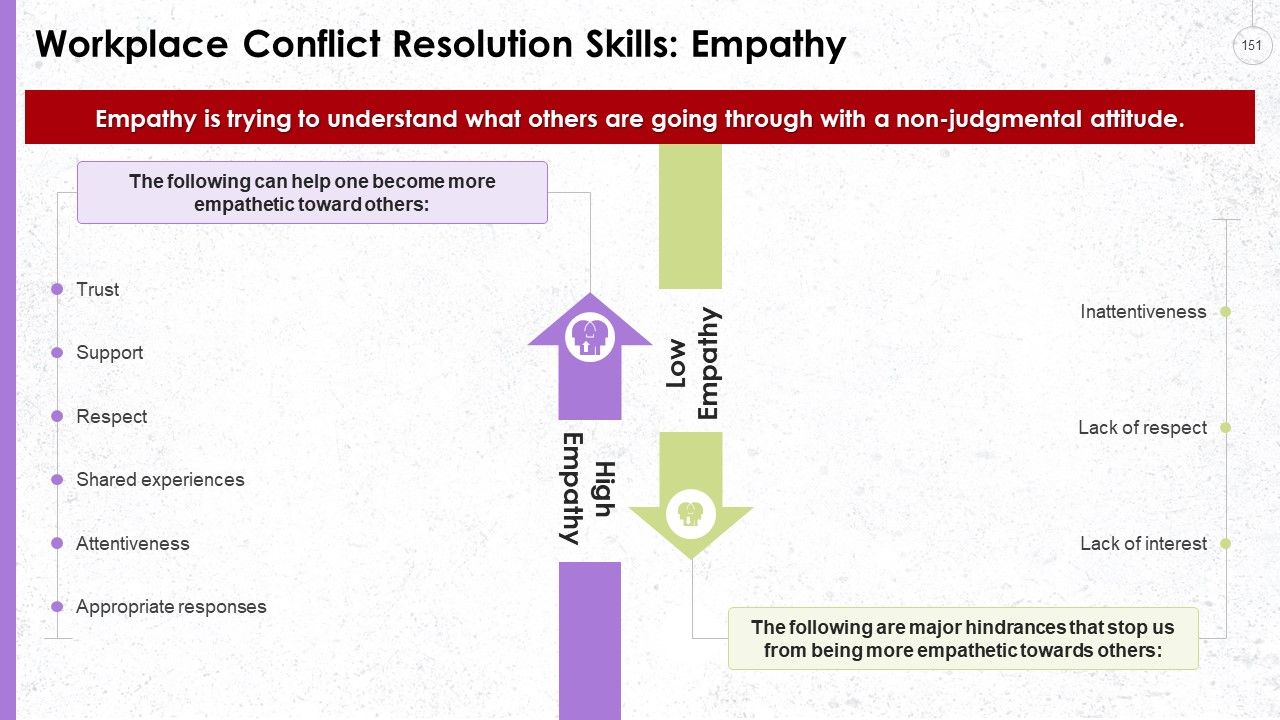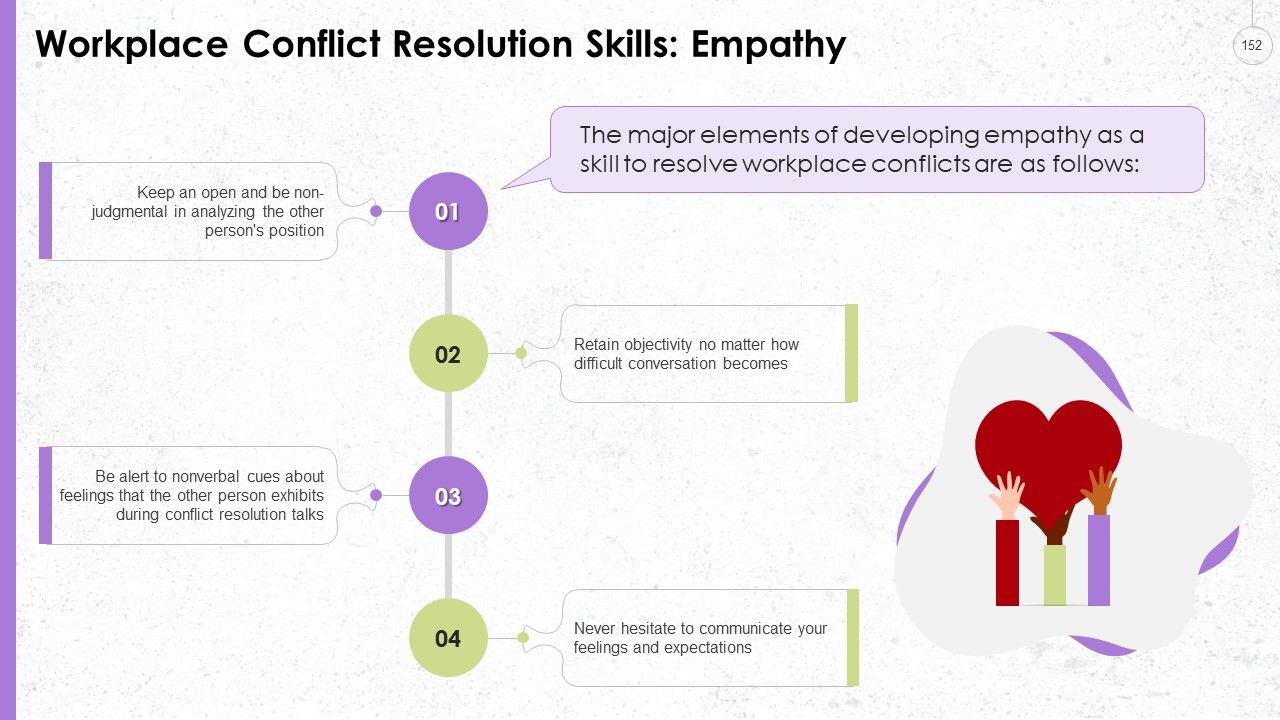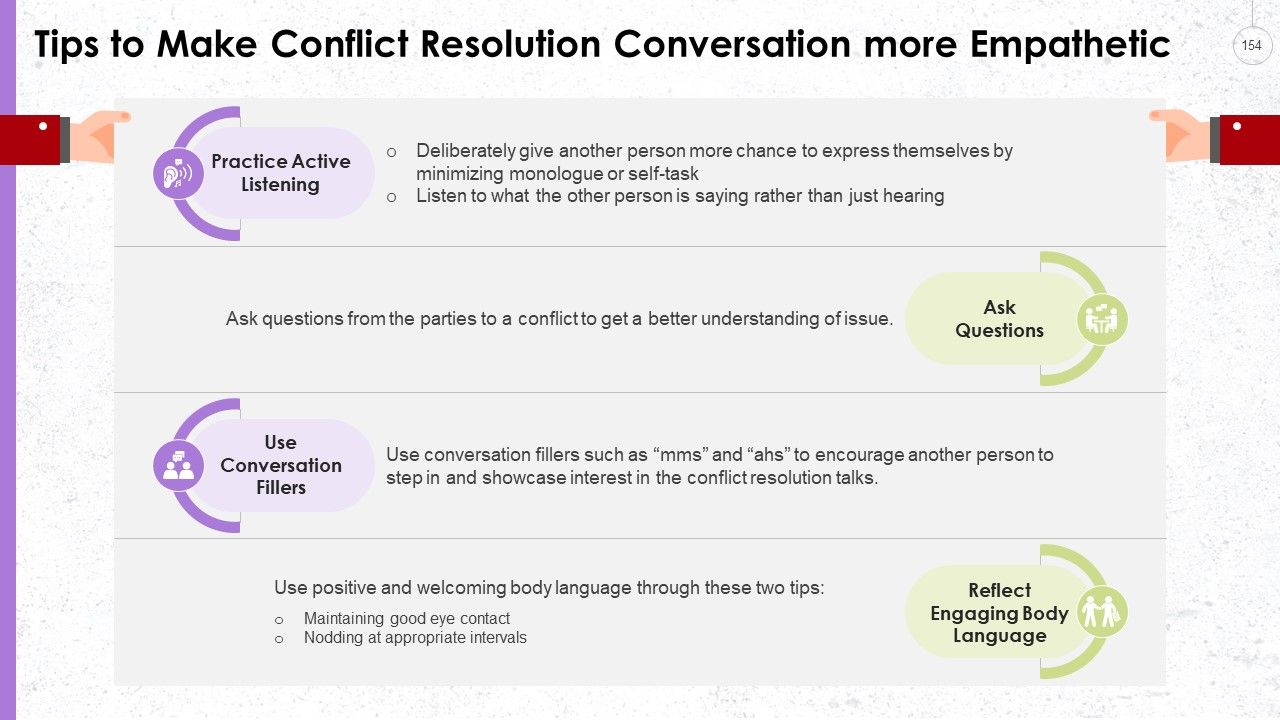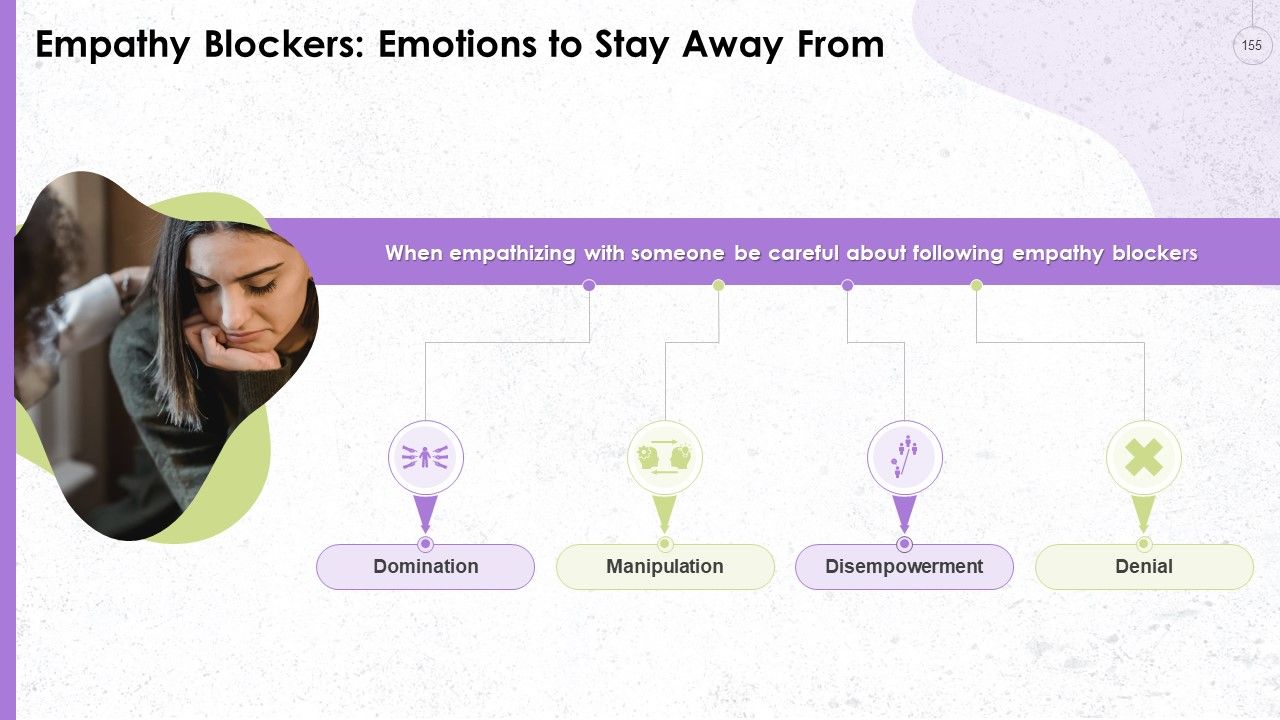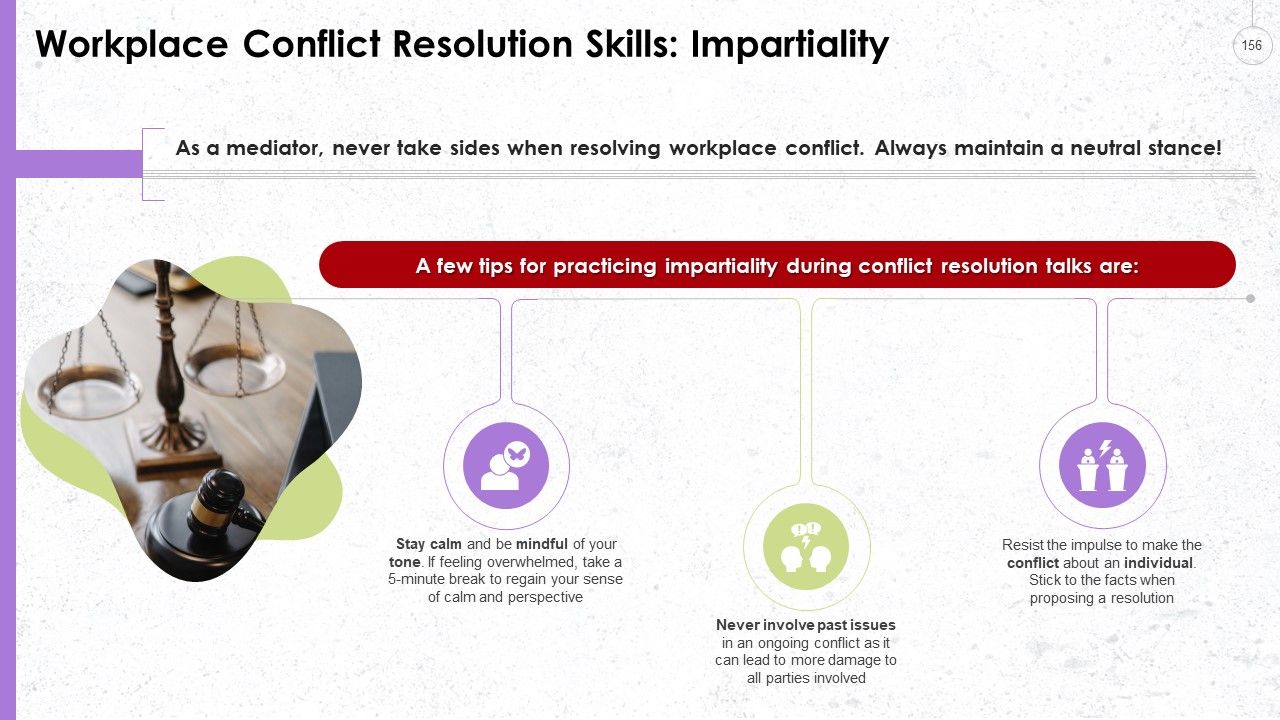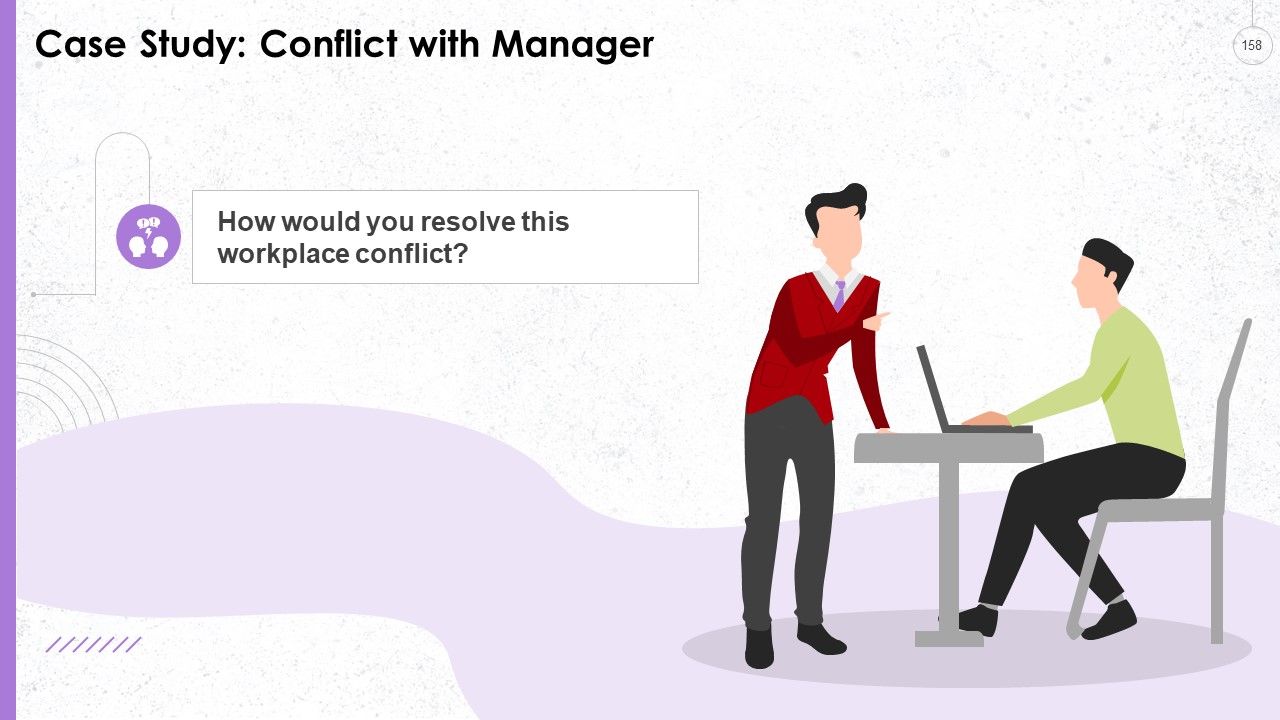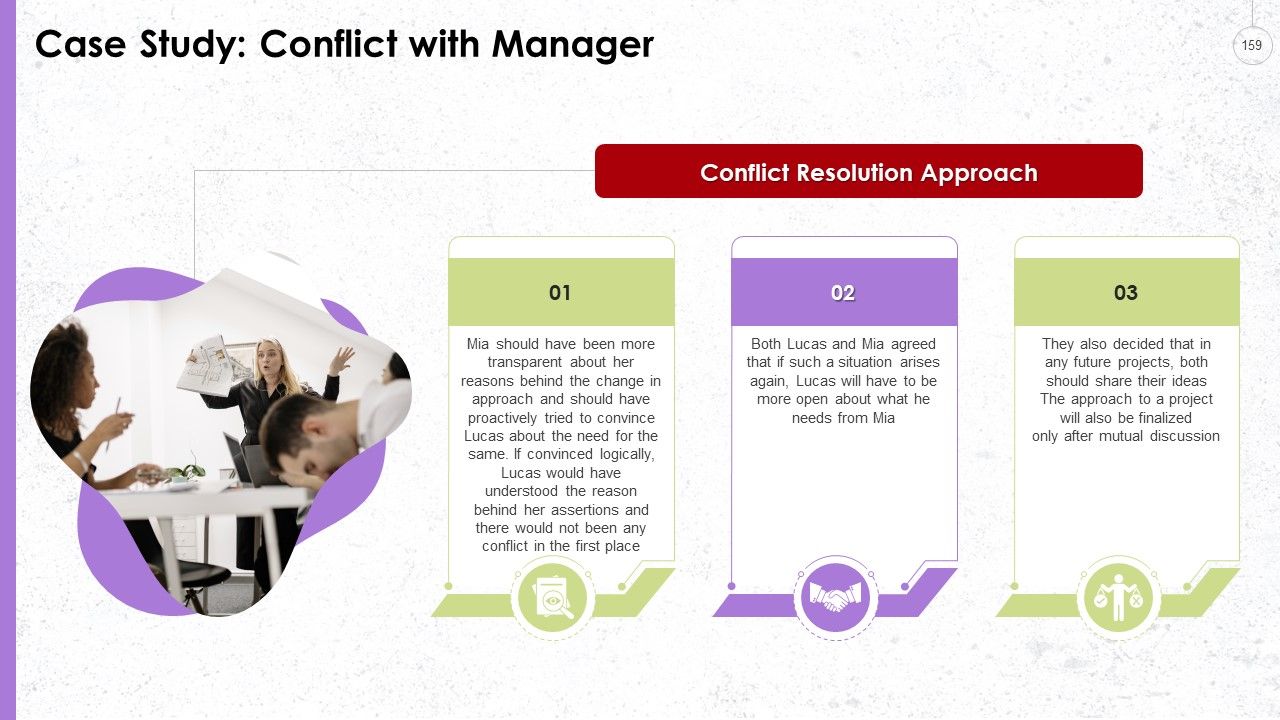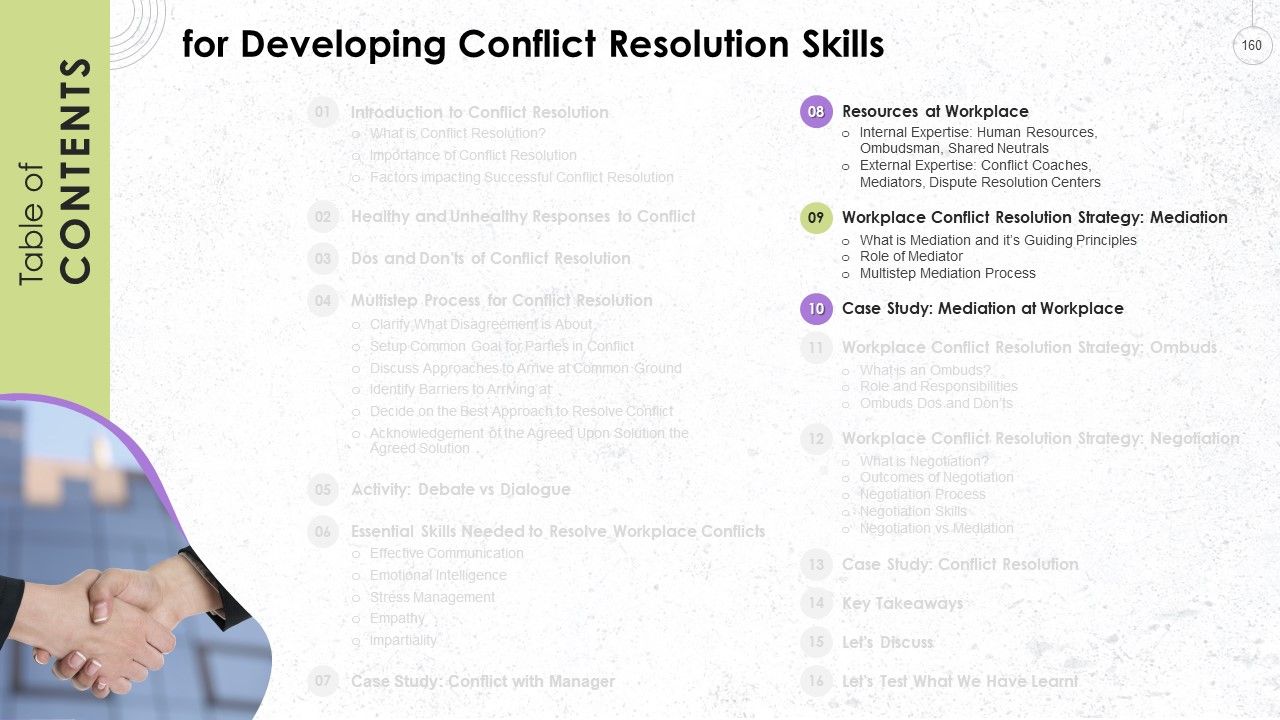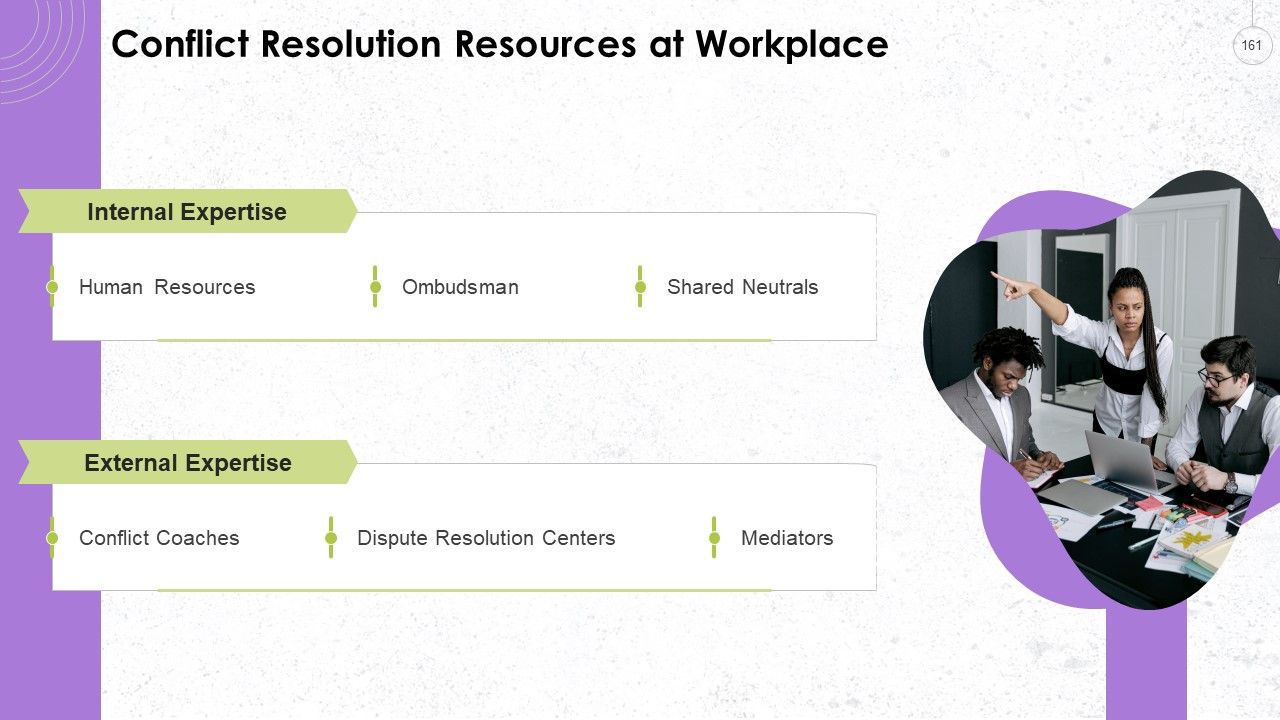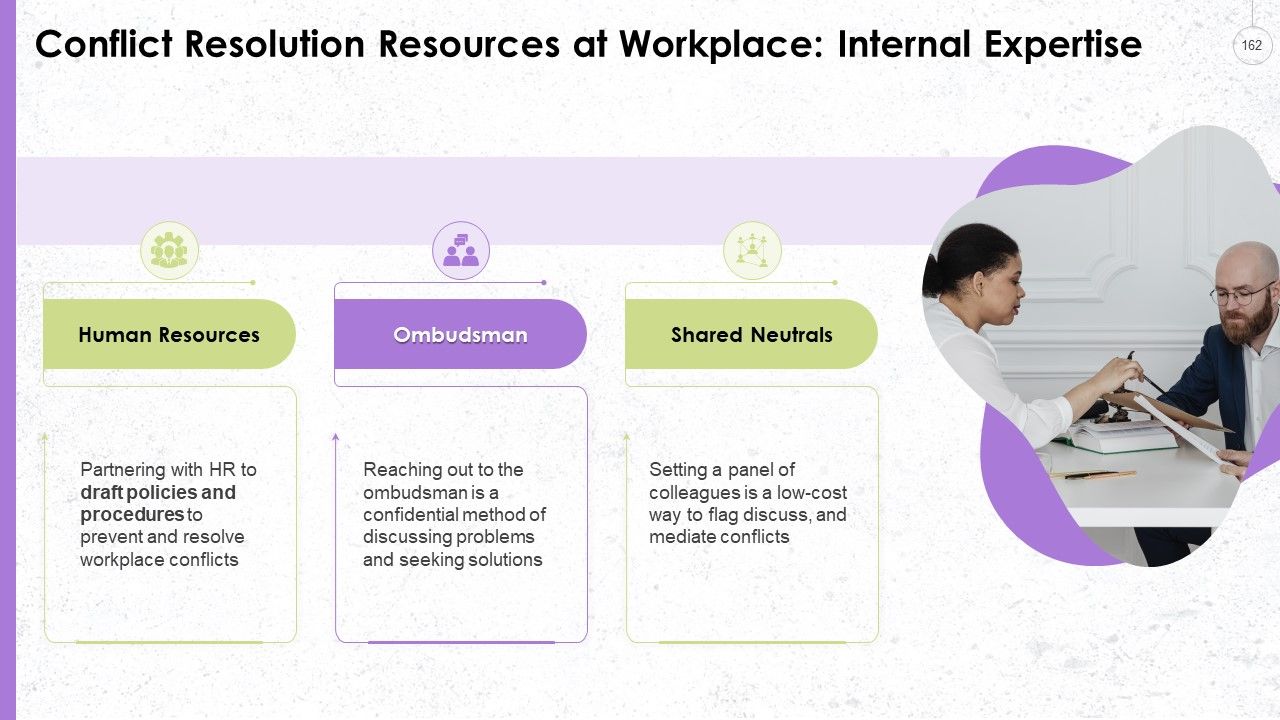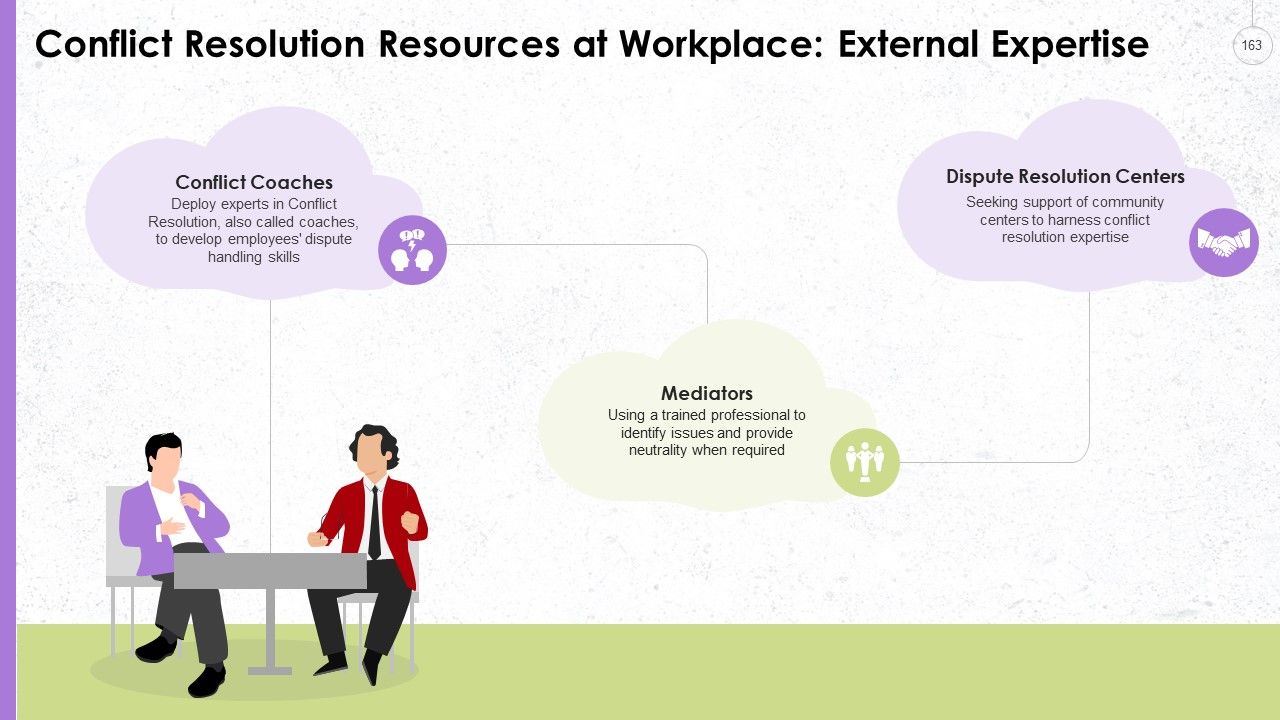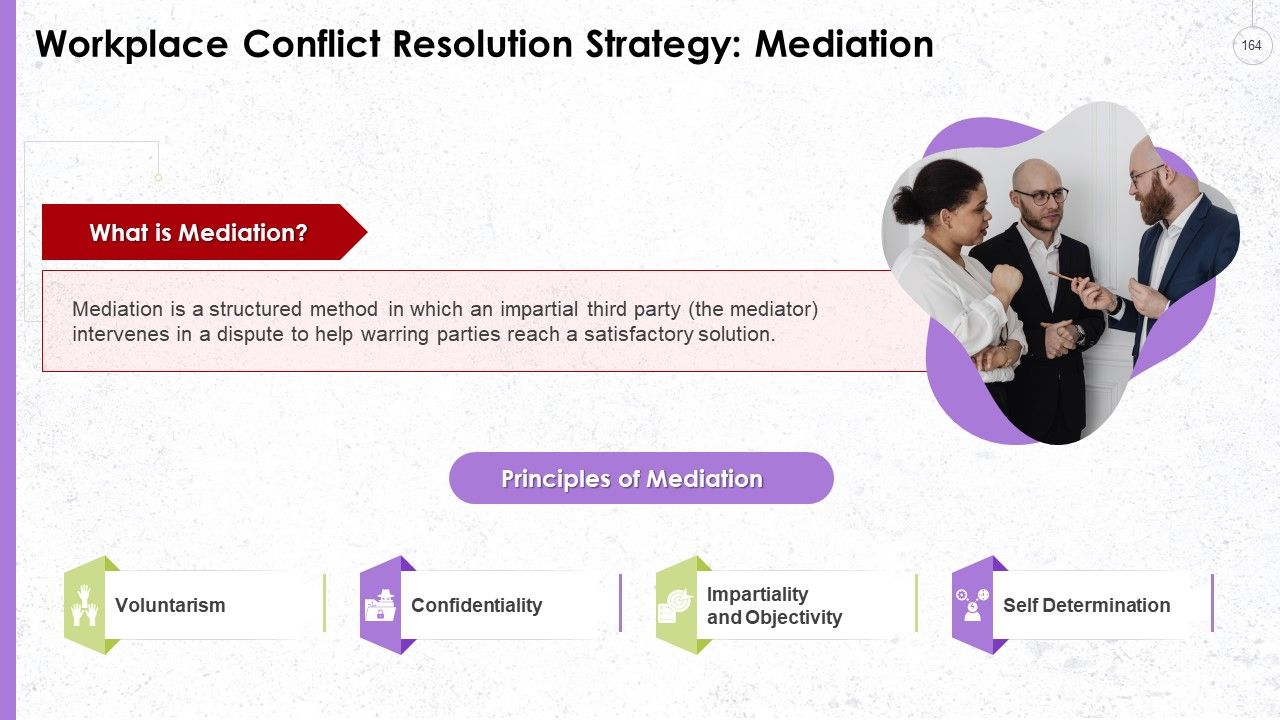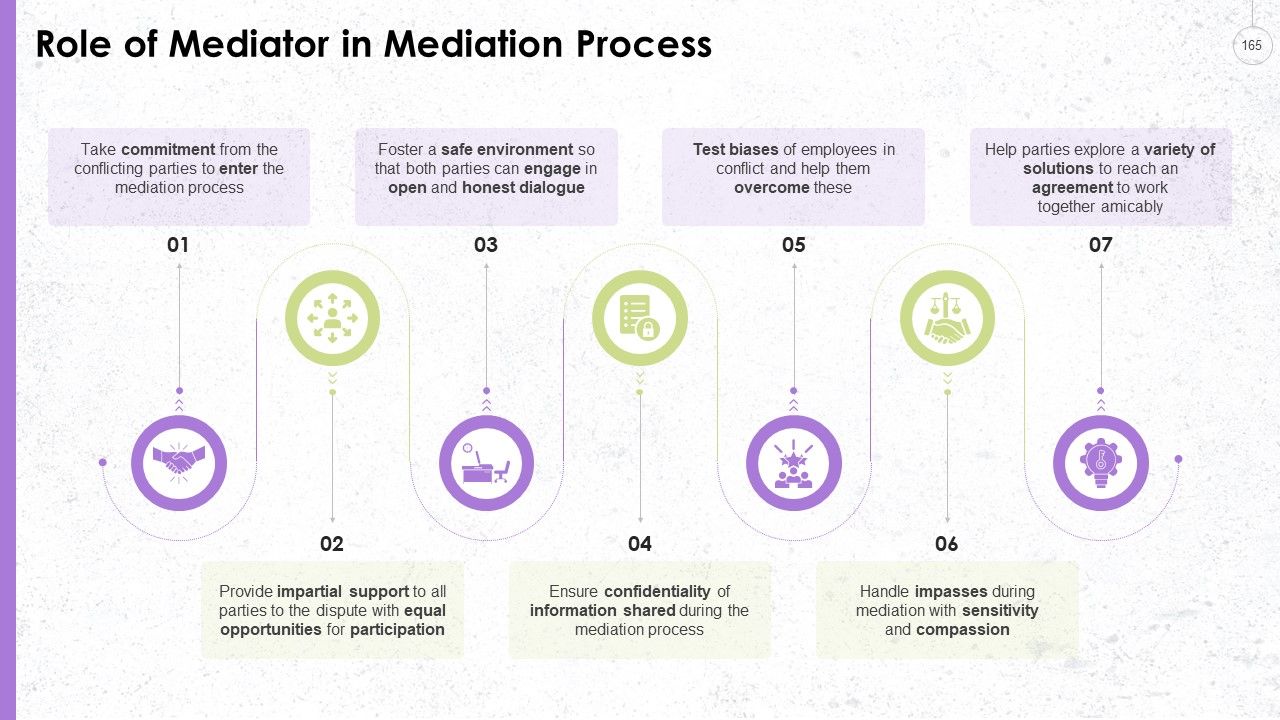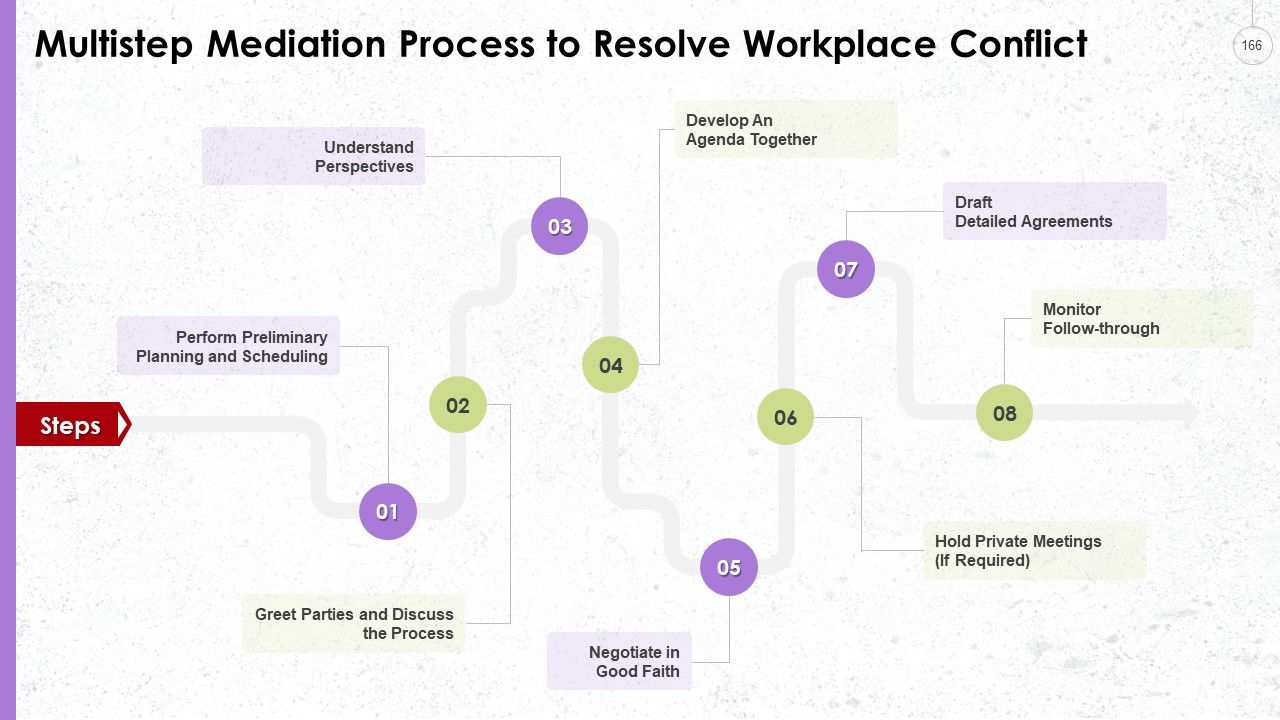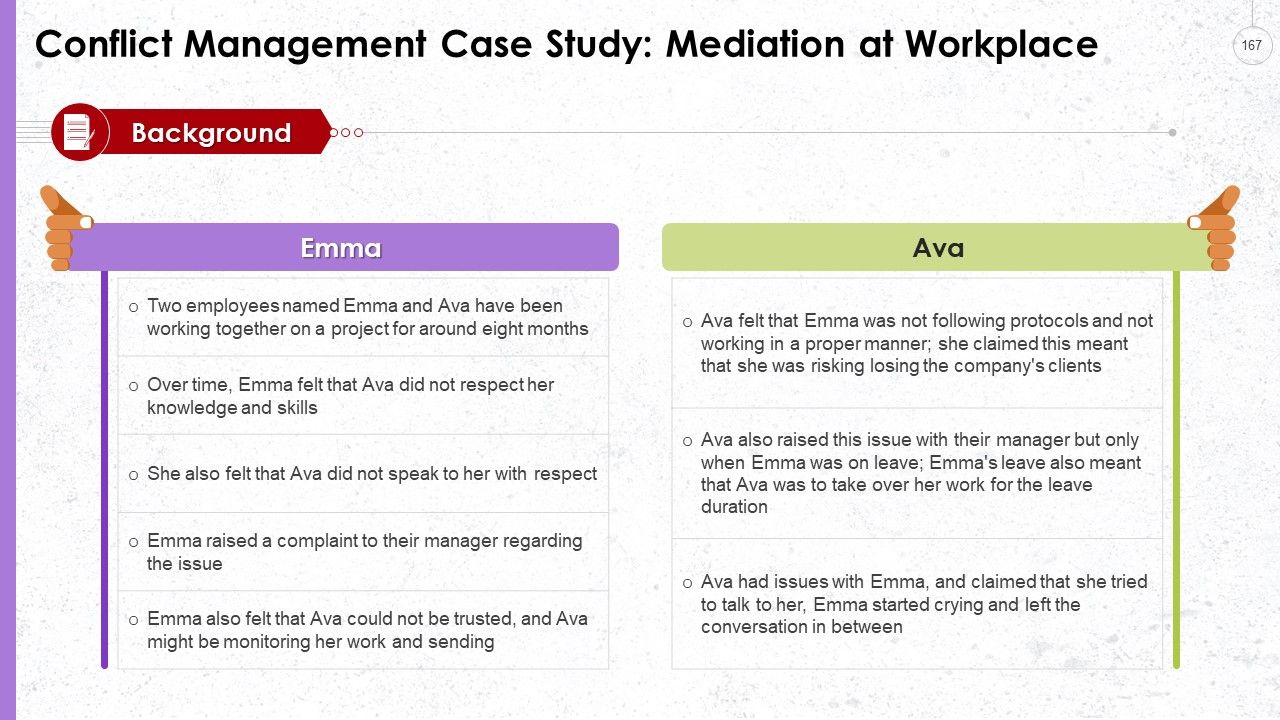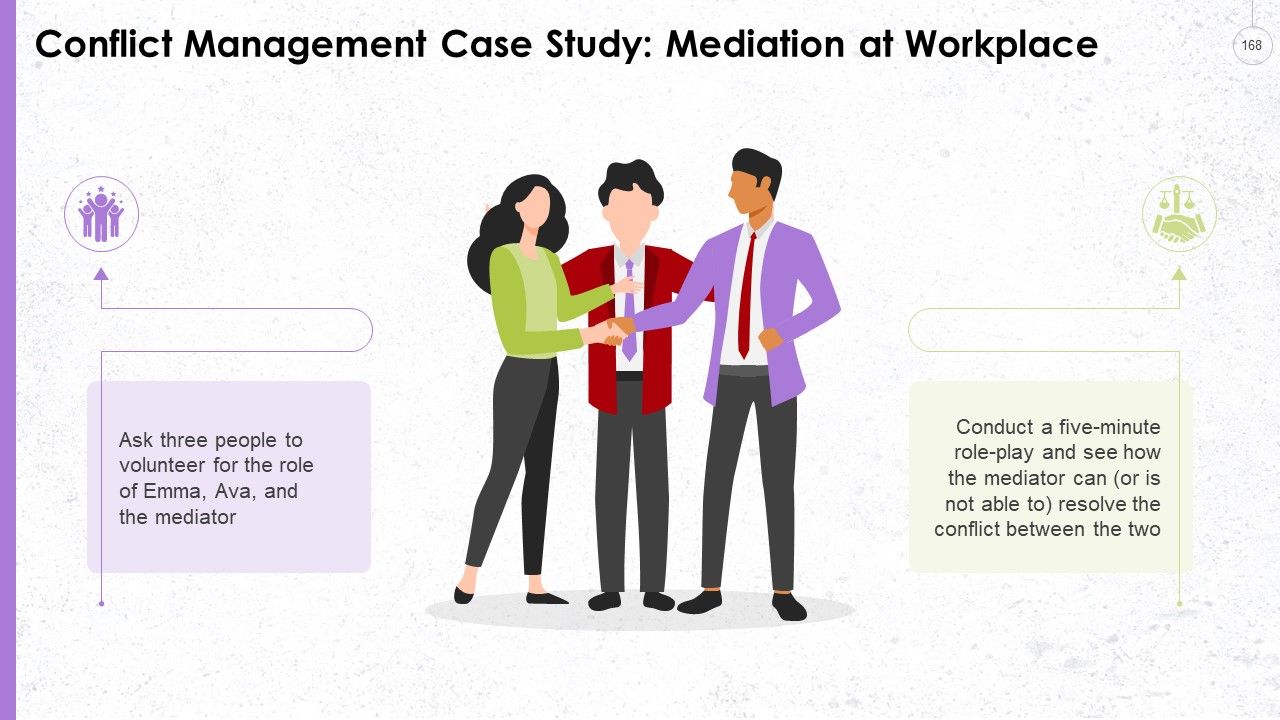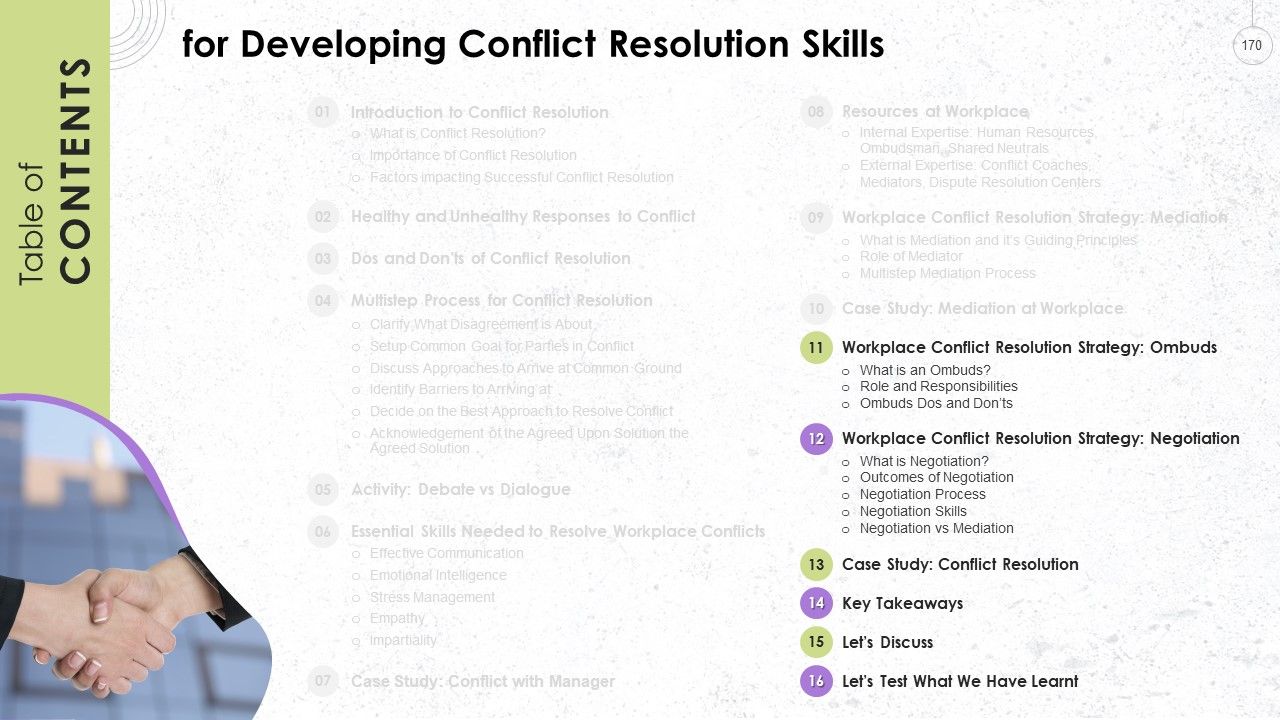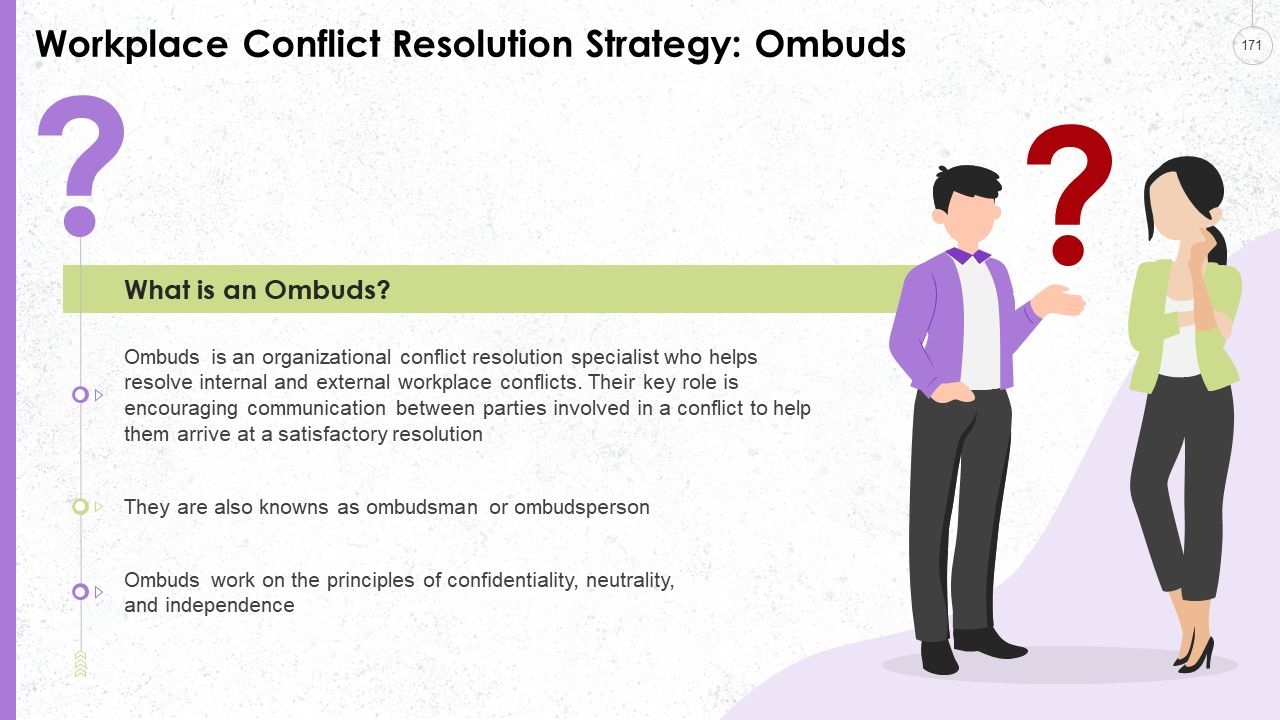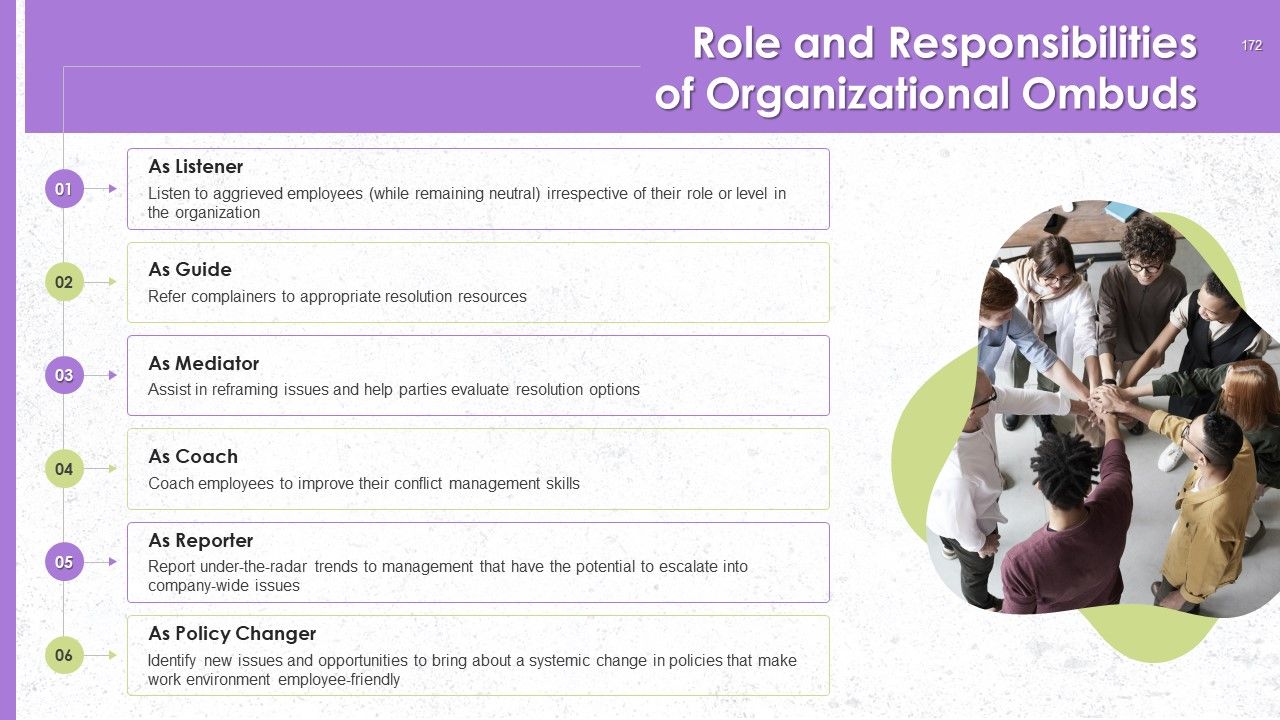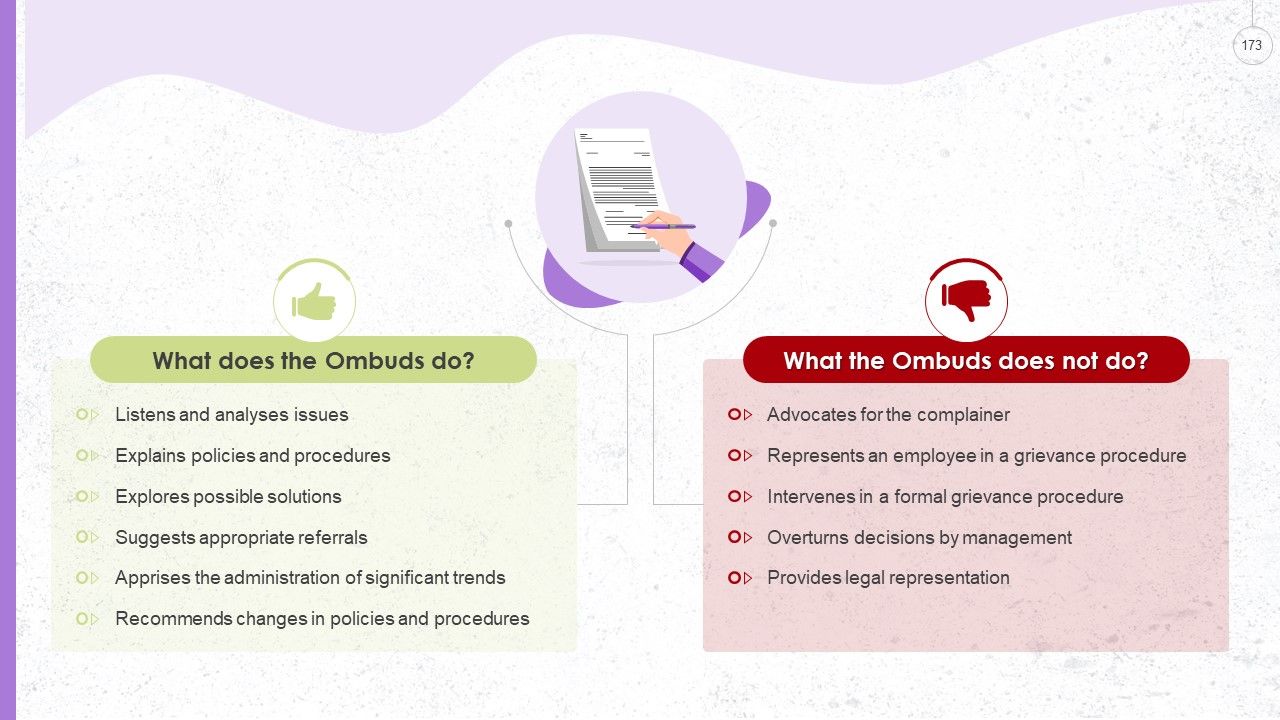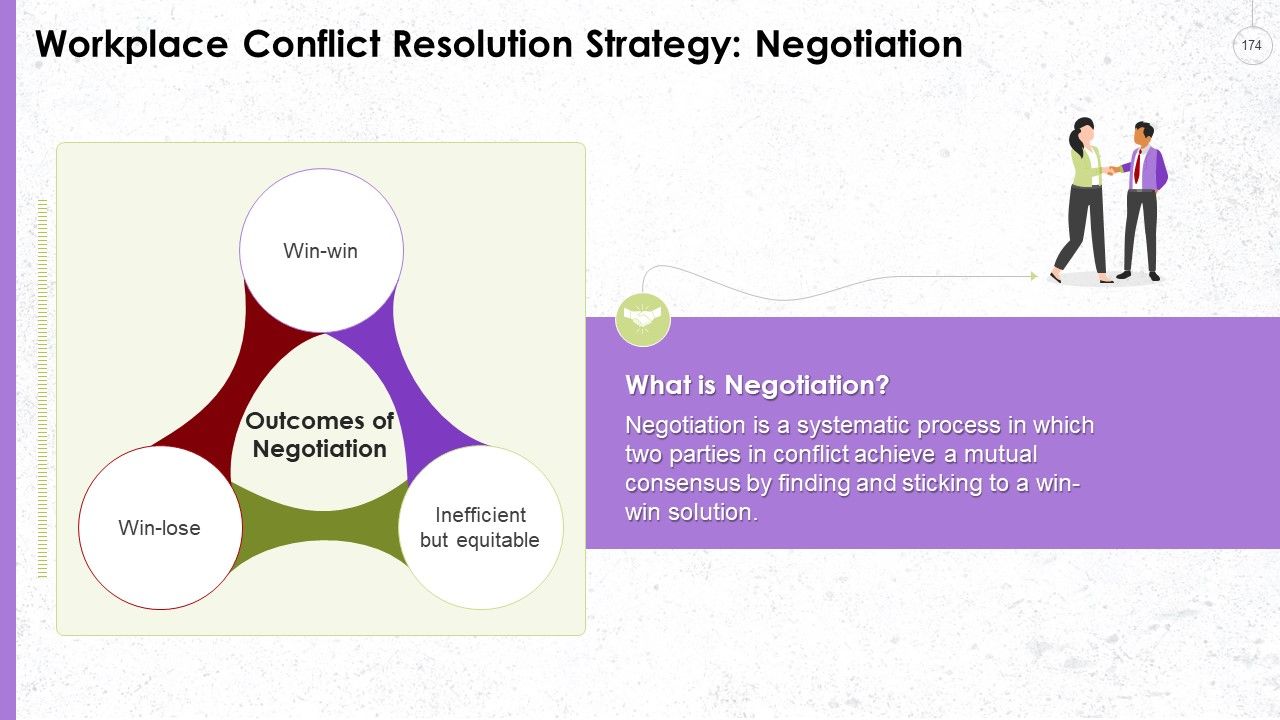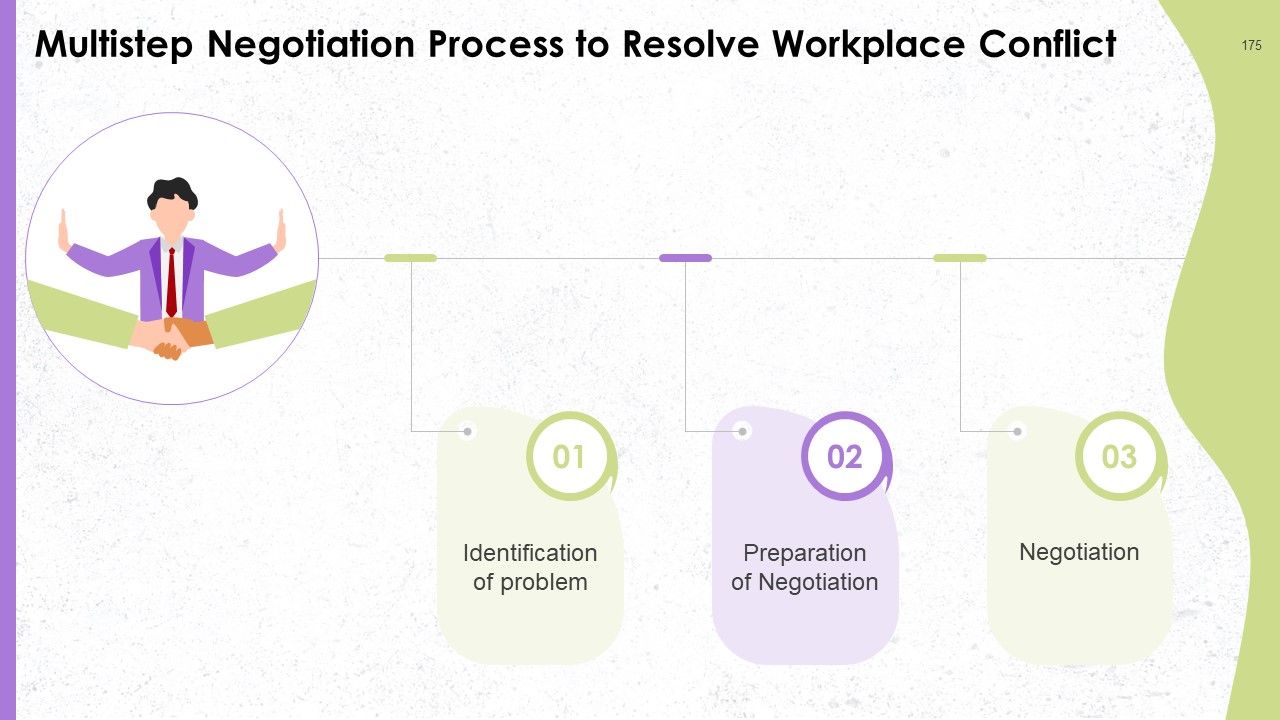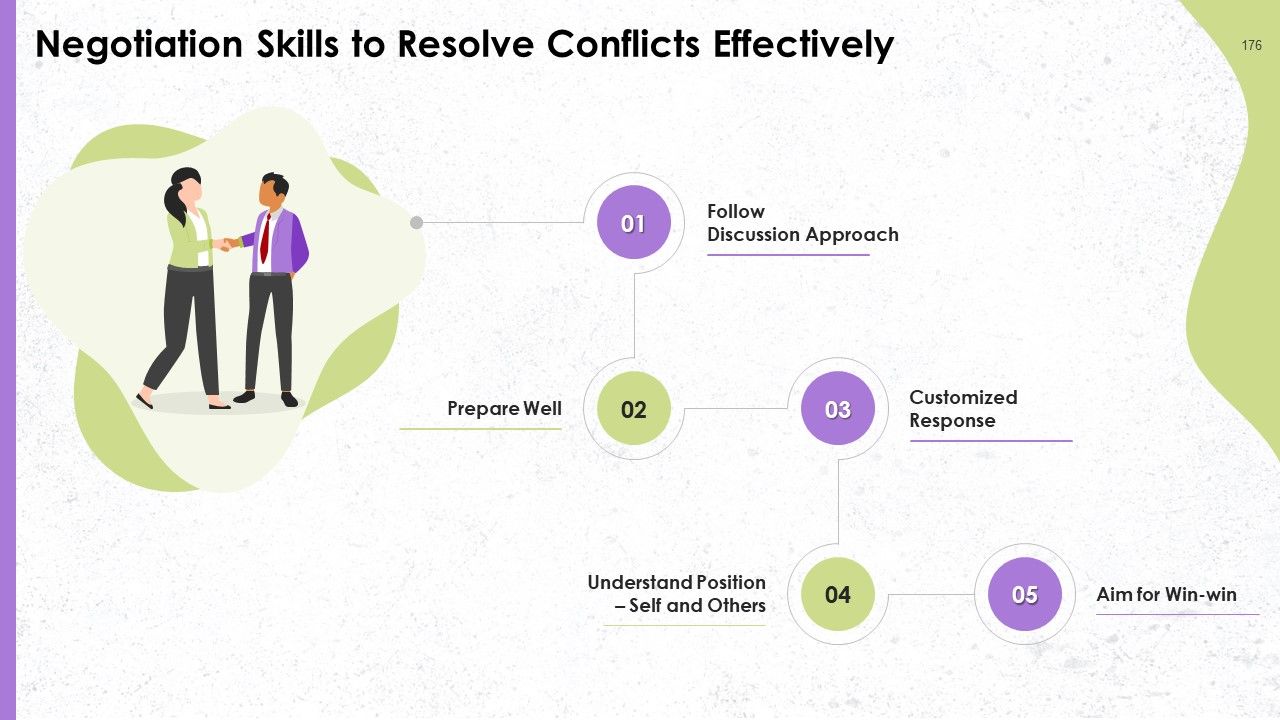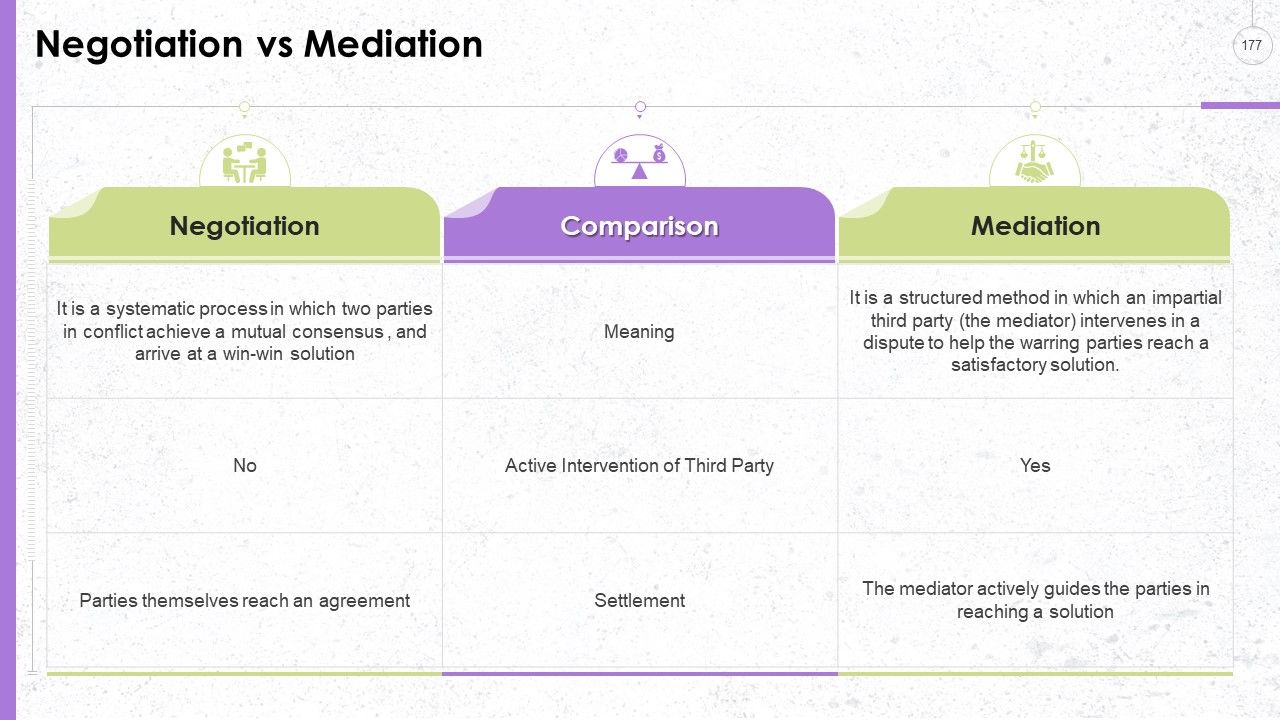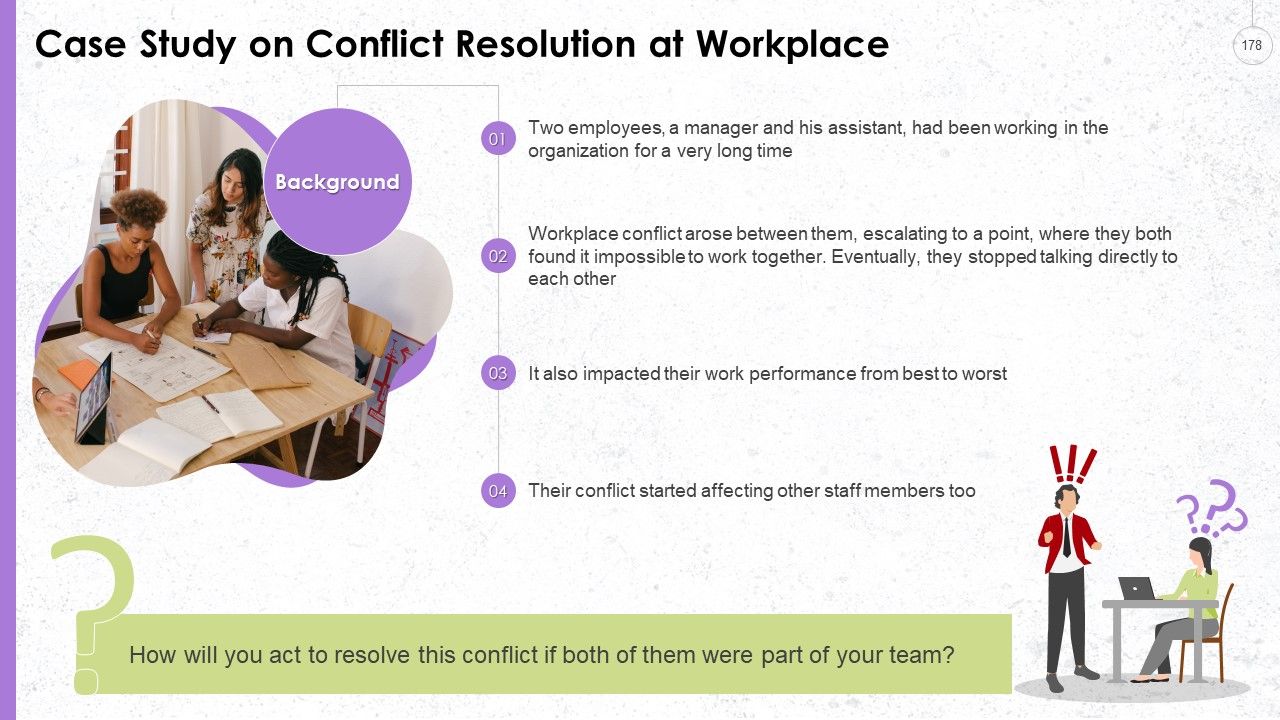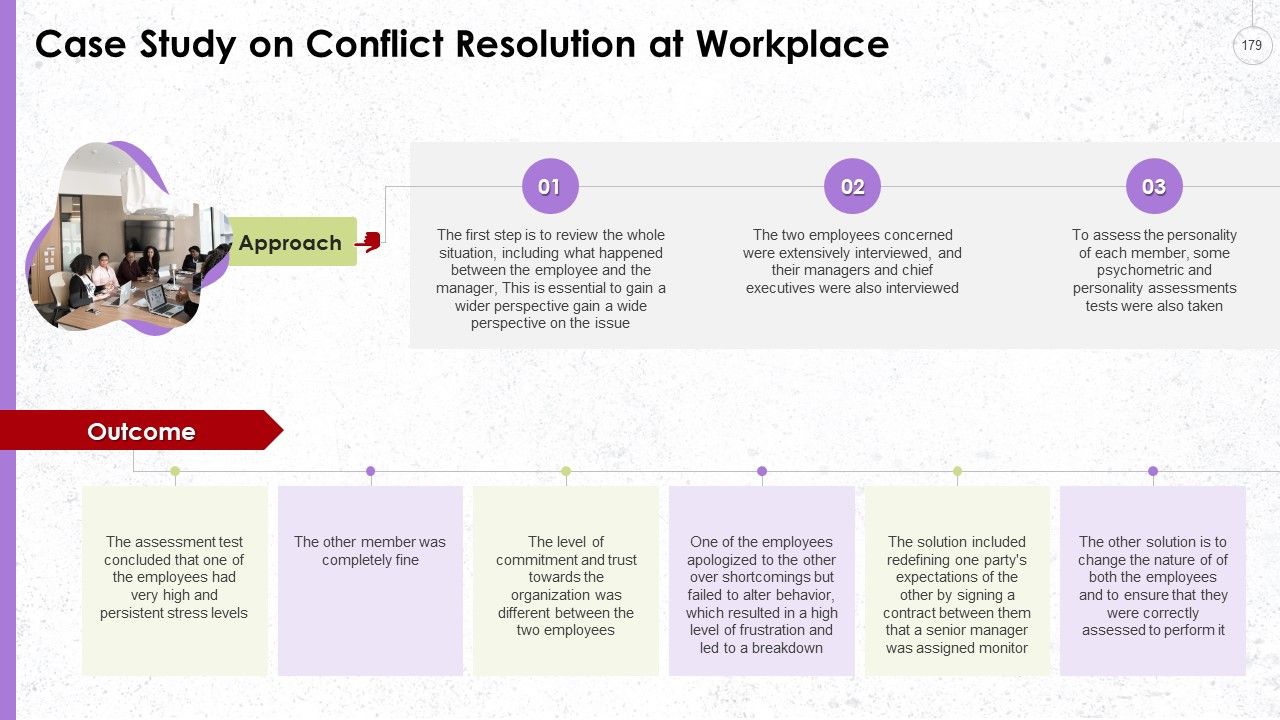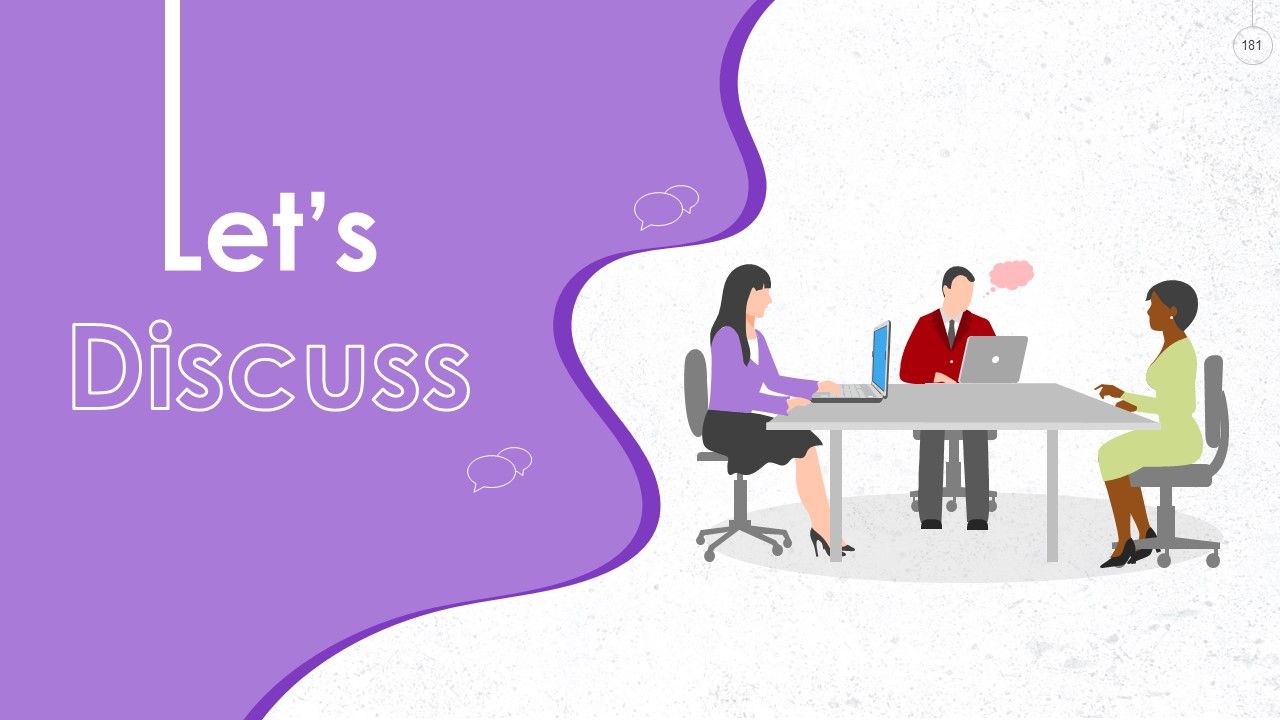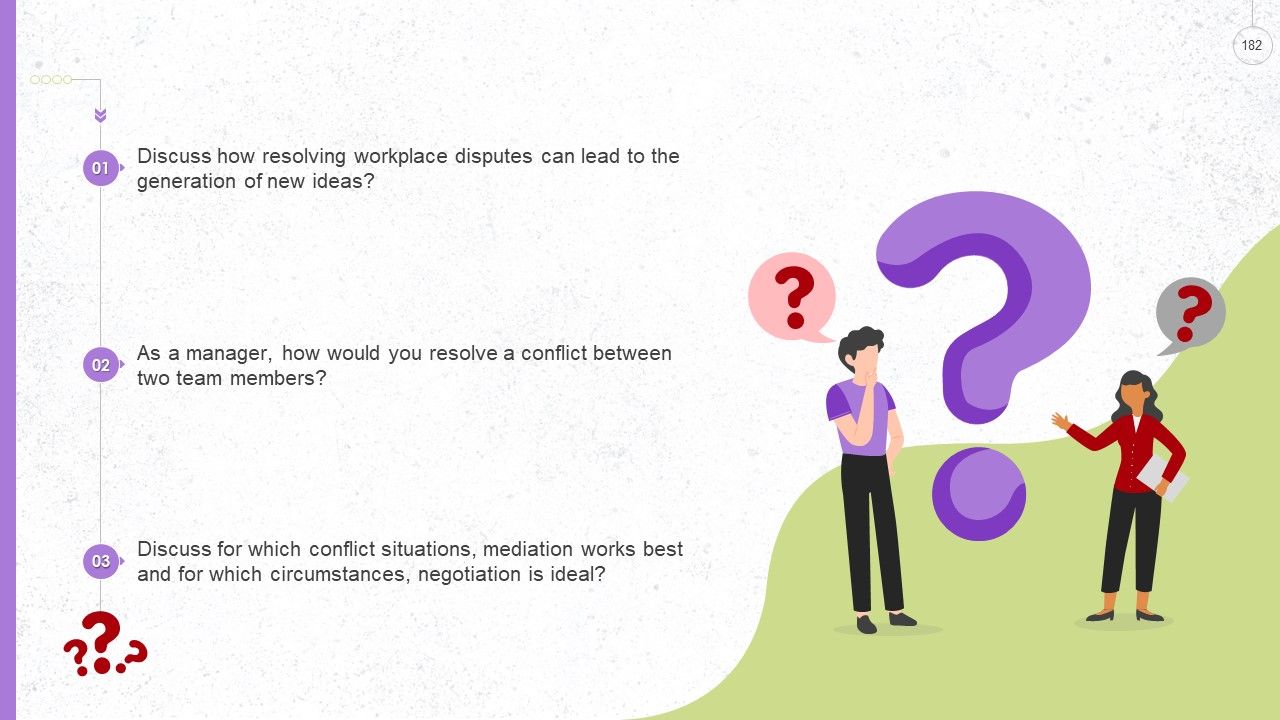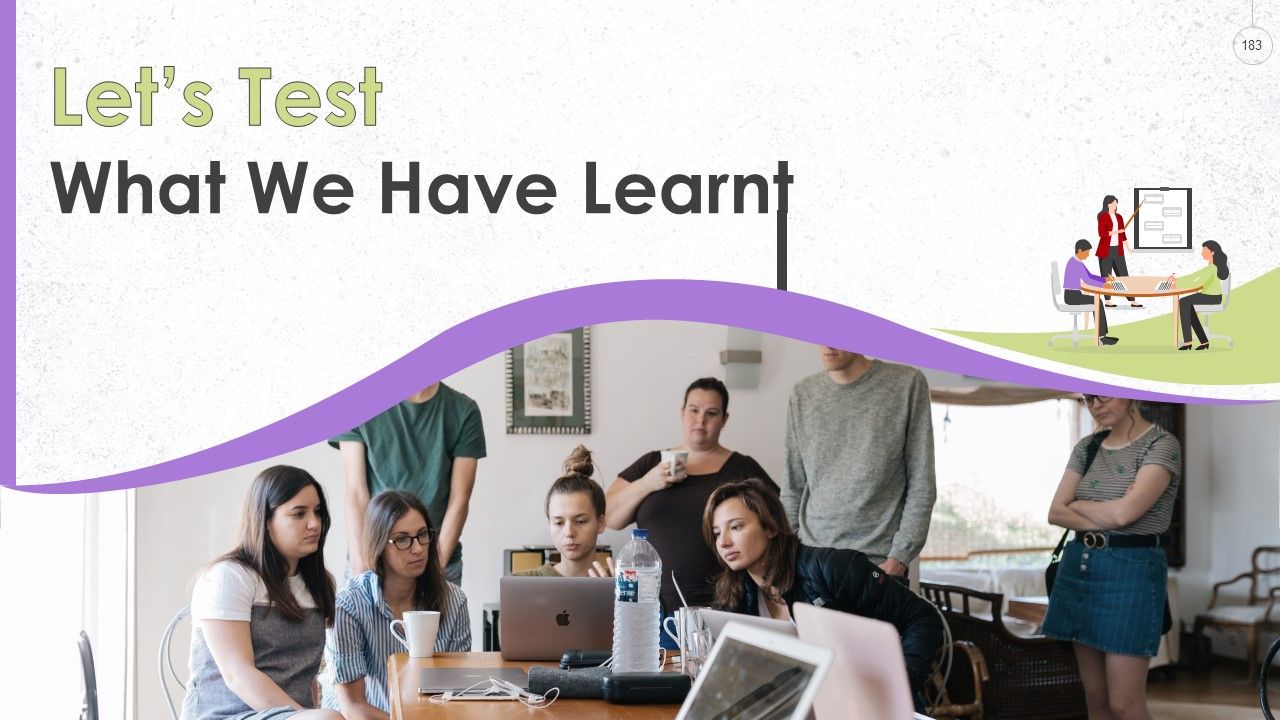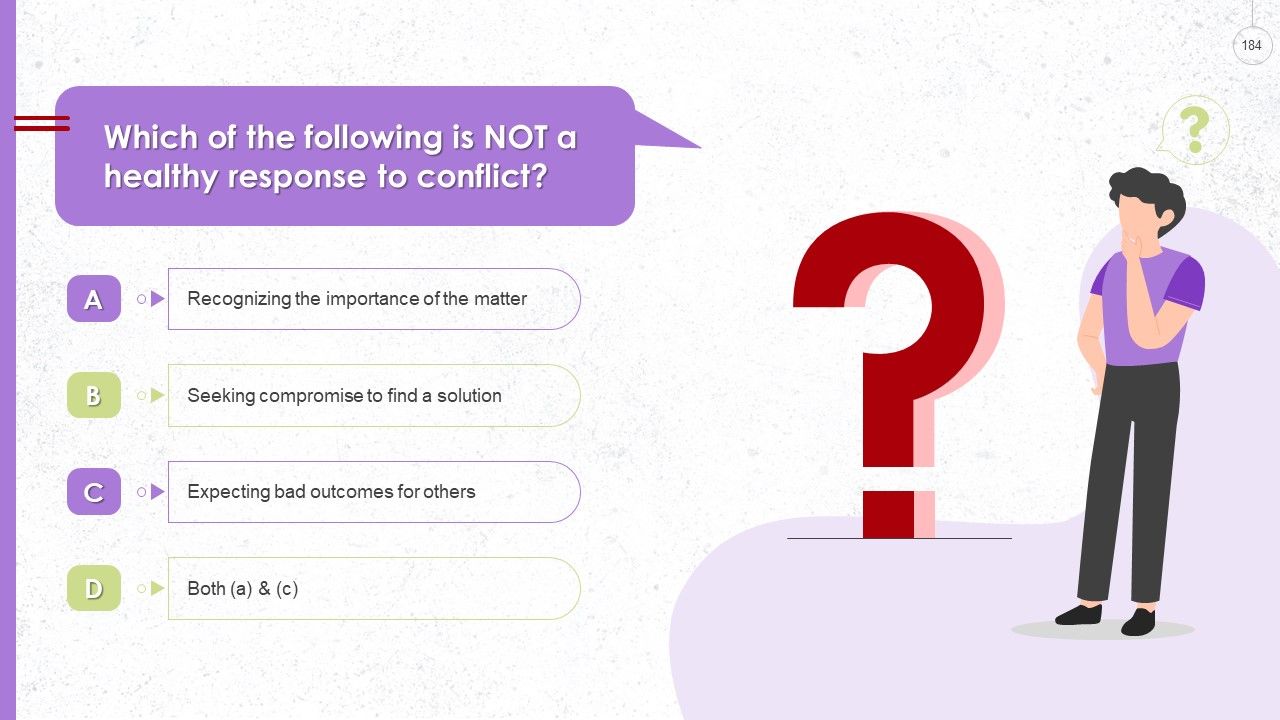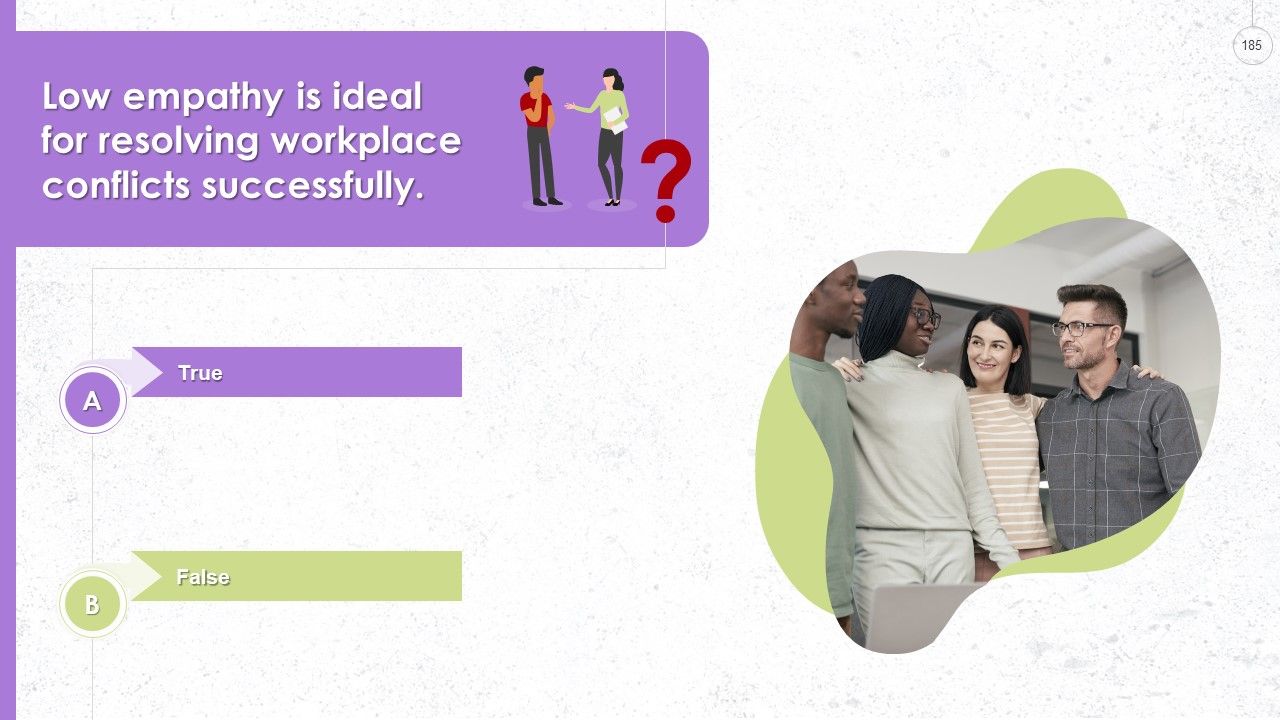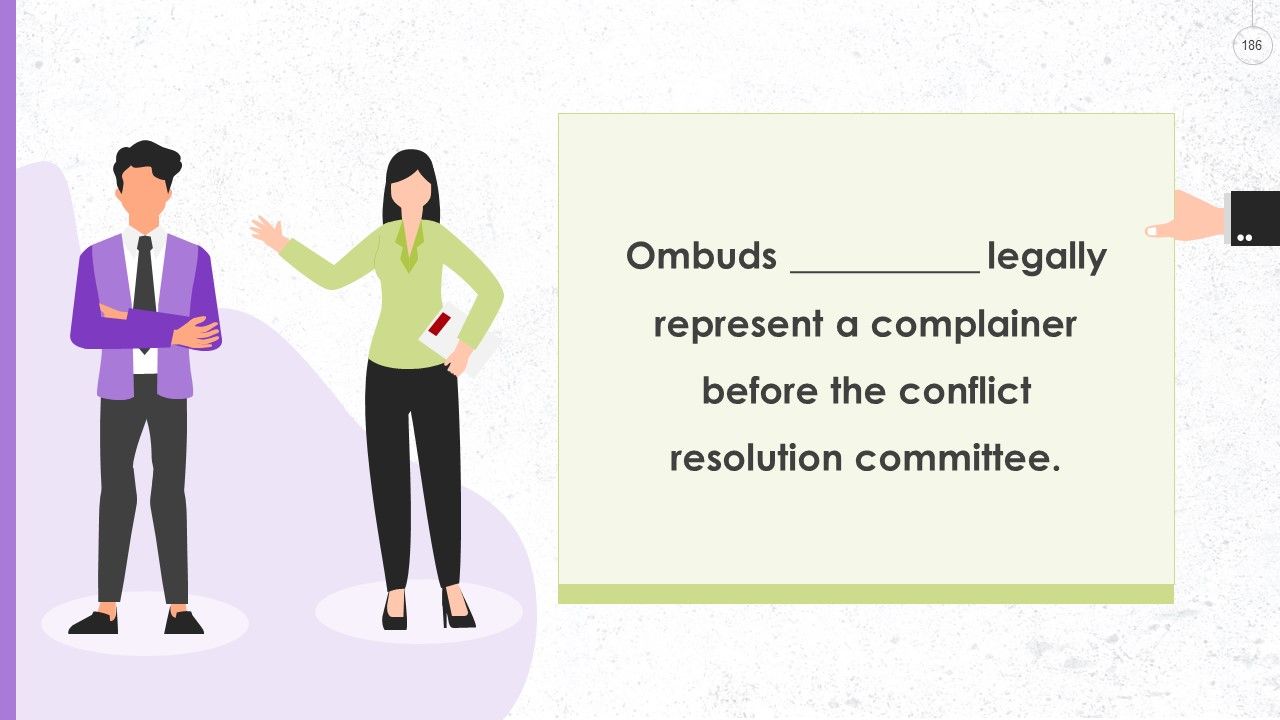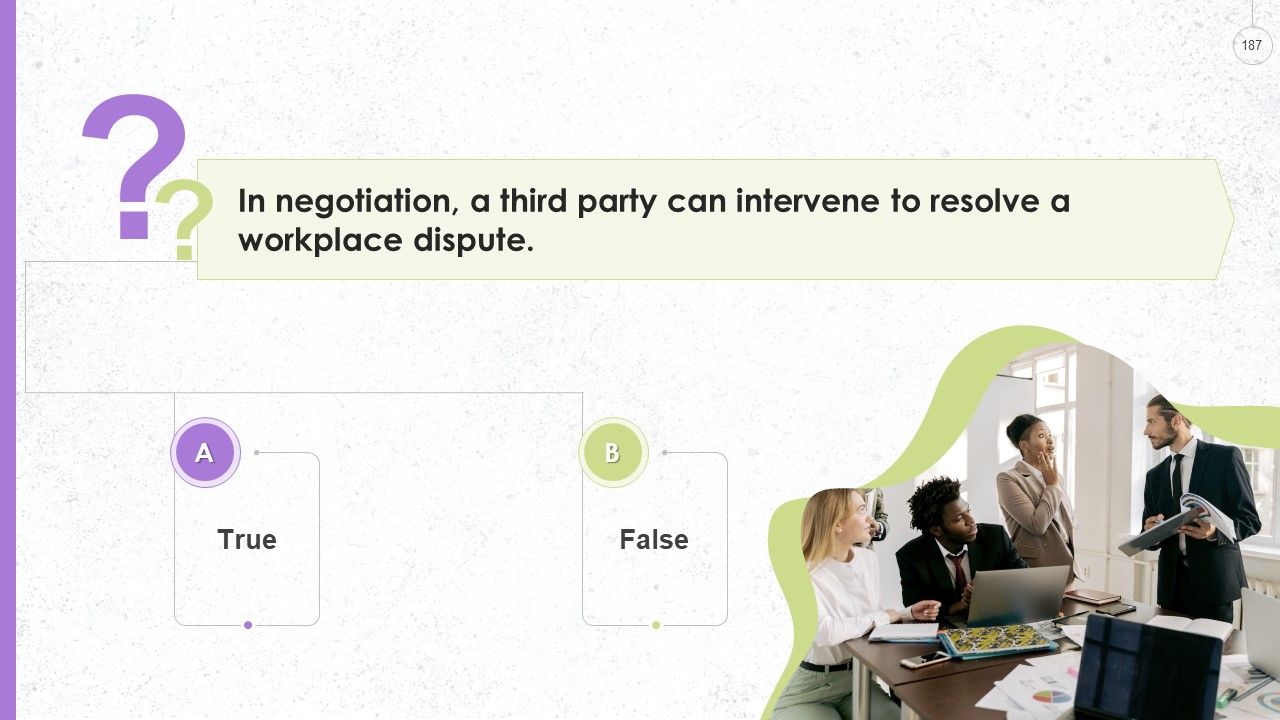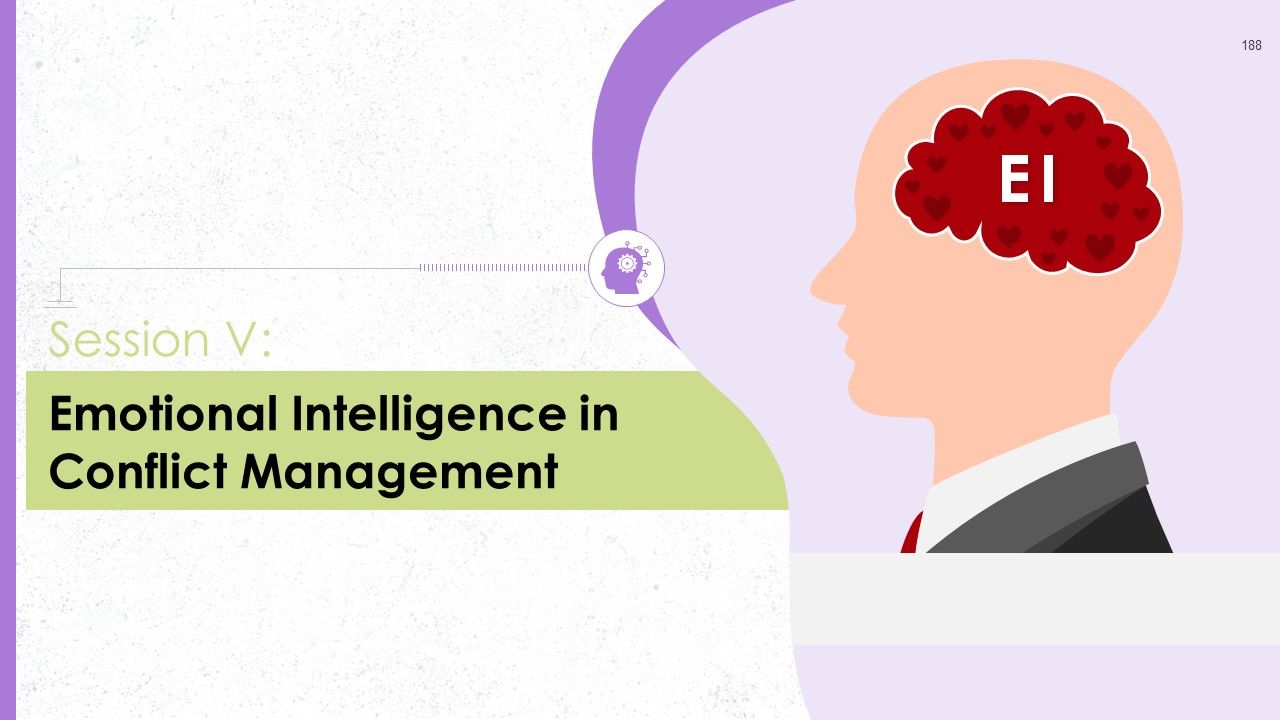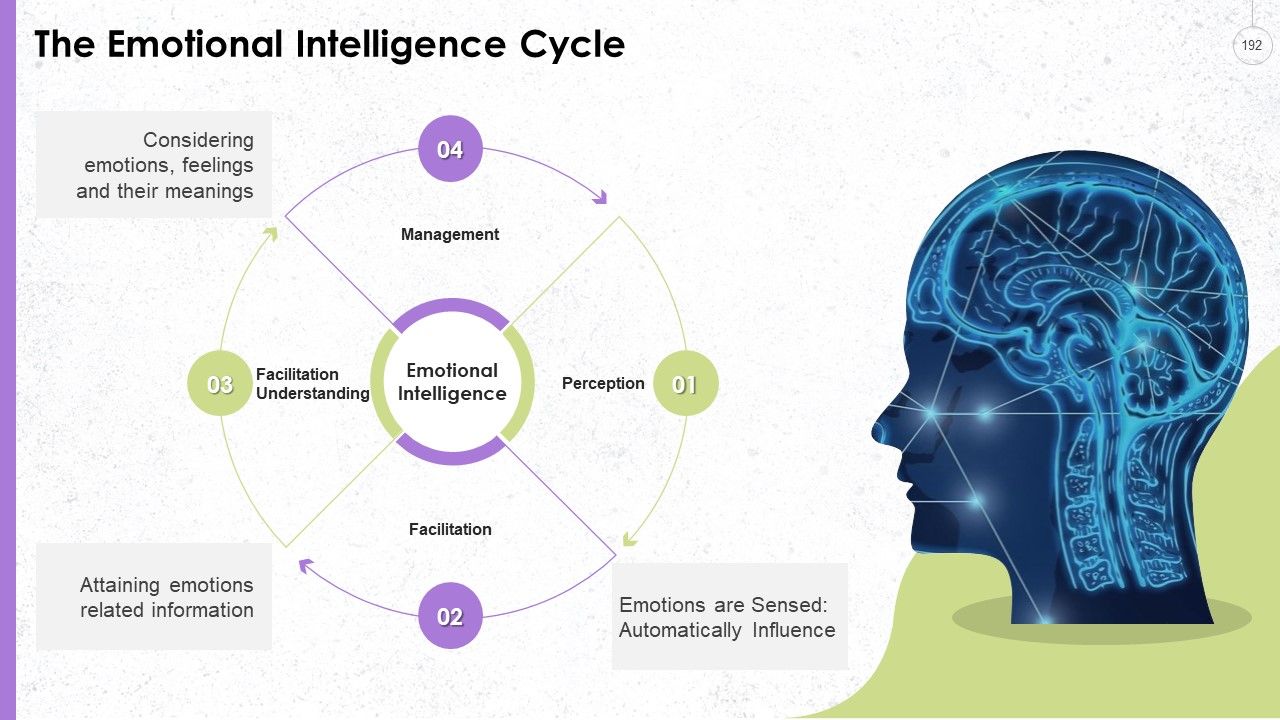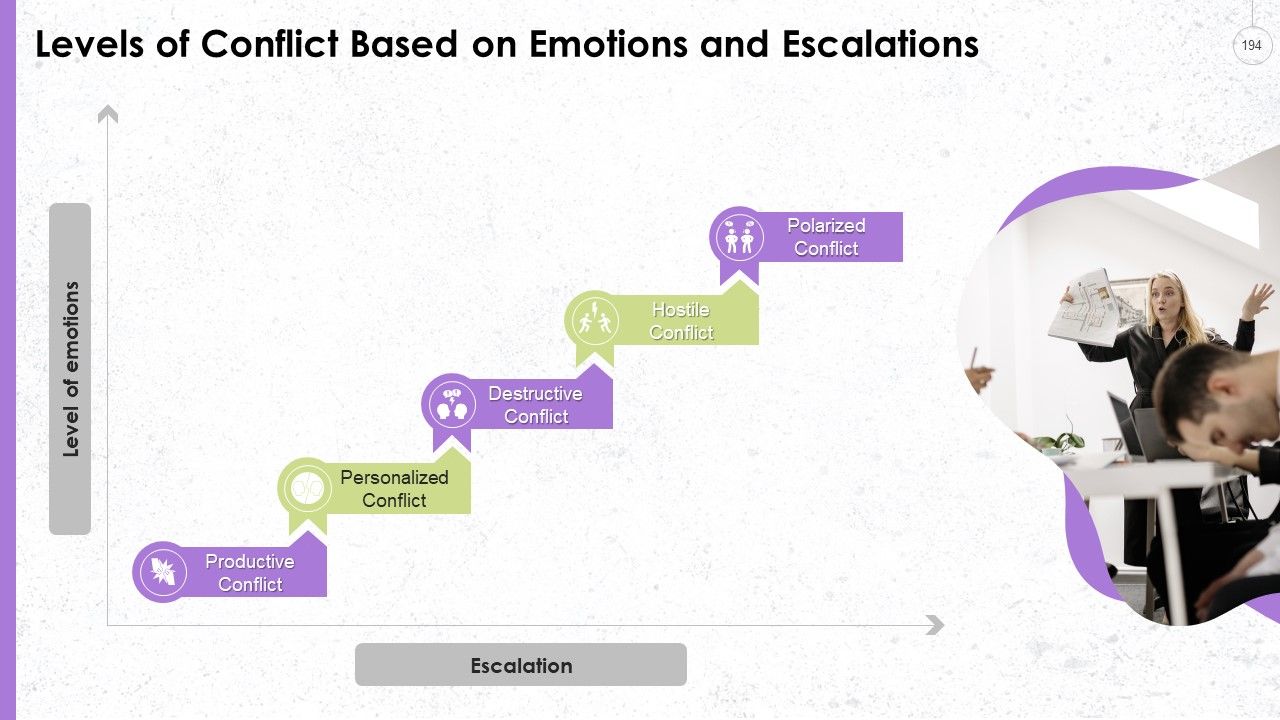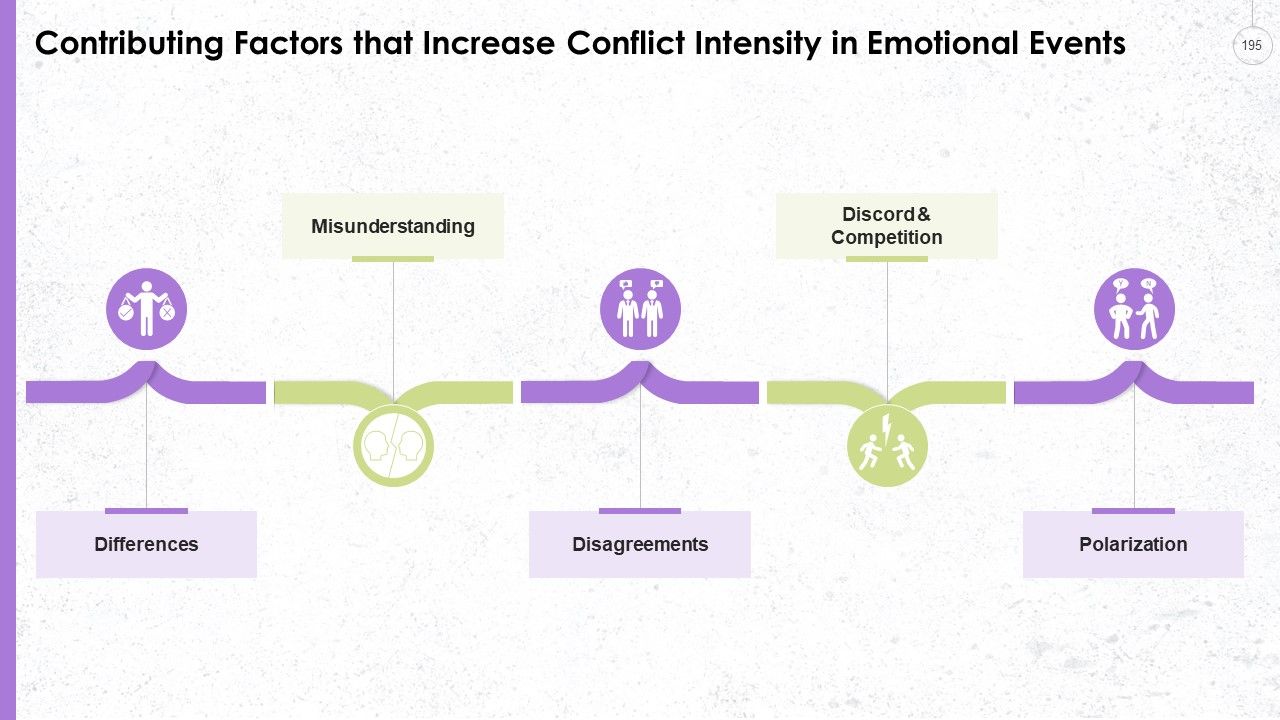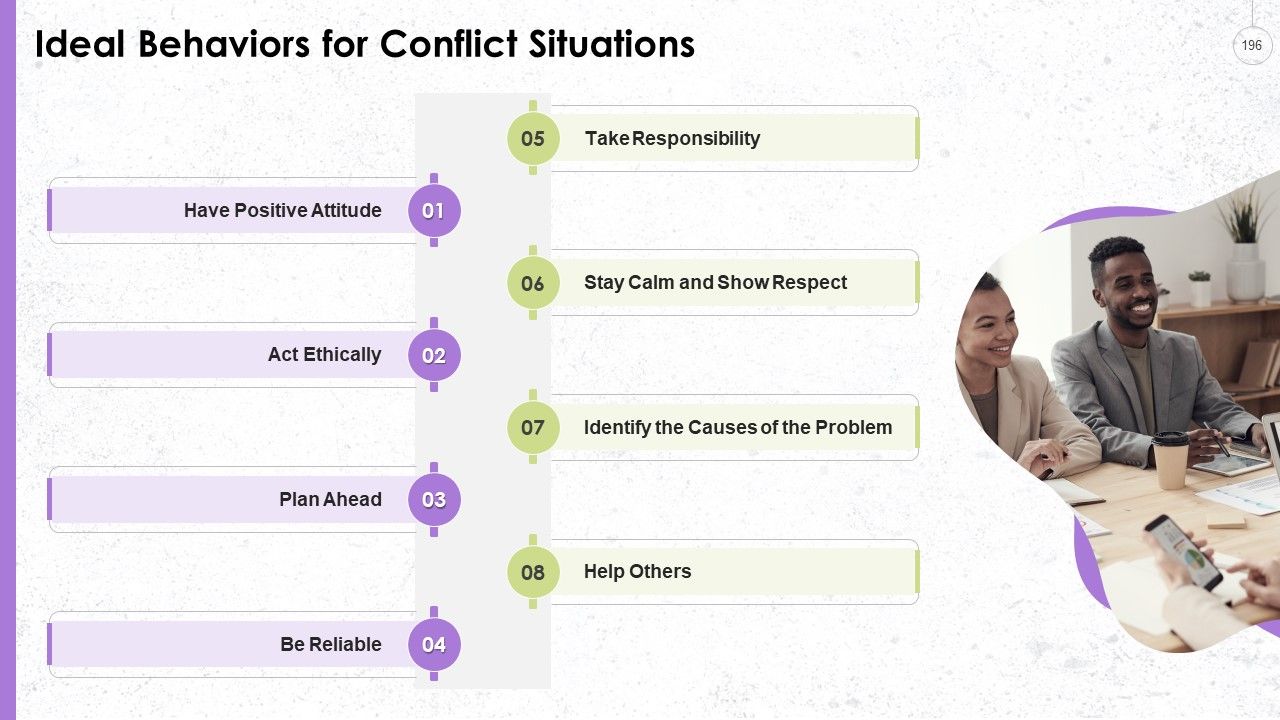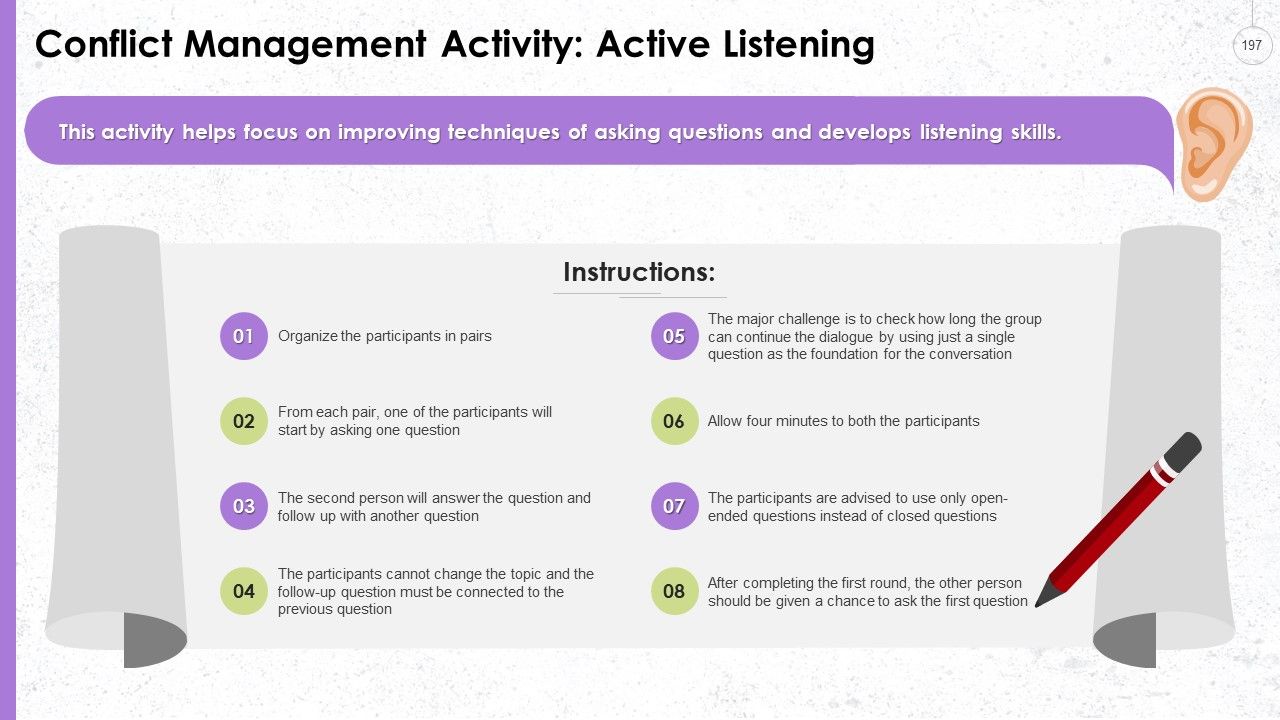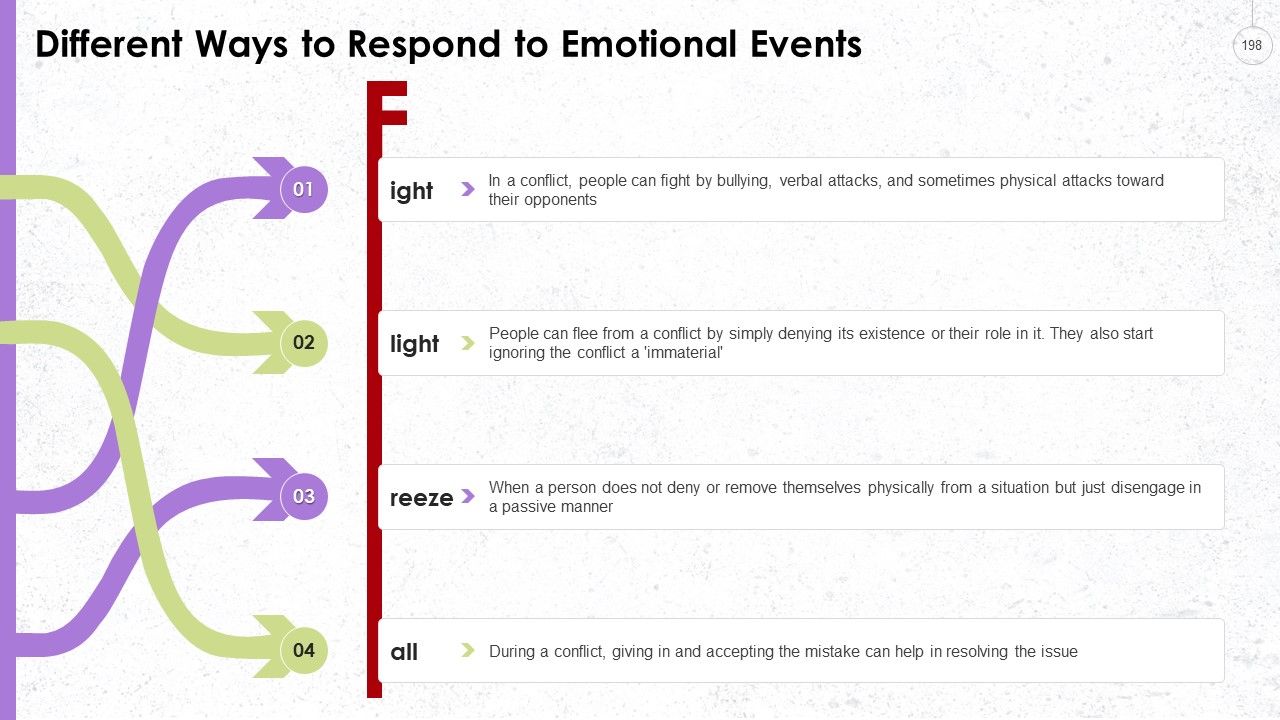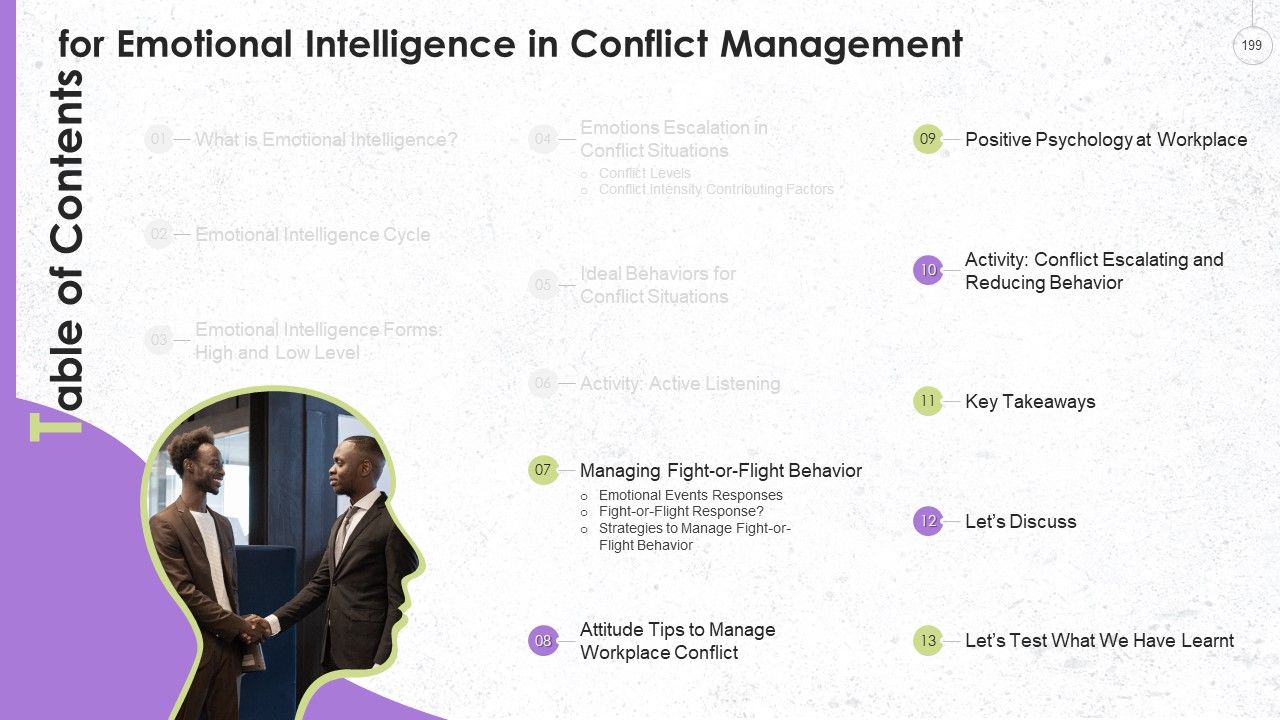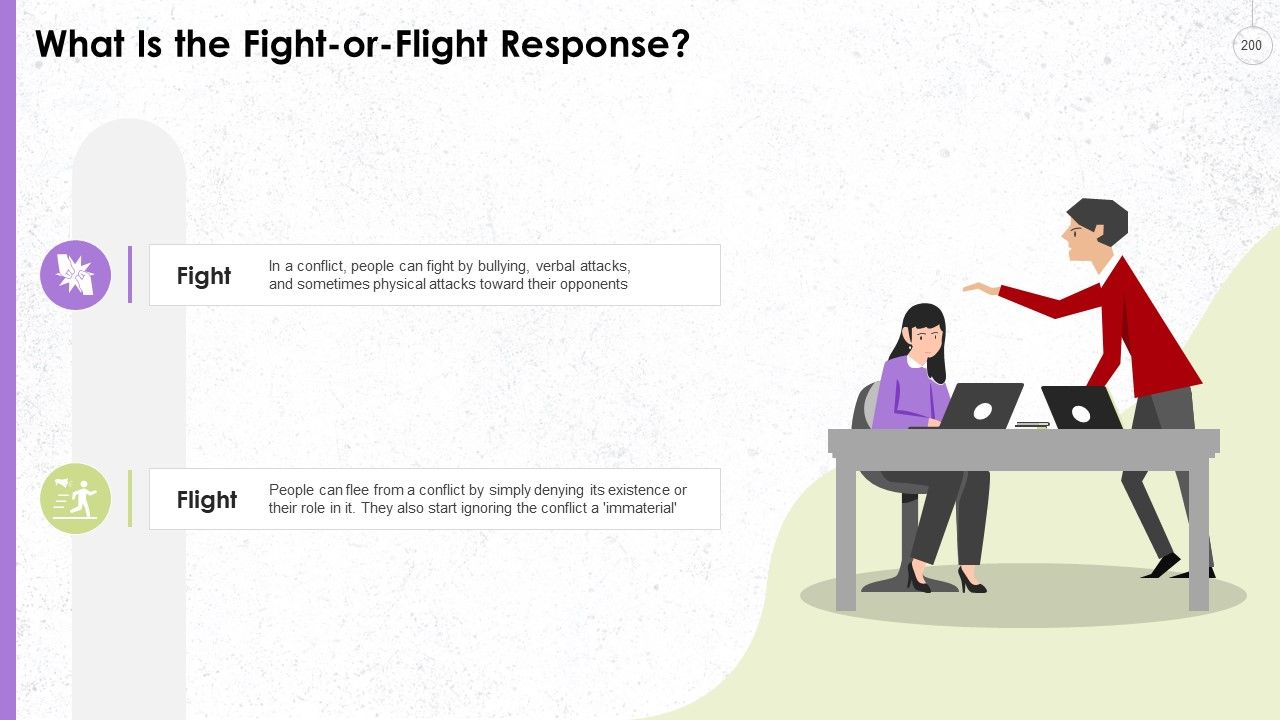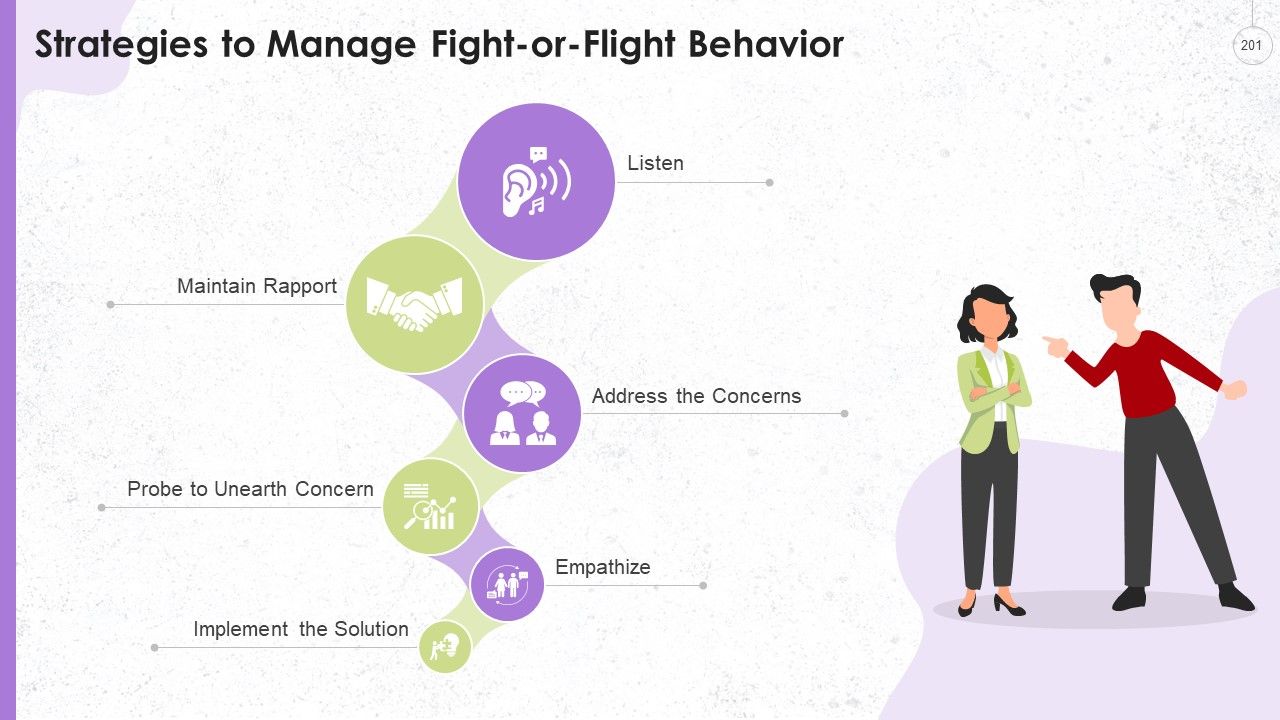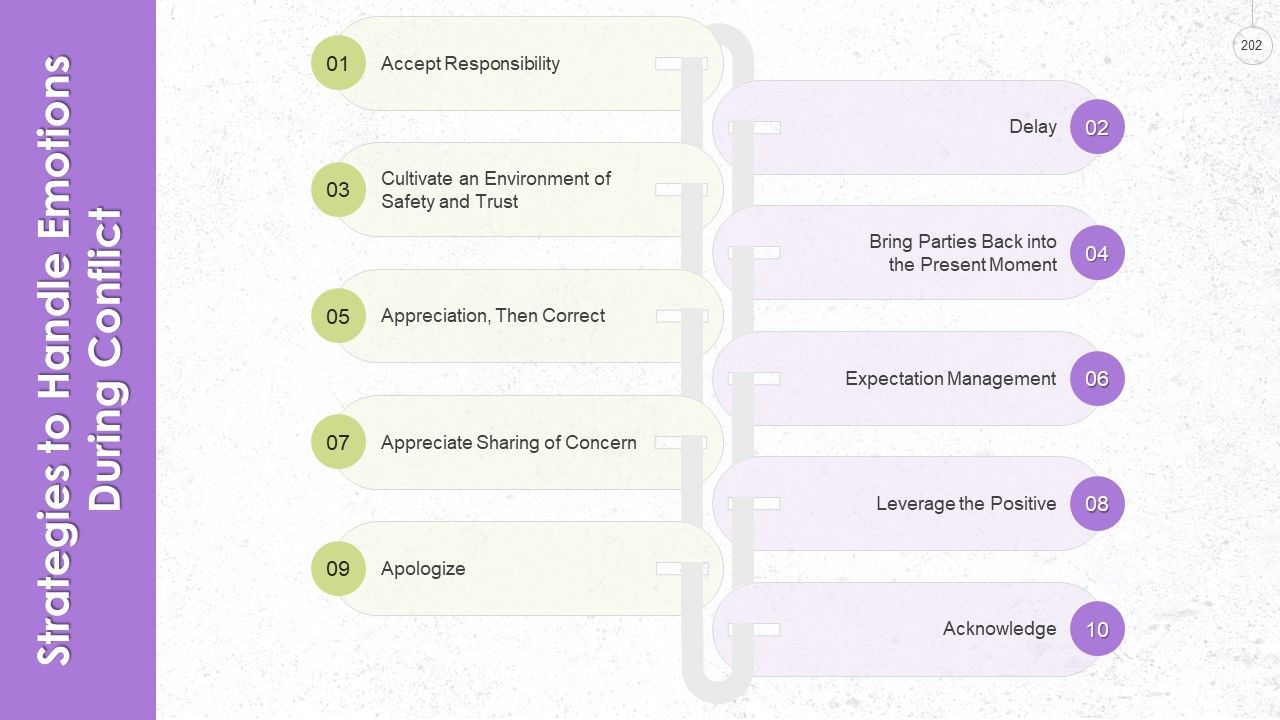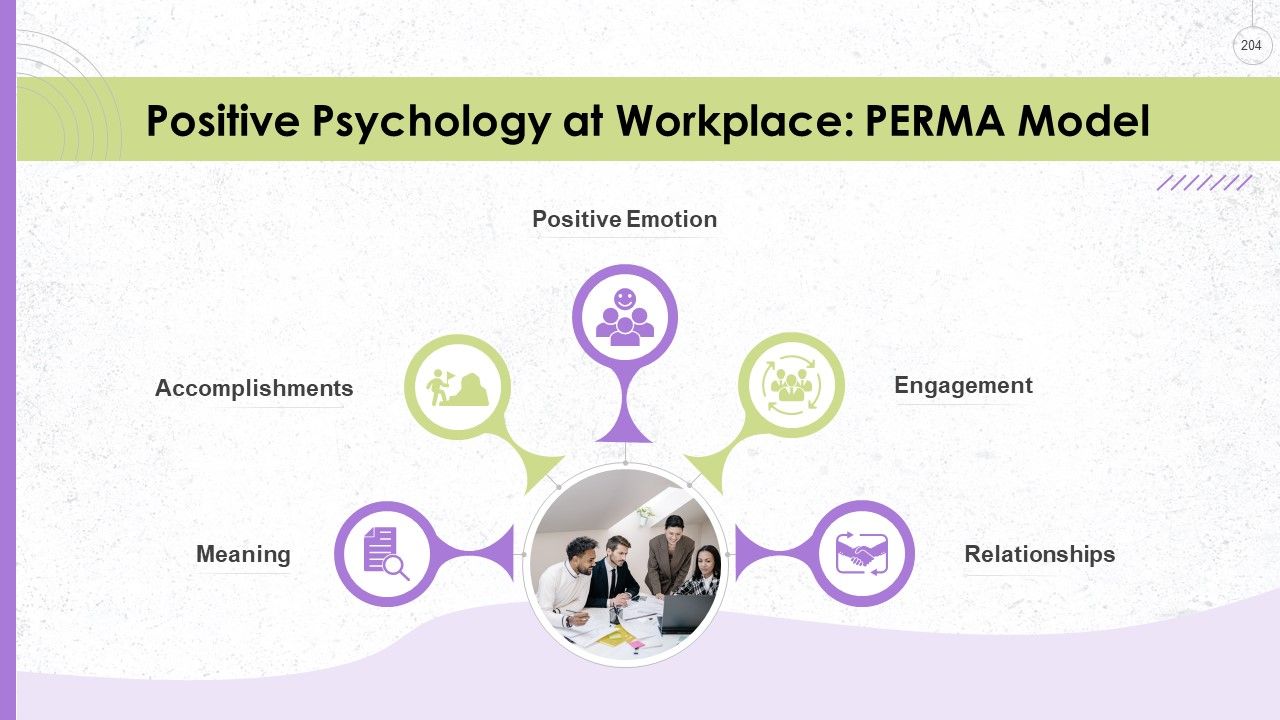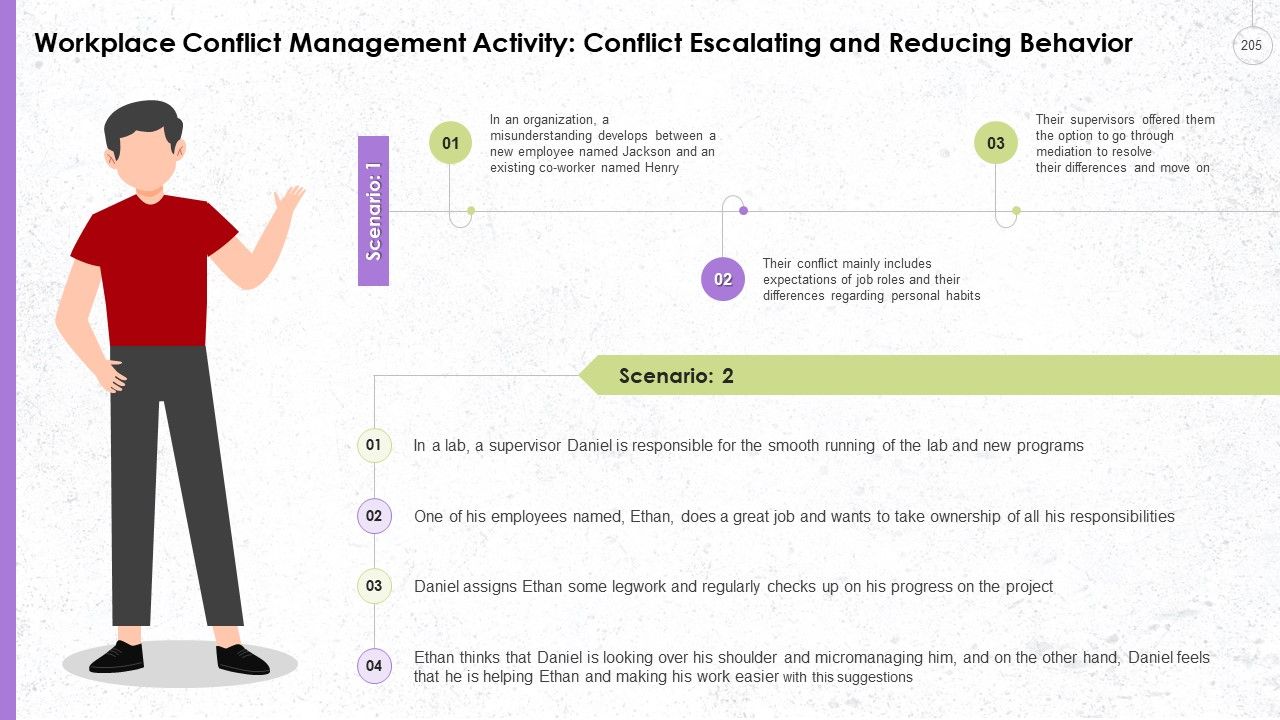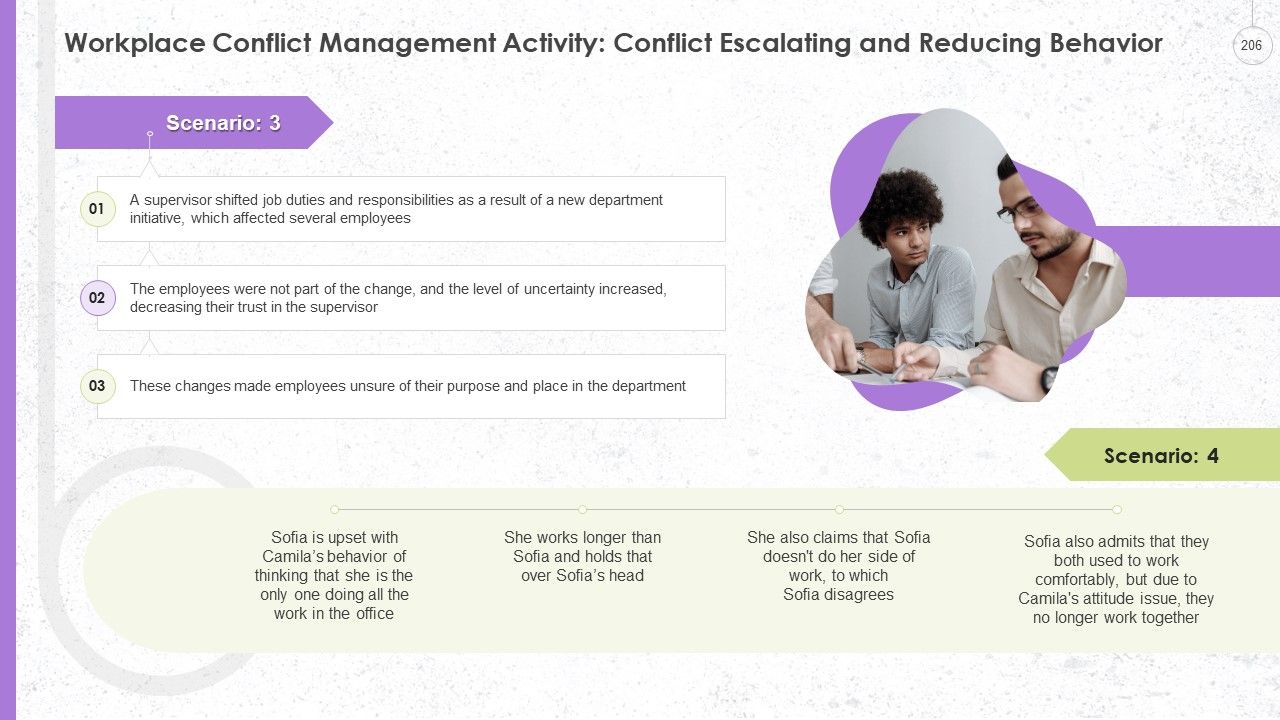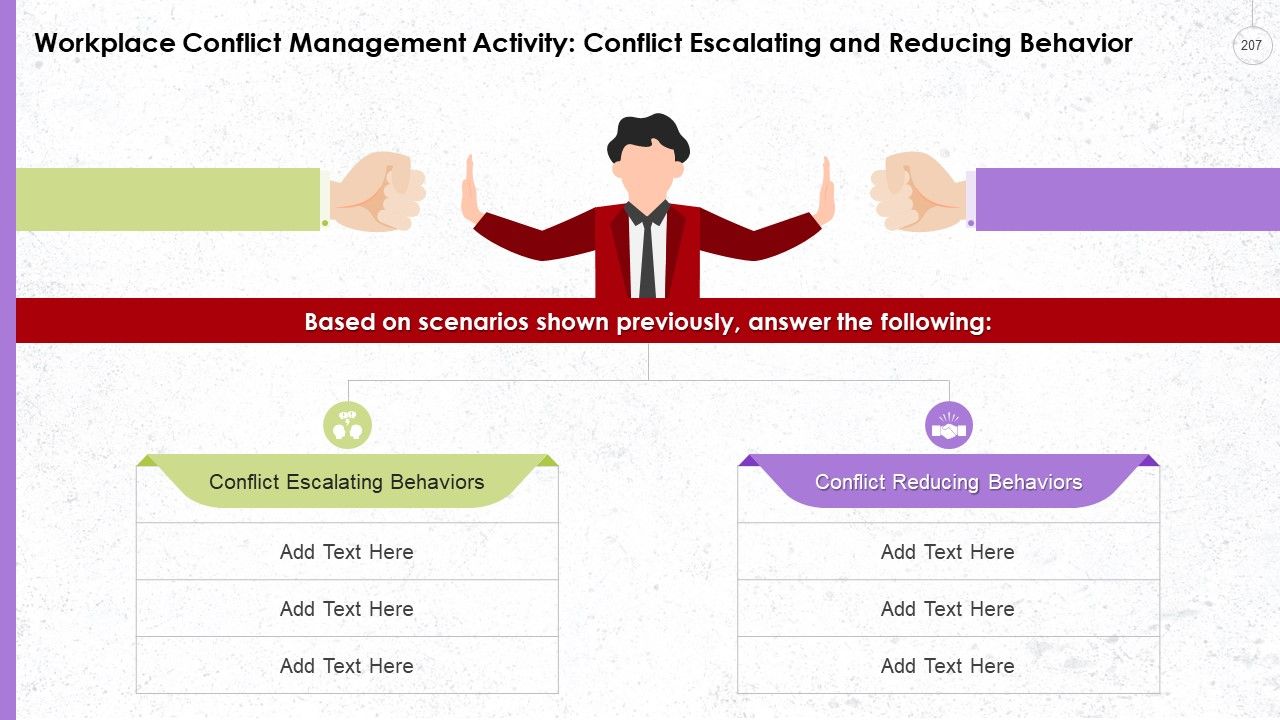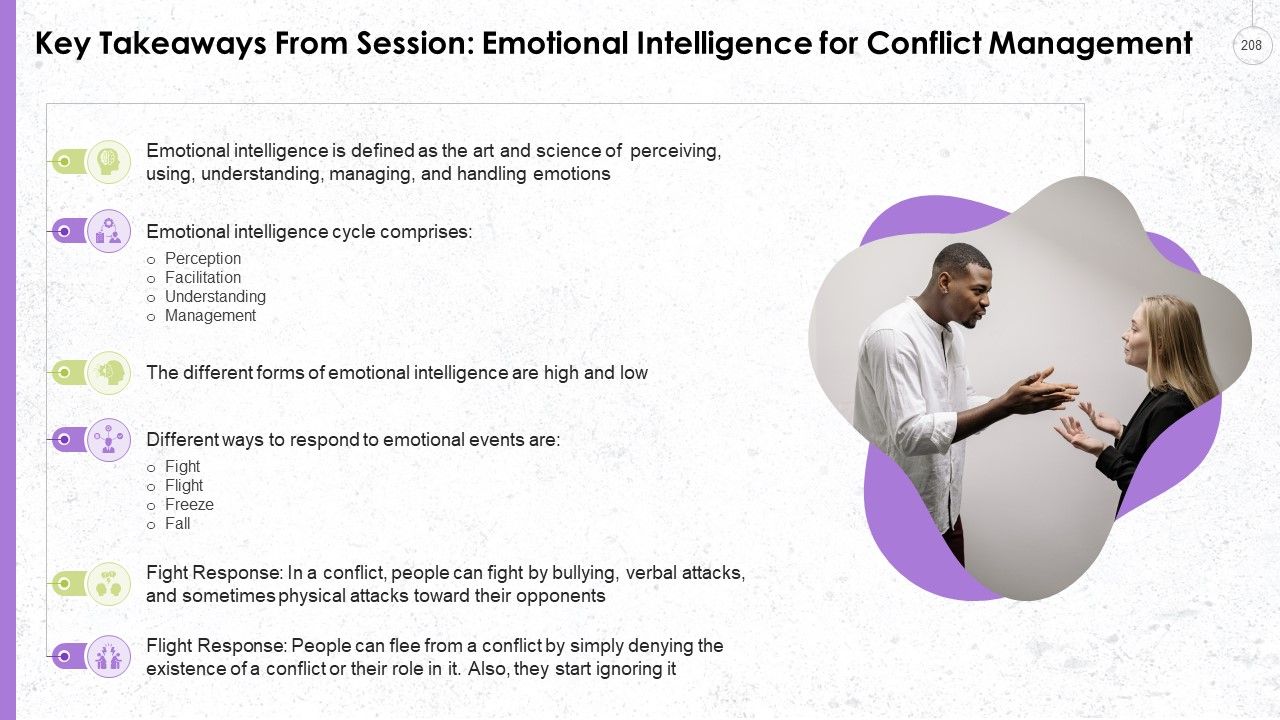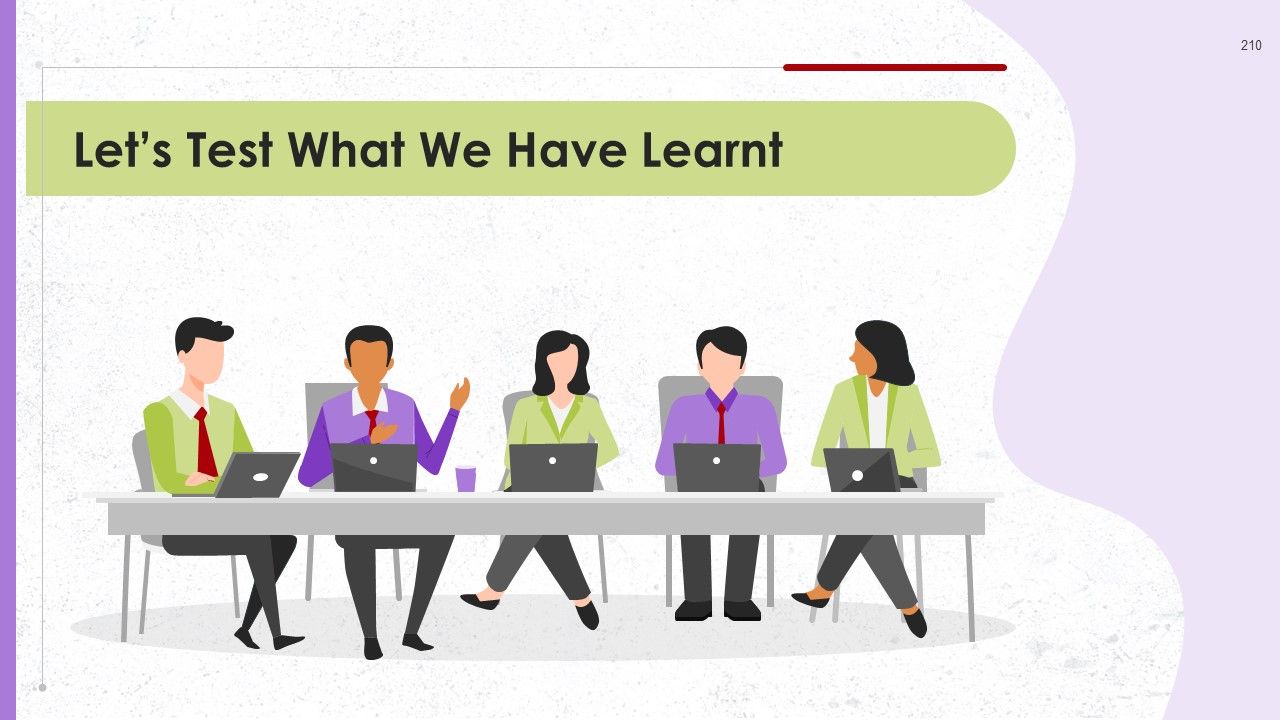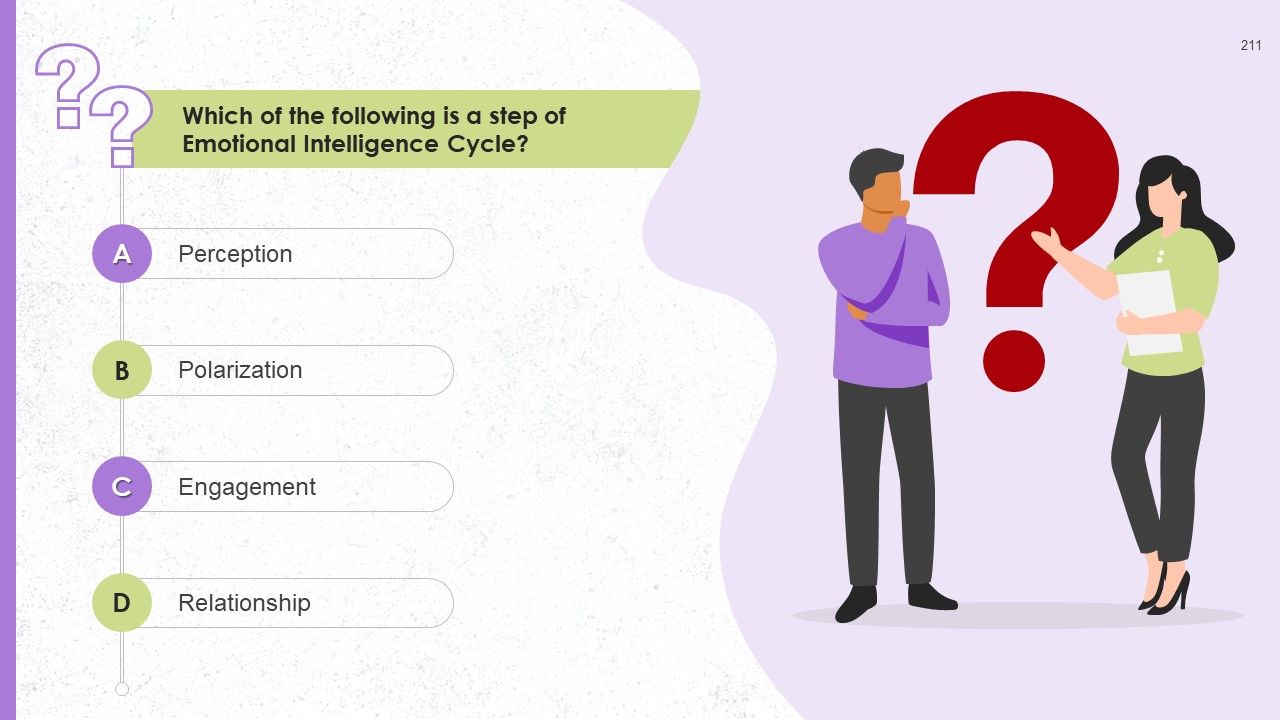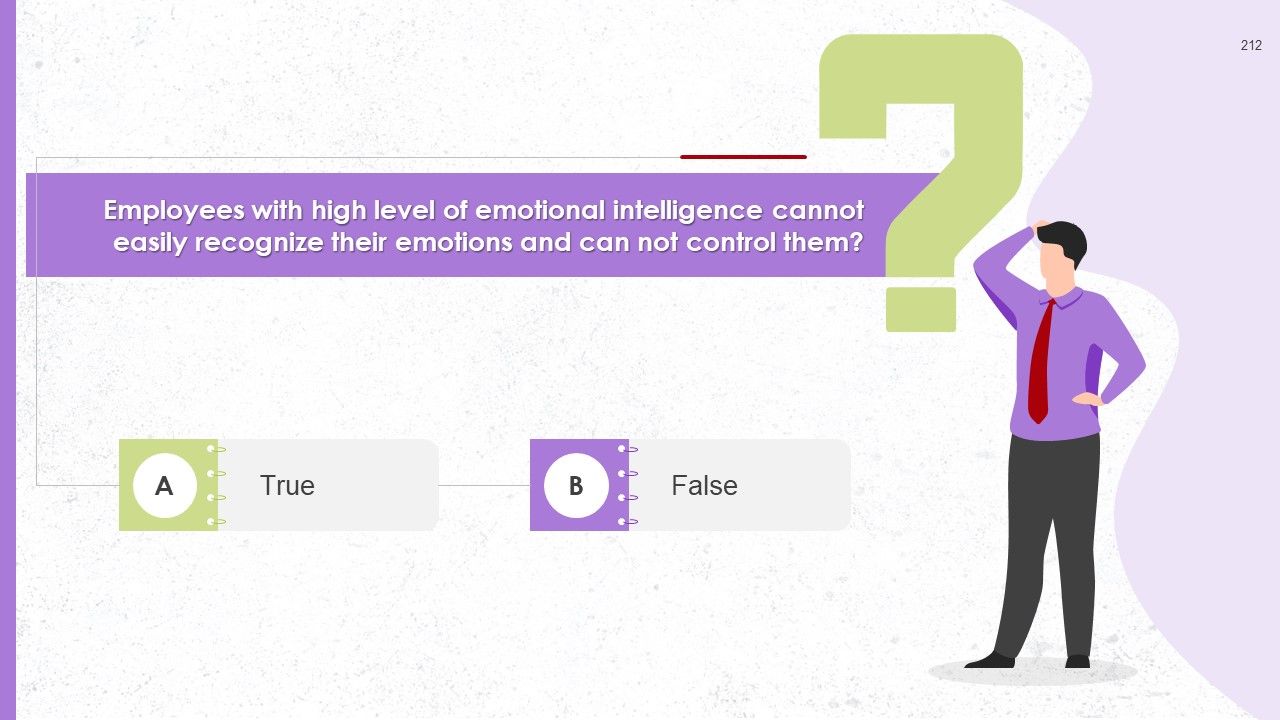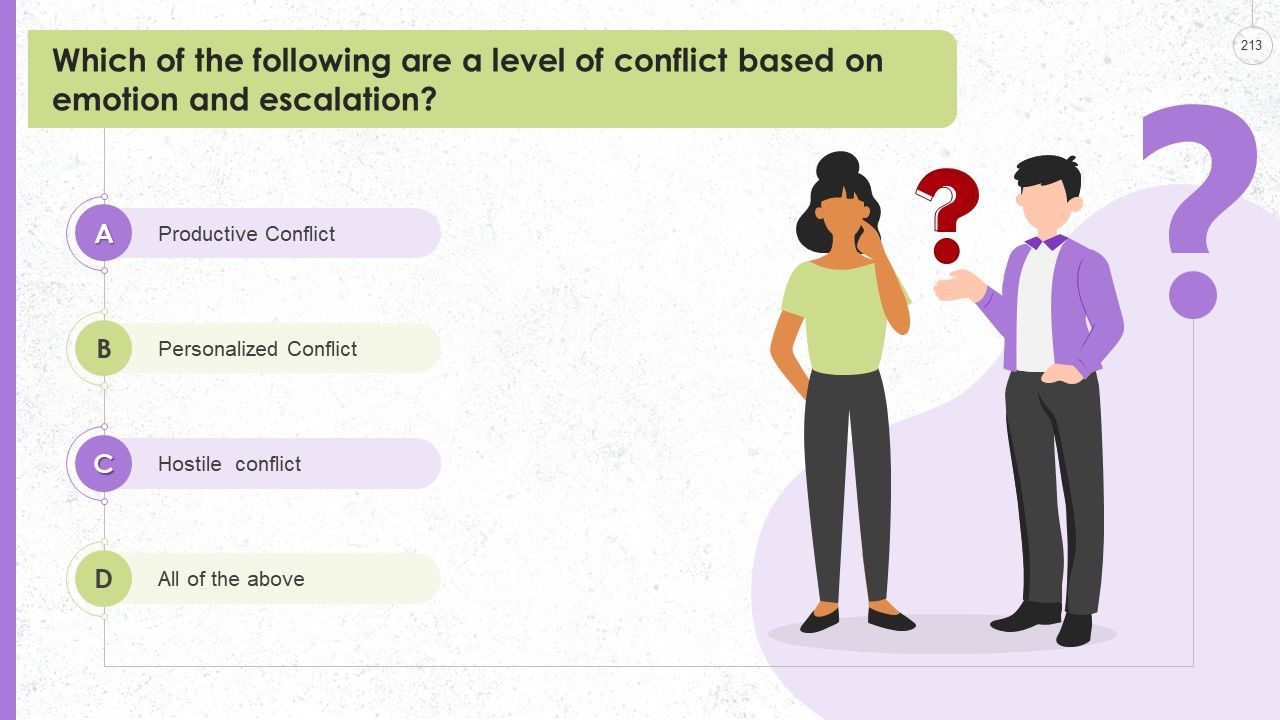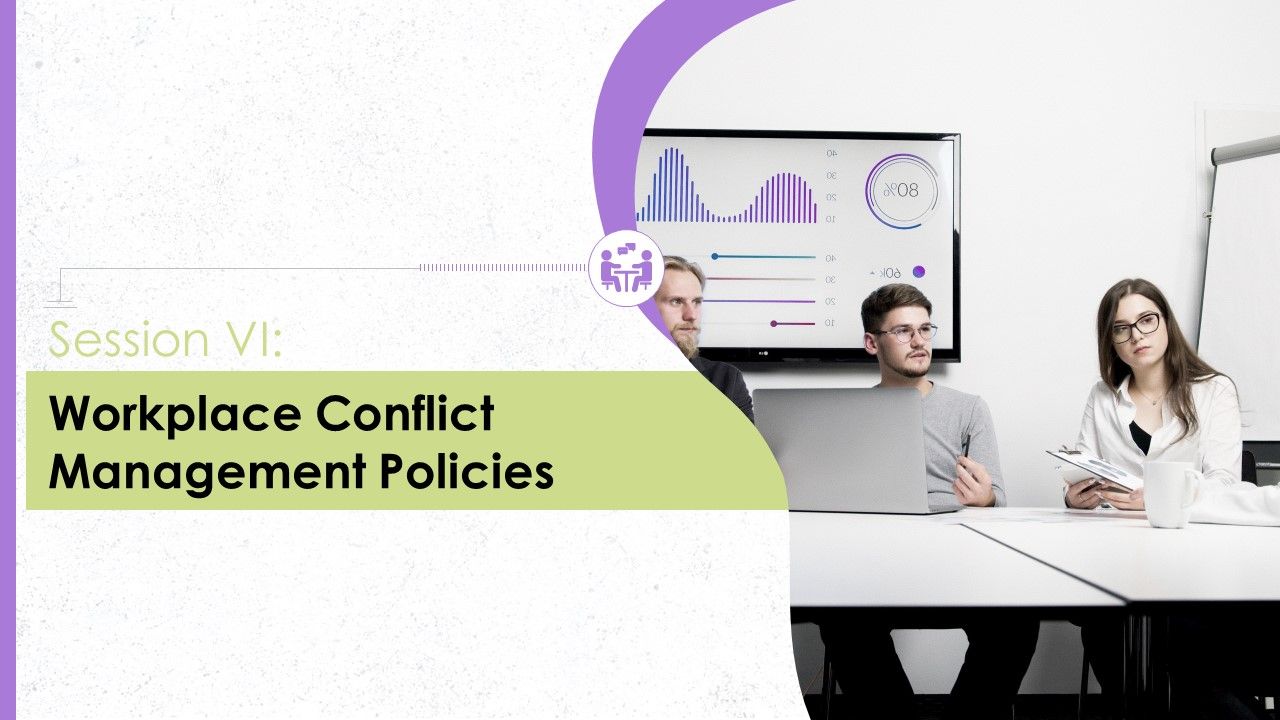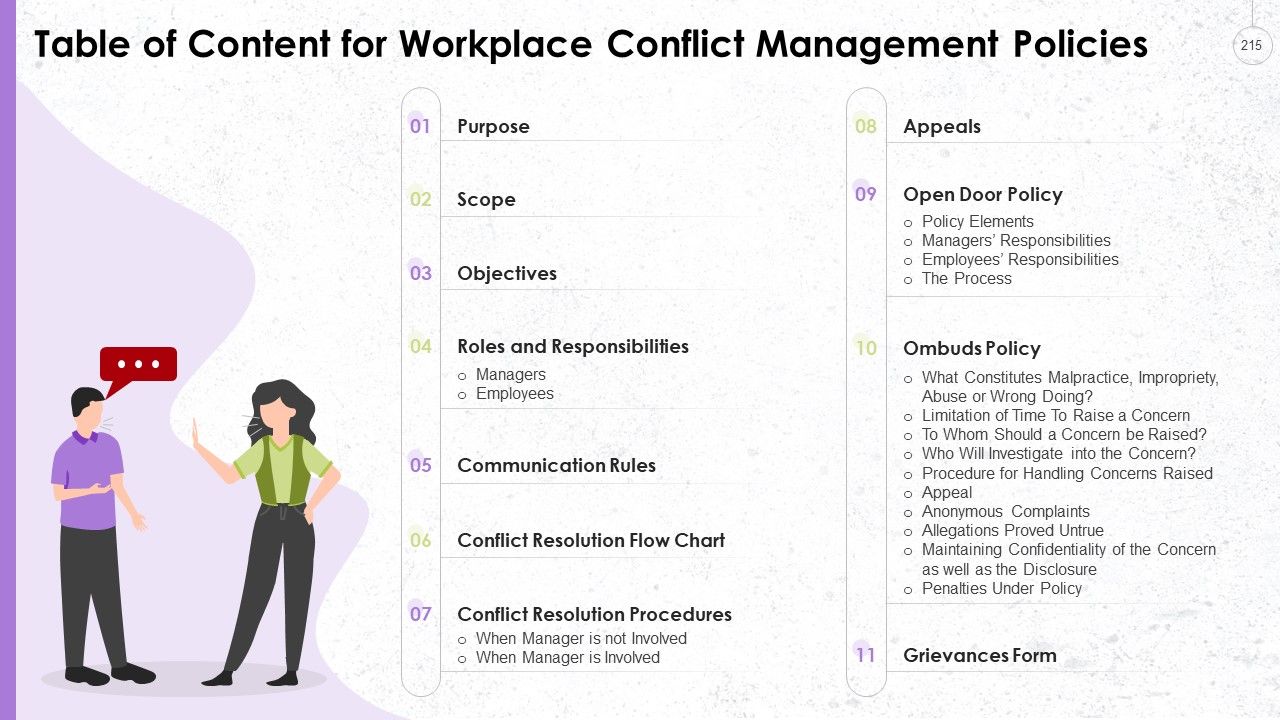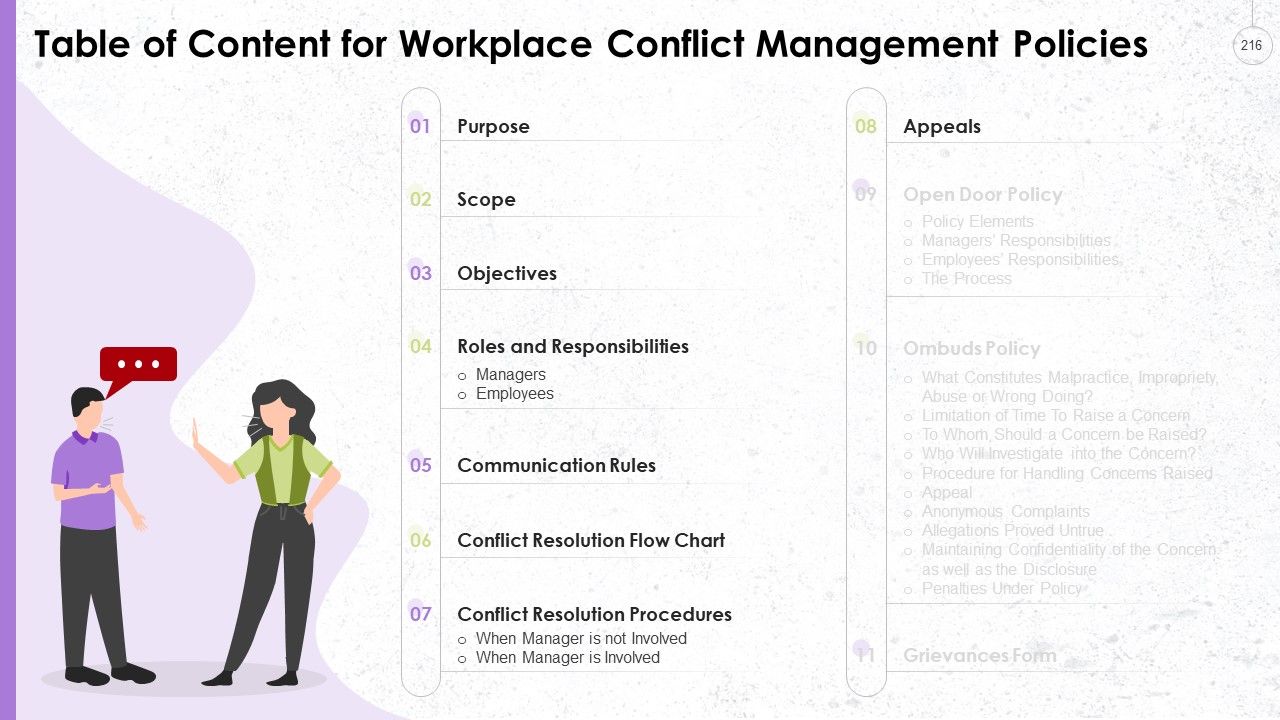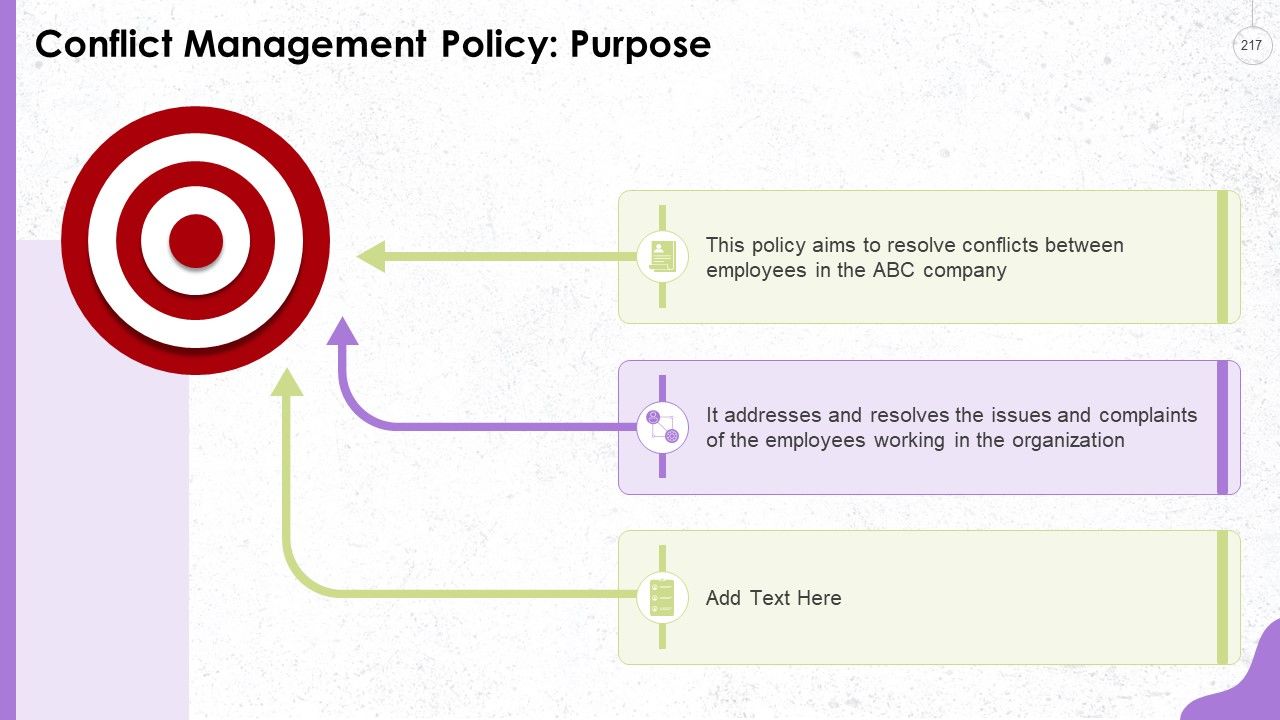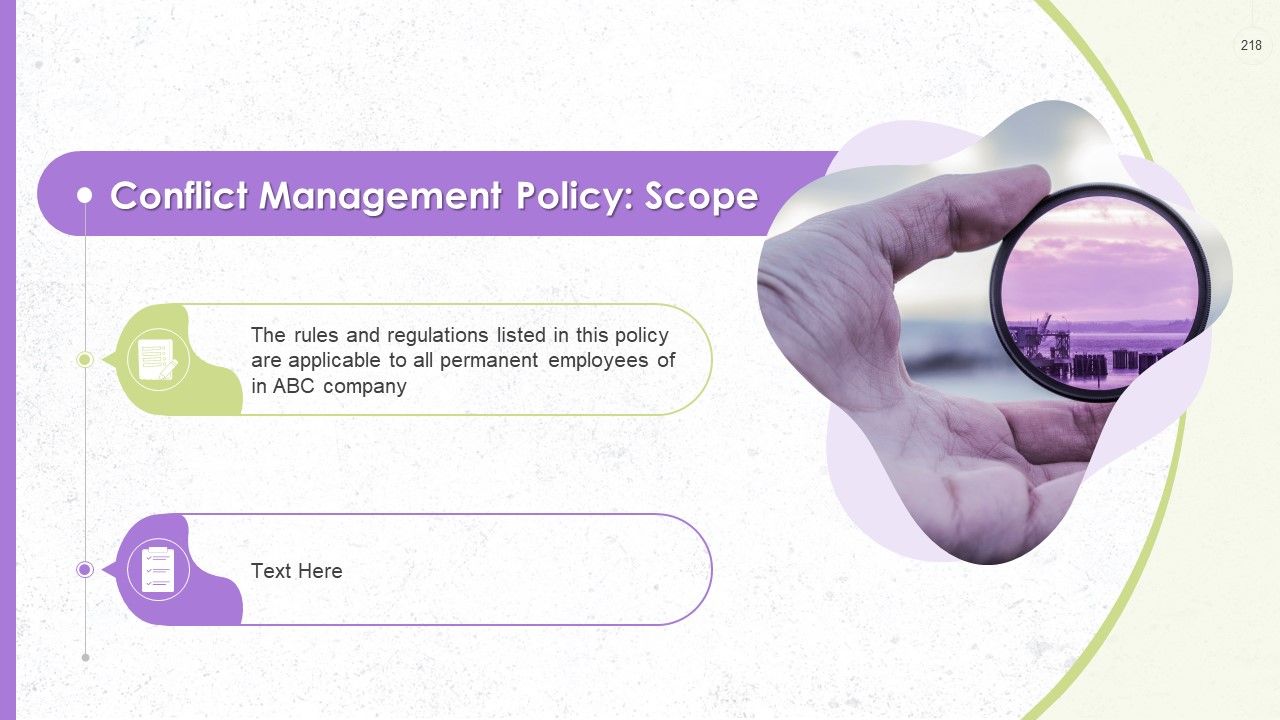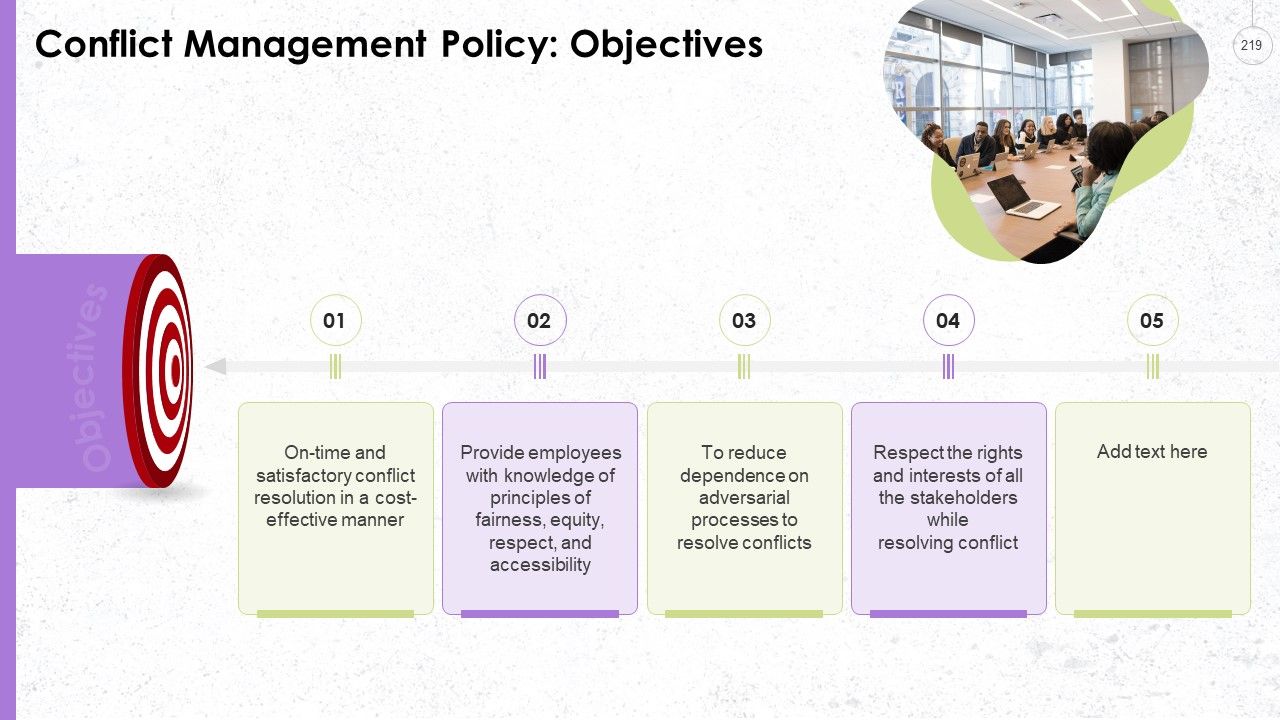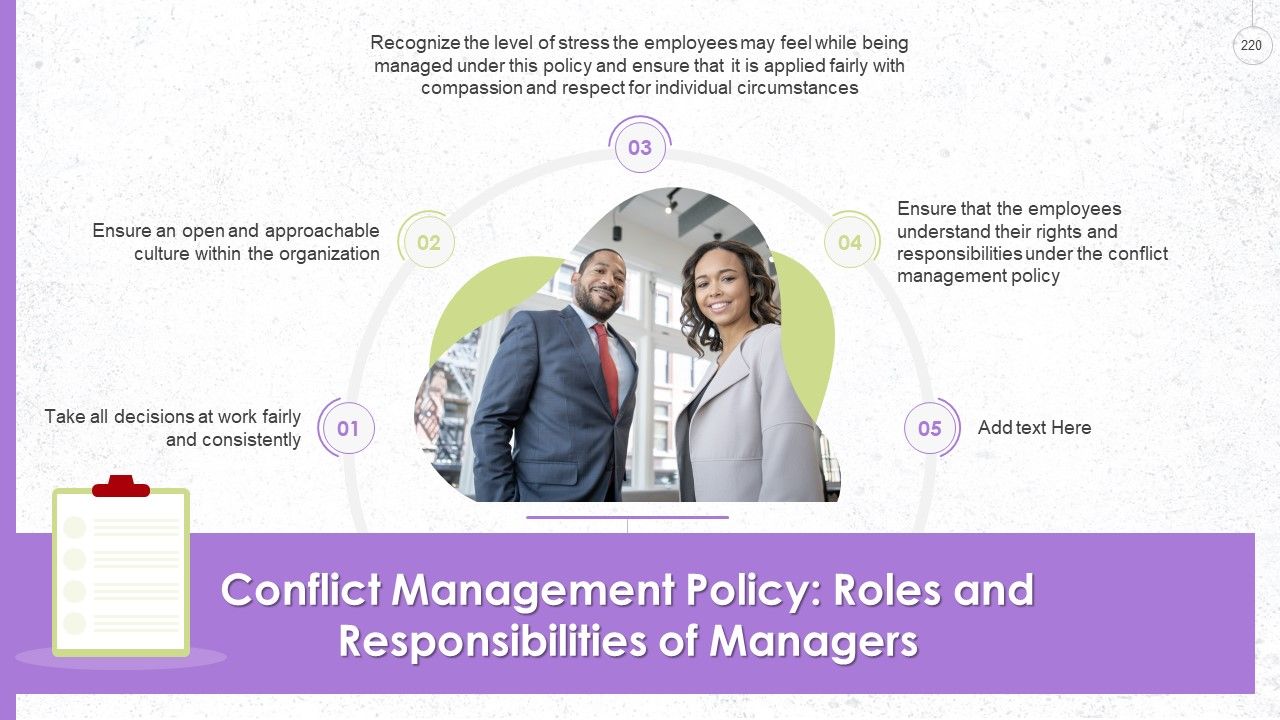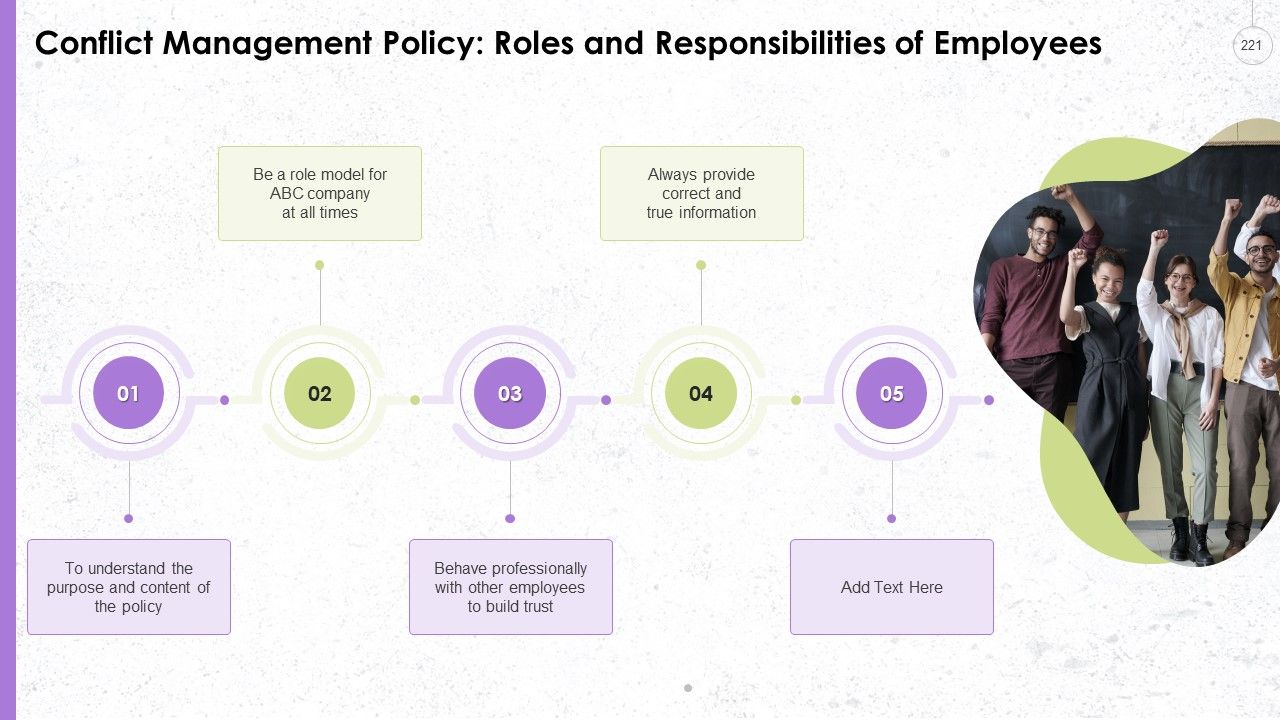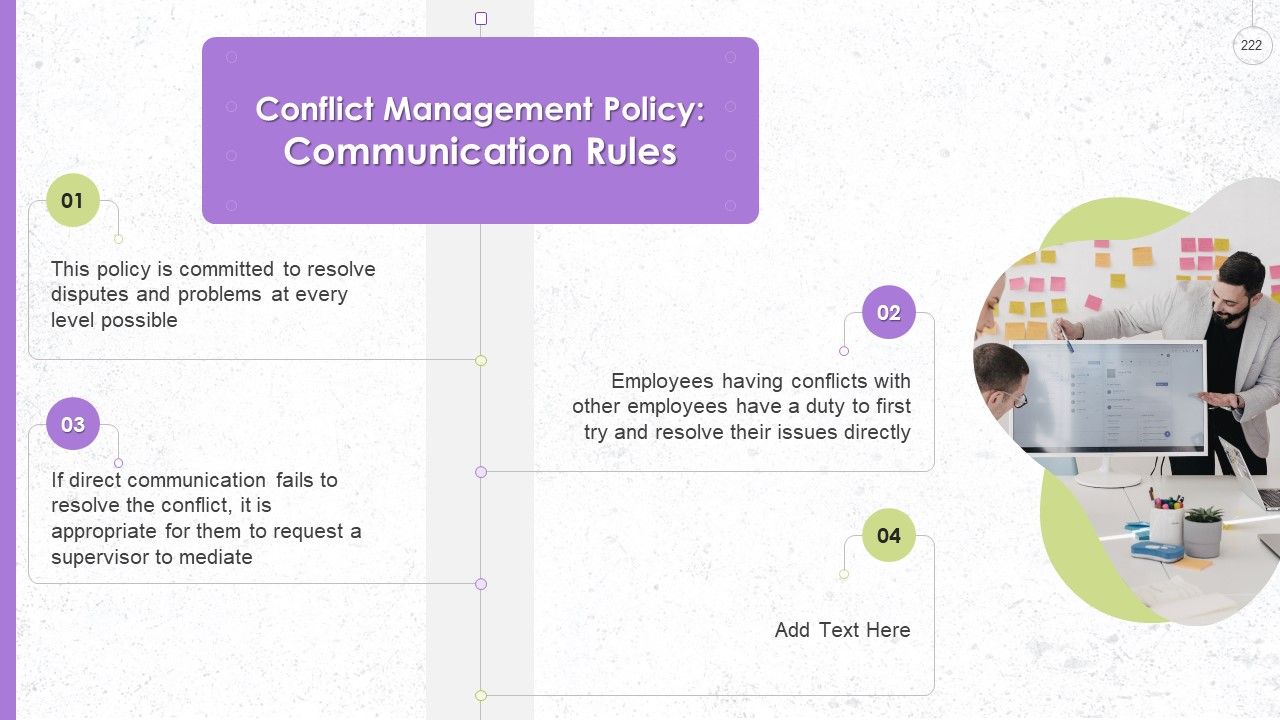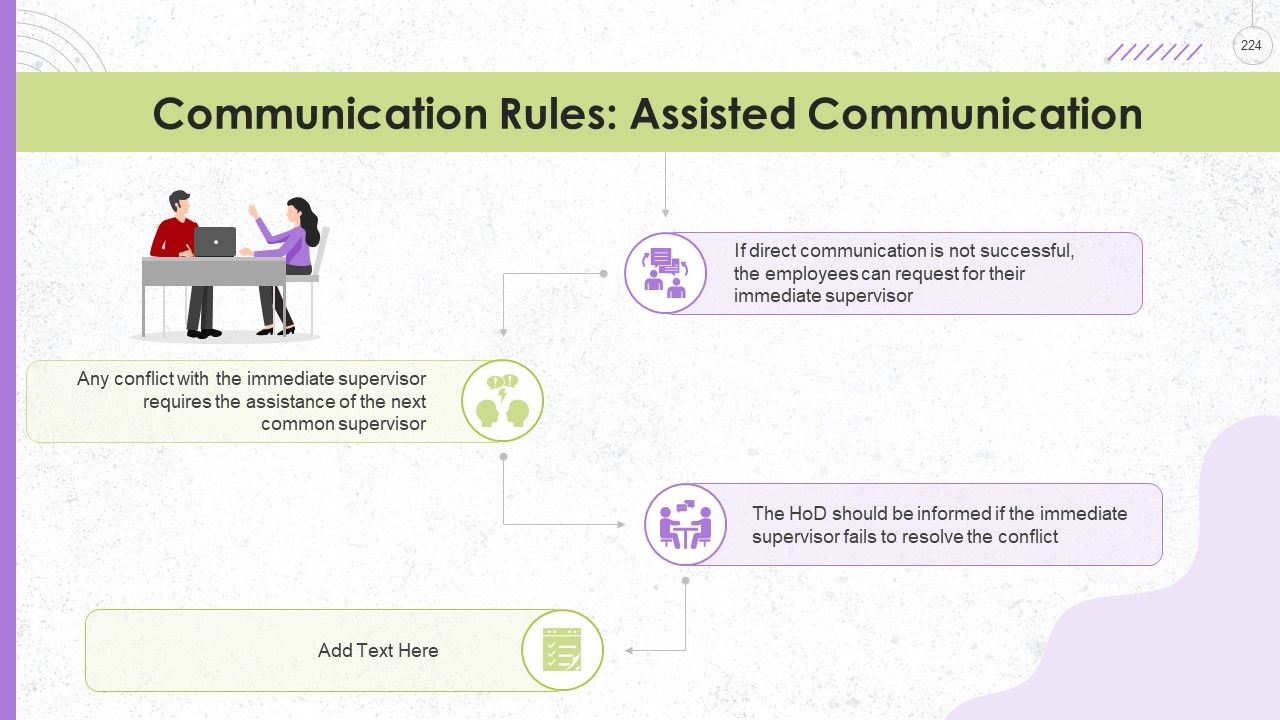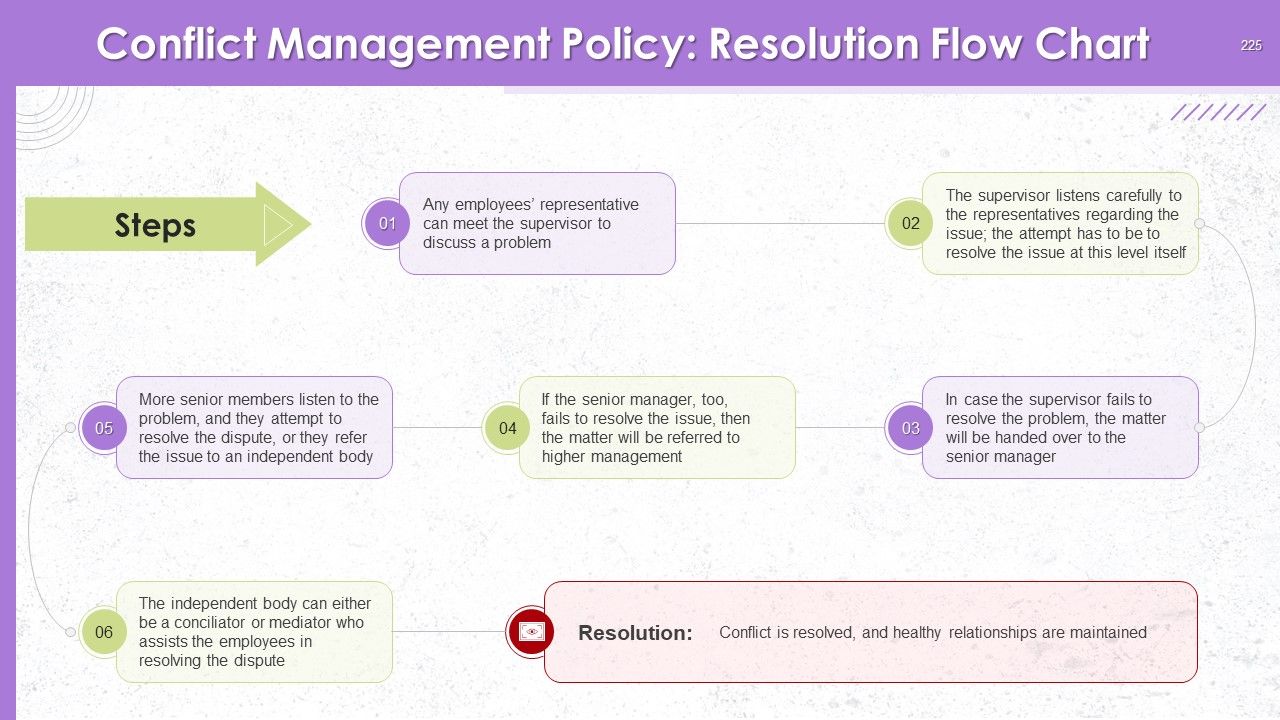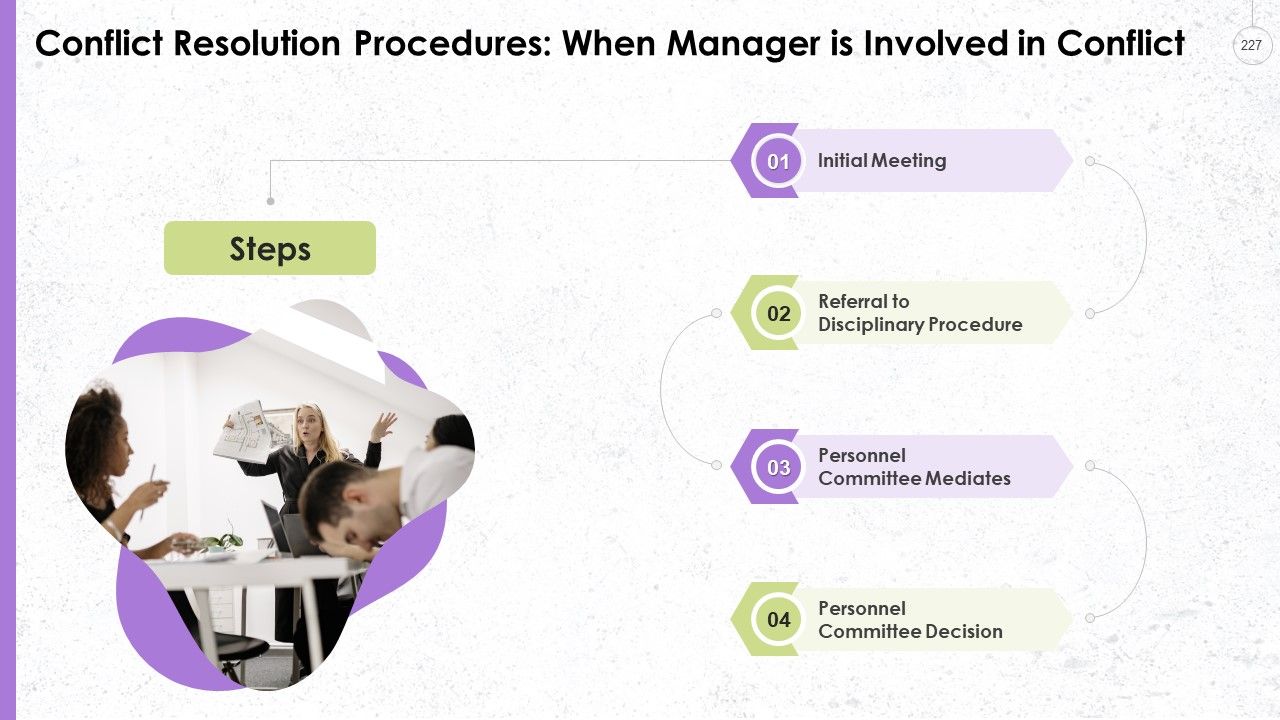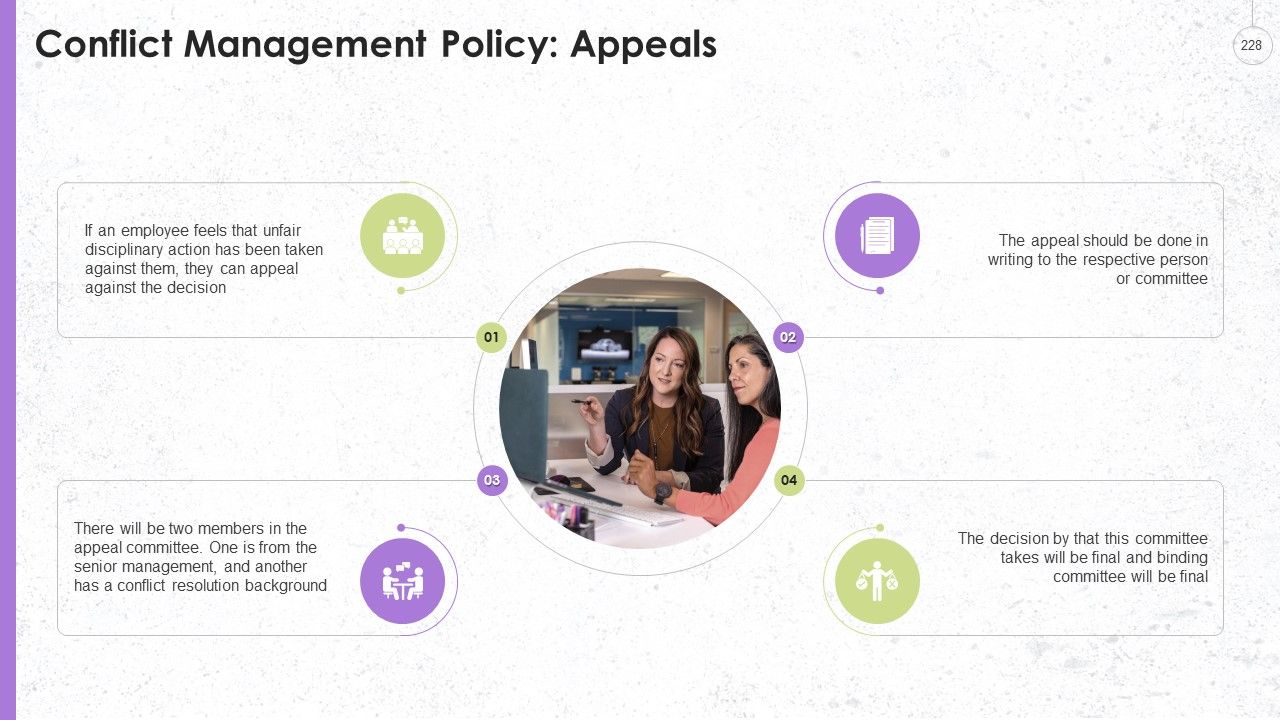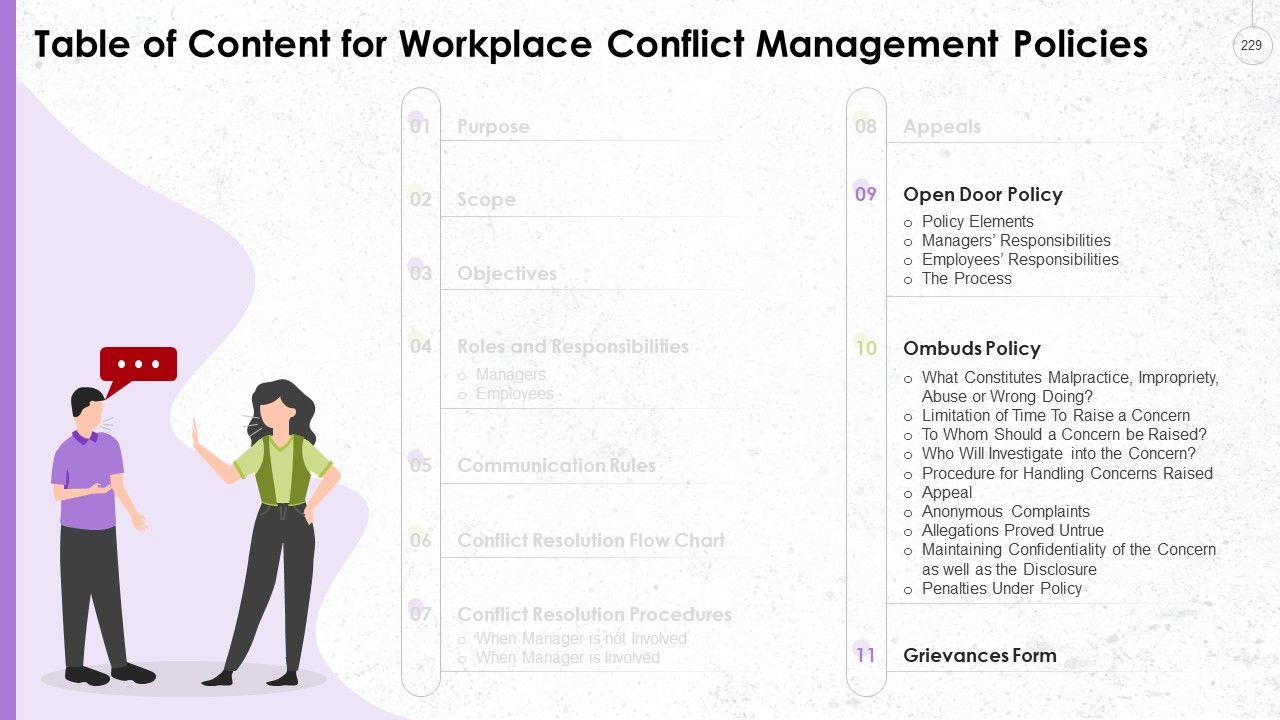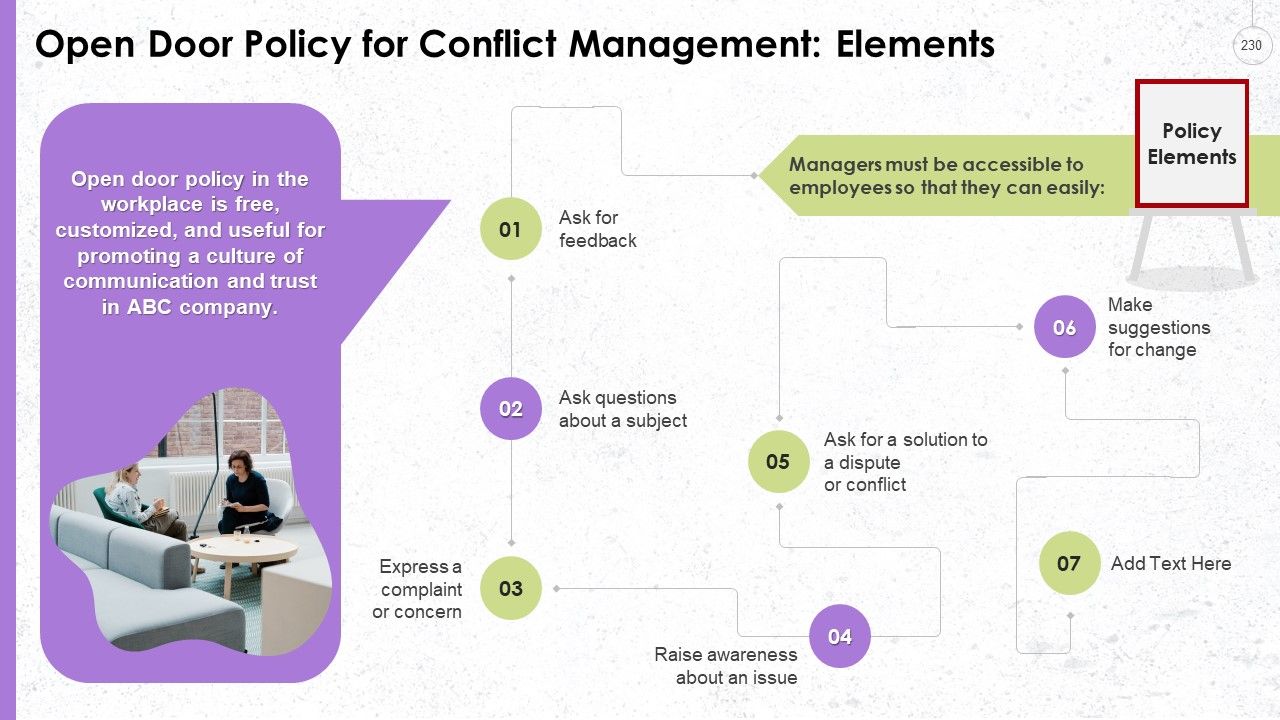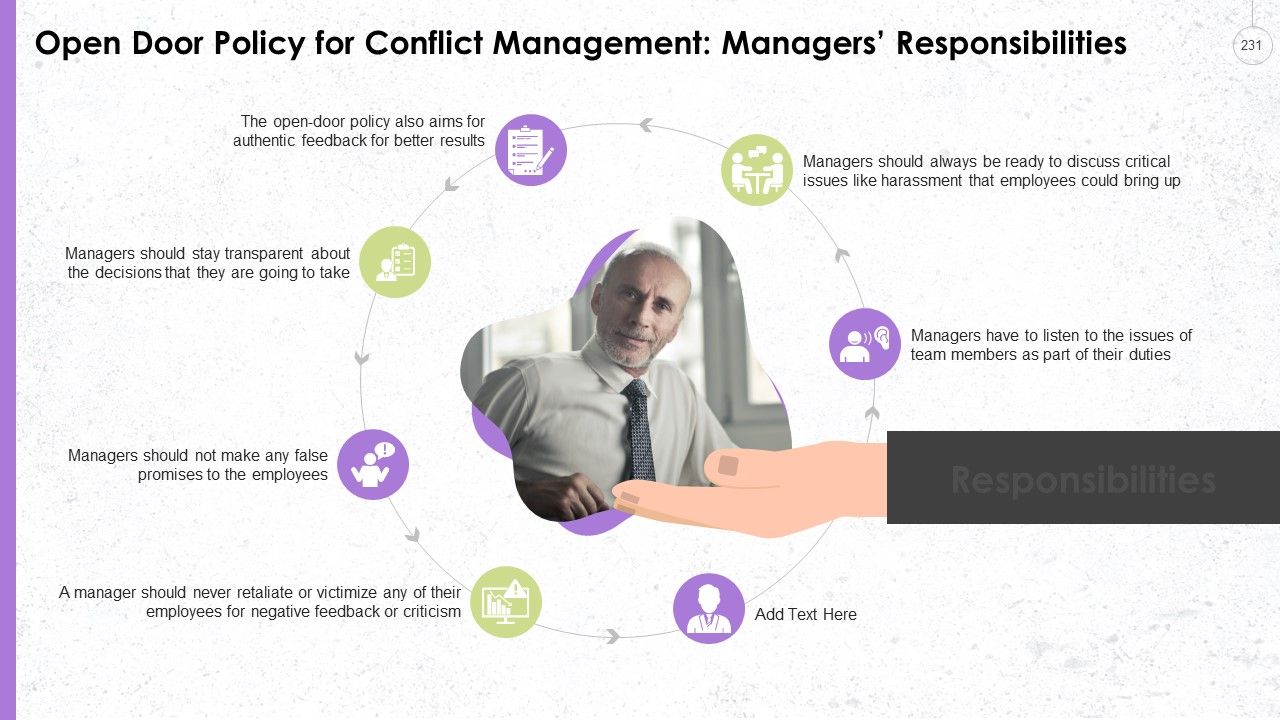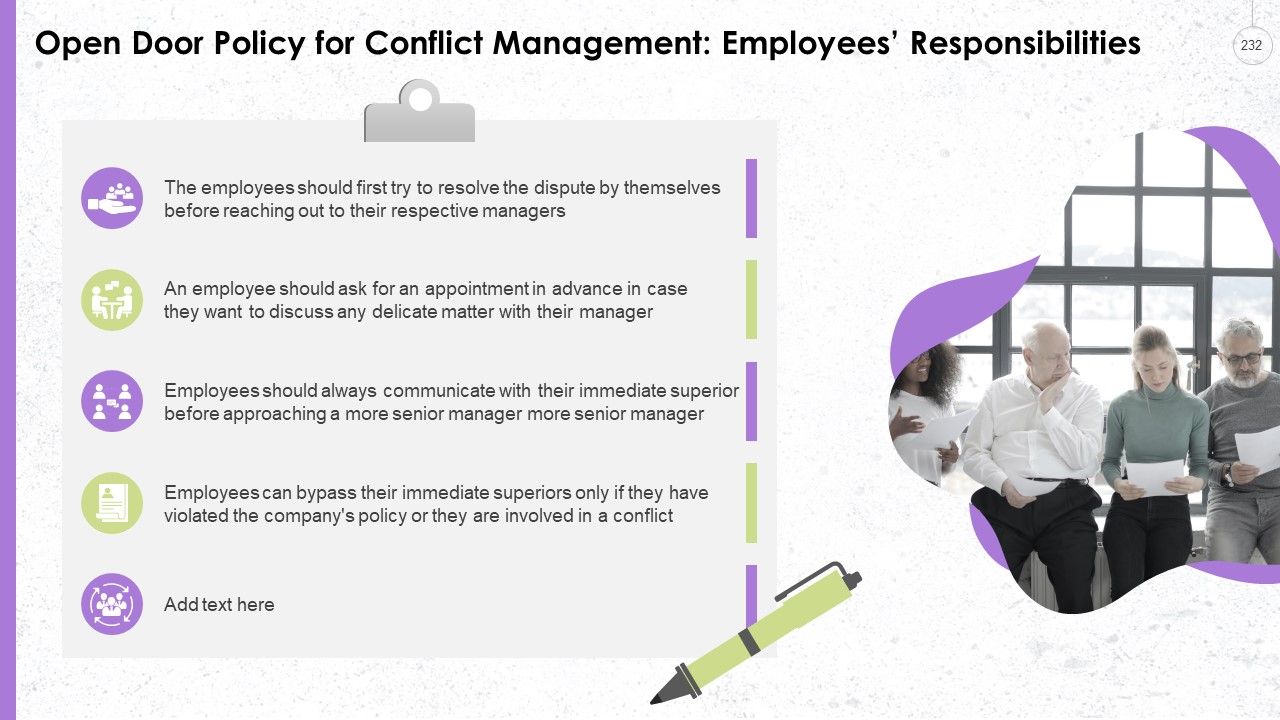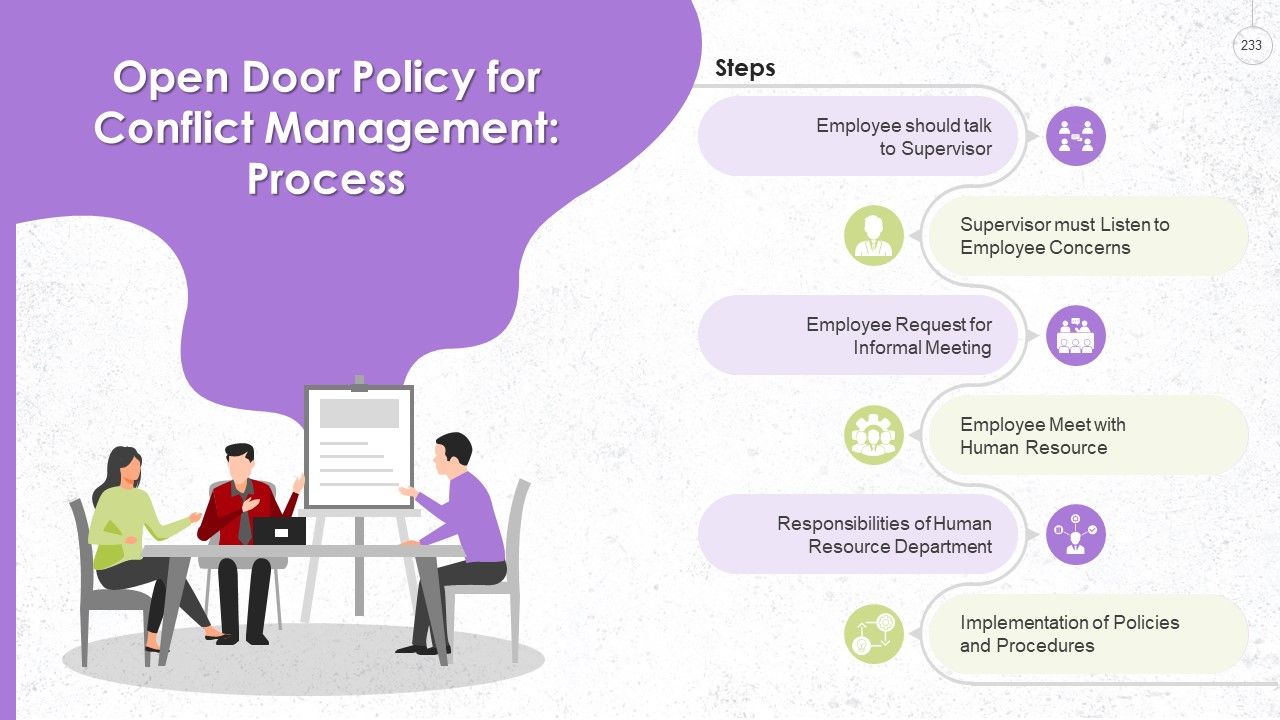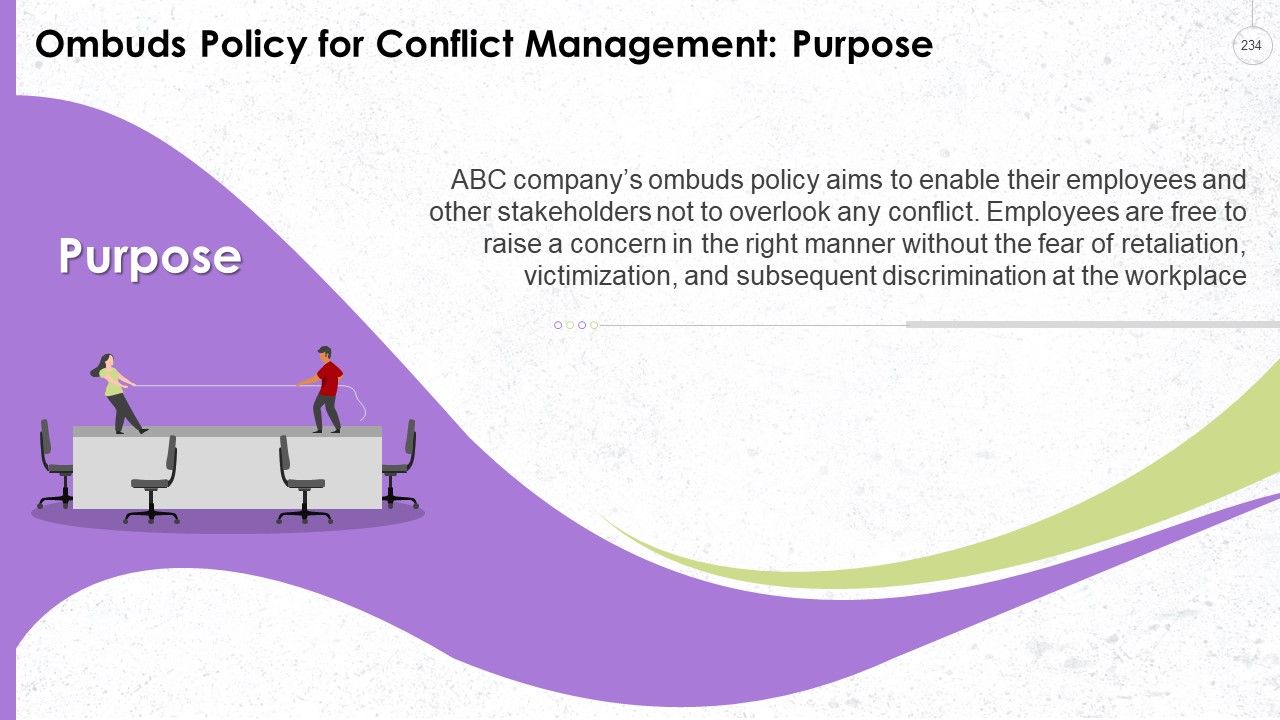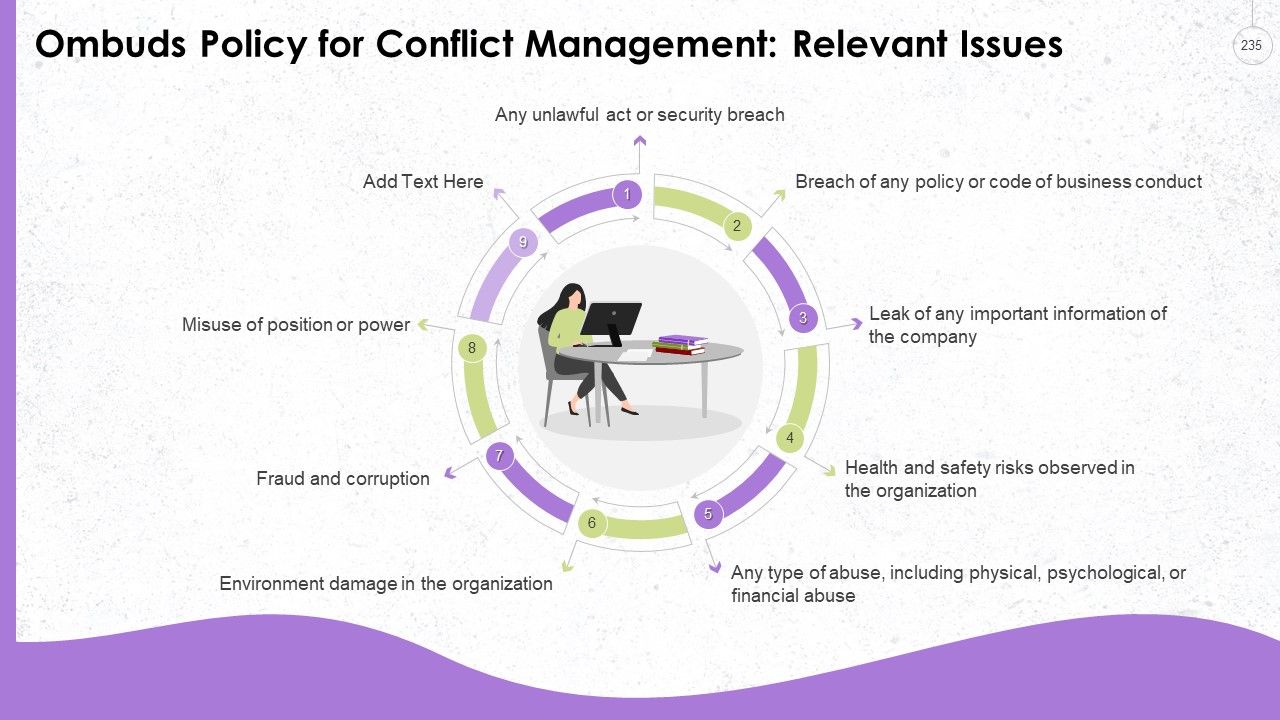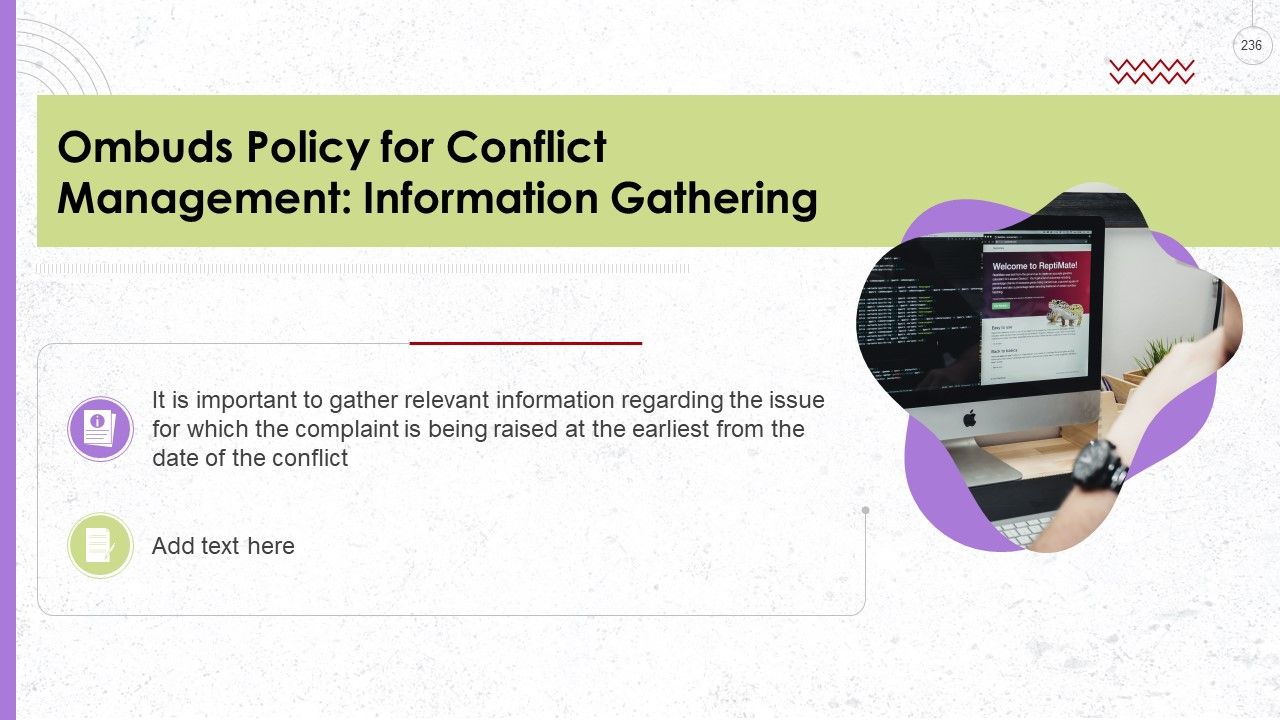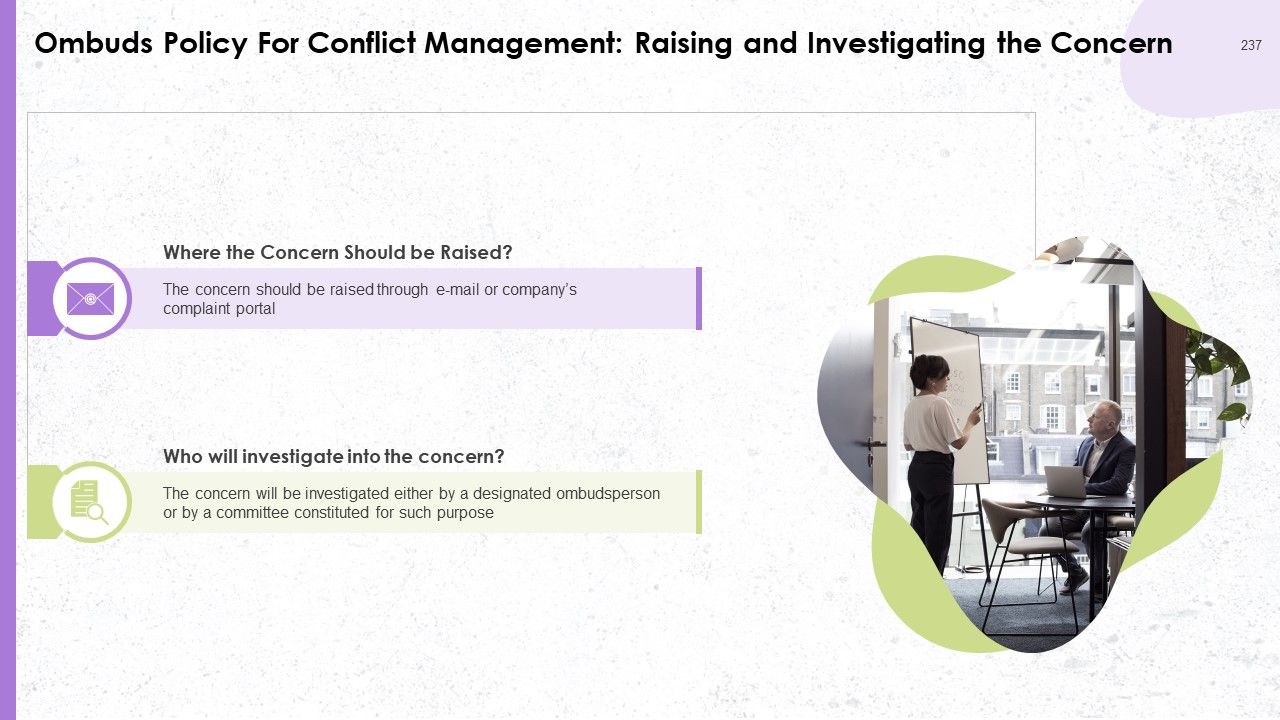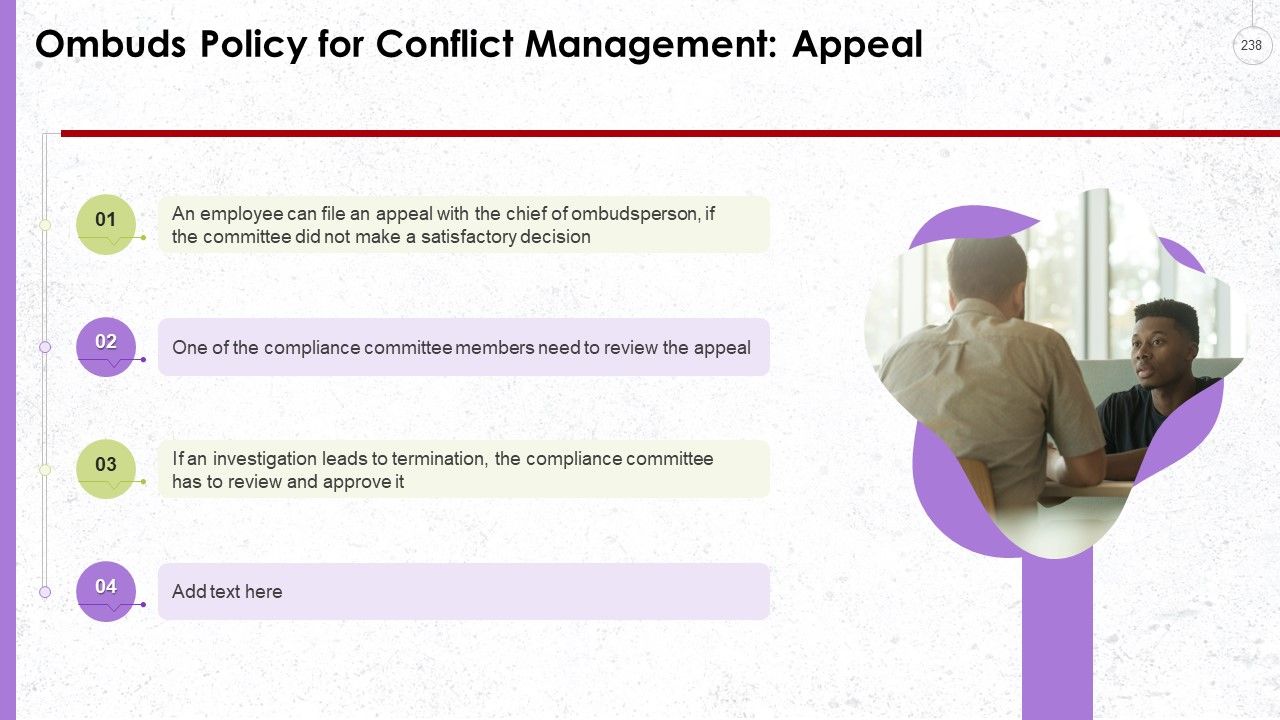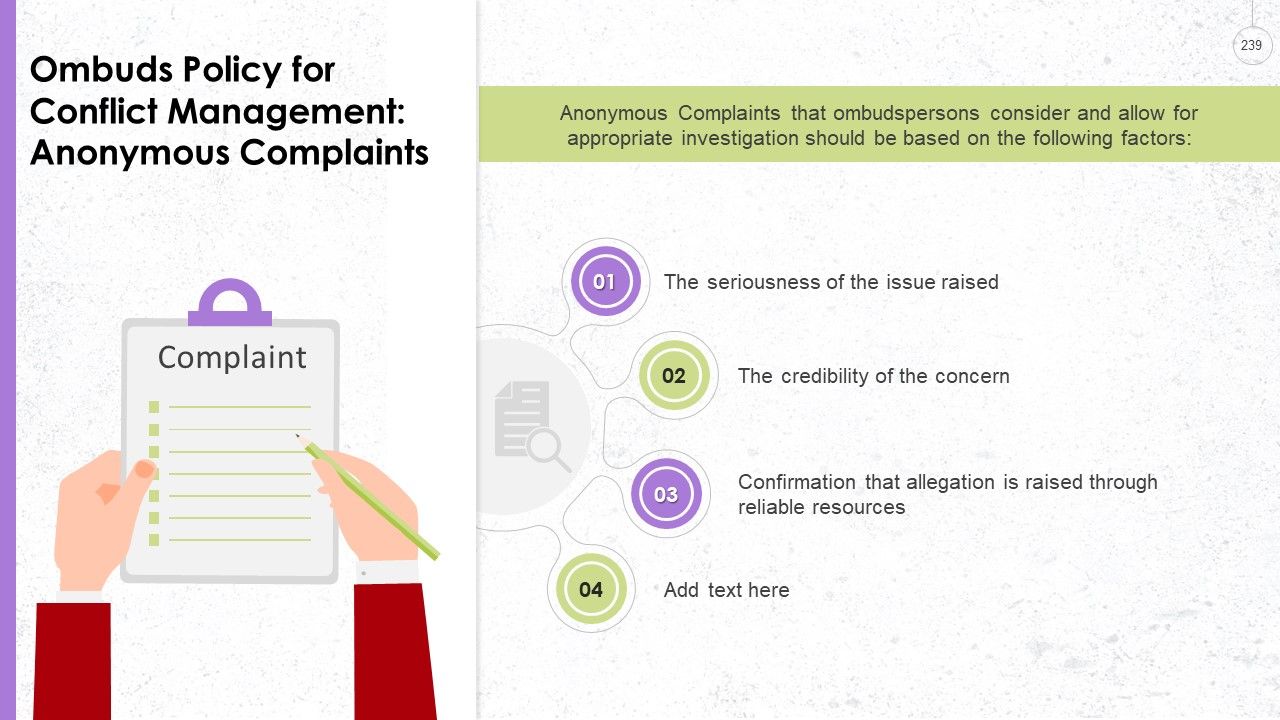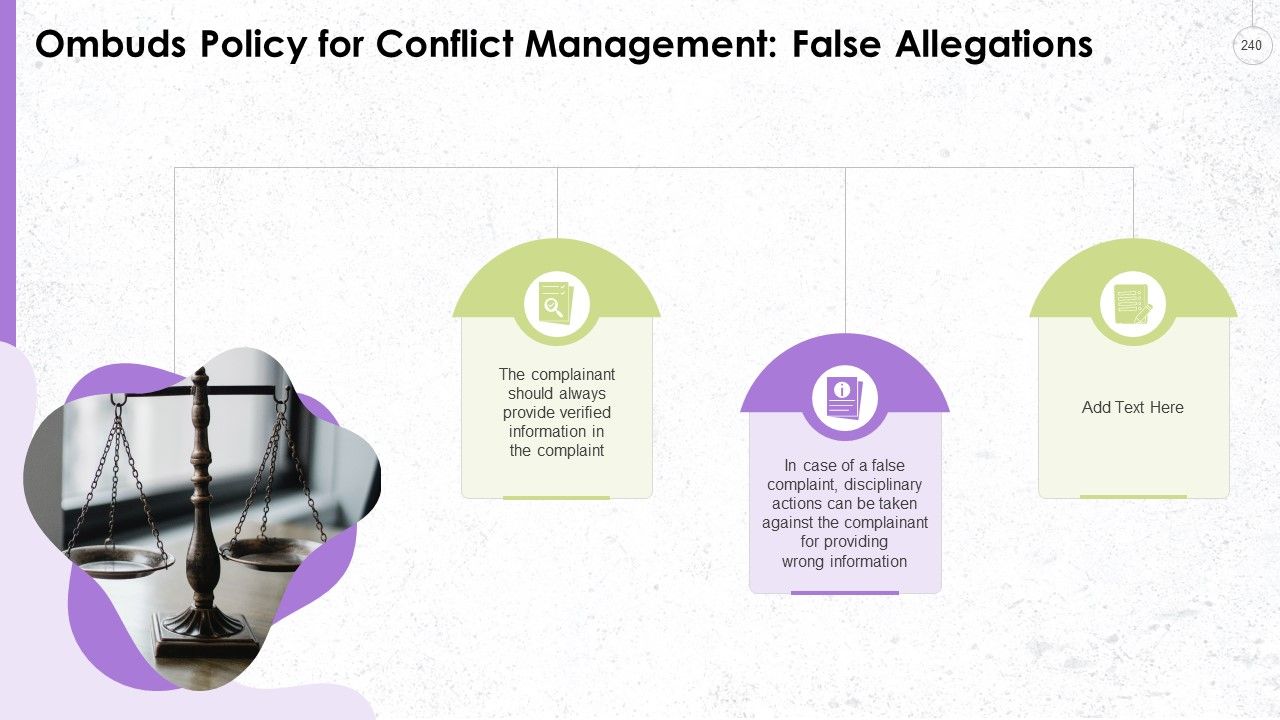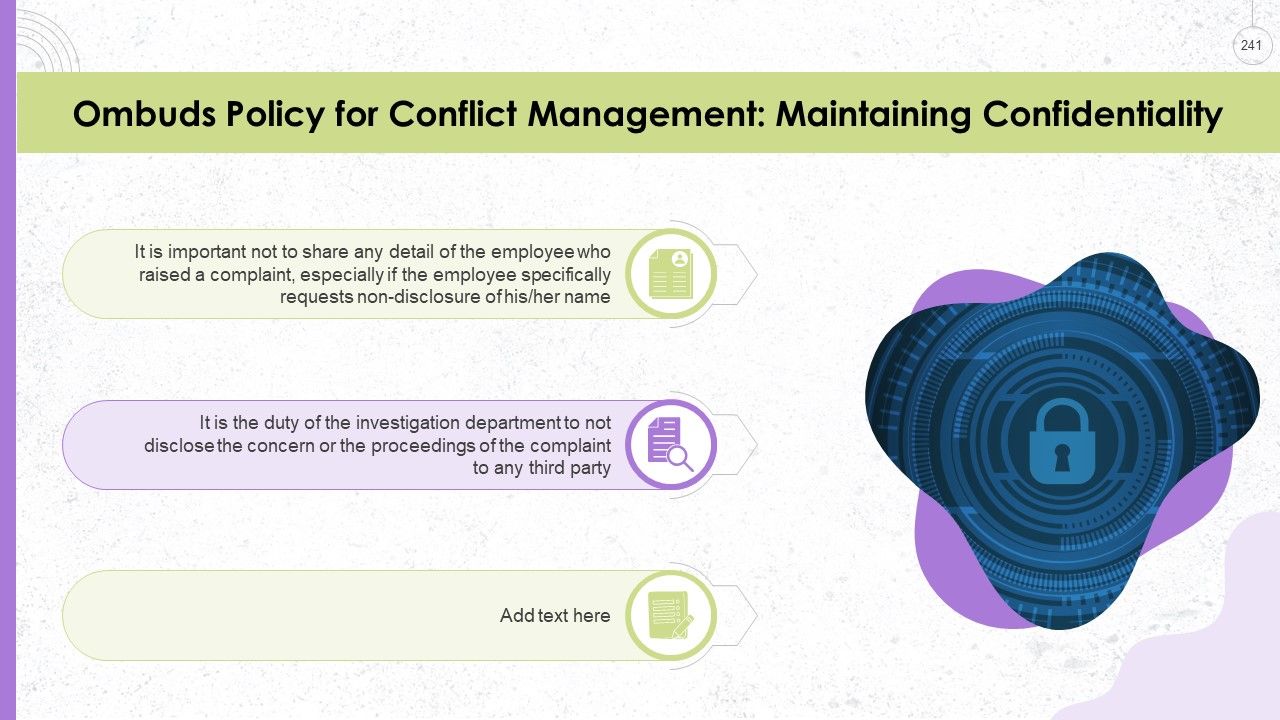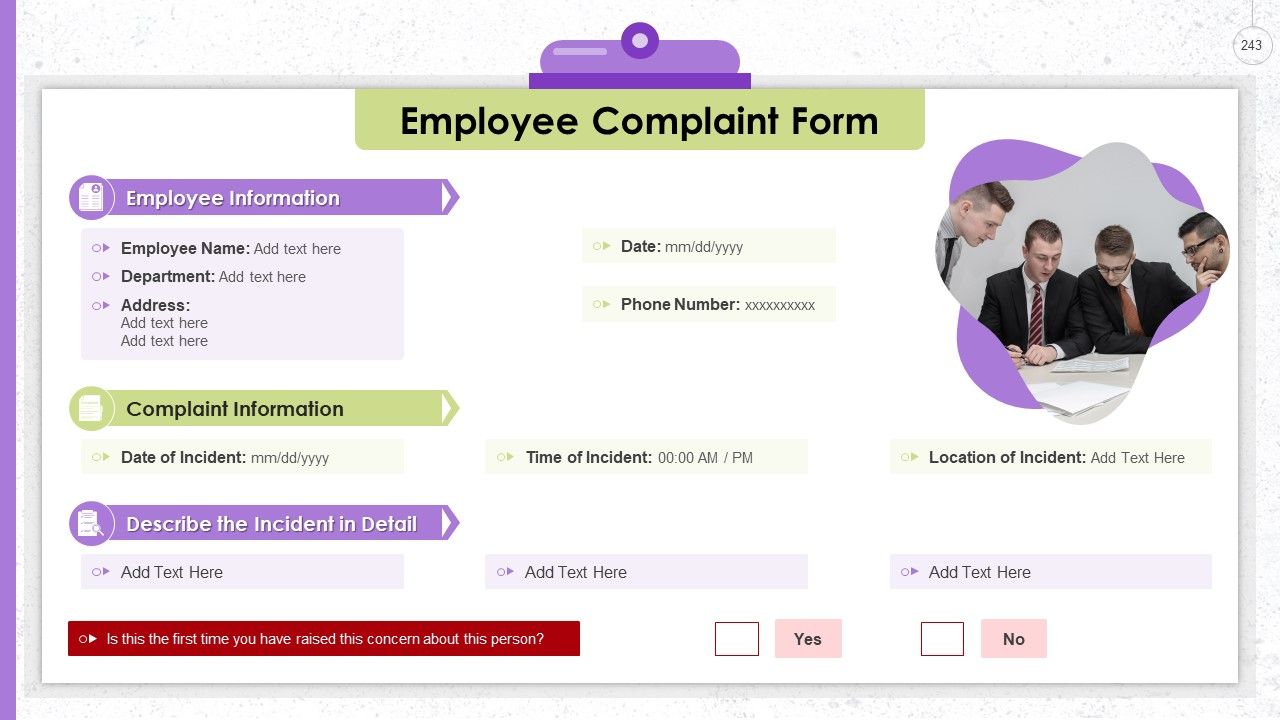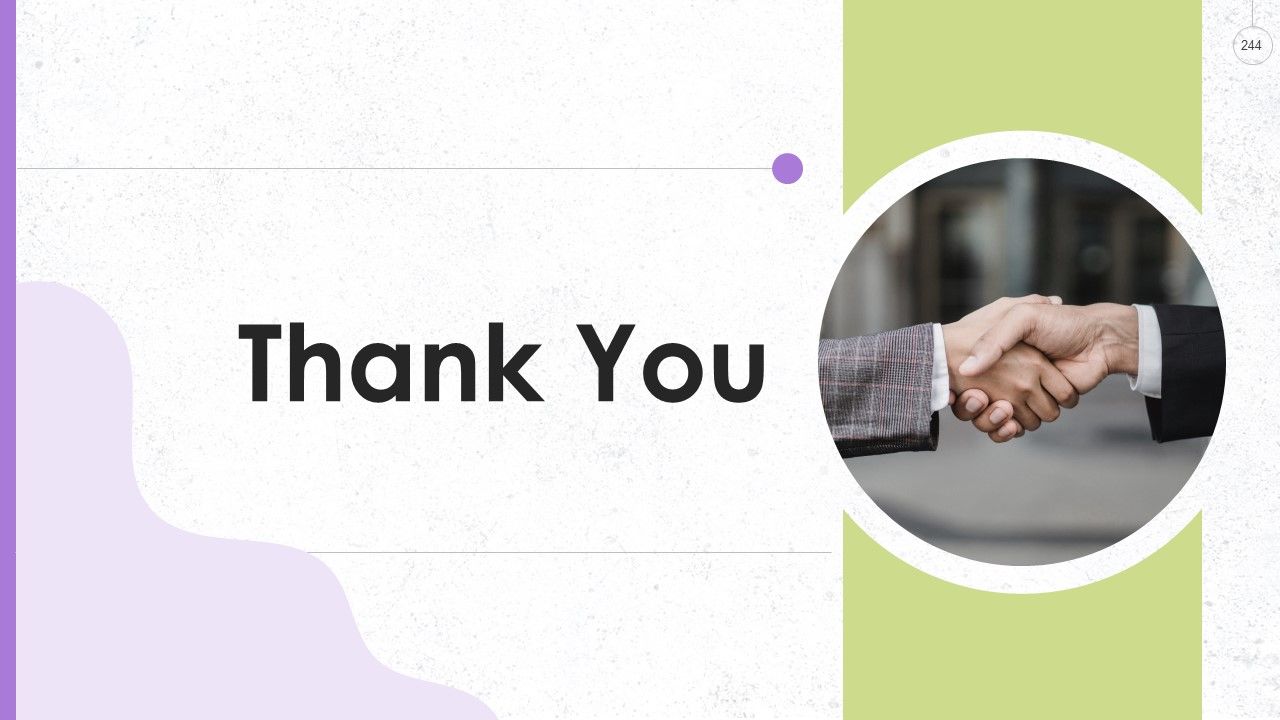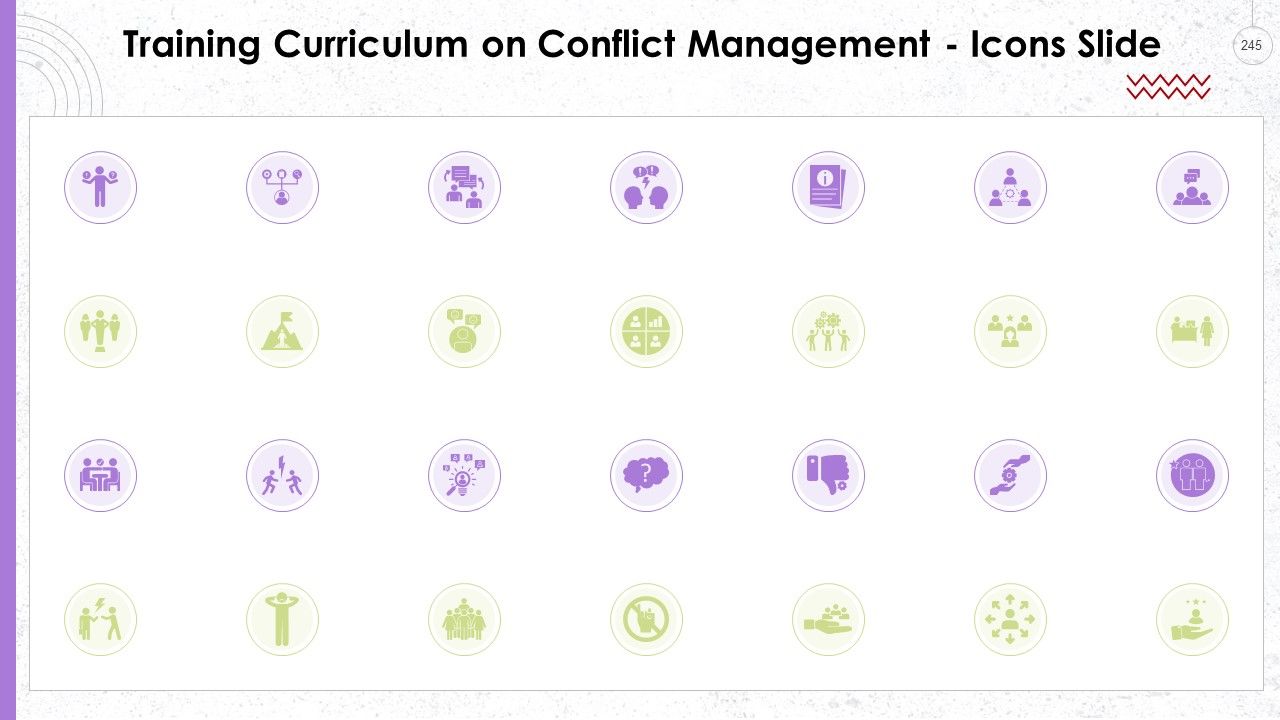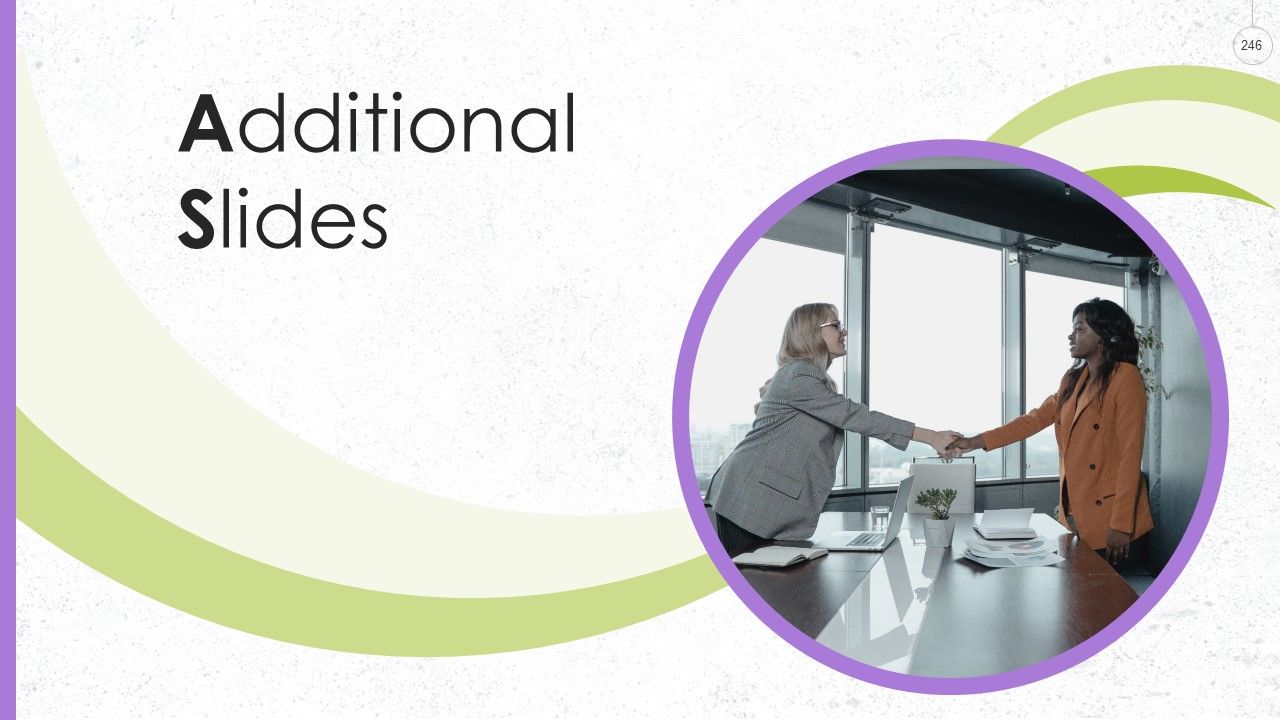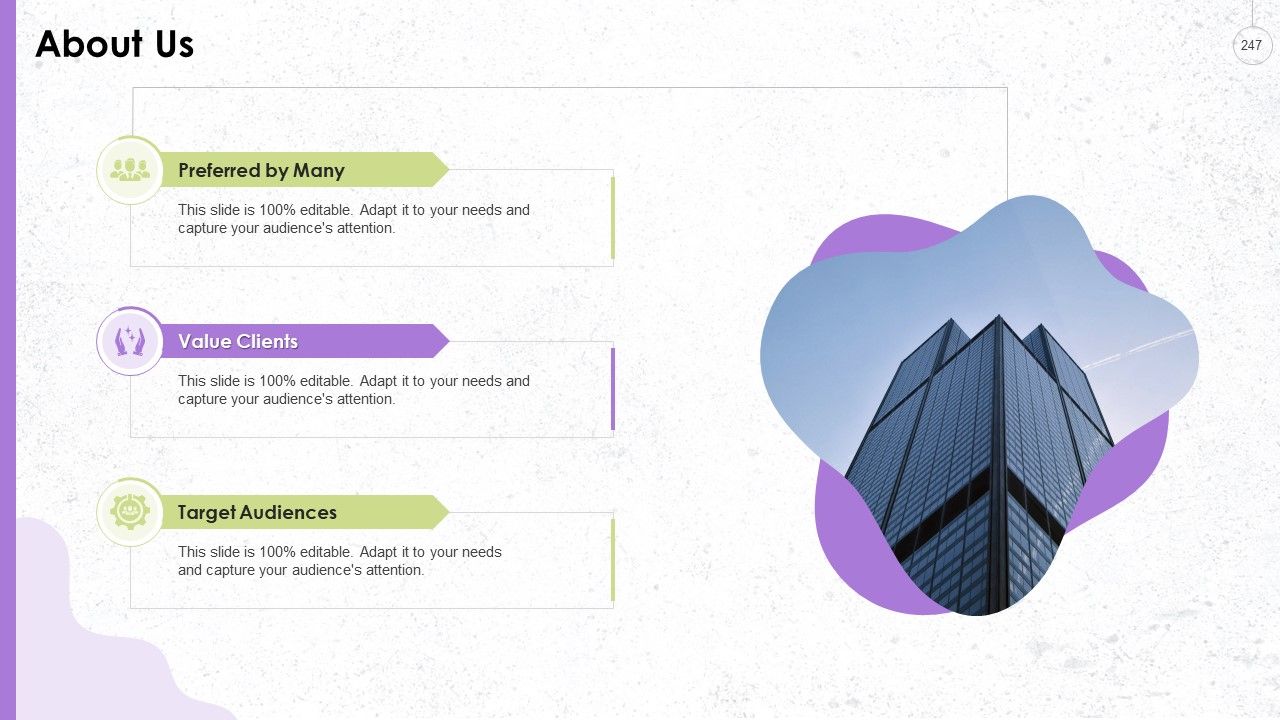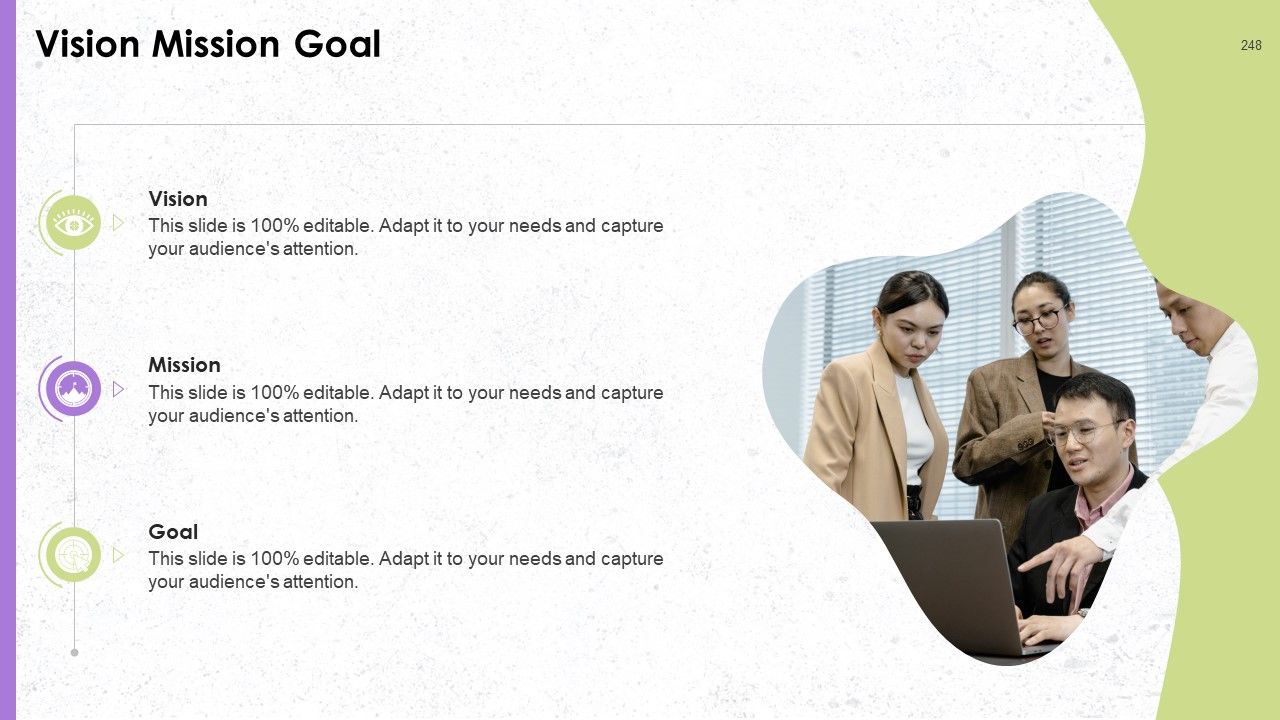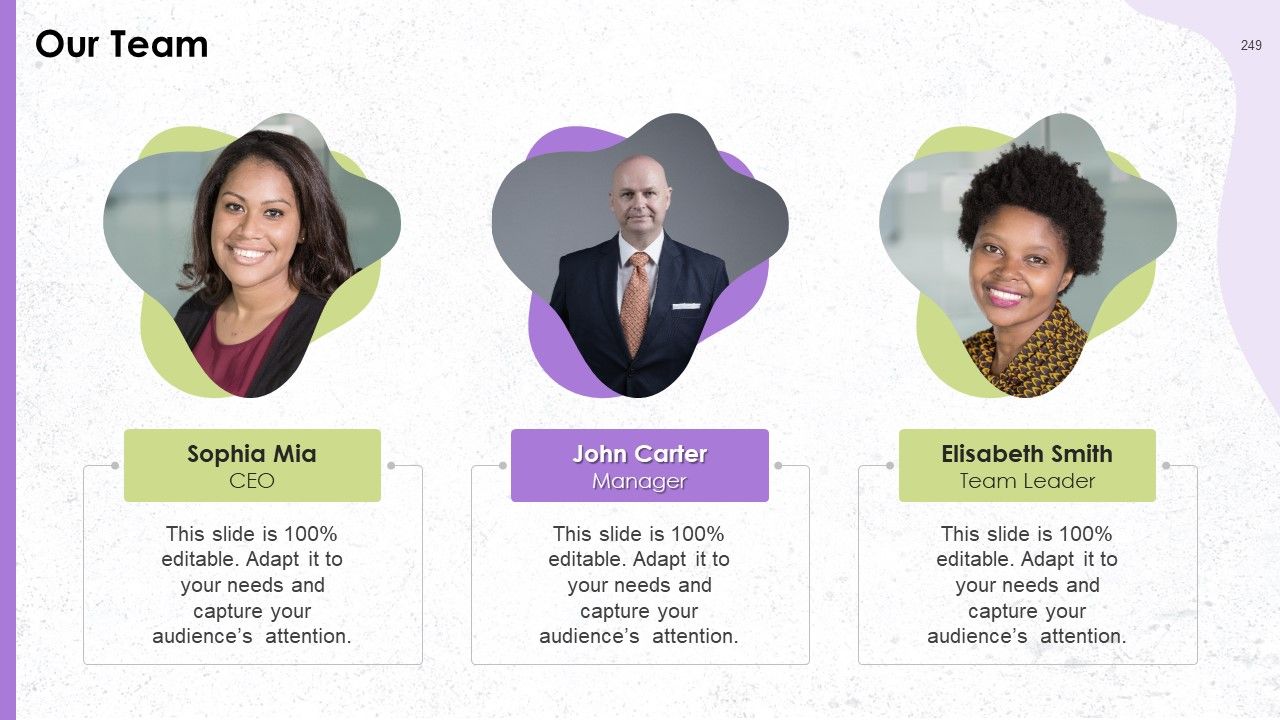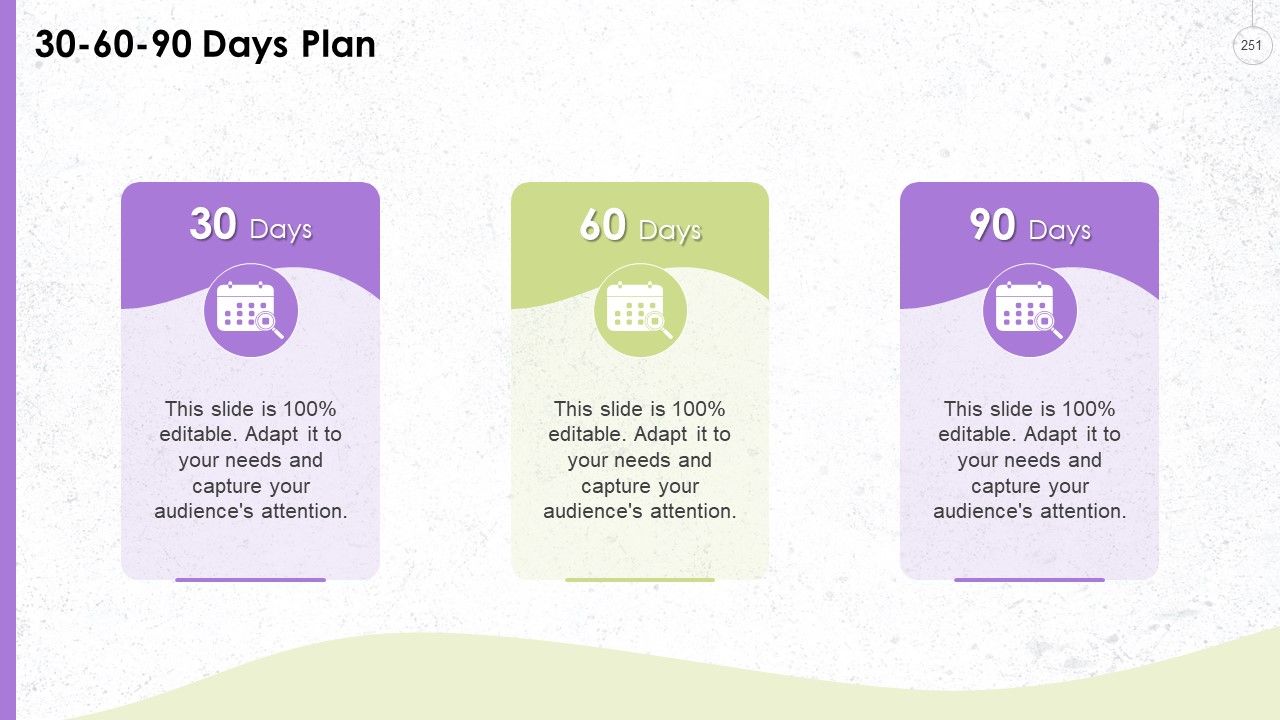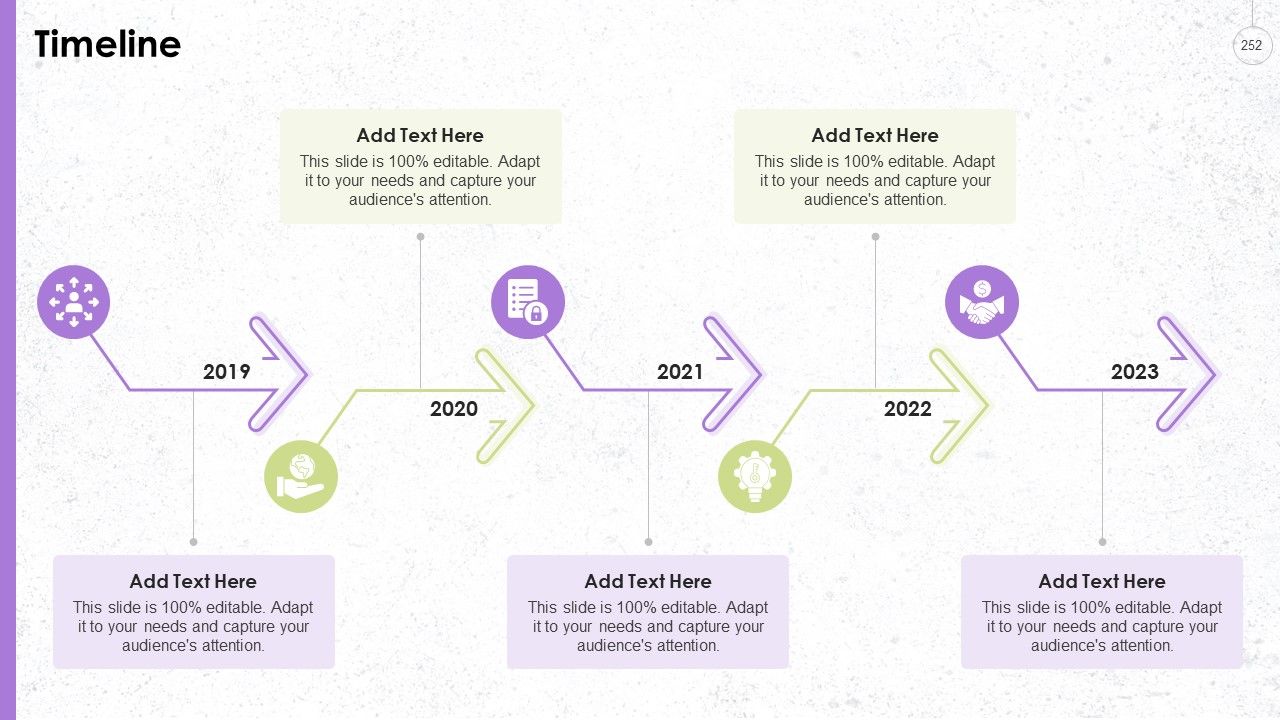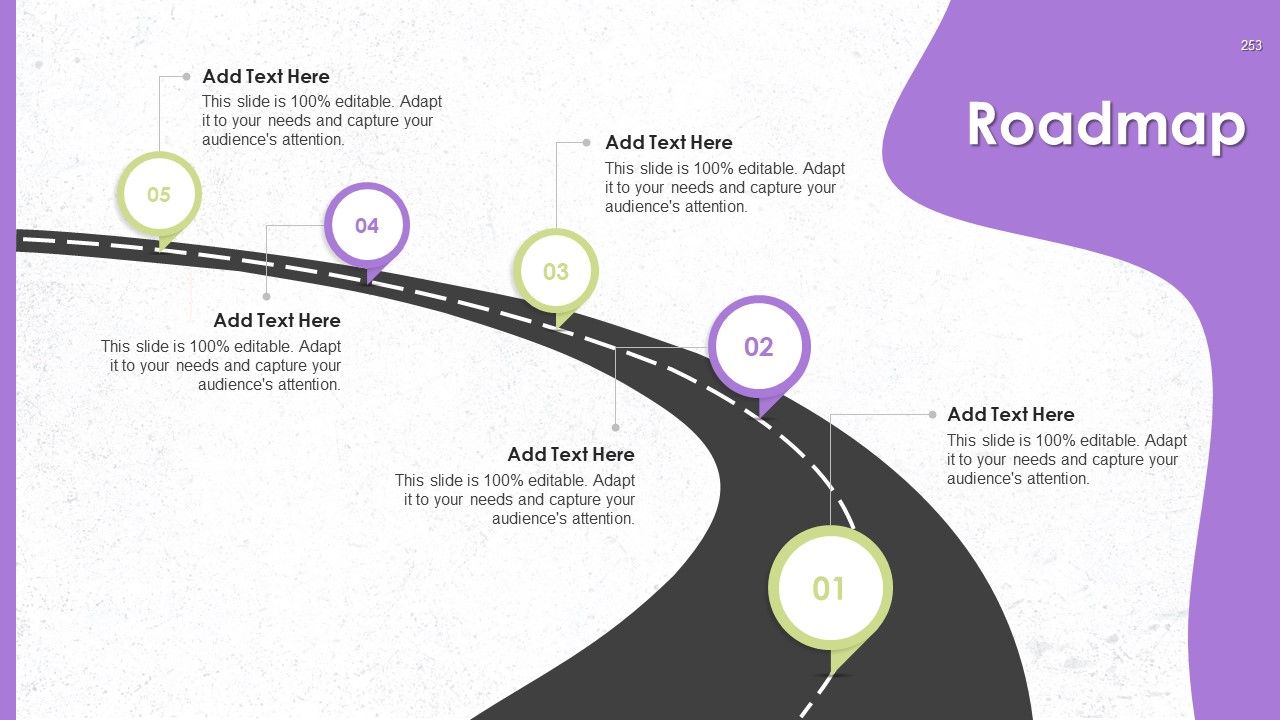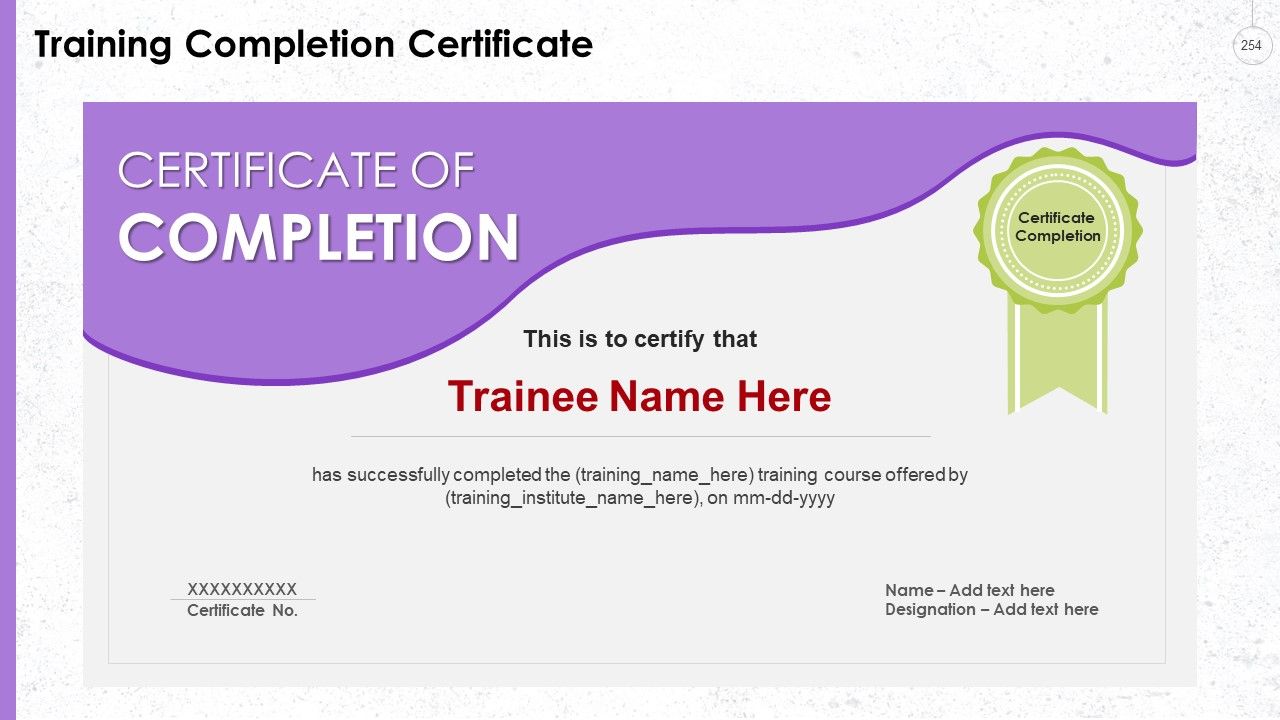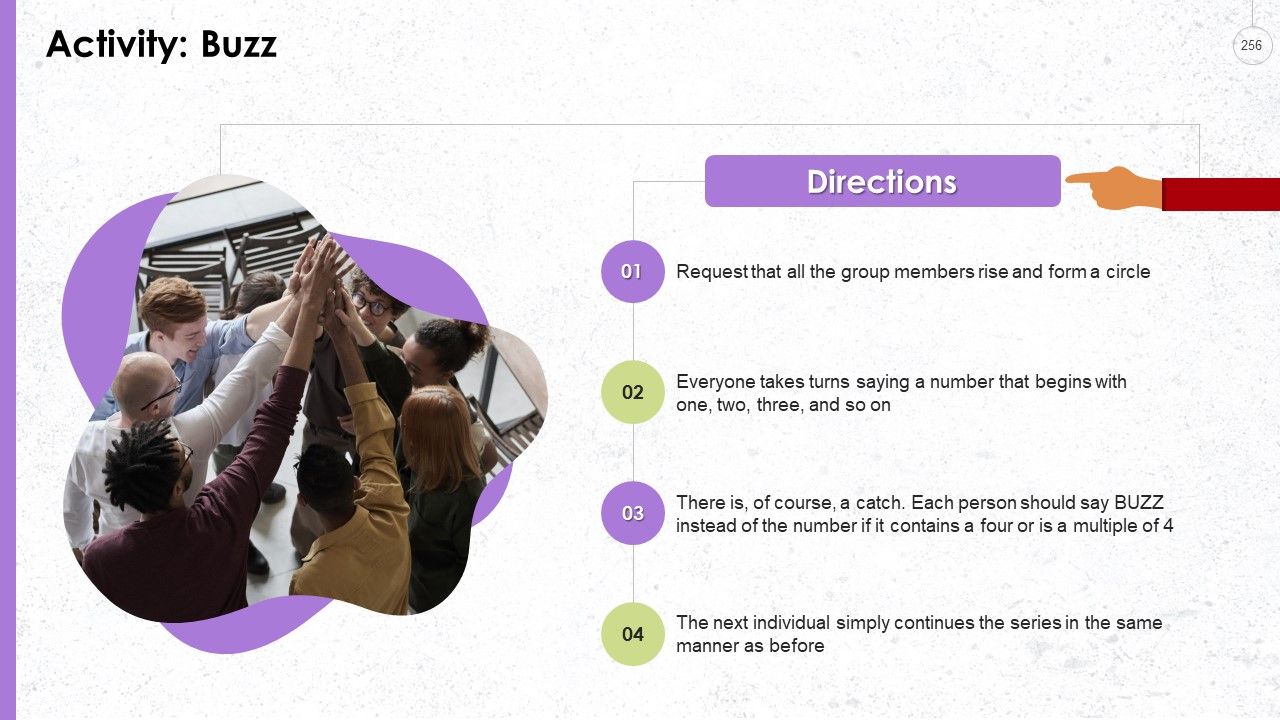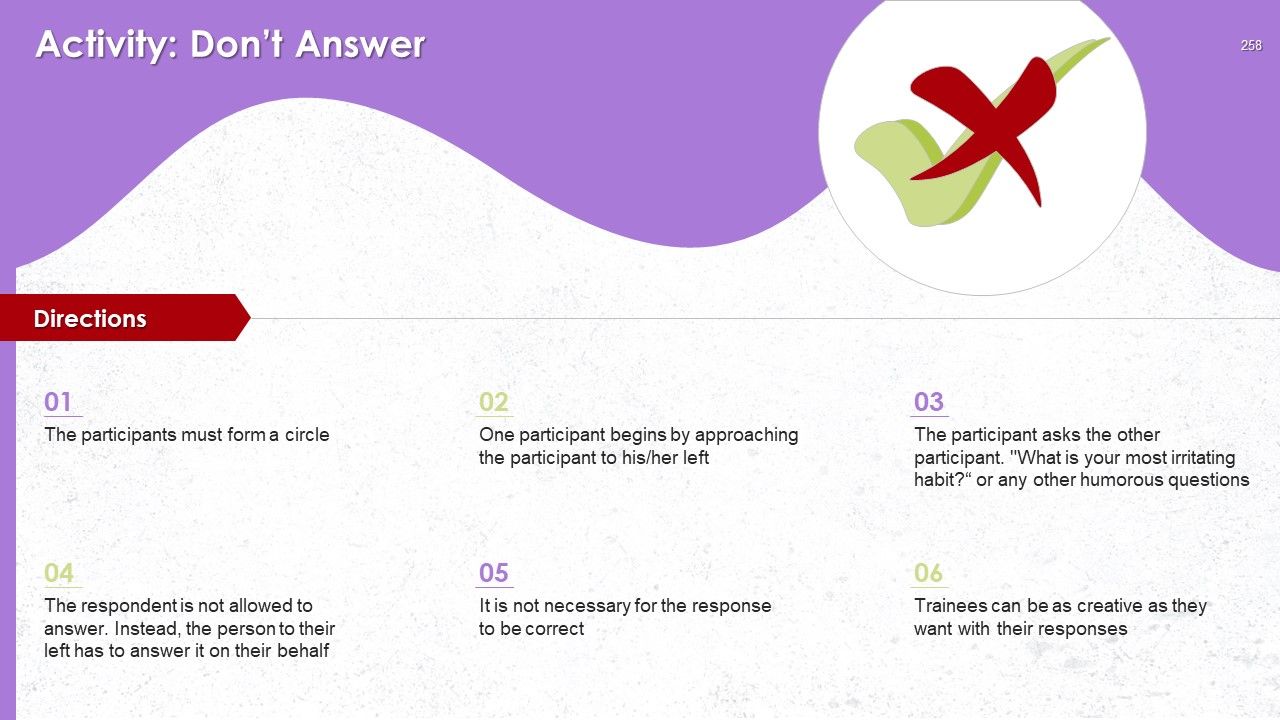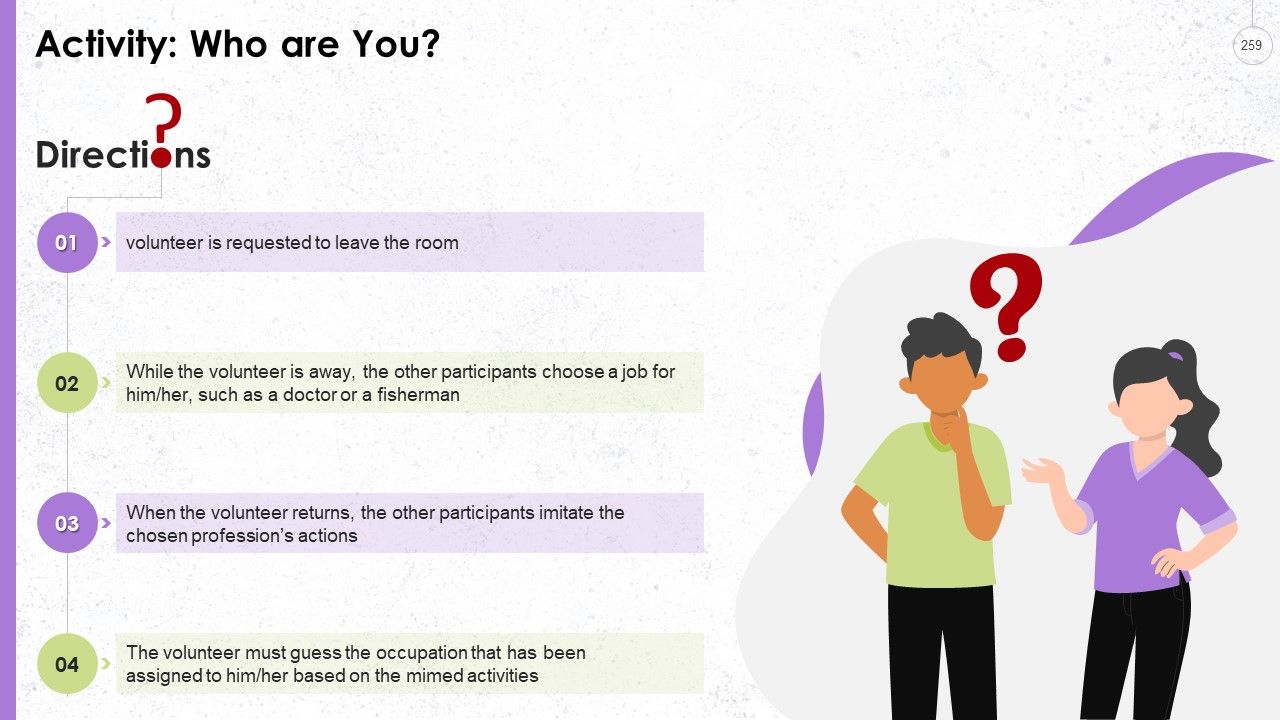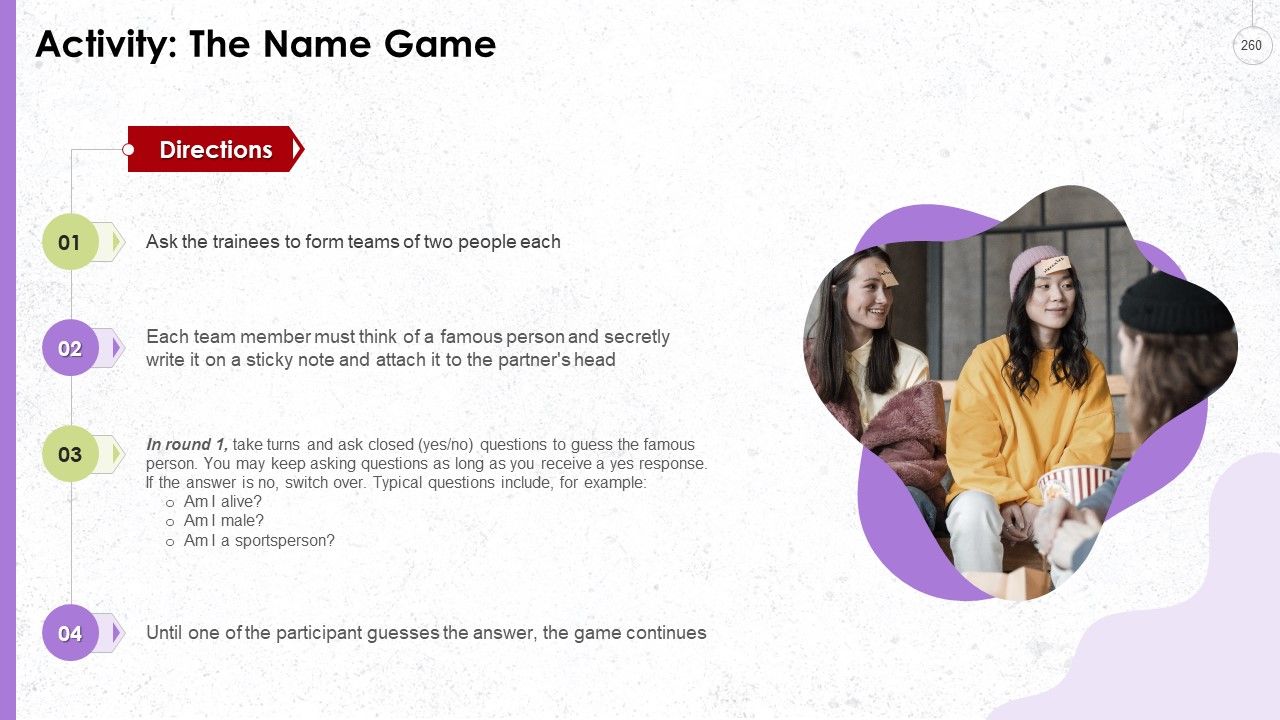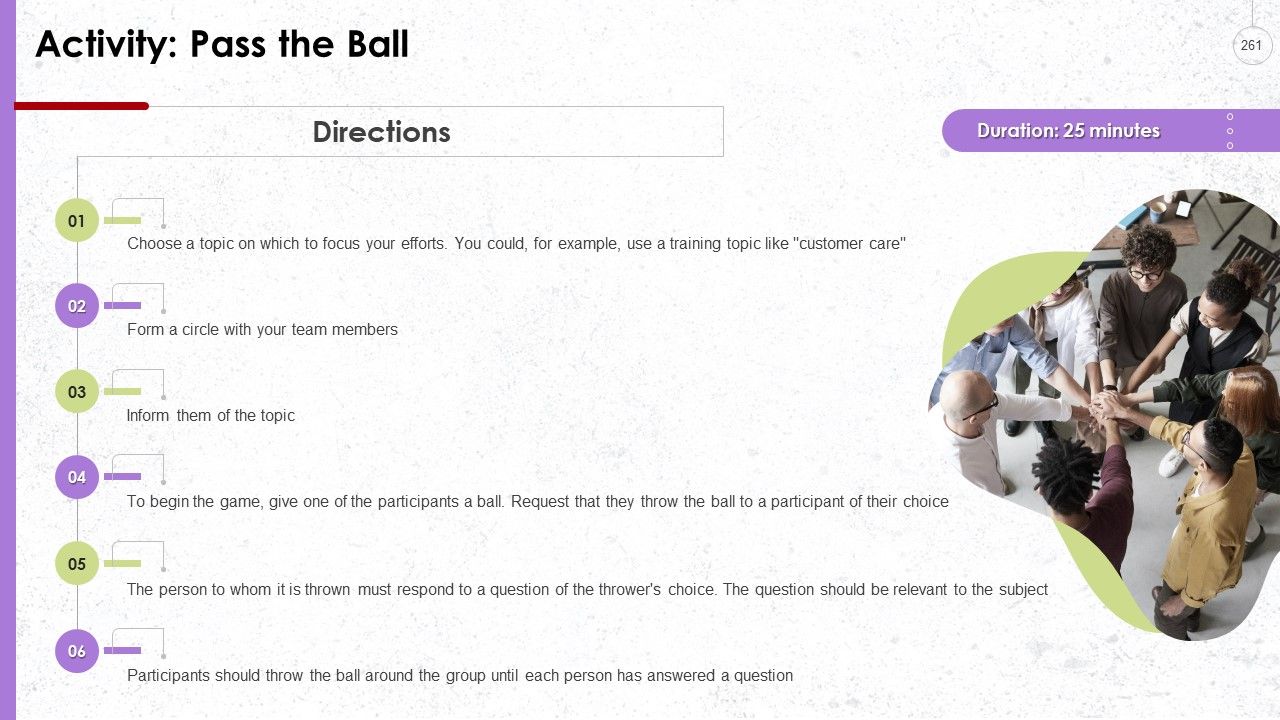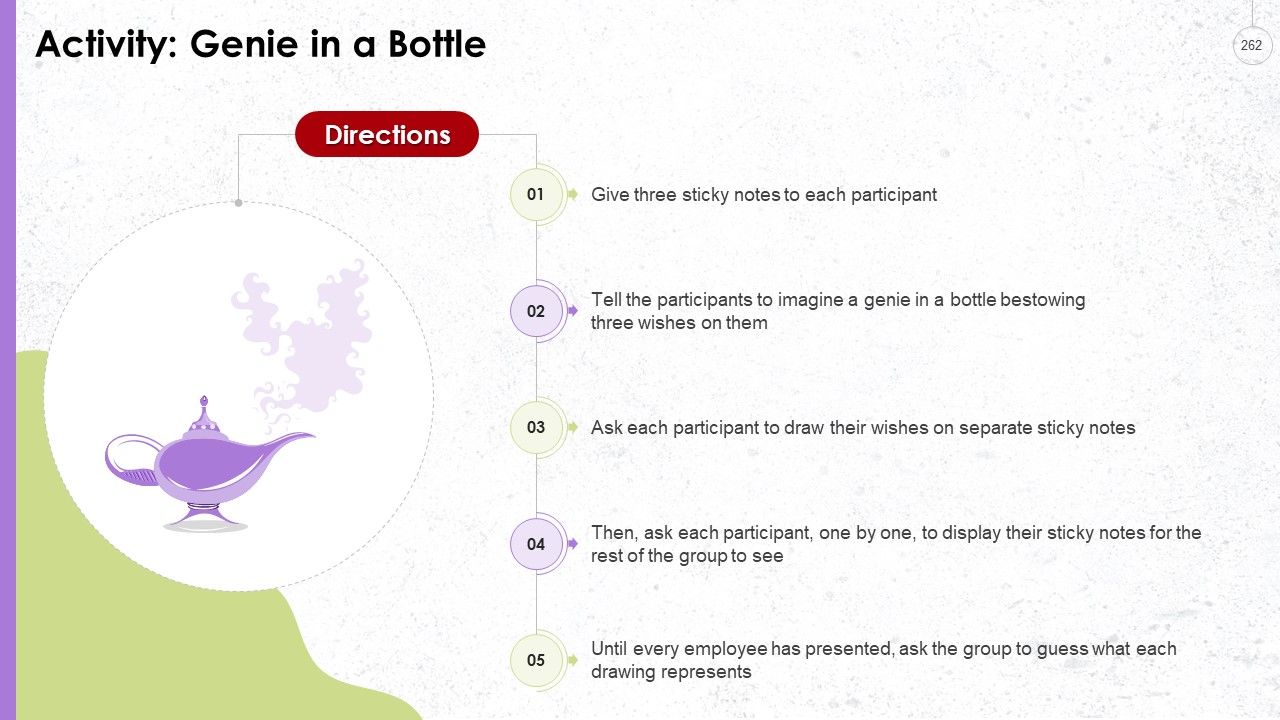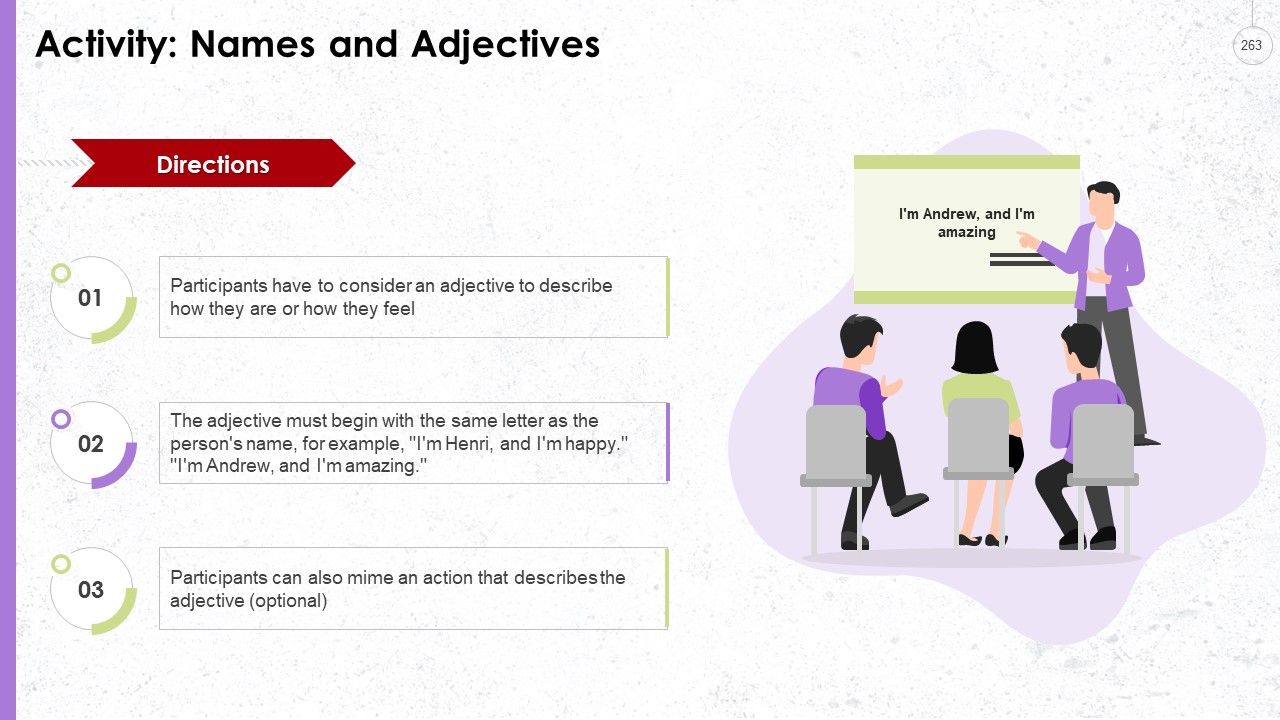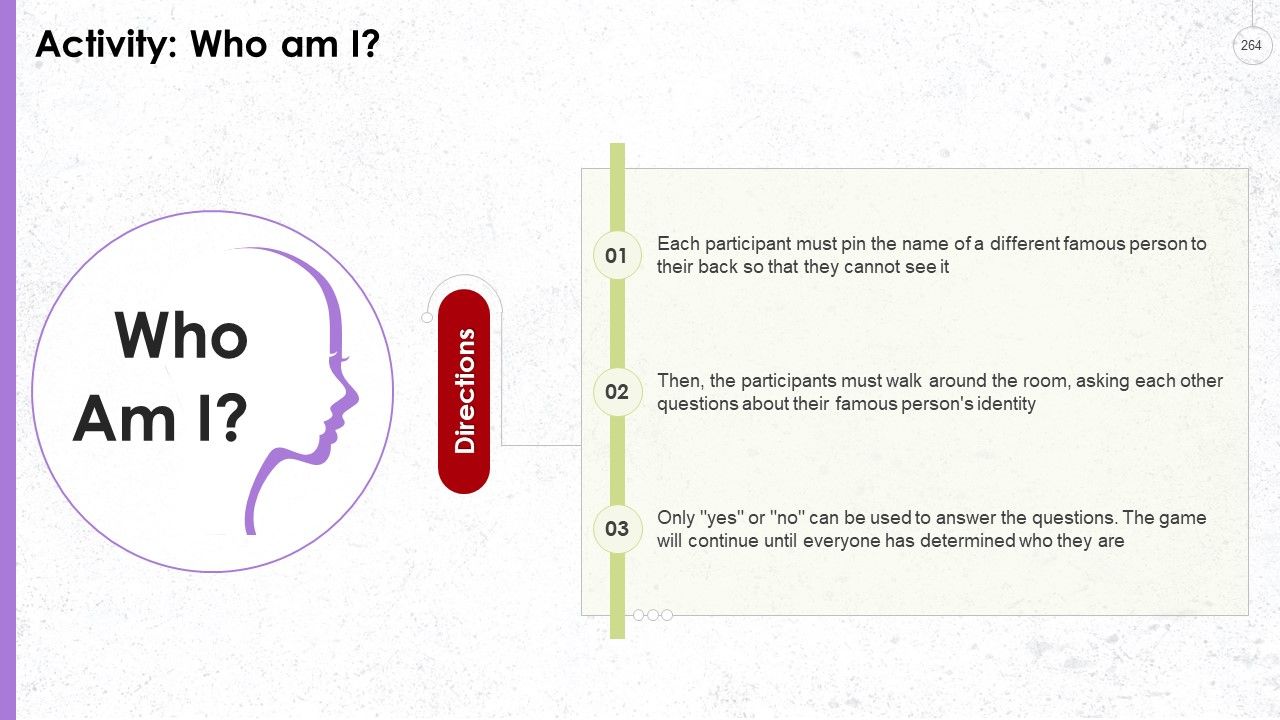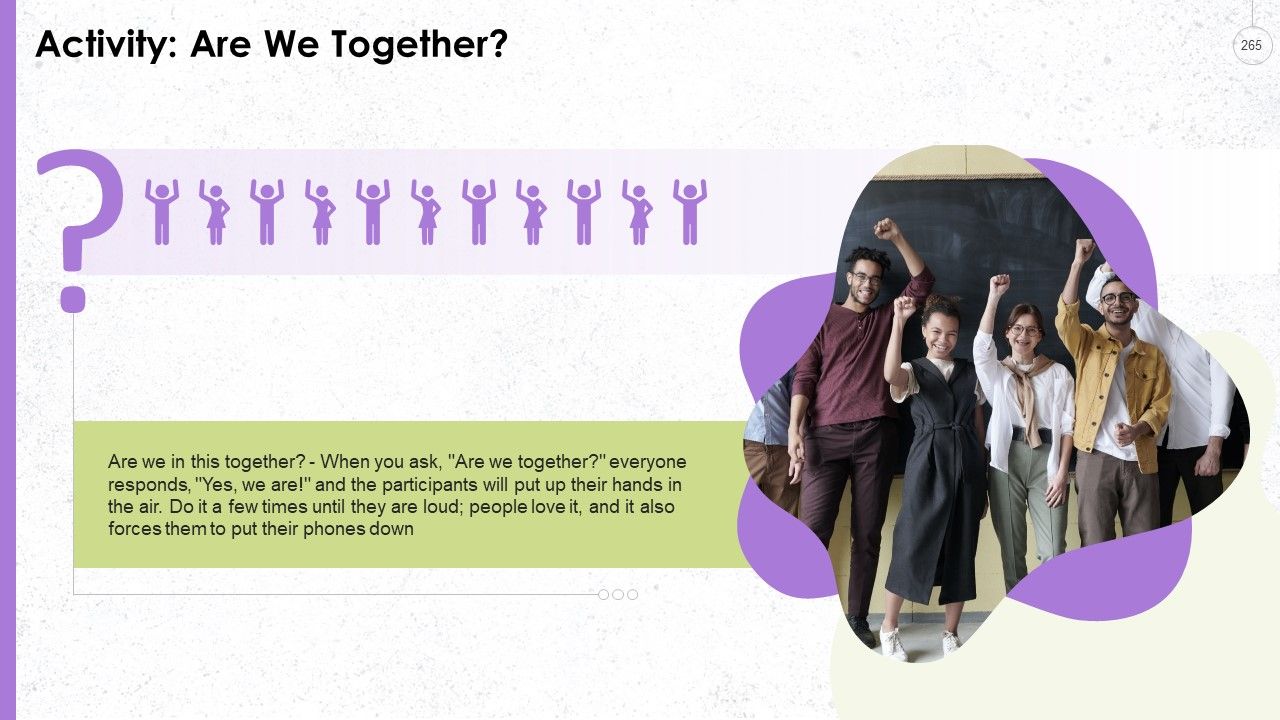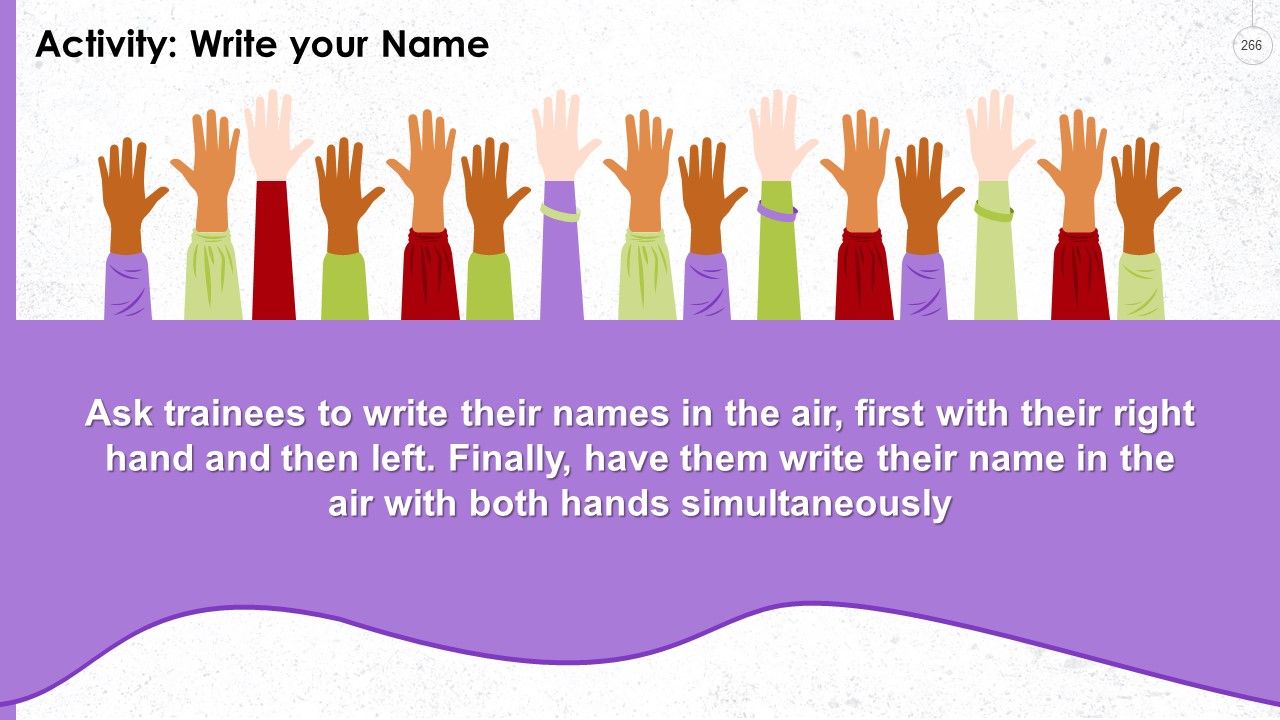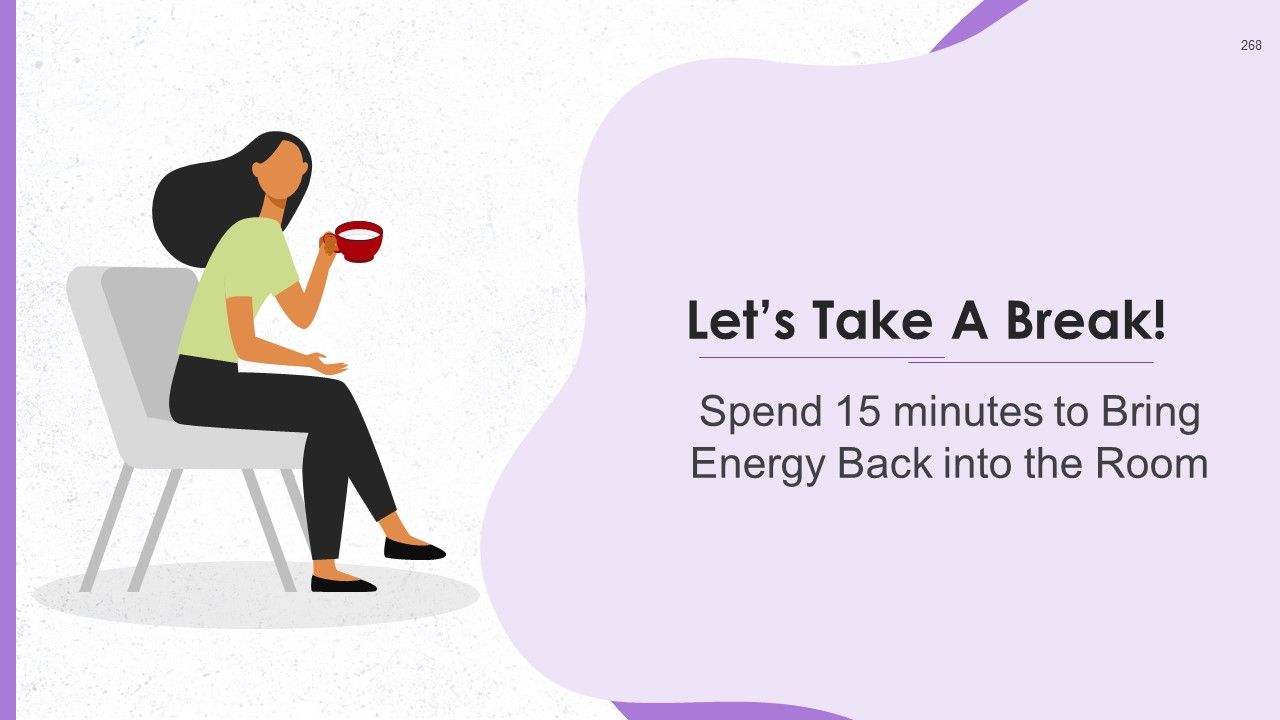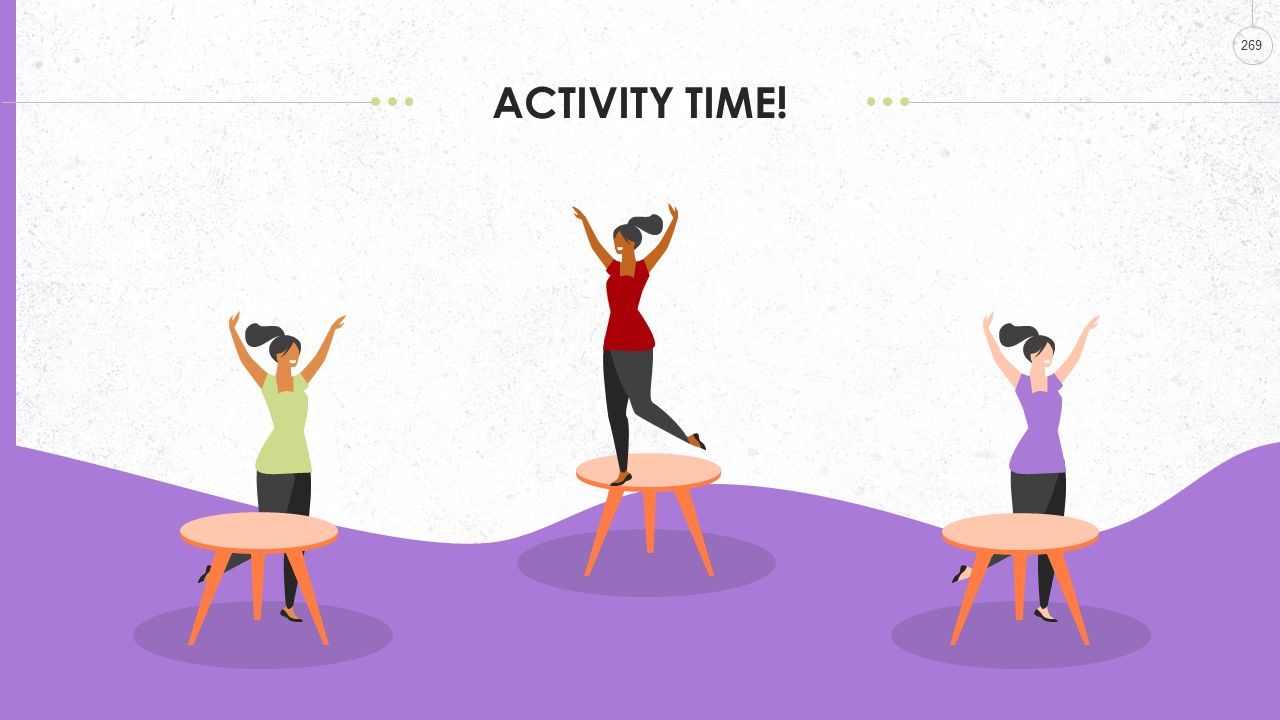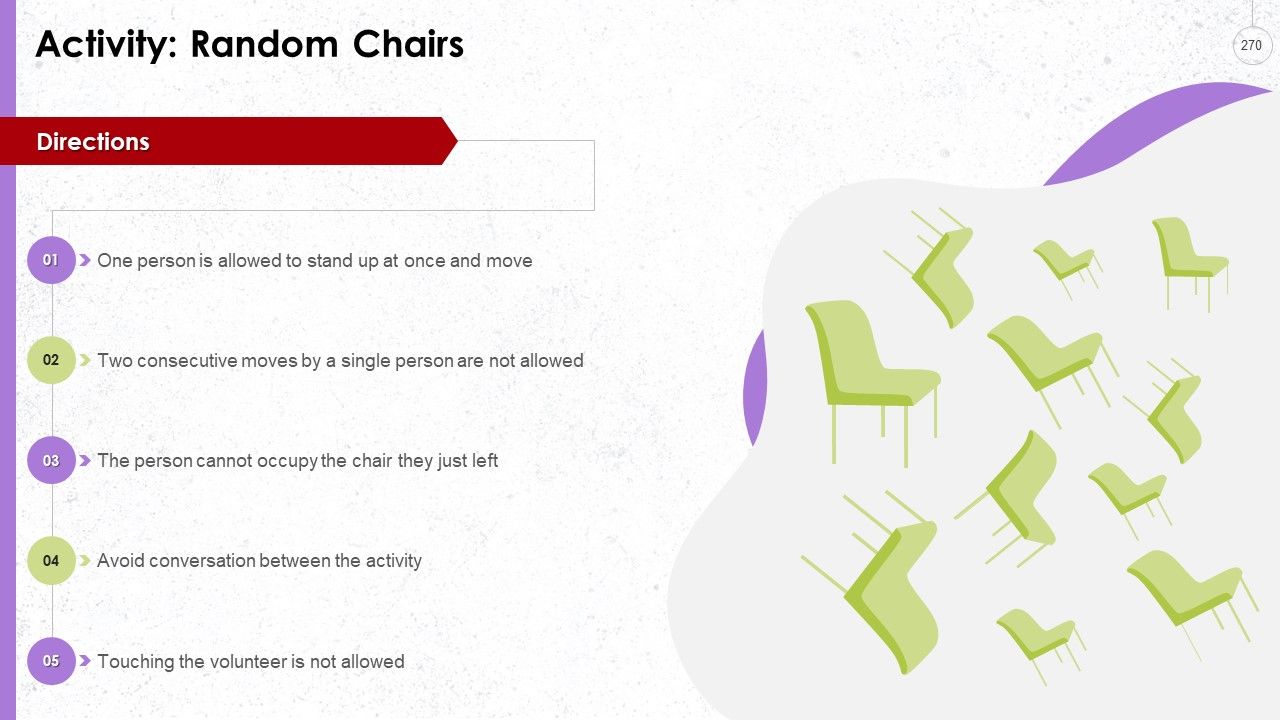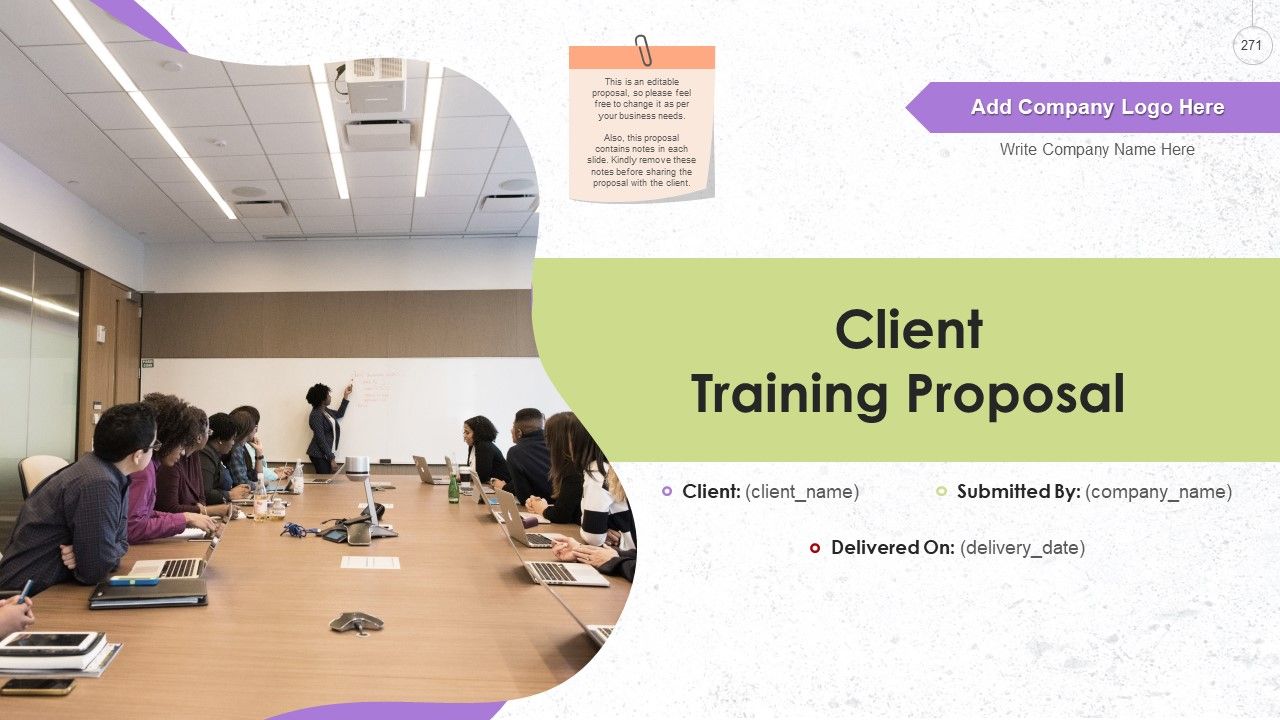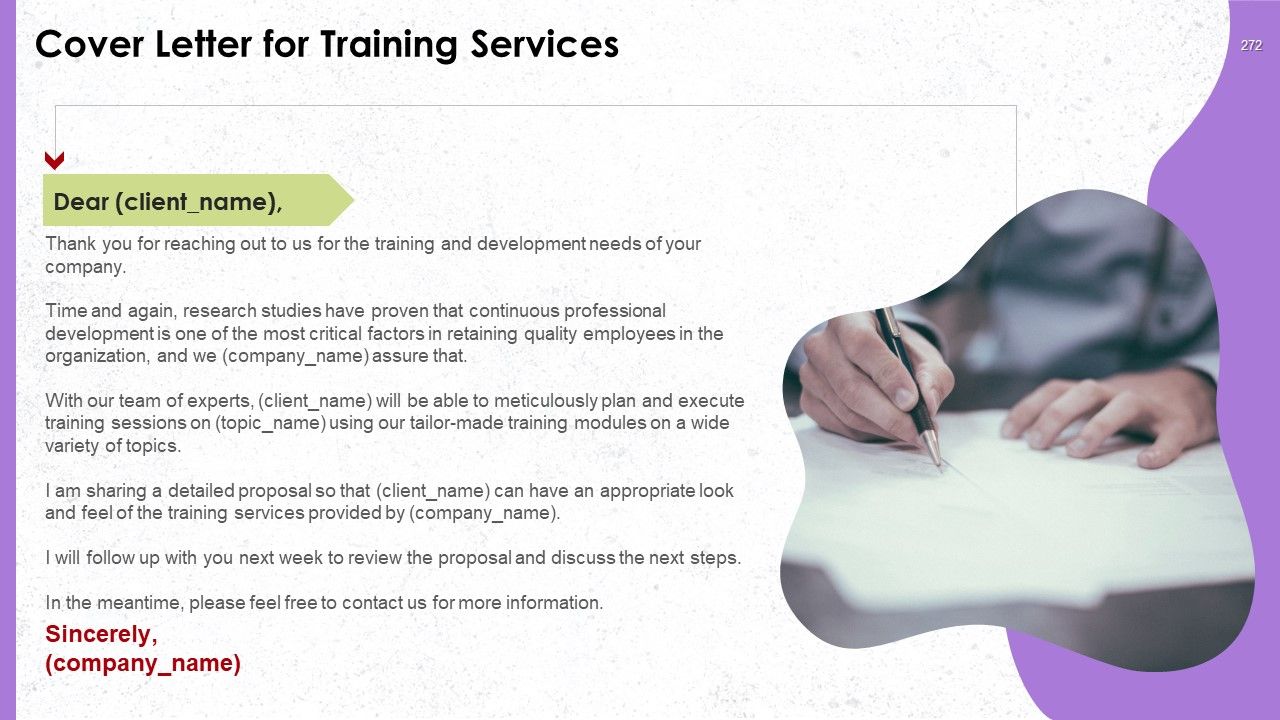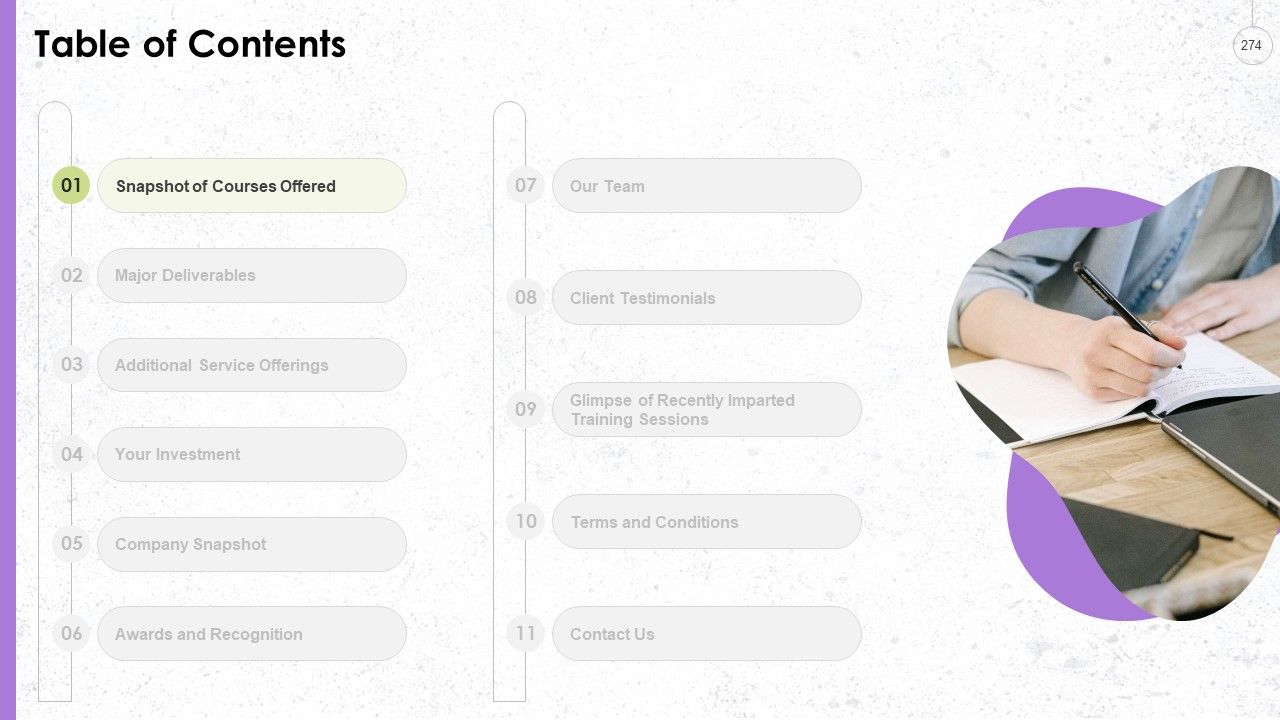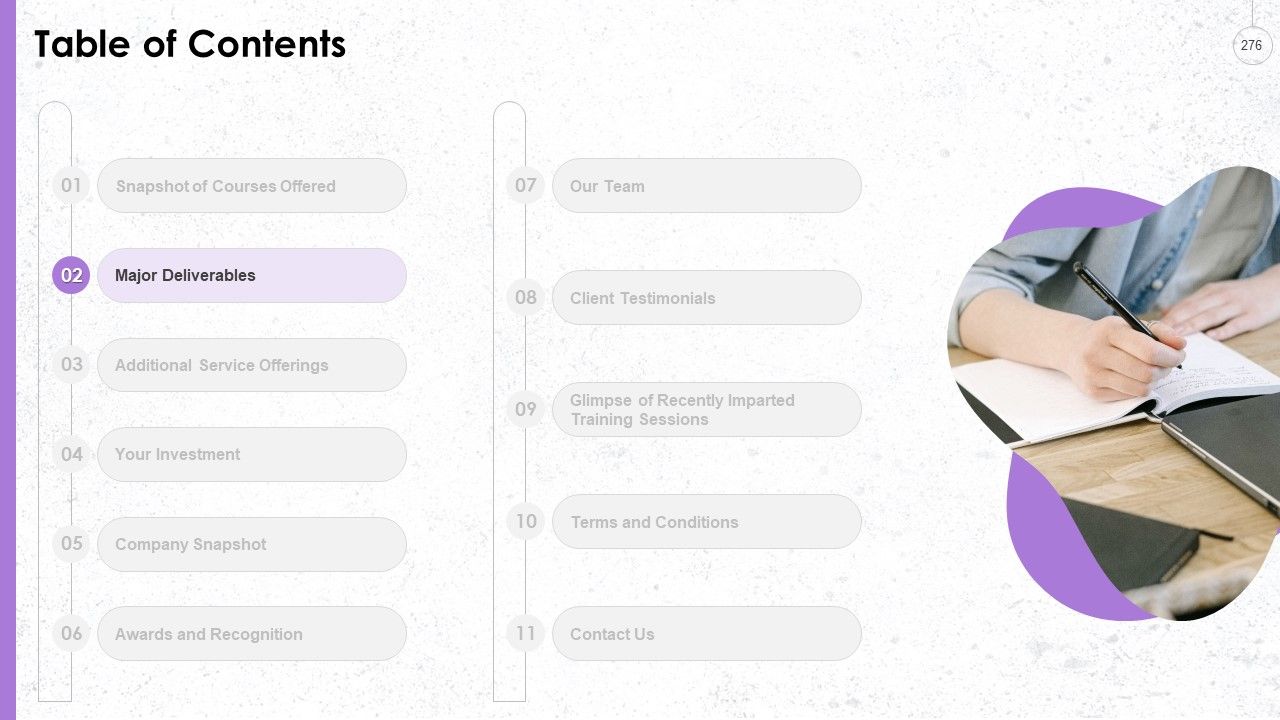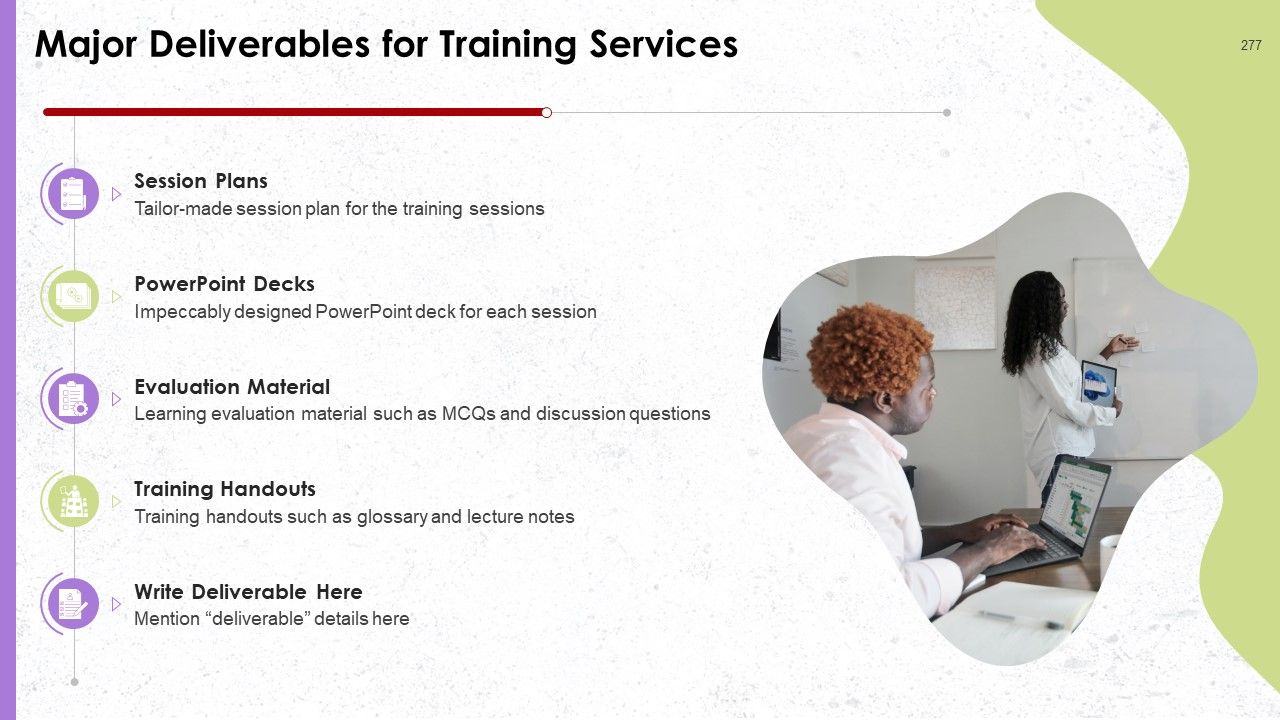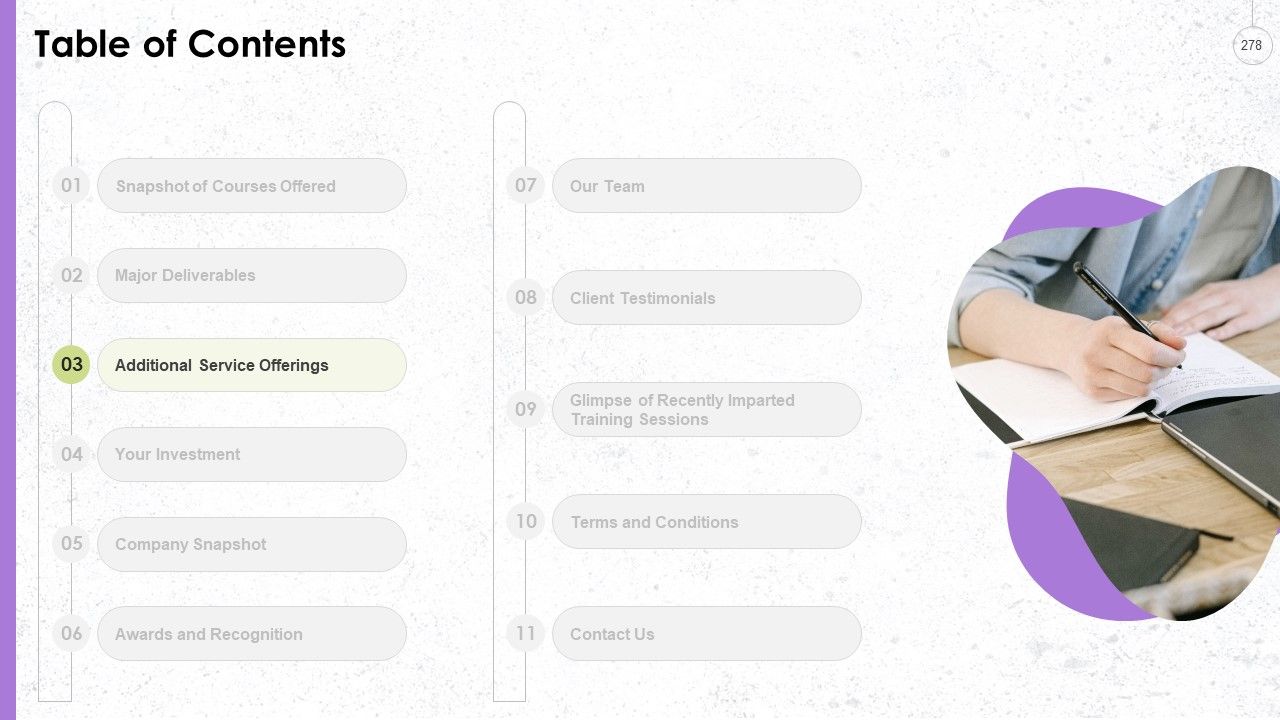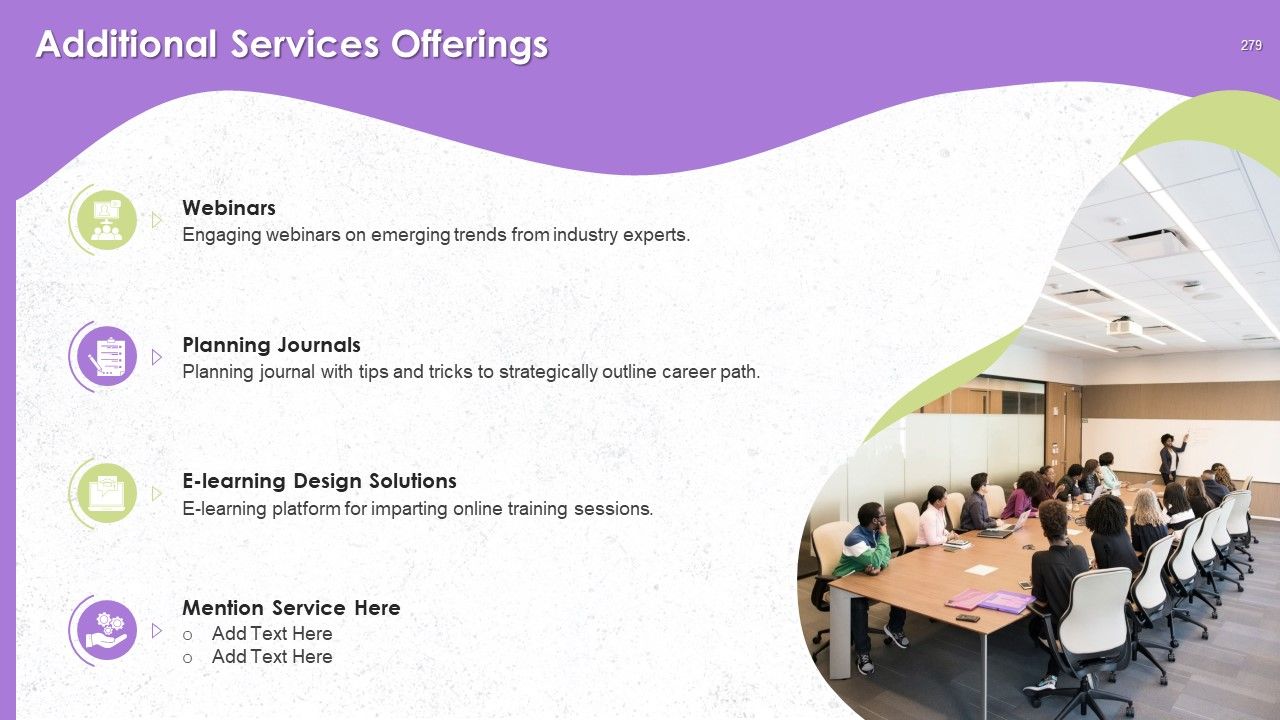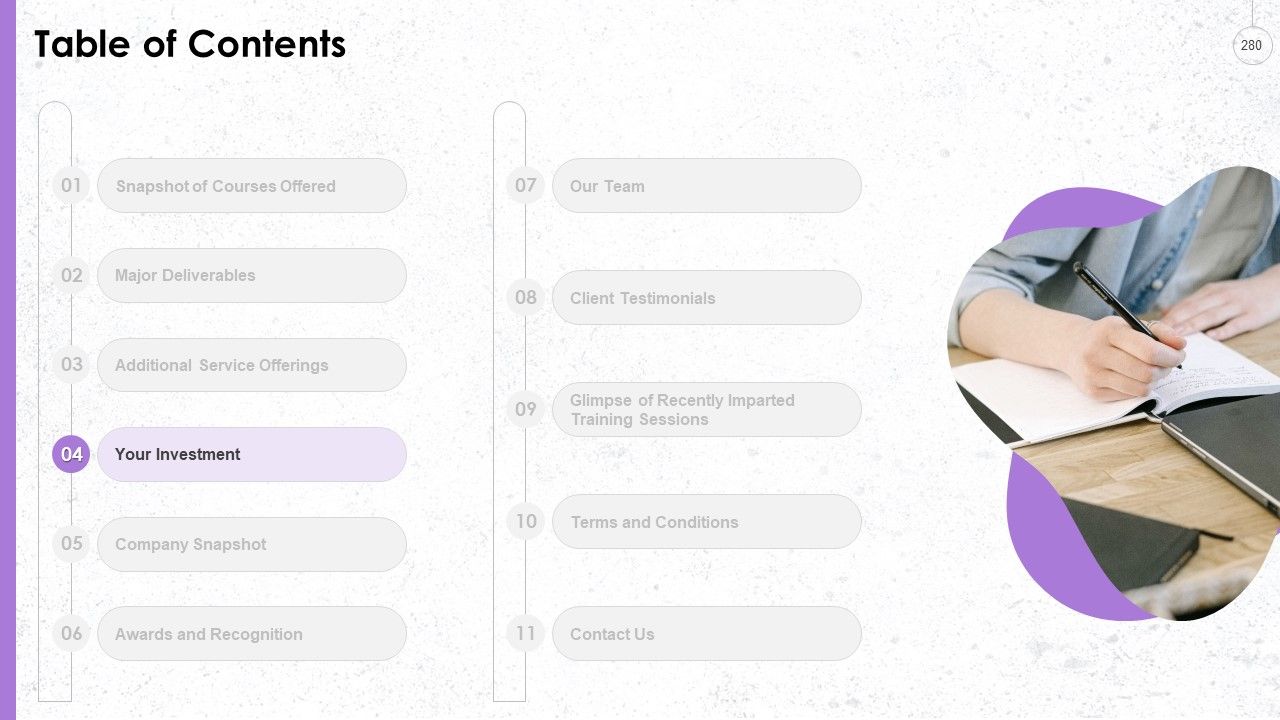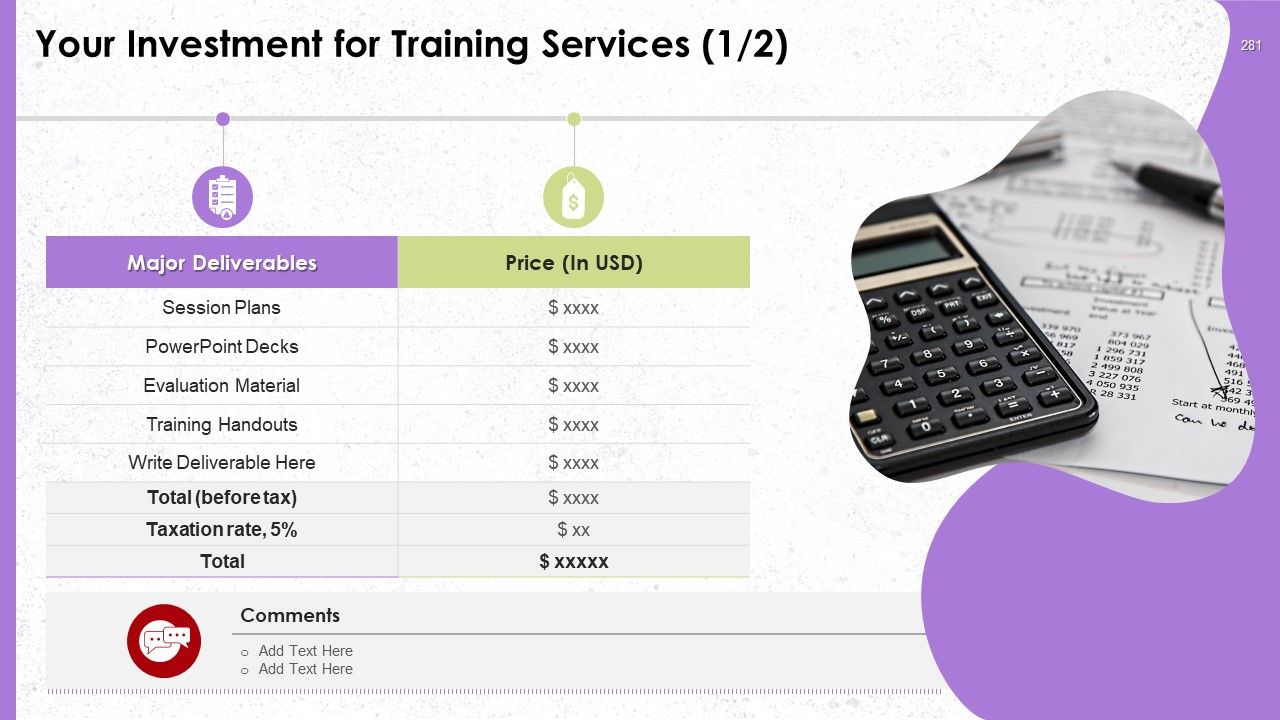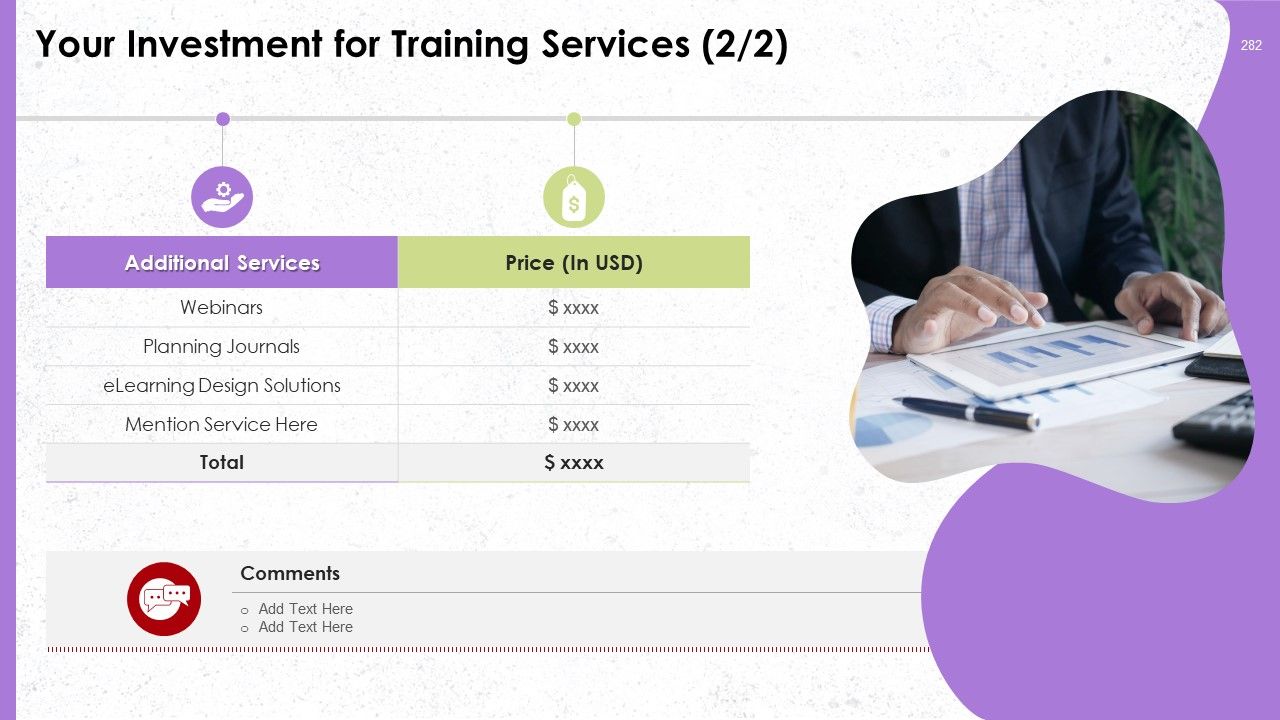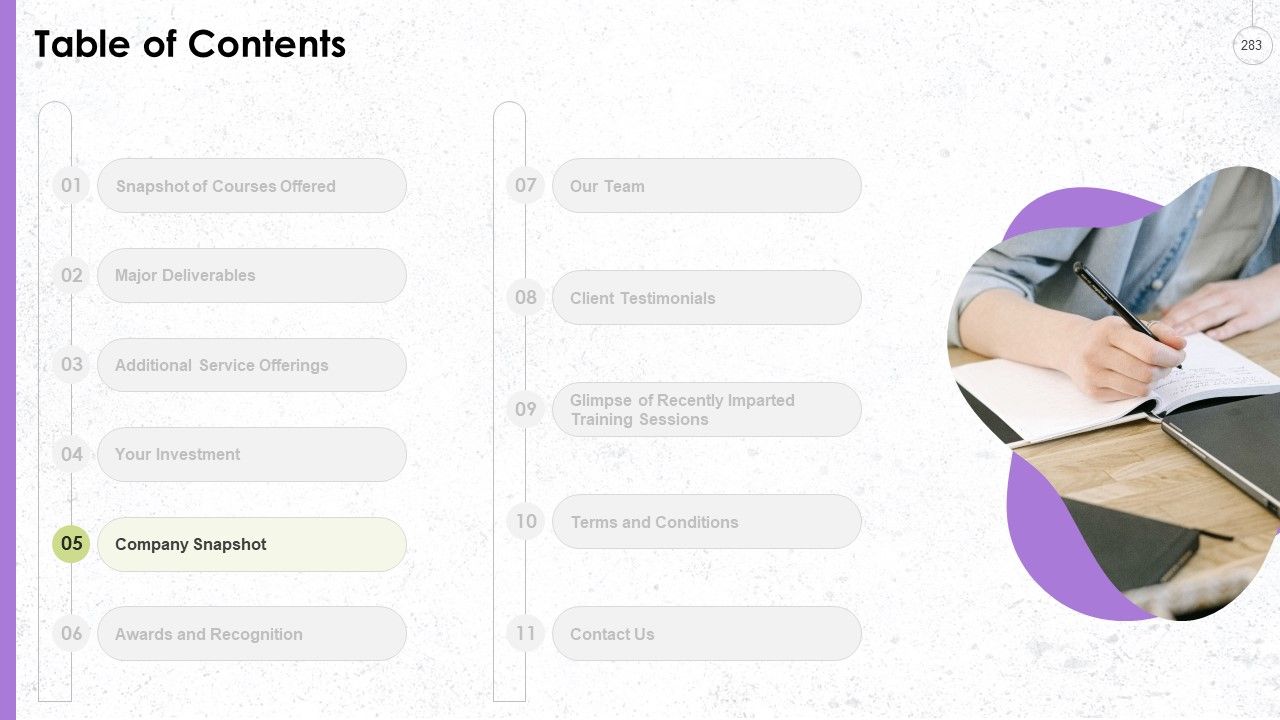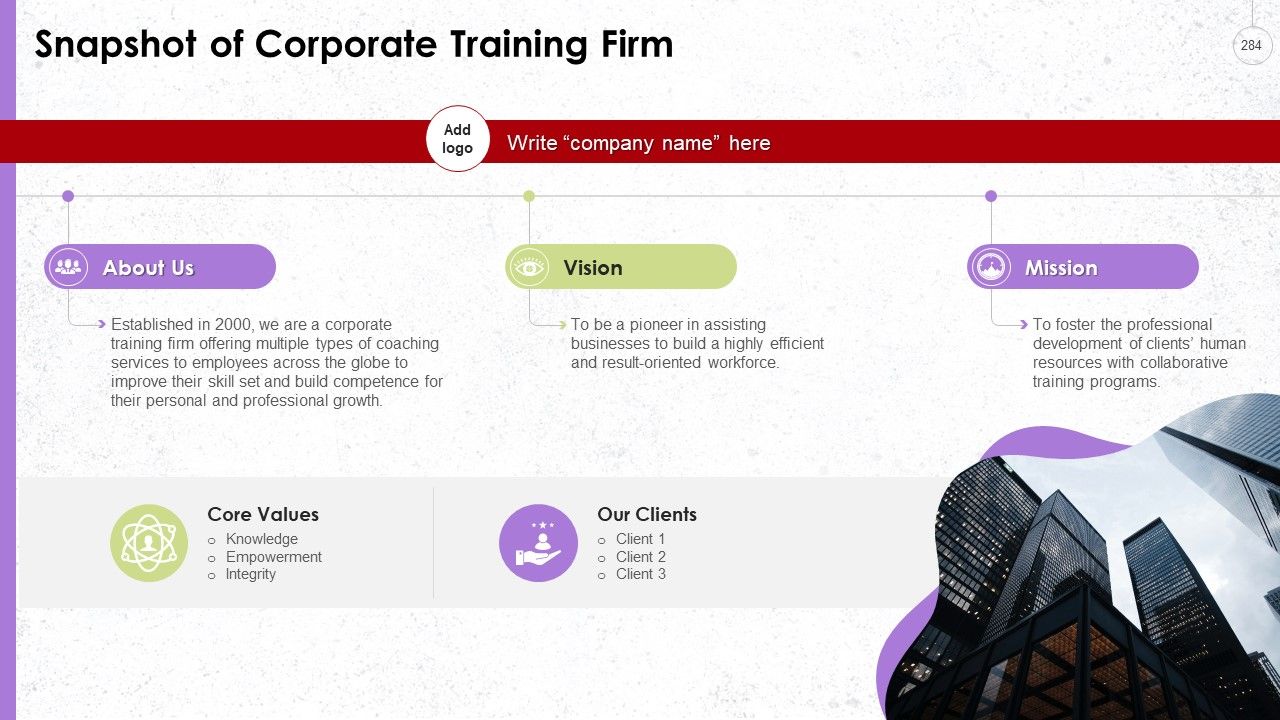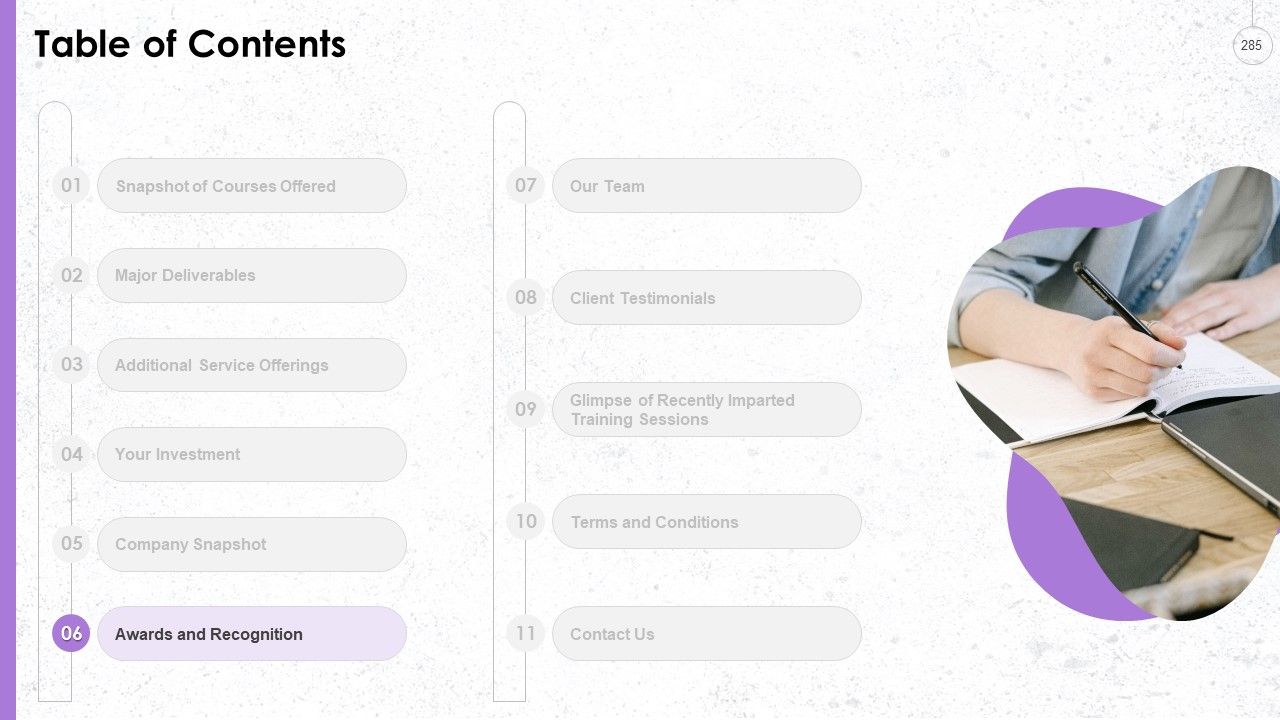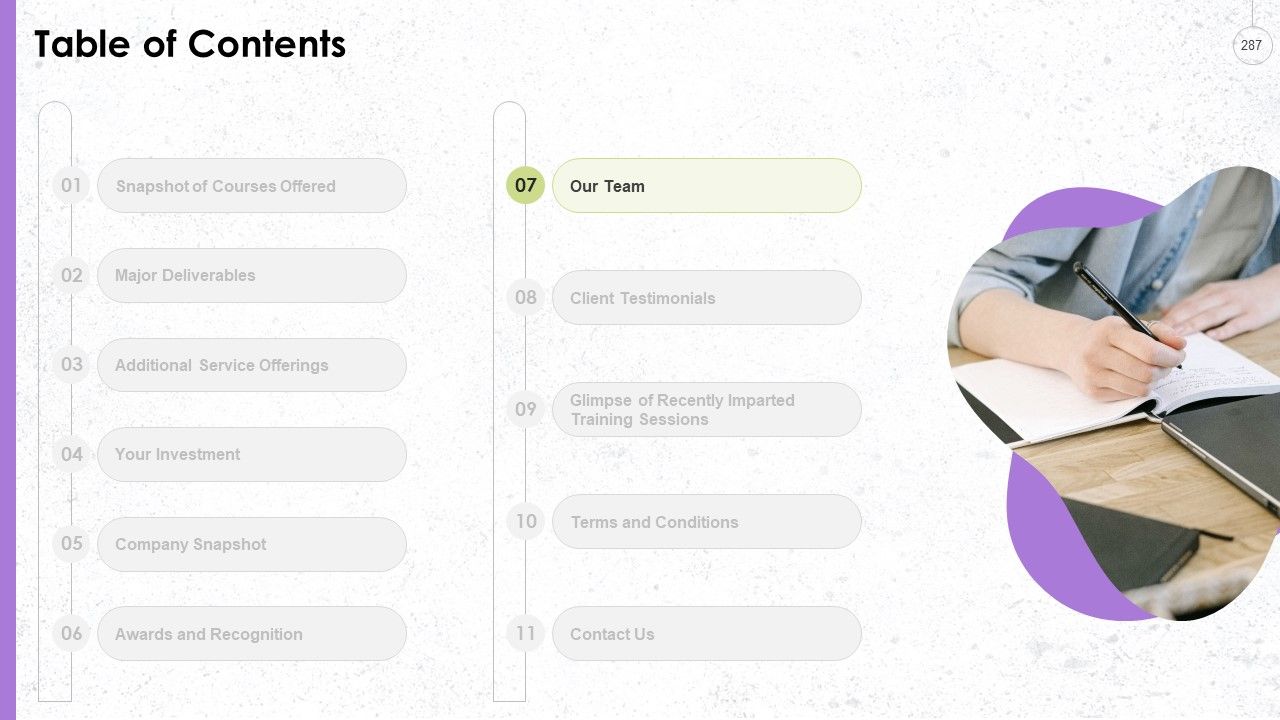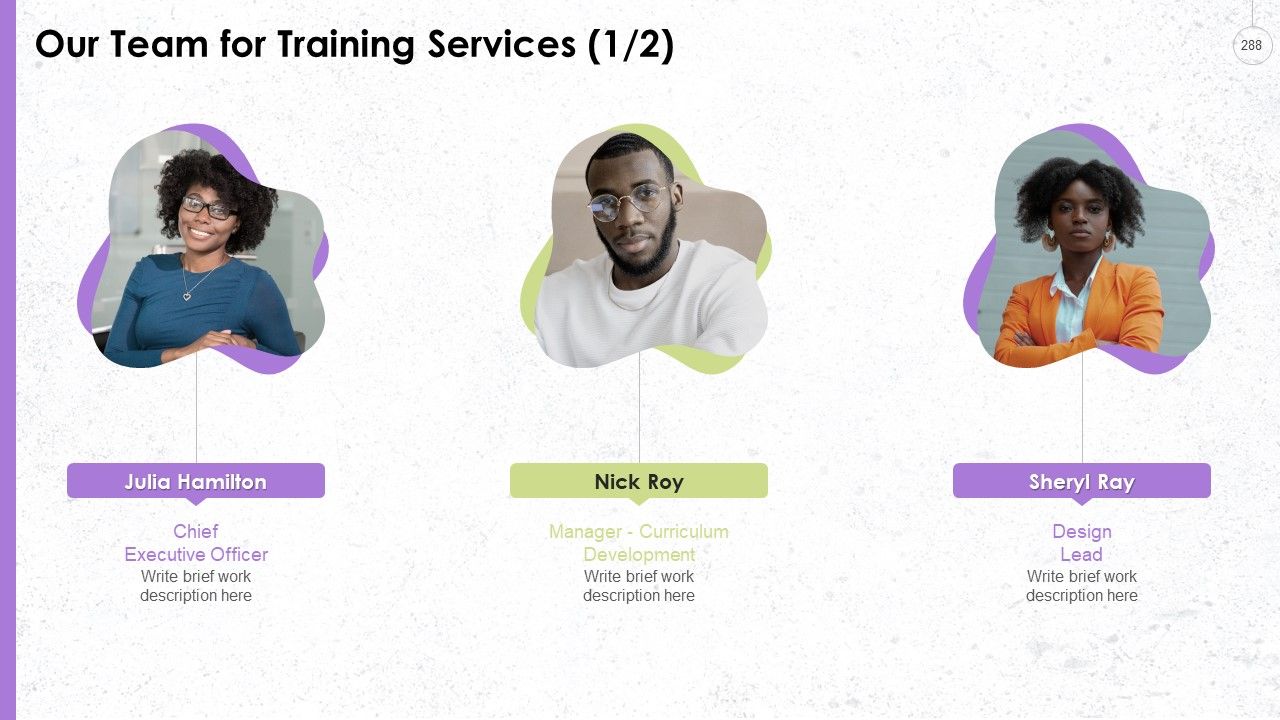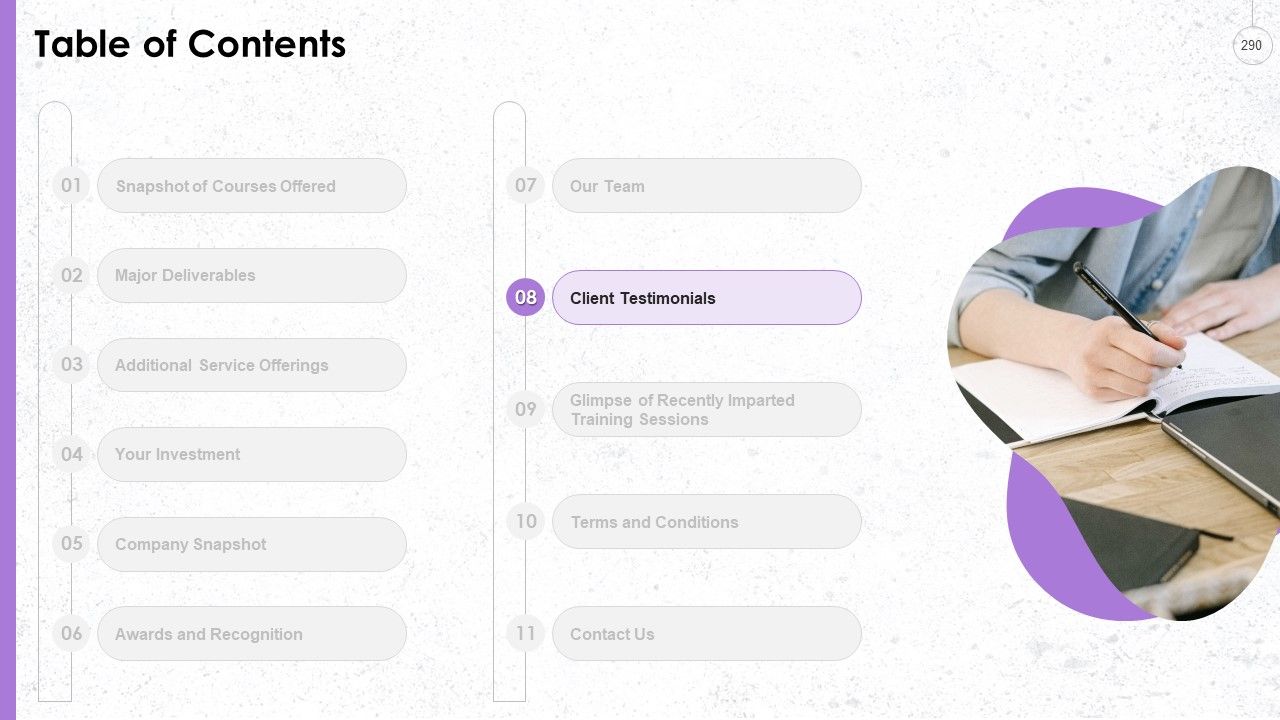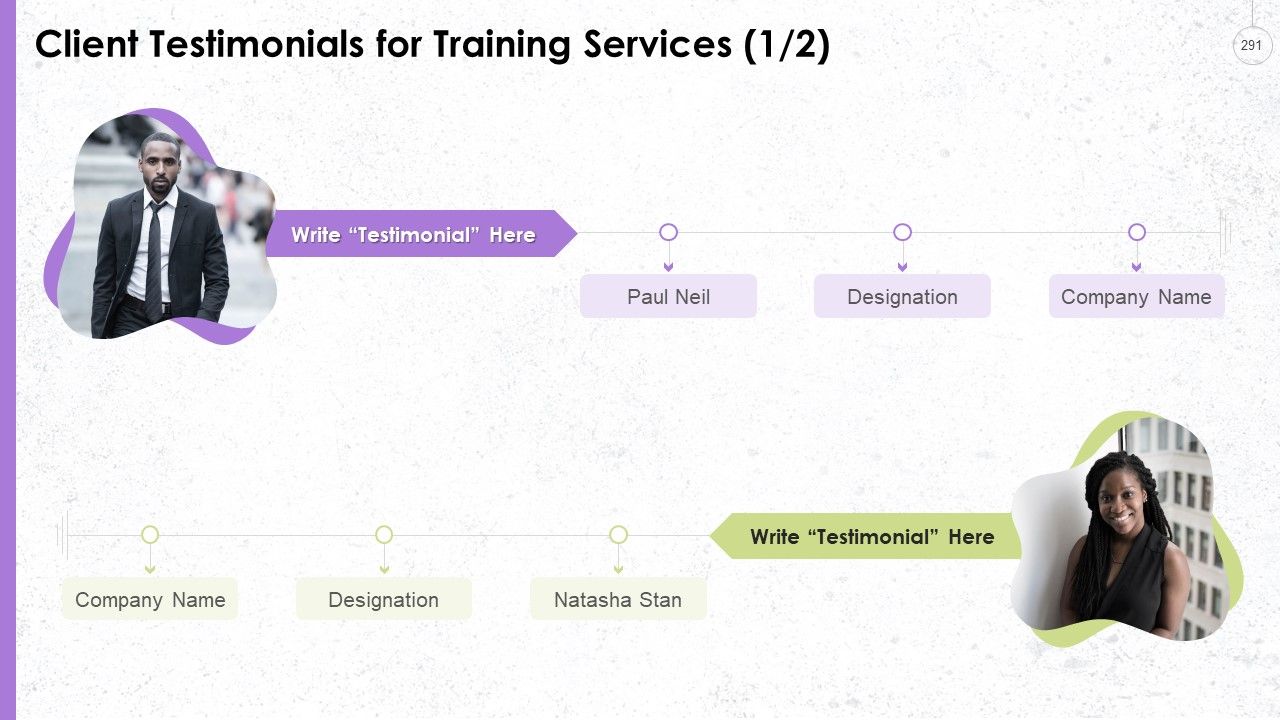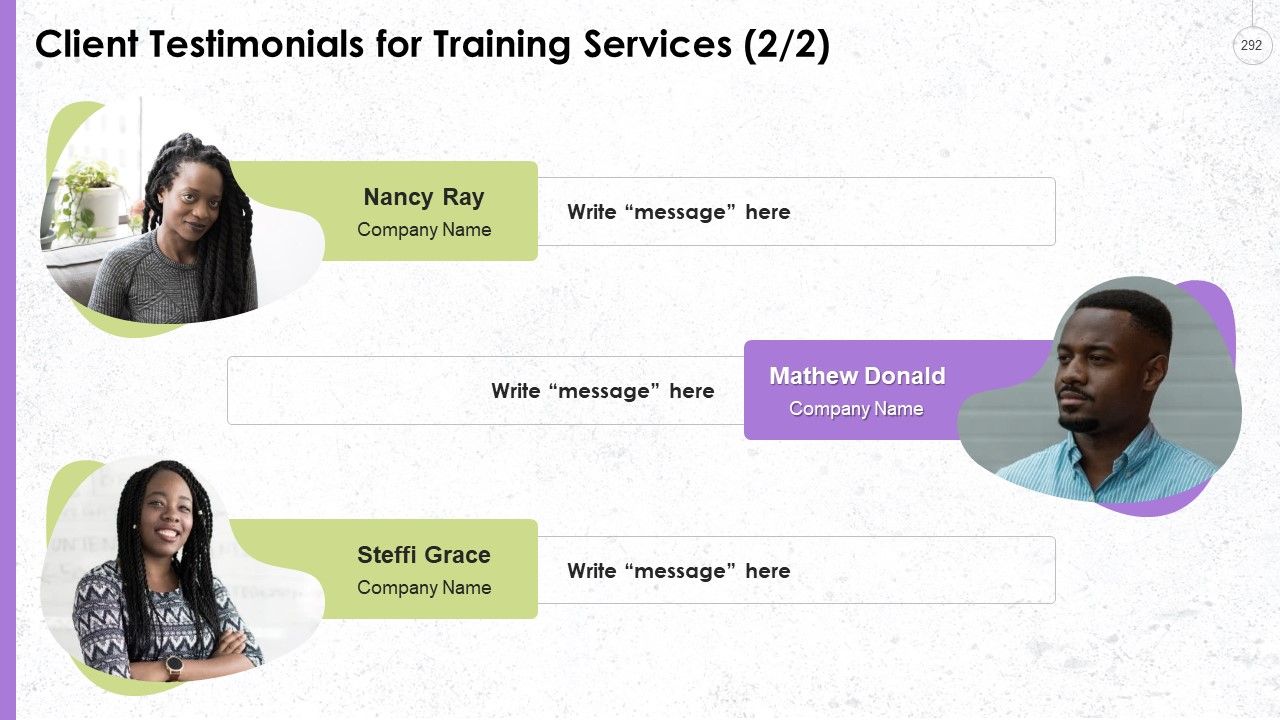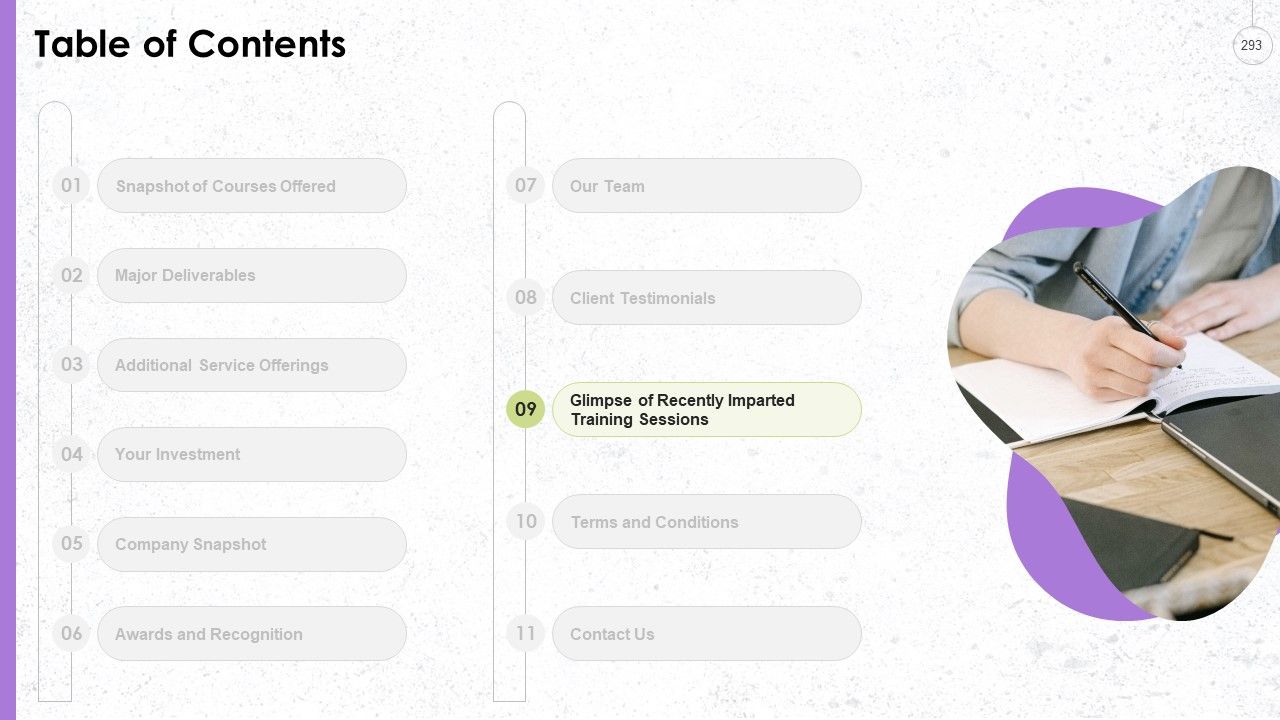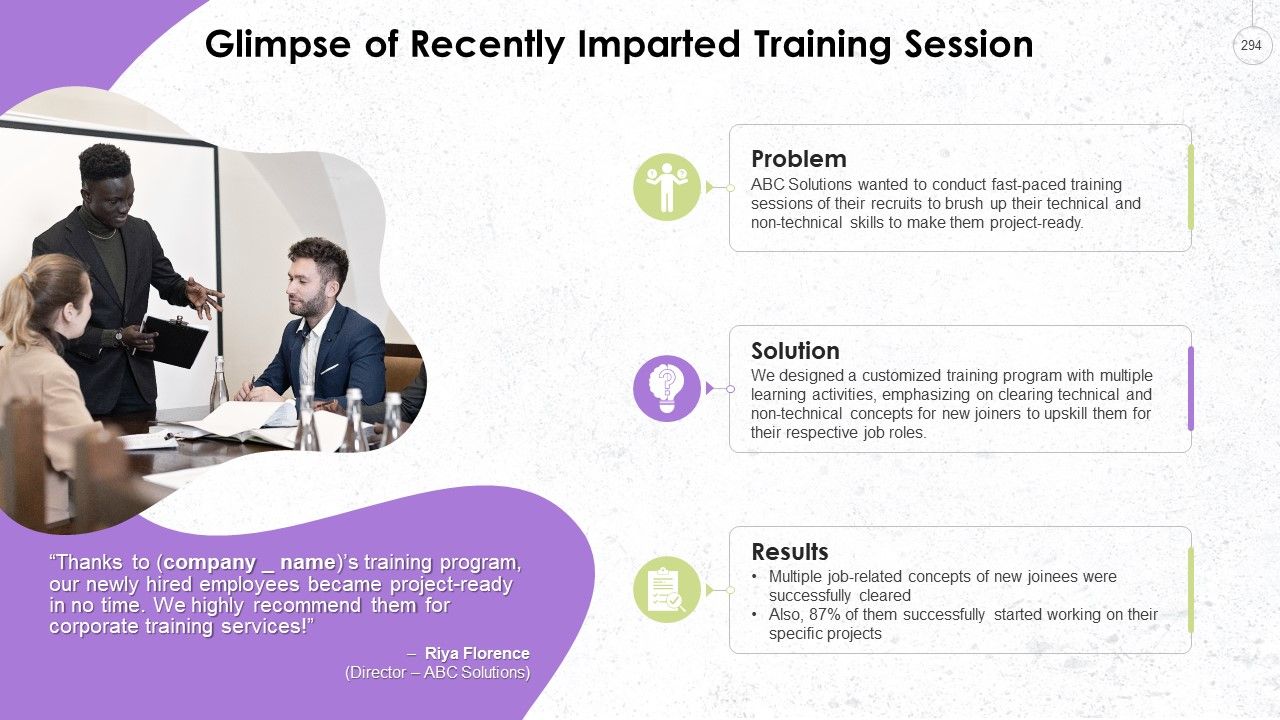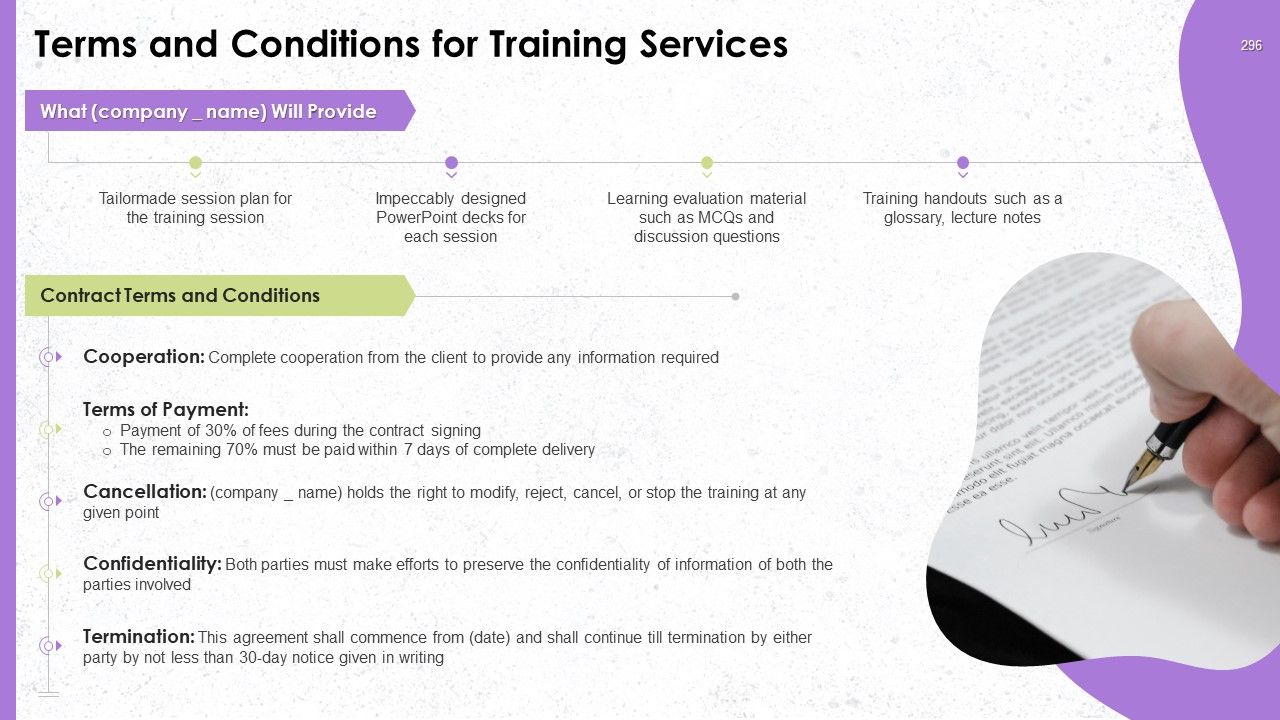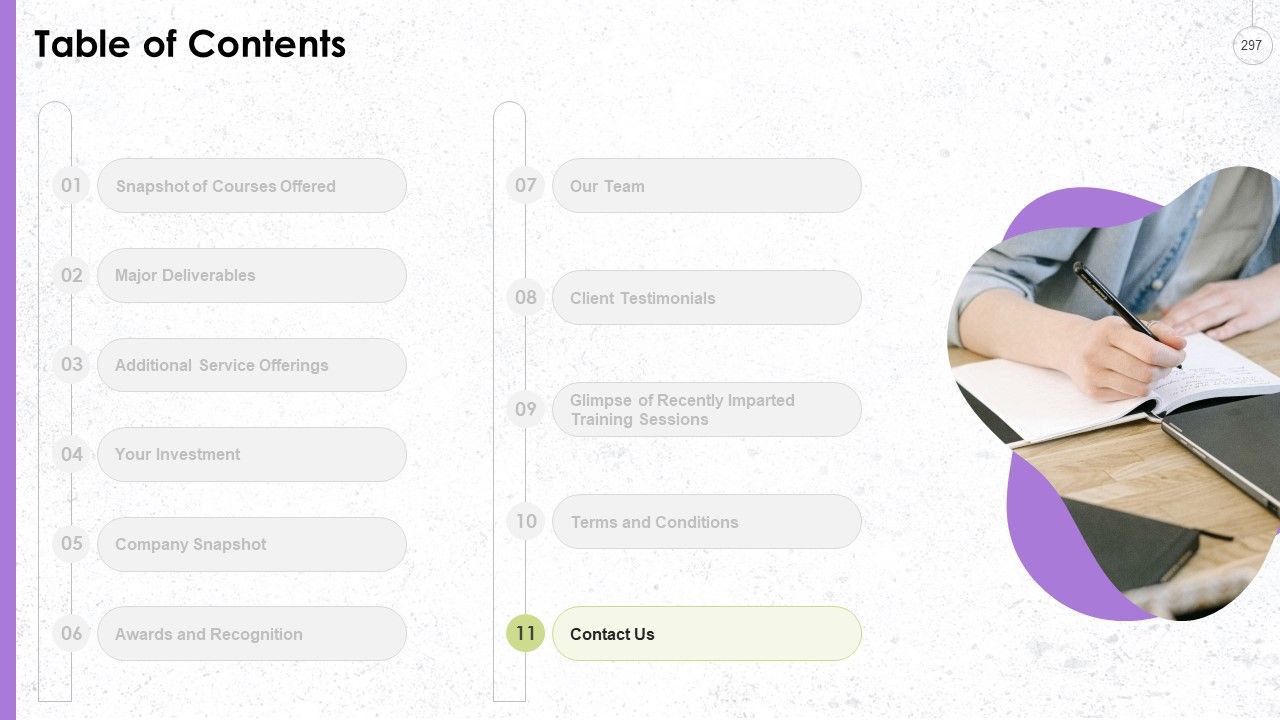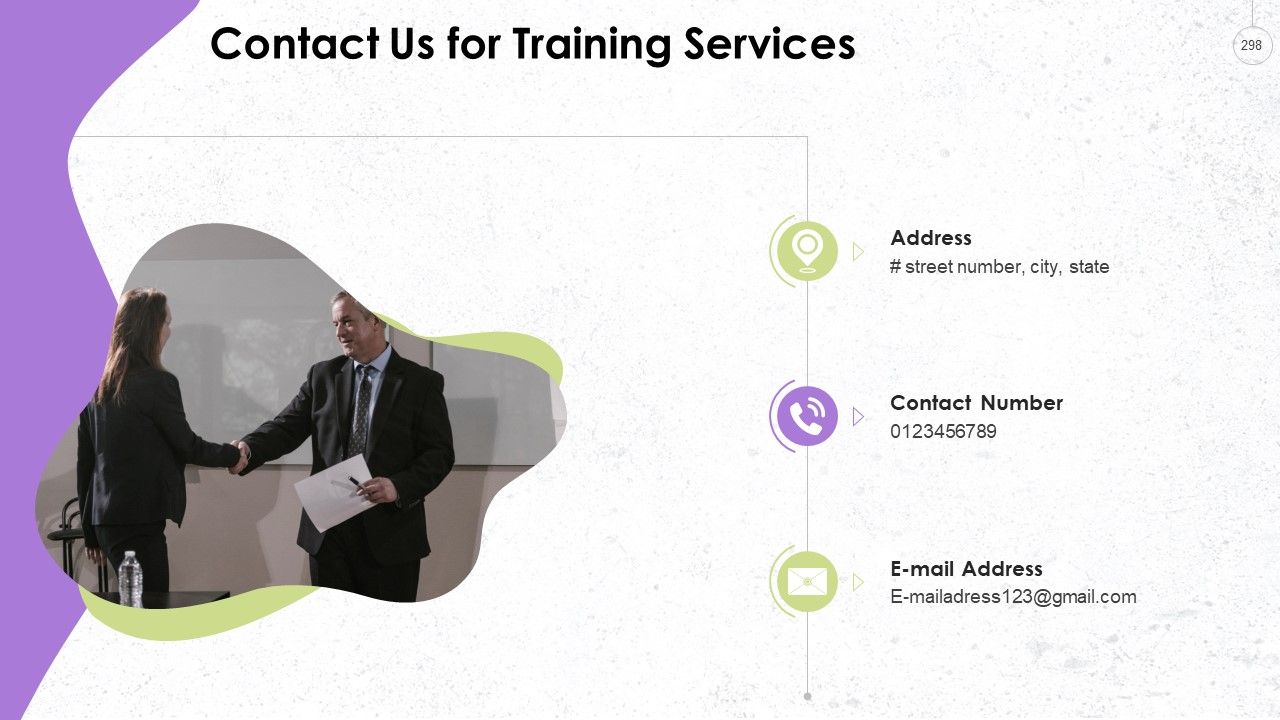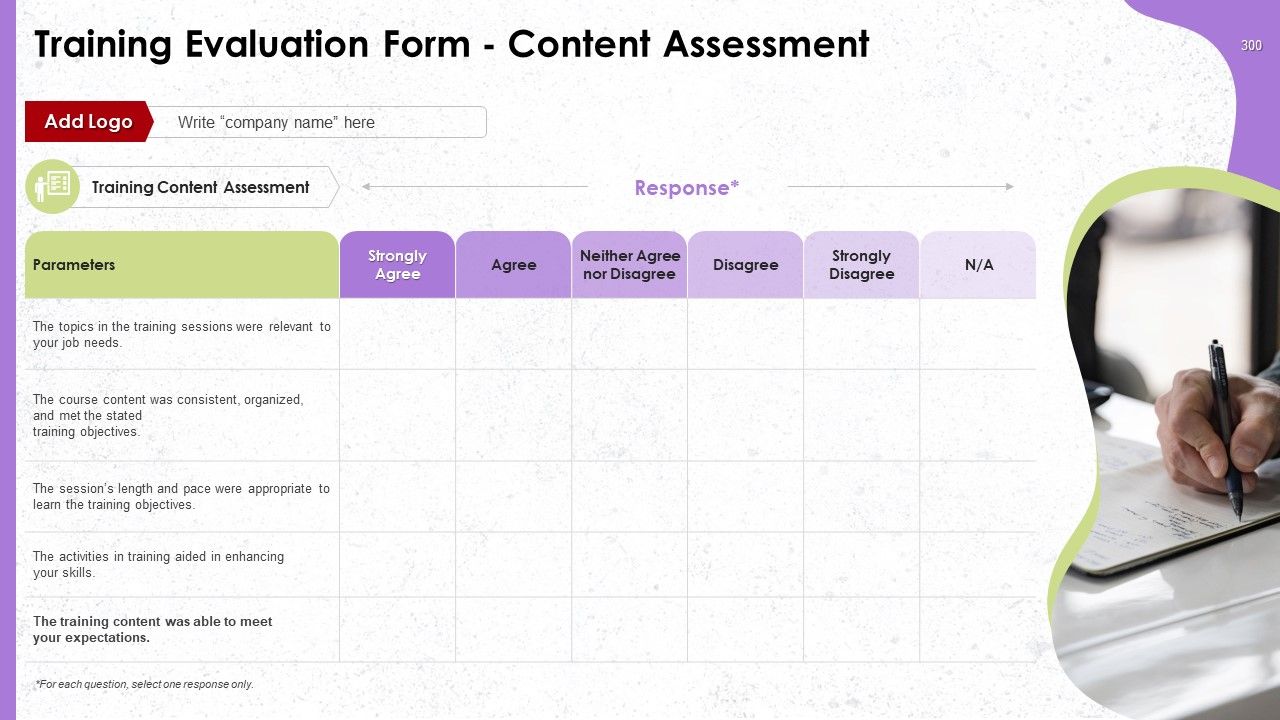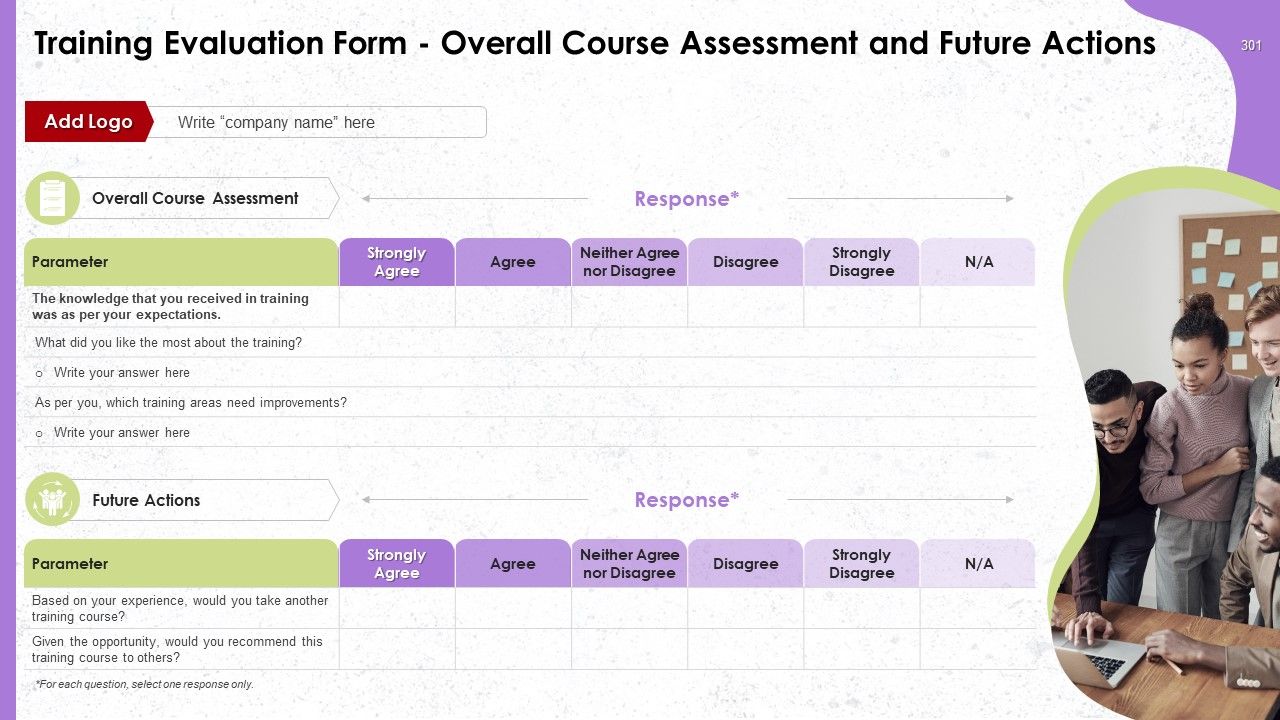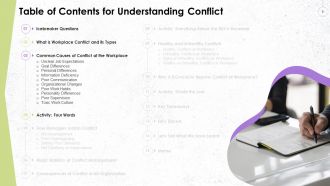Comprehensive Training Curriculum on Conflict Management Training PPT
What is it
- EduDecks are professionally-created comprehensive decks that provide complete coverage of the subject under discussion
- These are also innovatively-designed for a powerful learning experience and maximum retention
Who is it for?
- EduDecks are for Trainers who want to add punch and flair to program and leave a lasting impact on their trainees
- They are also for Teachers who want to win over their students with content as well design
Why EduDecks?
- EduDecks provide an A-Z coverage of courses on any topic and covers it in both great depth and wide scope
- These slides are also professionally-designed to deliver a punch to your programs
Create an Immersive Training Experience
Created by Subject Matter Experts
Professionally Designed Slides
Structured Sessions
Comprehensive Curriculum
Detailed Teaching Notes
Real-Life Case Studies
Assessment Questions
Client Proposal
Complete Curriculum
- Icebreaker Questions
- What is Workplace Conflict and its Types?
- Common Causes of Conflict at the Workplace
- Unclear Job Expectations
- Goal Differences
- Personal Differences
- Information Deficiency
- Poor Communication
- Organizational Changes
- Poor Work Habits
- Personality Differences
- Poor Supervision
- Toxic Work Culture
- Activity: Four Words
- How Managers Add to Conflict
- Micromanagement
- Poor Understanding
- Setting Poor Standards
- Not Clarifying on Expectations
- Major Statistics of Conflict Management
- Consequences of Conflict in an Organization
- Activity: Everything Before the BUT is Nonsense
- Healthy and Unhealthy Conflicts
- Healthy Conflicts at Workplace
- Unhealthy Conflicts at Workplace
- Signs of Unhealthy Conflicts at Workplace
- Healthy vs Unhealthy Conflicts at Workplace
- Why is it Crucial to Resolve Conflict at Workplace?
- Activity: Divide the Loot
- Key Takeaways
- Let’s Discuss
- Let’s Test What We Have Learnt
- Self-Reflective Questionnaire
- Thomas-Kilmann Conflict Mode Instruments
- Conflict Management Styles:
- Accommodating
- Avoiding
- Compromising
- Competing
- Collaboration
- Activity: Conflict Management Styles
- Key Takeaways
- Let’s Discuss
- Conflict Prevention at Workplace
- Techniques to Prevent Conflict at the Workplace
- Foster Clear Communication
- Superordinate Goals
- Establish Rules for Workplace Behavior
- Be decisive in action
- Identify and Manage Representation Gaps
- Recognize and Manage Passive Aggression
- Provide psychological safety
- Avoid using Coercion and Intimidation
- Use Exchange of Personnel
- Reducing Interdependence
- Appeal to Higher Authority
- Case Study: Job Promotion
- Managing Toxic Situations at Workplace
- The Caustic Opener and Mind-Reading
- Forever. and That's You All Over
- The Blame Game and Exaggeration. Who, me?
- You Say Tomato and Yesterday's Hangover
- What I Mean, Not What I Say the Wall of Irreconcilable Differences
- Detoxifying Conflicts
- Activity: Positive Definitions
- How to Survive a Toxic Workplace?
- Build A Network of Trusted Co-Workers
- Stay Focused on Important Goals
- Strive for Strong Work-Life Balance
- Know that Nothing is Permanent
- Be Nice to Everyone
- Find Better Ways
- Rules to Manage Conflict at Workplace
- Case Study: To Tribunal or Not Tribunal
- Key Takeaways
- Let’s Discuss
- Let’s Test What We Have Learnt
- Introduction to Conflict Resolution
- What is Conflict Resolution?
- Importance of Conflict Resolution
- Factors impacting Successful Conflict Resolution
- Healthy and Unhealthy Responses to Conflict
- Dos and Don’ts of Conflict Resolution
- Multistep Process for Conflict Resolution
- Clarify What Disagreement is About
- Setup Common Goal for Parties in Conflict
- Discuss Approaches to Arrive at Common Ground
- Identify Barriers to Arriving at
- Decide on the Best Approach to Resolve Conflict
- Acknowledgement of the Agreed Upon Solution the Agreed Solution
- Activity: Debate vs Dialogue
- Essential Skills Needed to Resolve Workplace Conflicts
- Effective Communication
- Emotional Intelligence
- Stress Management
- Empathy
- Impartiality
- Case Study: Conflict with Manager
- Resources at Workplace
- Internal Expertise: Human Resources, Ombudsman, Shared Neutrals
- External Expertise: Conflict Coaches, Mediators, Dispute Resolution Centers
- Workplace Conflict Resolution Strategy: Mediation
- What is Mediation and it’s Guiding Principles
- Role of Mediator
- Multistep Mediation Process
- Case Study: Mediation at Workplace
- Workplace Conflict Resolution Strategy: Ombuds
- What is an Ombuds?
- Role and Responsibilities
- Ombuds Dos and Don’ts
- Workplace Conflict Resolution Strategy: Negotiation
- What is Negotiation?
- Outcomes of Negotiation
- Negotiation Process
- Negotiation Skills
- Negotiation vs Mediation
- Case Study: Conflict Resolution
- Key Takeaways
- Let’s Discuss
- Let’s Test What We Have Learnt
- What is Emotional Intelligence?
- Emotional Intelligence Cycle
- Emotional Intelligence Forms: High and Low Level
- Emotions Escalation in Conflict Situations
- Conflict Levels
- Conflict Intensity Contributing Factors
- Ideal Behaviors for Conflict Situations
- Activity: Active Listening
- Managing Fight-or-Flight Behavior
- Emotional Events Responses
- Fight-or-Flight Response?
- Strategies to Manage Fight-or-Flight Behavior
- Attitude Tips to Manage Workplace Conflict
- Positive Psychology at Workplace
- Activity: Conflict Escalating and Reducing Behavior
- Key Takeaways
- Let’s Discuss
- Let’s Test What We Have Learnt
- Purpose
- Scope
- Objectives
- Roles and Responsibilities
- Managers
- Employees
- Communication Rules
- Conflict Resolution Flow Chart
- Conflict Resolution Procedures
- When Manager is not Involved
- When Manager is Involved
- Appeals
- Open Door Policy
- Policy Elements
- Managers’ Responsibilities
- Employees’ Responsibilities
- The Process
- Ombuds Policy
- What Constitutes Malpractice, Impropriety, Abuse or Wrong Doing?
- Limitation of Time to Raise a Concern
- To Whom Should a Concern be Raised?
- Who Will Investigate into the Concern?
- Procedure for Handling Concerns Raised
- Appeal
- Anonymous Complaints
- Allegations Proved Untrue
- Maintaining Confidentiality of the Concern as well as the Disclosure
- Penalties Under Policy
- Grievances Form
Sample Instructor Notes
What is this slide for: Common Causes of Organizational Conflict
This slide covers: This slide lists the major reasons that result in conflicts at the workplace. The causes are unclear job expectations, goal differences, personal differences, information deficiency, poor communication, organizational changes, poor work habits, personality differences, poor supervision, and toxic work culture.
Instructor's Notes:
Different causes of organizational conflict are:
- Unclear Job Expectations: Unclear job expectations are one of the common causes of conflict at the workplace for both new recruits and existing employees
- Goal Differences: It is important to work on common goals for better organizational performance. If individuals have different or conflicting goals, it can lead to organizational conflict
- Personal Differences: Differences between individuals' way of functioning can cause interpersonal conflict in the organization. These differences arise due to contrasting values, background, attitudes, traditions, cultures, education, etc.
- Information Deficiency: For smooth running of organizations, it is essential to share the correct information at the right time with others. This helps avoid conflicts to a major degree
- Poor Communication: Lack of communication among team members leads to arguments, which if left unresolved, often escalate into full-blown conflicts
- Organizational Changes: In case of organizational changes like restructuring or merging, employees feel tension, stress, and uncertainty, which could result in lower productivity
- Poor Work Habits: Certain individual’s habits such as non-completion of tasks on time also lead to conflict
- Personality Differences: In an organization, people from different backgrounds, cultures, preferences, experiences, temperaments, demographics, and capabilities work together. Some of these differences can be a major source of conflict
- Poor Supervision: Biased supervision also leads to conflict between managers and team members
- Toxic Work Culture: Toxic work culture spreads negativity at the workplace, making employees unhappy leading to conflicts. It also results in abusive conduct, and bullying of individuals
What is this slide for: Multistep Process for Conflict Resolution
This slide covers: This slide highlights the multistep process for conflict resolution at the workplace. The six steps listed are: clarifying what disagreement is about, setting up a common goal for parties in conflict, discussing approaches to Arrive at common ground, identifying barriers to common ground, deciding on the best approach to resolve conflict, and acknowledging the agreed upon solution.
Instructor's Notes:
The multistep process to successfully resolve conflict is:
- Step 1 - Clarifying What Disagreement is About: The main objective of the step is to get both sides to agree on what the disagreement is about by getting to the heart of the conflict
- Step 2 - Setting up Common Goal for Parties in Conflict: The main objective of the step is to make both parties agree on the desired outcome of the conflict
- Step 3 - Discussing Approaches to Meet Common Ground: In this step, the conflicting parties discuss and identify approaches to work together to accomplish an agreed common goal
- Step 4 - Identifying Barriers to Common Ground: In this step, the conflicting parties discuss the issues which resulted in the conflict in first place and how to overcome these
- Step 5 - Deciding on the Best Approach to Resolve Conflict: Both parties agree on the best resolution to solve the conflict
- Step 6 - Acknowledging the Agreed Solution: Both sides agree on their responsibilities to maintain an amicable position and prevent further conflicts
FAQs
We provide training decks on a wide variety of business and technical topics such as Diversity & Inclusion, Customer Service, Search Engine Optimization, Blockchain Technology, and many more. These are ready-to-present decks that can be downloaded and presented in their current form. These decks are carefully created by industry experts, designed by professionals to deliver a power packed training session.
We want our training decks to evoke curiosity and inspire passion for learning. Each training deck consists of multiple sessions with impeccably designed slides to explain concepts in-depth, key takeaways to summarize sessions, discussions, and multiple-choice questions to assess trainees’ learning. The deck also contains activities and memes to break the monotony and make the training more interactive. Each training deck comes with an assessment form and editable proposal to help pitch your training to clients with success.
It depends on the trainer's content delivery pace, but each deck is created to ensure that training content is for a minimum of 16 hours.
Yes. A significant segment of our customers are professional mentors, coaches and teachers. You can create presentations with our content and distribute these to your trainees. The only caveat is that you cannot share your subscription to our content with others; the license is not transferable. Also, you cannot resell SlideTeam content to others.
Each slide is 100% editable in PowerPoint. Every element of the slide – text, icons, images, vectors, color scheme, etc. can be modified to build an effective PowerPoint presentation. Simply DOWNLOAD, EDIT, and PRESENT!
All PPT slides are compatible with PowerPoint 2007 and above. Some diagrams will not show up correctly with older versions of PowerPoint, like PowerPoint 2003 or lower, because of rendering issues. Yes, they work with PowerPoint for MAC, and decks are compatible with Google Slides too.
Absolutely yes! Our decks are yours to keep and build upon even after your subscription expires. You will not be able to download any additional decks once your subscription expires, but the ones you've downloaded are yours to keep forever.
Our entire website is HTTPS secure, and our payment system is managed by PayPal and Stripe, two of the world's leaders in credit card payment systems and very respected companies in online payments. This makes our systems 100% secure. We do not store or have access to any credit card information ourselves. We direct you to these third-party secure sites with 100% secure SSL connections where you can safely purchase a subscription and then direct you back to our site to download products.
You are allowed to log in and download content from 3 computers. Our website keeps track of login IP addresses, MAC Address Usage, and Browser and Computer Operating System fingerprinting, and you will not be able to log in from more than three computers.


